

Balkans Travel Guide: Plan Your Visit to the Balkans

The Balkans are one of the best places to travel in the whole of Europe. Strategically located, each country in the Balkans possesses a rich history spanning centuries — from ancient time to present day. The Balkan Peninsula lies in Southeastern Europe and is home to the countries comprising former Yugoslavia, Albania, Greece and Bulgaria. Culturally, ethnically, and geographically diverse, this Balkans travel guide can help you have an incredibly fun and fulfilling experience travelling in this dynamic region.
Travelling in the Balkans can pose challenges that much of the Schengen area countries have managed to eliminate. There are many things to take into account when travelling to this lesser-visited area of Europe — including border crossings, transportation, language, and religion — so we have created this comprehensive guide in order to make sure your trip to this incredible region is as enjoyable and hassle-free as possible!
Disclaimer: This guide contains affiliate links. That means if you click a link and make a purchase, we make a small commission at no extra cost to you. For more information, see our privacy policy.
Table of Contents
Balkan Countries
For the purposes of this guide, we will be concentrating on travel in the following Balkan countries: Albania, Bosnia & Herzegovina, Bulgaria, Croatia, Kosovo, Montenegro, North Macedonia, Serbia and Slovenia.
While parts of Greece , Romania and Turkey can also be considered part of the Balkans, they are not included in this guide.
If you already know where you want to visit in this incredible region, then make sure to browse our country-specific articles and guides.

Planning a Balkans Route
Planning a route through the Balkans can be complicated and slightly overwhelming. There are so many things to consider that you don’t necessarily have to when travelling elsewhere in Europe – things like border crossings, sporadic transit and even different currencies make travelling in the Balkans a bit of a challenge.
If you’re trying to map out the perfect route — whether you’re looking to visit a number of countries in the region or want to spend longer exploring one or two countries, then we have you covered.
Browse through the itineraries below to help plan out a logical and dynamic route through the Balkans and ensure that your trip is as seamless as possible.

The Ultimate 7-Day Croatia Itinerary: 3 Perfect Routes

7-Day Slovenia Itinerary: 3 Perfect Routes

The Perfect Bulgaria Itinerary: 5 to 10 Days (or More!)

The Ultimate 2-Week Balkans Itinerary: 3 Perfect Routes

The Perfect 5 to 7 Days in Albania Itinerary

Kotor or Budva: Where to Stay in Montenegro
Places to Visit in the Balkans
Comprising nine countries and countless different cities and climate zones, there are numerous places to visit in the Balkans that can pique anyone’s interest. Because of the diversity and history of the region, the vibrant cities and towns are as distinct as they come.
You don’t have to travel far to feel as if you’re in a completely different world in the Balkans and if you’re wondering where to visit in the Balkans (and what to do while you’re there), then make sure to browse through the articles below to kick start your Balkan trip planning.
Albania & North Macedonia

The Perfect 1, 2 or 3 Days in Tirana Itinerary

10 Best Things To Do in Ohrid: A One-Day Itinerary

The Perfect 1 to 2 Days in Skopje Itinerary
Bosnia and Herzegovina & Serbia

The Ultimate 1 to 2 Days in Sarajevo Itinerary

The Perfect 1 to 2 Day Mostar Itinerary

13 Things To Do In Novi Sad, Serbia: A One Day Itinerary

The Perfect 1, 2 or 3 Days in Belgrade Itinerary

12 Things to Do in Veliko Tarnovo: A One-Day Itinerary

The Perfect 1, 2, or 3 Days in Sofia Itinerary

What To Do in Plovdiv: A 1 or 2 Day Itinerary
Croatia & Montenegro

The Perfect 1, 2 or 3 Days in Kotor Itinerary

The Perfect 2, 3 or 4 Days in Hvar Itinerary

The Perfect 1, 2 or 3 Days in Split Itinerary

The Ultimate One Day in Zagreb Itinerary

How to Do A Plitvice Lakes Day Trip from Split or Zagreb

The Ultimate 2, 3 or 4 Days in Dubrovnik Itinerary

11 Things To Do In Piran, Slovenia: A One-Day Itinerary

Best Things to Do in Bohinj: A One-Day Itinerary

10 Best Things to Do in Maribor, Slovenia: A One-Day Itinerary

The Perfect 1, 2 or 3 Days in Ljubljana Itinerary

The Perfect Lake Bled Day Trip from Ljubljana

Bled or Bohinj: Which Slovenian Lake to Visit?
Best Time to Visit the Balkans
Figuring out when to visit the Balkans can be just as difficult as planning out your route. A diverse region that encompasses numerous different climate zones and very much experiences all four seasons, it can be tricky to determine went the best time of year to visit the Balkans is.
In our opinion, the best time to travel to the Balkans is in the shoulder seasons of April to June and September to November. However, there are advantages to travelling to the Balkans any time of year! During the shoulder seasons, the weather tends to be mild, more popular cities aren’t as packed, and you can still enjoy some of the coastal destinations in the region.
In the summer months from July to August, beaches are packed with Europeans on holiday, however, this is a good time to visit if you want to experience one of the many festivals that take place during the season. Be ready for high temperatures, however, as many of the inland cities can get unbearably warm in the summer months.
If travelling between December to March, this is a good opportunity to experience world-class skiing in the Balkans at a fraction of the cost of Western European countries. A number of cities across the region also fully embrace the holiday season and you can also experience some of Europe’s best Christmas markets, like the world-famous one in Croatia’s capital of Zagreb.
Because the Balkans are a geographically diverse region, it is impossible to generalise average weather patterns throughout all of these countries. However, it is fair to expect a continental climate with hot summers and cold winters.
Coastal regions in Croatia, Montenegro, and Albania are going to have significantly warmer winters than anywhere in the central Balkans, but don’t go expecting 20+ degree sunshine anywhere in the Balkans in the middle of January.
That being said, if you want to take a gamble and get the best all-around weather while avoiding the crowds that come in the summer, then your best bet is to visit the Balkans in the months of March-May and September-November.

Cost of Travelling to the Balkans
Compared to most Western European countries, the Balkans is refreshingly affordable. Most everywhere, daily costs — including public transportation, accommodation, and food — were largely discounted when compared to other European countries.
While you can pinch pennies and spend very little in the Balkans, if you have a slightly higher daily budget, you can get quite a lot of bang for your buck. Because food and accommodation prices are quite affordable in the Balkans, your money can go a lot further in this region than in many areas in Western Europe.
Something worth noting, however, is that countries that have seen a large increase in foreign visitors tend to have prices that mirror those of Western Europe. Croatia and Slovenia, for instance, are the most expensive countries in the Balkans in which to travel, due largely to the fact that they are members of the European Union.
Cities like Ljubljana, Slovenia and Dubrovnik, Croatia are notoriously pricey and it can prove more challenging to maintain a tight budget while travelling there.
If you’re looking for a more detailed breakdown of prices in the Balkans, please make sure to browse the articles below to ensure that you can adequately budget your trip!
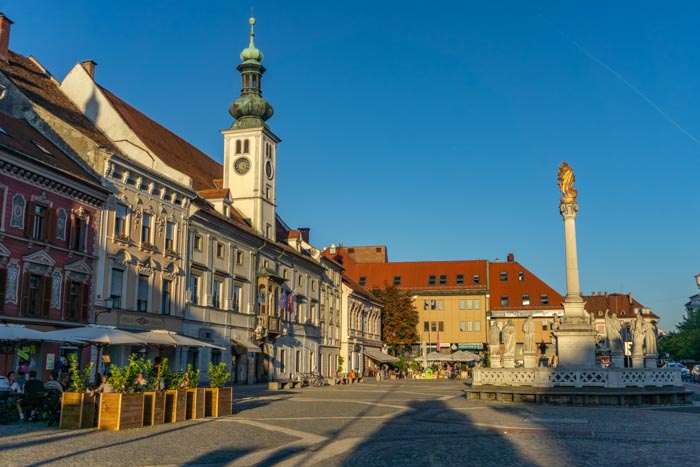
Is Slovenia Expensive? A Guide to Prices in Slovenia

Is Dubrovnik Expensive? A Guide to Prices in Dubrovnik

Is Croatia Expensive? Croatia Trip Cost Guide in 2024
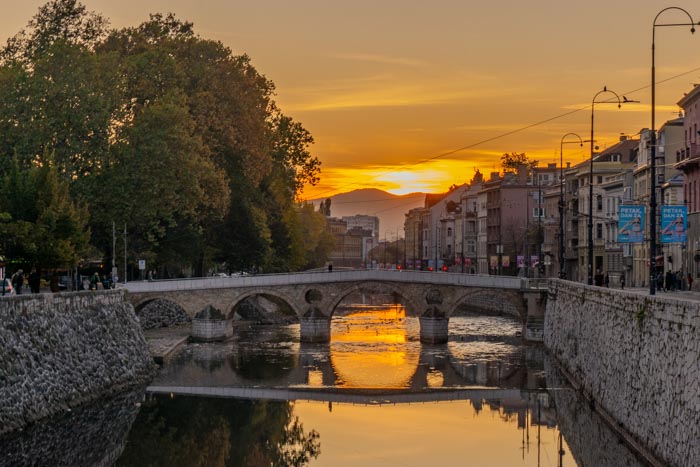
How Much Will a Balkans Trip Cost?
Currency in the Balkans
Unlike Western and Central Europe , where the vast majority of countries use the Euro as a common currency, a key point to keep in mind when it comes to Balkan travel is that many countries use their own unique currency.
Only Slovenia, Croatia, Montenegro and Kosovo currently use the Euro, while every other Balkan country has its own currency — Albanian Lek, Bosnian Mark, Bulgarian Lev, North Macedonian Denar and Serbian Dinar.
One of the most important tips when travelling the Balkans is that it can be difficult to exchange local currency when you leave the country, so try to not withdraw large amounts of cash at one time. This is particularly an issue for Albanian, North Macedonian, Bosnian and Serbian currencies. If you do end up with a handful of unwanted banknotes, try and exchange it with other travellers that are headed there.
ATMs and cash machines are prevalent throughout the Balkans, so it is not a worry to withdraw cash frequently. We would just suggest finding a debit card that has low or no foreign transaction fees so you don’t need to worry about that.
If you’re going on a multi-country Balkan trip, it can also be difficult to keep track of all of the exchange rates. To ensure that you are aware of what you’re spending, I recommend downloading an app like XE so you can be aware of how much things cost and the current exchange rate.

Balkan Cuisine
Sampling the local food and drink is one of the best things about travelling anywhere. While the nuances of regional cuisine can vary from country to country, there are many dishes and one specific drink that are rampant throughout the Balkans.
Something to keep in mind when travelling in the Balkans is that it is a very meat-heavy culture and it can be extremely hard to maintain a vegetarian diet while still trying to eat like a local.
Despite their love of animal flesh, Balkan cuisine is flavourful and diverse. Food in coastal Croatia and Montenegro, for instance, relies largely on their resources from the Adriatic sea and therefore can seem more akin to Italian food rather than that traditionally associated with Eastern Europe.
Food in the central Balkans, however, tends to be where the meat-loving stereotype reigns supreme. Ćevapi , the national dish of Serbia, is a kind of caseless sausage — small cylinders of grilled, ground meat — typically served with a pita-like bread, kajmak (a fermented clotted cream), onions, and sometimes yoghurt and salads. Pljeskavica is another prime example of the Balkan meat fetish and is essentially a regional take on a hamburger.
The most likely constant you will encounter in Balkan cuisine, however, would have to be rakija . A local take on a fruit brandy — oftentimes made at home with anything from plums, peaches, and grapes — it is customary to offer a small glass to visitors. If you stay at locally run guesthouses or hostels, you will almost certainly be offered this intoxicating liquid and it’s important to know how to drink rakija like a local!
If you want to learn more about the food in the Balkans or how to drink rakija properly – make sure to have a look through the articles below.

Balkan Cuisine Guide: Must-Try Food in the Balkans

How to Drink Rakija like a Local
Transportation in the Balkans
Getting to and around the Balkans can be a whole other kettle of fish, particularly when you are travelling outside of the European Union and Schengen Area, which is why covering all of the nuances of transportation is incredibly important. There are a number of considerations ranging from everything to more complicated border crossings to the best way to get from point A to B.
Getting to the Balkans
First things first, you’re likely wondering how best to get to the Balkans. If you’re arriving from further afield, you will be happy to know that most major Balkan cities have decently sized international airports and serve a number of major and budget airlines such as Ryanair, Wizzair and Easyjet. Some airports in the Balkans are better connected than others, however, so do make sure to check before you go if your intended destination has a convenient flight route.
Arriving in the Balkans from neighbouring countries can be another great way to get there. Whether you’re combining a trip to the Balkans with a route through Central Europe or and excited to hop on a ferry from Italy to Croatia, there are actually countless ways to reach the Balkans overland.
And finally, another thing that you may need to consider before travelling to the Balkans is your visa allowance. If you’re fortunate enough to boast an EU passport or to be a citizen of countries like the USA, Australia, New Zealand or Canada, then you don’t need to worry about applying for visas for any of the Balkan nations in advance.
In fact, if you’re travelling around Europe for an extended period of time, then heading to the Balkans can be a great way to extend your time as the vast majority of countries (excluding Slovenia & Croatia) are not a part of the Schengen area. Generally speaking, visitors are allowed to stay in any single nation for a total of 90 days out of every 180 days.
Though there are some nationalities that do not require any special visas for tourist entry into them, it is always best to check with the embassy beforehand to ensure that you can possibly and legally travel to these incredible nations.
Getting Around the Balkans
One of the most important things to remember during your Balkan travel is that unlike the rest of Europe where trains tend to be more efficient than buses; in the Balkans buses are nearly always the best way to get around.
This is particularly true for Albania, Bosnia, Croatia, Serbia, Kosovo and North Macedonia where the train network is practically non-existent. While there are some trains in Bulgaria, buses tend to be cheaper, more comfortable, and often times faster — particularly in the summer months when air conditioning can be a welcome relief from the Balkan heat.
When travelling across countries in the Balkans, it is worth considering taking a private shuttle bus which can be slightly more expensive than a public bus, but often have fewer hassles as they drop you off door-to-door and have fewer people that need to get across the border.
Renting a car can also be a really good idea if you want a bit more flexibility or want to get to some hard-to-reach areas. If you are planning on going on a multi-country road trip, however, do make sure that you have adequate insurance coverage for each country that you visit — the rental company should provide this.
The other thing that needs to be considered are border crossings. Because these are mostly non-EU countries, borders can be a bit more complex — especially when Kosovo is involved. Generally speaking, border crossings tend to be fairly quick and self-explanatory, but it is always something that you should be aware of.
And if you’re wondering about some of the most popular inter-city routes or how to deal with the complicated matter of entering Kosovo, please make sure to look through the articles below.

12 Best Stops on the Zagreb to Split to Dubrovnik Drive

How To Plan a Split to Mostar Day Trip
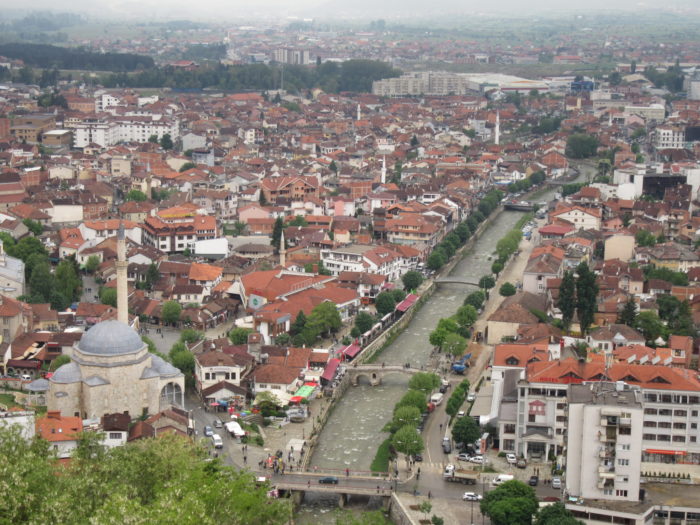
How to Enter Kosovo Legally
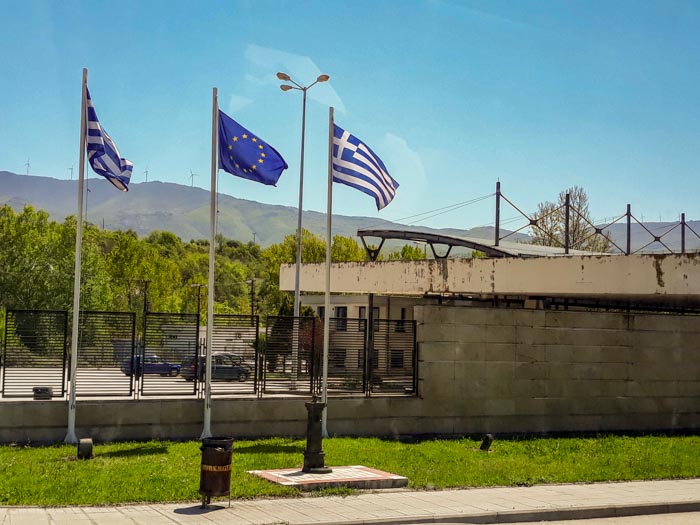
How to Get From Sofia to Thessaloniki by Bus, Train or Car
Accommodation in the Balkans
Accommodation in the Balkans, especially in the bigger cities, is rampant. For instance, there are a myriad of Balkan hostels to choose from and they’re especially great if you’re travelling solo or on a tight budget.
One of the best things about accommodation in the Balkans is that many places are often run by local staff who have a wealth of knowledge of their respective regions. Speaking to staff is a great way to get a lot of insider knowledge about your destination and find the best local spots!
We’ve opted for Airbnb for the majority of our recent trips to the region and have nothing but good things to say about using the platform in the Balkans. Entire apartments are quite affordable and it can be a great option for those who want to travel on a budget while not sacrificing privacy or a good night’s sleep.
Family-run guesthouses are also a great, budget-friendly choice for those looking for a unique local experience in the Balkans and you can find countless great options on sites like Booking.com . And if your budget allows for it, you will also be spoilt for choice when it comes to finding a nicer mid-range to a high-end hotel, if that’s what you’re after.

Language in the Balkans
Theoretically, every country in the Balkans has its own separate language. In practice, however, many of the languages are quite similar. Serbian, Croatian, Bosnian and Montenegrin all stem from Serbo-Croatian, which is a Slavic language that was spoken when these countries were united as Yugoslavia and are essentially the same language. Slovene, the language spoken in Slovenia, is slightly different from the Serbo-Croatian languages, however, it also shares some similarities.
Bulgarian and Macedonian are also both Slavic languages that use the Cyrillic alphabet and are very similar to each other, whilst Albanian is a completely separate language that shares no similarity to other Balkan countries.
When travelling through the Balkans, English is widely spoken in tourist areas and most younger locals will have learned English as a second language in school. Older people from Bulgaria and former Yugoslavia might speak some Russian whilst in Albania, Italian is common as a second language.
While you can get away without speaking much of the local language, you will be greeted warmly by locals if you learn some basic words! It’s always good practice to learn a simple “hello” and “thank you” before travelling anywhere in the world and it is especially welcome in the Balkans.

Religion in the Balkans
Religion in the Balkans is a touchy subject and whilst each country has a major religious group, there are often also significant religious minorities. In Bulgaria, Macedonia, Montenegro and Serbia, the predominant religion is Eastern Orthodox. In Croatia and Slovenia, the predominant religion is Roman Catholicism. In Albania, Bosnia and Kosovo the dominant religion is Islam.
These days, violence between religious groups is rare, however, there are undoubtedly still tensions and scars from the Yugoslav wars of the 1990s. It’s best to avoid getting into in-depth conversations about religion if you’re unsure how the person might react.
It is also worth noting that the vast majority of Balkan nations and citizens are largely secular and religion is more of an identity rather than a core, fundamental belief system.

Visiting the Balkans can be one of the most rewarding and challenging places to visit in all of Europe. Through all of its nuance and diversity, the Balkans is an incredibly engaging region that is an absolute joy to travel through and it is sure to leave you longing to return .
Subscribe & get your free guide to going abroad!!
3 Perfect Balkans Itinerary Options: 10 Days, 1 Month, and More [+PDF]
Traveling and backpacking in the Balkans is an extraordinary experience that offers the best of Europe on a backpacker budget. This Balkans itinerary will deliver the best of Europe. Delicious, Italian and Turkish-inspired food and drink. World-class beaches and Rivieras. Towering alps and the southernmost fjords in Europe. The Balkans backpacking experience offers so much to love in such a small area and at a great price that it should be top of every traveler’s list.
Read on to discover the best of the Balkans, the essentials for a perfect experience wandering the Balkans, including the best route and itinerary for 10 days, 2 weeks, 3 weeks, and 4 or more weeks.
My experience exploring Croatia, Montenegro, Albania, Bosnia, Serbia, and more was one of the highlights of my European backpacking experience. Amazing food, plenty of great drink (wine and Rakja), never-ending parties, captaining a boat, extraordinary nature of towering mountains in bays, fantastic beaches, plenty of friends and friendly locals, and more. In this Balkans itinerary, I’ll share the must-see sights and experiences and how to make them happen to help you craft the perfect Balkans backpacking experience for you.
CONTENTS OF THIS PERFECT BALKANS ITINERARY
- Quick Balkans Itinerary for 10 Days to 14 Days
- The Full Balkans Travel Itinerary (3+ Weeks)
- Why The Balkans
- Balkans Tour Options to Consider
- Slovenia : Fairy tale like nature, lakes, and forests
- Croatia : Castles, Game of Thrones, wine, Italian inspired cuisine, an exquisite coastline
- Bosnia and Herzegovina : History, Ottoman influenced culture and cuisine
- Serbia : Never ending parties on the riverfront, fusion foods, rakija culture
- Montenegro : Norwegian styled fjords in warm, welcoming waters
- Albania : The Albanian Riviera’s amazing beaches and the Albanian alps
- Bulgaria : Artsy neighborhoods, nature, and gourmet locavore food culture for cheap
The Additional Balkans Destinations
- Kosovo (Optional)
- Macedonia (Optional)
Logistics of Traveling the Balkans
- Balkans Travel Budget & Tips
- Visas and Crossing Borders in the Balkans
- Travel Insurance: Do You Need It In The Balkans?
- When To Visit The Balkans
- Tips for Staying In The Balkans On A Budget
- Balkans Packing List Essentials
- How To Get Around The Balkans
- Balkans Travel FAQ
BALKANS ITINERARY HIGHLIGHTS: THE TOP 10 THINGS TO EXPERIENCE IN THE BALKANS
- Montenegro: The southernmost fjords in Europe and beautiful waterways
- Albania: Undiscovered escapes, beautiful rivieras that rival the Greek isles, Albanian Alps
- Croatia: Medieval architectural beauty and a “Balkans meets Venetian Italy” vibe
- The Albanian Riviera
- The Albanian Alps
- The fjords of Montenegro
- The castles of Croatia
- National Parks throughout
- World-class beaches in Albanian, Croatia, and Montenegro
- Scandinavian style fjords and towering mountains in Montenegro
- Rich food and amazing wine influenced by the Italians, the Ottomans, and Eastern Europe
- Medieval castles and city centers along the entire Balkans backpacking route
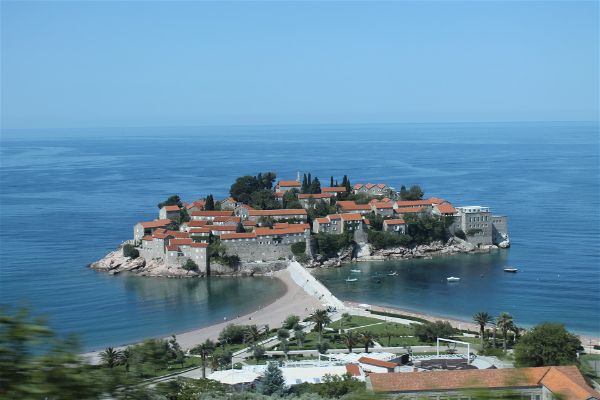
WHAT TO SEE AND DO WHILE YOU’RE IN THE BALKANS

KEY BALKAN ITINERARIES
THE TWO PERFECT BALKANS ITINERARY OPTIONS FOR YOUR TRIP: 10 DAYS AND MORE
The Balkans is such an impressive destination for backpackers and travelers because it offers so much for every type of traveler – and it just so happens to be budget-friendly too. Any one of the core Balkan countries could easily be a multi-week destination.
To balance maximum experience with enjoyment, we’ve created 2 separate itineraries.
The first option is the Balkans itinerary for 10 days , which focuses on the highlight destinations and experiences of the Balkans that no one can miss and skips the countries with redundant views or experiences.
The second is the full Balkans itinerary for 2-3 weeks or more , the itinerary achieves the same (maximum enjoyment and unique experiences), but at a slower, more enjoyable pace and more sites in each country added to ensure constant enjoyment. This itinerary includes everything you need to see in the Balkans if time is no issue and you’re one of the lucky backpackers on the long trail. If you’re backpacking in the Balkans, this full Balkans itinerary is the option you need.
CLICK HERE TO DOWNLOAD A FREE PDF OF THIS GUIDE!!
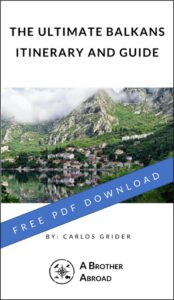
BALKANS ITINERARY (10 DAYS)
Balkans travel is something that every traveler should experience, but not all travelers have the full month necessary to backpack and slow travel the Balkans. This Balkans itinerary for 10 days packs the best sites, tastes, and experiences of the region into a smooth, 10-day jaunt.
With this 10 day Balkans itinerary, every single day will be mind-blowing and enjoyable and leave you wanting to return to the Balkans very soon.

If you are pressed for time, this 10-day itinerary delivers the best of the Balkans – beaches, food, Roman ruins and architecture, and more. However, if you have more time to spare, I highly recommend spending a month or more moving slowly through the Balkans and staying a little longer anywhere that catches your interests.
Read on to discover the places I recommend for a full Balkans itinerary of a few weeks or more.
THE FULL BALKANS TRAVEL ITINERARY (2 TO 6 WEEKS)
The Balkans has just as much richness, beauty, and culture as much more popular and crowded Western Europe, without the crowds and at a far cheaper price tag – fjords, mountains, and national parks as good as any in Scandinavia, wine that rivals Italy and France, rich hearty food that is unmatched, ruins that rival Rome, beaches that are on par with the islands of Greece, Spain, and France, and nightlife that puts Barcelona and Majorca to shame.
If you have a month or more to spare, I highly recommend backpacking the Balkans with this full Balkans travel itinerary.
This itinerary traces a trail through the Balkans, traversable by bus with manageable stops along the way every few hours, giving you a “best of the Balkans” tour, doable on a budget easily by bus.
For those travelers with more time for wandering and backpacking the Balkans, this itinerary shares every place you need to visit and see.

HOW TO USE THESE ITINERARIES
Both of the itineraries above, the Balkans 10-day itinerary and the itinerary, are perfect. Which itinerary you choose obviously depends on how much time you have to travel. For the longer itinerary, you should choose or eliminate destinations based on your own travel style – backpacker, budget traveler, outdoorsy, or party hungry.
If you only have ~10 days, stick to our 10-day itinerary, and you’ll hit the highlights of the regions and the best thing that each country has to offer.
If you’re traveling for 2+ weeks or backpacking, use the full itinerary omitting Kosovo, Macedonia, and Macedonia if you need to save time. Otherwise, hop the bus and enjoy each destination on our list.
If you find a city or country that you particularly enjoy, you should absolutely stay longer in that city or country.
Stay longer in countries where you love the sights, food, people, and lifestyle. As you travel, if you find a country/culture you love, stay longer and add more cities from that country to your itinerary (I recommend a few for each country).
The experience will change drastically once you leave each country as each Balkan country is very unique, so soak it up while you’re there – food, drink, people, architecture, and nature.
Plus , you can always go back and explore other destinations, so live in the moment as much as possible when you travel.
WHY I HIGHLY RECOMMEND THE BALKANS
If you’re looking for some of the most diverse (in culture, religion, language) and untouched parts of Europe, Balkans is a great place to go. The Balkans region has seen it all: from Macedonia’s Roman ruins and stunning mountain ranges in Kosovo to Croatia’s stunning shades of blue lagoons and epic beaches. What attracted me and my experience backpacking the Balkans
- European experience on a Southeast Asia travel budget
- Plenty of “ vacation nature ” and natural beauty – fjords, rivieras, waterfalls, and alps – within a short ride
- The best beaches in Europe for extremely cheap
- “Old World” and medieval cities and architecture bring Game of Thrones to life with castles and walled city centers.
- The varied and rich food : everything from Italian-inspired Istrian, hearty Slavic, and Ottoman/Middle Eastern -inspired Bosnian.
- The drink: Croatian, especially Istrian, wines are underrated, and world-class thanks to Italian influence, and the Rakija (local firewater) is interesting, complex and varied across the Balkans
- Compact and accessible traveling : most of the adventures are hours away from each other by an easily booked and cheap bus or train
- Easy visa situation: whereas the rest of Europe in the Schengen zone only allows 90 days per six months in all of the European Union, each Balkan state offers easily renewable and free visas from 30 days to 6 months
- Less crowded than the rest of Europe with all of the experience
- Plenty of history intact with cities built by Roman emperors , recent wars, and recently opened borders (Albania)
The Balkan region – Croatia, Montenegro, Albania, Slovenia, Serbia, and Bosnia & Herzegovina – offers amazing food, hearty and rich, that will satisfy any taste buds and wine as good as anywhere else in Europe. If you are looking for a “European vibe” but want an experience that’s cheaper, less crowded, and less touristy than the typical destinations, then the Balkans is a perfect place to visit.
The Balkans will give you an unforgettable experience – just make sure to pack your swimsuit, hiking shoes!
BEST BALKANS TOUR OPTIONS
If you’re not in the mood for indie travel, or if you’re pressed for time and want to see all of the Balkans in two weeks but want to skip the logistics planning, I highly recommend attending one of these reputable Balkans tours.
THE FULL BALKANS ITINERARY
Click to Jump to The itineraries
| SLOVENIA | | CROATIA | | MONTENEGRO | | BOSNIA AND HERZEGOVINA | | SERBIA | | ALBANIA | | BULGARIA |
———-
THE ADDITIONAL BALKAN TRAVEL ITINERARY DESTINATIONS
| MACEDONIA | | KOSOVO |
Quaint European towns and Insta-worthy lakes, forests, and caves
For nature lovers and sober travelers, Slovenia is a picturesque and green destination that may be worth adding to your itinerary.
Ljubljana, Slovenia’s capital and Europe’s greenest city, is a charming and quintessentially European city – walkable with cobblestone streets and a Riverwalk with plenty of coffee shops to enjoy the cool weather and peacefully picturesque views.
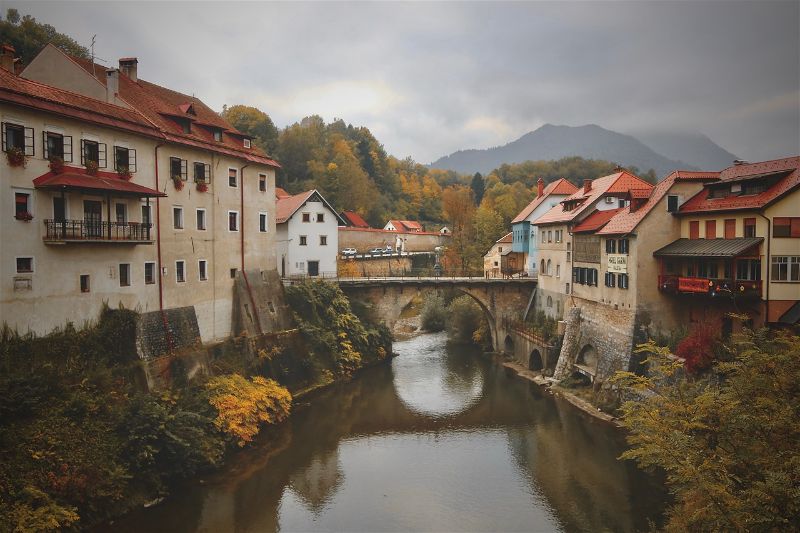
One hour away from the capital Slovenia’s biggest tourist destinations – Bled and Lake Bled – are nestled in the Julian Alps and deliver tons of Insta-worthy views. Hike up to Bled castle, boat to a church on an island, visit the charming village of Ribcev Laz on the shore of Lake Bled and take a cable car ride to the top of Mount Vogel for a panorama view.
End this leg of the trip by visiting the most toured cave in Europe (Postojna cave) and seeing the castle built into it (Predjama Castle) on your way to Croatia.
If you want to jump right into sunny beaches and lively nightlife, I suggest going straight to Croatia.
TIME NEEDED:
3 Days (1 Day in Ljubljana, 1 Day in Bled, 1 Day visiting Postojna Cave And Predjama Castle)
ESSENTIAL FOOD & DRINK
- Kremna rezina
- Kranjska klobasa
- Bograč
- Idrijski žlikrofi
- Pogača
- Štruklji
- Prekmurska gibanica

SLOVENIA VISA
Slovenia is part of the Schengen zone, so the Schengen visa applies – 90 days in a 180 day period, shared with all of the Schengen zone / EU countries
BUDGET/PRICES: ~$50 per day
- Hostel Dorm: $25/night
- Budget Hotel: $45/night
- Food: $15/day
- Transportation: $10 to $15 per day average, to visit attractions
- Attractions: ~$25
MOVING ON: From Ljublana, or anywhere else in Slovenia, if you are on a shorter itinerary (2 weeks or less), hop a bus (~8 hours) or a train (~10 hours + $38) to Split, Croatia, from Ljublana . If you are on a longer itinerary, hop a 5-hour bus or train (~$15) to Pula, Croatia and enjoy Istria .
GETTING THERE: As Slovenia is the start of many travelers’ and backpackers’ trails in the Balkans, the cheapest option is to fly into Bupadest, Hungary, enjoy the beauty of Budapest for a few days and then travel from Budapest, Hungary, to Ljublana, Slovenia by 7-hour train (~$30) or 7-hour bus (~$30) .
SLOVENIA ITINERARY

Slovenia has some amazing natural beauty that is world-class and that travelers rave about – but so do Montenegro, Croatia, and Albania, without being as far from the central Balkans backpacking route. Additionally, Slovenia offers very little outside of nature – while the rest of the Balkans offer rich food, drink, entertainment, and history.
Though Slovenia is remarkably beautiful, if you’re short on time traveling the Balkans, I recommend skipping Slovenia and starting your tour further south, closer to the action.
The Ljubljana city center was planned like an old baroque town, with cobbled streets and a Roman-style canal, catering to a day of walking and a leisurely lifestyle. This is a city that has been preserved in its original form, with buildings from all periods represented, all the while still moving forward. In 2014, Ljublana was awarded the Greenest City in Europe for its dedication to and advancements in sustainability, proving that Ljublana’s soul matched its surrounding beauty of turquoise lakes and sprawling forests.
Ljubljana also has a rich literary and artistic tradition, possibly cultivated by its welcoming cafes, with writers such as Nobel Prize winner Ivo Andric and poets like France Preseren make it their home for much of the 19th century. These literary giants influenced not just Ljublana but also much of the Balkans region as well through their work and by inspiring other writers.
WHAT TO DO IN LJUBLJANA
- Preseren Square and Tromostovje Triple Bridge
- Ljubljana Old Town, walking its two main streets
- Visit the Ljubljana Castle by funicular or hike
- Dragon Bridge
- Walk the riverfront
- Visit Congress Square
- Tivoli Park
- Museum of Illusions
TIME NEEDED: 1 Day
RECOMMENDED RESTAURANTS LJUBLANA:
WHERE TO STAY IN LJUBLANA
The hostel or hotel standards in Slovenia are great, so just choose one that fits your style. However, be choosy about the location to maximize your experience – either the Old Town or the Modern City Center are where you should look for accommodation. H20 Hostel comes highly recommended.
LAKE BLED / BLED
Bled, Slovenia, is a charming little town tucked up in the Julian Alps with the farily tale like Lake Bled situated right beside it. For those backpackers and travelers that love calm, pristine outdoor beauty and just the experience of strolling through a new place, Bled (just like the rest of Slovenia) will capture your heart.
Visitors can enjoy a stroll through the historic and beautiful city center, eating traditional Slovenian cuisine at one of many cafes or restaurants, or just picnic on flat rocks that jut out into the lake. Bled’s historic core is the winding castle on the hill on one side of the lake and the church on top of the hill on the other side of the lake. There are also many tours to take to explore the tiny, hidden, and less well-known, but still equally if not more stunning, parts of Slovenia that are offered by many different tour operators.
On the other side of the lake, on an island in the middle of the Krasna zalza (beautiful grove), stands a small, beautifully constructed church. It is said to be one of the most photographed churches in all of North-Eastern Europe.
Bled Castle was built in the 13th century by the Habsburgs as a summer residence. It has medieval turrets, and its view can be seen from throughout Slovenia. The castle is richly furnished and houses many treasurers; one that should not be missed is called “Prince Luitpold’s Treasure.” The treasure becomes more interesting because it contains some of Napoleon’s personal effects, including a memento made for the French emperor by a craftsman from Bled.
- Postojna Cave and Predma Castle inside
- Visit the town of Piran – full of Venetian architecture and coastline the rivals Italy and Croatia + Tartans Square, Saint Georges Church, and amazing seafood.
WHAT TO DO IN BLED, SLOVENIA
- Boat to the Church of the Mother of God on Lake Bled
- Hike to Bled castle
- Cable car to the top of Mount Vogel
RECOMMENDED RESTAURANTS AND CAFES
Sun-soaked beaches, Game of Thrones-style walled cities, and Venetian influence culture
Croatia’s Dalmatian coast is filled with countless amazing beaches and medieval-style cities worthy of Game of Thrones. The Croatian islands are party havens in the summertime that give you the must-experience opportunity to rent and captain your own boat for about ~$50 per day.
Between wanderings in Croatia, the rich food inspired by Italy just across the Adriatic Sea, and the great wine a rakija culture will keep you entertained. You could easily spend an entire trip in Croatia alone.
Croatia’s capital city, Zagreb, is a contemporary wonder. Its pedestrian-friendly streets lined with galleries and interesting shops hold fantastic treasures to be discovered at every turn. Foodies delight in the wide array of restaurants where one can sample everything from the old regional delicacies (try ćevapčići Slavinski) to original Southeast Asian fusion combos.
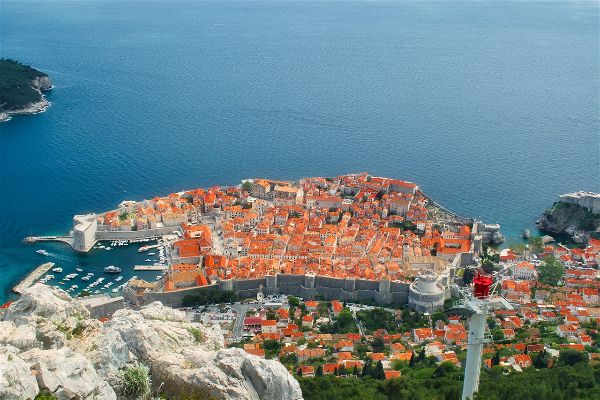
Endless nightlife options throughout Croatia offer partying high atop skyscrapers, in underground subterranean nightclubs nicknamed ‘catacombs,’ to islands that exist solely for nightlife and run until sunrise when they morph into normal beaches.
From its regal castle in Dubrovnik on the coast to modern marvels like The House of Croatian Parliament (Sabor) by architect Vjenceslav Richter, Croatia is filled with cultural riches that dance along pristine, unspoiled coastlines.
The Balkans are not only about wild mountains and alpine vistas – but they’re also home to some of Europe’s most spectacular coastline – the Dalmatian Coast of Croatia. The Dalmatian Coast, with its countless islands (think Hvar or Vis), packs in everything from laid-back fishing villages to cosmopolitan beach resorts. And did we mention the water? Well, it’s just turquoise, but it’s warm, clear, and everything you hope for in a riviera paradise.
No matter what kind of traveler you are, Croatia has something for you.
CROATIA ITINERARY
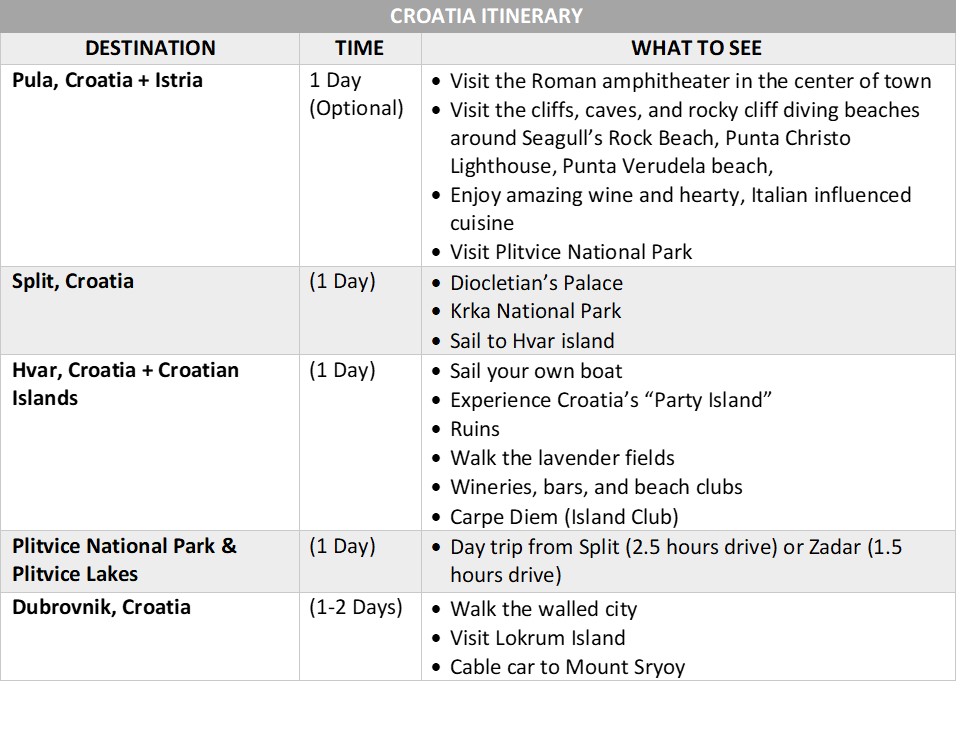
CROATIA TRAVEL INFO
HIGHLIGHTS OF CROATIA
- Cheap truffles
- Great wine in Istria inspired by the Italian style, and heavier, “Balkan style pasta.”
- Castles and medieval cities
- Rocky beaches with warm, clear water
- Never-ending nightlife
ESSENTIAL FOOD & DRINK ACROSS CROATIA
- Istrian cuisine
- Raznijci (meat skewers),
- Zagrebacki odrezak (veal stuffed with ham and cheese)
- Janjetina (lamb and herbs)
- Istrian wine
- Raznijci (meat skewers)
GETTING AROUND CROATIA:
Throughout Croatia, your travel mode of choice will be either by bus or rideshare. https://www.buscroatia.com/ is your best option for researching bus routes, and Rome2Rio.com is your second best option for researching routes, times, and prices. In both cases, book your ticket at the bus terminal as listed times can change and there are usually more routes and times listed than on these sites.
MOVING ON FROM CROATIA
From Croatia, I highly recommend going into Montenegro then Albania if you are on a shorter trip (less than two weeks). If you are traveling for longer (more than two weeks), travel by bus into Bosnia and Herzegovina (Mostar, then Sarajevo), up to Belgrade, Serbia, then back to Croatia, and continue south into Montenegro and Albania.
Leaving Croatia, you are perfectly situated in the Balkans to go anywhere – Slovenia, Bosnia, Montenegro, or a little further to Albania. If you travel to one of the adjacent, nearby countries (Bosnia, Montenegro, or Albania), traveling by bus is your best option, and you can research routes on Rome2Rio and book accordingly. Be sure to read the country sections in this guide to find out visa guidelines for each country.
For travel to Slovenia (Ljublana) and Serbia, a flight (~$90) is your best bet, as the bus to Ljubljana is 14 hours and the bus to Belgrade is 8 hours.
VISA: No visa is required for tourist visits less than 90 days – Croatia is not part of the Schengen zone
BUDGET/PRICES:
- €10-15 for a dorm bed in a hostel, ~25 per night for a private hostel room or budget hotel room
PULA, CROATIA
Pula is a low-key highlight of Croatia. Whereas the rest of Croatia boasts Game of thrones vibes and never-ending nightlife, Pula has a uniquely Istrian feel, heart food that combines Italian influence with Croatian traditions, fantastic wine (in the Italian tradition), low key beaches, and plenty of ruins.
Pula has been occupied by exactly 22 countries, and each has left its mark, although now the area feels very much like forgotten Italian countryside as the city was part of Italy up until 1942. Many of the residents do still speak Italian.
The colosseum that sits in the middle of town, a remnant of the Roman Empire’s occupation, is one of many ruins and archeological sites to explore. Last, there is a vast, still unmapped underground tunnel network beneath the city.
HIGHLIGHTS OF PULA, CROATIA
- Roman ruins and restored Roman empire era structures
- Rocky Beaches and cliff diving
- Food: Cheap truffles, great wine in Istria inspired by the Italian style, and heavier, “Balkan style pasta”
- Malvasia – The local white wine – normally the house wine
WHAT TO DO AND SITES TO SEE IN AND AROUND PULA
- See the Roman Coliseum (The Amphitheater), walking distance from downtown Pula.
- Pula – Built in the 1600s by the Venetians, designed by a French architect
- Roman Temple in Town
- The Triumph Arch
- Pula Daily Market from 7am to 3pm
- Archeological Museum of Istria
- Hop a bus and take the Nr1 line to Stone for 11 Kuna (1.5€) or take an Uber for 5€. Take the bus from the bus station is in front of Corso Kavana & Tapas Bar / Your Private Kingdom Cocktails.
- Go to the café in the campground behind the bus station in Stoja for decent Calamari (60 Kuna) and cocktails.
- Rt Kamenjak – rent a bike in the city at the last bus stop in the city of Premantura. Pick a bike shop at any place in that city.
WHERE TO EAT IN PULA
- Jupiter: Delicious, hearty, Istrian cuisine at an amazing price. Great wine selection too. The Local Wine (Malvasia), Istarski odrezak, and gnocci were the highlights
- Vodnjanka: Great seafood
- Parabuto: Call for reservations as it books up quickly each night
- Tappo: Next to the coliseum. Great for wine and tapas
- Hook & Cook: “Sea to table” restaurant
- Kod Kadre: Meat Restaurant. LOTS of meat
BEST CAFÉ’S IN PULA Have coffee in the main square, in view of a Roman Temple and Ruins. These were my favorite café’s
- Cjvajner Café
- Bistro Nonno
- Caffe Djana
GOING OUT AND NIGHTLIFE IN PULA If you’re planning to party, then you may want to skip Pula. This mellow town is wonderful, filled with great food and wine and plenty of rocky beaches, but the nightlife is scant compared to the rest of Croatia. However, if you plan to go out, these places are your best bet:
For the local scene, go out Thursdays. Start with drinking in the park until about 1 and then move to Uljanik, the local club that specializes in Electronica and Croatian Rock.
For more excitement, go out on the weekends. Pietras Julias – Pizzeria by day, club by night. The music can be a toss-up, depending on the DJ, but this is still the place to go during the weekend.
BARS AND NIGHTLIFE IN PULA
- The Shipyard
- Old City Pub
- Click (the James Joyce Bar)
- Enoteca Istriana – A bar near the Amphitheater that showcases regional wines
- Tapos – next to the amphitheater. Stylish and creative Tapas bar with a very cool/chill vibe
Drinking Tip: Check if the house wine is local; if it is, go for it. It’s usually delicious and always cheap.
PULA WALKING TOUR PATH
- Amphitheater
- Hercules Gate
- Arch of the Surgai (for a family that ruled for 1600 years, the family that won the battle that arose after the death of Julius Ceasar).
- Roman Mosaik – hidden underground House. Punishment of Darci
- Forum (City Center)
- Temple of Augustus
- Front wall from the Middle Ages
- Back Wall from The Temple of Dianna (Goddess of Hunting)
- Sidewall – 1970’s
WHERE TO SLEEP IN PULA
- Crazy House Hostel
- Antique hostel
OTHER TIPS ON PULA
- Summer is the best time to visit, and the most popular restaurants generally close between October and May.
SPLIT, CROATIA
Travelers should visit Split, Croatia, to explore Roman ruins, beautiful beaches, and amazing architecture.
Split is the second-largest city in Croatia, the main port on the Adriatic Sea coast of Dalmatia. The entire town is listed as a UNESCO World Heritage Site, and its most famous landmark is Diocletian’s Palace, a centuries-old historical site that was once one of the most important sites in the Roman Empire. Interesting fact – Roman Emperor Diocletian was the only Roman emperor to leave his station peacefully and avoid being murdered after. He did this by dividing the Roman Empire into fourths appointing a ruler over each so that they may quarrel with each other and leave him in peace. While Diocletian was executing this plan, he built the walled fortress of the palace in Split to retire peacefully and live out the remaining years of his life – as he did – and defend it if necessary. You will see when you arrive that this “palace” is the size of a small town and remained just as peaceful.
A guided tour will take you through its awe-inspiring corridors to some of the highlights, like its vast peristyle with an intricate mosaic floor and golden four-headed animal symbol of old imperial power.
Besides exploring this incredible palace, there are a number of other must-see sights in the area, like the ancient Titus’ Arch on its main promenade and Marjan Hill—a popular park that offers great views of the town.
Moderate to low-budget travelers can still enjoy Split by simply strolling along the seafront promenade where you will see all different kinds of cafes and shops, as well as many outdoor activities including volleyball, table tennis, star gazing or just hanging out on one of many sandy beaches. For those more interested in historical sites or some nightlife and partying, there are plenty of clubs where nightly events featuring both local DJs and international acts. The city’s Old Town is also jam-packed with restaurants offering some great Dalmatian cuisine; however, it can be for the more expensive side.
After soaking up the history and views of Split, hop a boat to the island Hvar to purely soak up the sun, party through the night, and captain your own boat…literally.
WHAT TO DO IN SPLIT, CROATIA
- Visit Diocletian’s Palace
- Enjoy a great, local lunch or dinner on the oceanfront boardwalk – aim for the north end for better prices.
- Specifically, eat at Konoba Matejuska or Hvar Harbor Restaurant
- Explore the city on foot and see all the sights of Split or with a free walking tour
- Visit Paskval Street in the old town for local jewelry and souvenirs.
- Visit the nearby Paklenica National Park for a little fun in nature (2 hours away)
- Take a boat to one of many Croatia islands like Korcula, Mljet and Vis for a day trip, or overnight to Hvar or Brac.
- Firstly, hop a ferry (1 hour, ~$8) to Hvar island to the sun and sip in a place that exists solely for pleasure. Hvar is a Croatian highlight not to be missed. After Hvar, continue by ferry (3.5 hrs, ~$30) from Hvar to Dubrovnik , or return back to Split and travel from Split to Dubrovnik by bus (~4 hours, ~$25)
HVAR, CROATIA
Hvar is a beautiful island in the Croatian Adriatic with amazing architecture, beaches, outdoor activities, and calm urban centers.
Hvar is a Croatian island located in the Adriatic Sea with some of Croatia’s most incredible scenery.
Hvar is also famous for its wines, handcrafted jewelry made out of volcanic stone & silver sea urchins. Tourists can visit different wineries to sample local wines by the glass. The island is very well known for its jewelry, made from the rare Lapis lazuli stone found in nearby mines all over the Balkans, which was highly prized by ancient societies as well as today’s fashion designers.
The vibrant nightlife scene is not necessarily as chaotic as other party islands, but it has its moments – especially if you make your way to the legendary “Carpe Diem.” There are plenty of bars and cafes that have live music every night of the week, and there is also an annual cultural event called “Cherry Night” held every July, during which Hvar celebrates the first sour cherries harvest every year. Local restaurants offer up amazing Mediterranean dishes that will make any foodie happy, including fresh fish and traditional Croatian cuisine like a filet of beef served with a delicious truffle sauce.
WHAT TO DO IN HVAR
- Visit the day bars, Hula Hula Hvar (bar) and Majerovica
- By night visit the never-ending party island of Carpe Diem
- Visit the beaches to the east and west of the main harbor. Beaches in the east rent kayaks for cheaper
- Rent a boat and motor you and your crew around the islands surrounding Hvar
WHERE TO STAY IN HVAR
- Villa Skansi
- The White Rabbit Hostel (Party centric)
MOVING ON FROM HVAR
After Hvar, continue by ferry (3.5 hrs, ~$30) from Hvar to Dubrovnik , or return back to Split and travel from Split to Dubrovnik by bus (~4 hours, ~$25)
DUBROVNIK CROATIA
Known as the Pearl of the Adriatic, Dubrovnik offers more sights and activities than any other city in Croatia. The “Game of Thrones” esque old town is a prime destination for anyone looking to explore some Croatian history and culture and enjoy some amazing views from up high. The city was nearly destroyed during the 1992 war. Since then, Dubrovnik was rebuilt impeccably, maintaining a look that conjures feelings of a “Slavic Venice” considering Dubrovnik (and much of Croatia) were once ruled by the Venetian Empire.
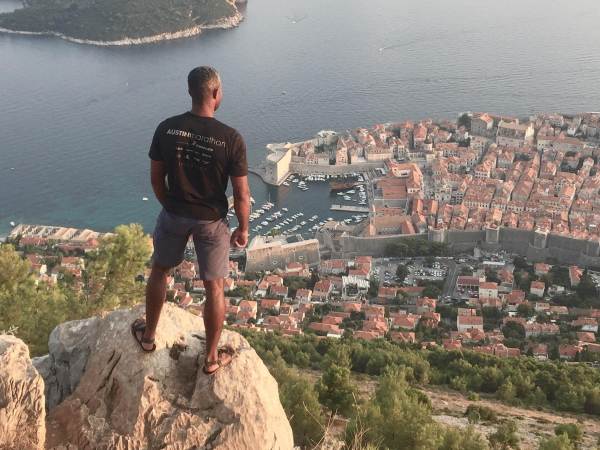
Along with walking along the old city’s high walls and exploring fortifications (complete with cannons), there are also plenty of beautifully secluded beaches not too far away by car or public transportation from Dubrovnik. Just minutes outside of Dubrovnik, you can take it easy lounging on a beach that feels worlds away from busy Old Town. There are smaller gems like Ston where you can see some beautiful medieval architecture, go diving off its limestone rocks nicknamed “The Rocks,” and peaceful Lokrum island, littered with tons of peacocks.
Top your Dubrovnik experience with a sunset towering over the city after a cable car ride up Mount Sryoy, and you cap an epic experience before moving on to even better Balkans destinations.
WHAT TO DO IN DUBROVNIK
- Walk Stradun street, the main street in the Old Town, flanked by Venetian style buildings and Game of Thrones backdrops, ending at the clock tower
- Walk the Old Town city walls
- Old Town sites to see: Rector’s Palace,
- Hop a boat to Lokrum Island for the view, the experience, and peacocks
- Cable car ride up to 412 meters tall Mount Srdj for a birds-eye view of Dubrovnik
- Do a Game of Thrones walking Tour
- Enjoy the beaches that flank the city
TIME NEEDED: 1 to 2 days
ISLANDS NEAR DUBROVNIK TO CONSIDER
- Korcula: Beautiful Venetian architecture and the childhood home of Marco Polo, Princeton Beach, and winemaking
- Elite archipelago of 14 small islands: orchards and fruit groves, white sands beaches, more beautiful architecture and each island has a character all its own
COOL NOTES ON DUBROVNIK:
- The Old Town was a set for Star Wars as well as Game of Thrones
GETTING AROUND DUBROVNIK: On foot is your best and easiest bet as the best parts of Dubrovnik are walkable
WHERE TO STAY: The Old Quarter is a highlight and a great place to stay but pricey. Budget travelers should aim for the surrounding neighborhoods of Pile, Ploce, and Lapad. I highly recommend Hostel Angelina , and there are plenty of options on Airbnb
After you’ve finished exploring Dubrovnik, you’ve likely reached the end of your adventures in Croatia if you are taking the “from north to south” route through the Balkans. If you are in the Balkans for less than two weeks, hop a bus from Dubrovnik to Kotor, Montenegro (~3.5 hours, $8), for insanely beautiful fjords, towering green mountains, and warm, deep blue waters.
If you are on the extended tour through the Balkans, hop a bus on to Mostar, Bosnia, to begin the tour through Bosnia & Herzegovina and Serbia.
BOSNIA & HERZEGOVINA
Ottoman food, culture, and heritage in the Balkans, with dense European history
Bosnia and Herzegovina deliver a unique experience in the Balkans thanks to heavy Ottoman influence in their culture, food, religion, and architecture, and due to the Bosnian history of war – from the assassination of Archduke Franz Ferdinand in Sarajevo, which started World War I, to the Bosnian War in the mid-1990s.
Bosnia used to be a small, medieval kingdom (and existed before Sarajevo); however, in the late 15th century, the Ottomans conquered the Bosnian kingdom, destroying much of the original history and leaving behind much of the culture and architecture we observe today.

Beyond the history-laden walking tours, Sarajevo delivers a rich experience of “Little Vienna meets Little Istanbul.”
Whereas other Balkan destinations deliver pure sunshine and pleasure, Bosnia and Herzegovina deliver culturally enriching and educational experiences in a way any travel will appreciate.
INTERESTING BOSNIAN FACTS: WHY THE BOSNIAN COASTLINE IS ONLY 17 KM LONG
Bosnia &Herzegovina have only 17km of coast: During the period of the Ottoman and Venetian empires, the Venetians controlled present-day northern Croatia. The Ottomans controlled Bosnia (without a coast at the time). Croatia (south of Bosnia) was the Dubrovnik republic. The Dubrovnik republic agreed to give the Ottomans the 17km of coastline to aid trade via access to the oceans, under the conditions that they would fight the Venetians if they ever attempted to invade. This is why present-day Bosnia has this coastline

BOSNIA AND HERZEGOVINA ITINERARY

BOSNIA & HERZEGOVINA TRAVEL INFO
- Mostar: Cliff diving and a small-town feel
- Sarajevo: Vienna meets Istanbul, intense history (Balkan wars, WW2), unique foods,
ESSENTIAL FOOD & DRINK OF BOSNIA & HERZEGOVINA
- Dolma: Served many ways, but stuffed in onion and stuffed in peppers are the most common ways.
- Bey’s Soup or Begova Corba – slow-cooked chicken or beef and vegetables make a thick, slightly creamy, but extremely (simply) delicious soup.
- Klepe: Bosnian meat dumplings served with a creamy yogurt-like cream infused with garlic
- Cevapi: Simple, grilled rounds of minced meat served with a traditional bread somewhat like pita. Simple, yet filling. Good for an uneventful but tasty lunch
- Burek: A savory pastry filled with cheeses, meats, spinach, and the like (comes from Turkey and was brought to the Balkans by the Ottomans). Try it for a quick breakfast.
- Baklava: A layered pastry of flaky bread covered in honey and sugary sweet sauce. Common in many Middle Eastern countries and Greece. Absolutely delicious! Similar to everywhere else in the Balkans and the Middle East, it’s no less enjoyable here. Perfect with a cup of coffee
VISA: Most nationalities can stay for 90 days free without a visa but need to have at least 6 months validity on their passport on arrival
BUDGET/PRICES: $45/ Day for hosteling backpackers and ~$75 for budget travelers staying in budget hotels
CONNECTIVITY: HT Eronet SIM cards for 3G coverage
MOSTAR, BOSNIA
The famous Old Bridge, built-in 1566 over the Neretva River, is one of Mostar’s most recognizable features. It was destroyed in 1993 when Croat forces bombed it in order to create a dividing line across the Balkans. Reconstruction began in 2002 and ended ten years later; today, it is again one of Bosnia and Herzegovina’s top tourist attractions.
But there isn’t just cultural significance here–this city also has plenty of natural beauty: nearby peaks can reach 3,000 meters high (10,000 feet). Take a hike through Medjugorje (30 minutes away) or its surrounding hillsides for some epic views that are rarely seen by anyone but locals–as well as perhaps sightings of wild animals like deer.
Also, check out Kravice waterfalls – some of the tallest in the Balkans at 80 feet tall – between Split, Croatia and Mostar, 45 minutes away from Mostar. There is a swimming pool at the foot of these falls, and you can take a walk along a path that goes behind them to see where it all comes from. Many day hikers picnic along the shores and enjoy the paradise.
If you need one more destination around Mostar and in Bosnia, consider experiencing some local cuisine on Pliva Lake’s shore, featuring plenty of fresh fish and other delicacies, but expect a 2+ hour drive to get there.
The Balkans are known for their hospitable locals–and this is no different in Mostar! Take the time to talk with some of the friendly people who help run shops and cafes. You’ll be able to get a taste of local life that you wouldn’t otherwise see as a tourist.
HIGHLIGHTS OF MOSTAR BOSNIA
- The Stari-Mos Bridge: The iconic bridge, the “stari most” (meaning “old bridge”), has existed since the 1400s. The bridge was used to connect the commerce and residential neighborhood sides of the river. Now, you can jump from the Stari Most after getting certified by the local coaches – or jump from the lower platform. During my time in Mostar, Red Bull was running a cliff diving competition from the Stari Most Bridge.
- Terrace café by Day and Ali Baba disco by night
- Central mosque
- Top of Franciscan Church
- Heavy Ottoman influence
- Fantastic rich food with strong Turkish notes
- Do the free Mostar walking tour
AROUND MOSTAR
- Kravca Waterfalls
- Roman Ruins
- Pocitjeli: A medieval fortress and walls surrounding a town that dates back to 1444. 30 minutes from Mostar.
TIME NEEDED: 1 Day for Mostar, an additional ½ day today for each day trip out of town
WHERE TO EAT
- Restaurant Sadrvan – a plethora of local, Bosnian cuisine at great prices despite the touristy location and feel. Perfectly situated next to the UNESCO heritage bridge ” Stari Mos.”
GETTING TO MOSTAR
- From Dubrovnik or Split, go to Mostar, then Sarajevo, then depart to Serbia (east) or Montenegro (South)
- Traveling by bus, booking on the GobyBus site is your bet
The capital city of Bosnia and Herzegovina is one of the most varied and historically significant cities in Europe. The heritage of the rule of the Ottoman empire remains clear in the cuisine, architecture, and half of the city’s downtown. Museums host the memories of the Yugoslav wars, a product of the splitting of Yugoslavia, as well as the assassination of Franz Ferdinand by student revolutionaries that kicked off World War 2.
The highlight of the Sarajevo is absolutely standing at the border of east meets west in the downtown border between little Vienna and little Istanbul.
HIGHLIGHTS OF WHAT TO DO IN SARAJEVO
- Monday night party at the “unofficial bar.”
- Walking tour (hopefully with Neno)
- A museum (there are so many)
- Crimes against Humanity Museum (I had no idea of the atrocities, genocide, and torture that took place in Bosnia & Herzegovina
- Sarajevo Tunnel
- Latin Bridge – site of the assassination of Franz Ferdinand and the start of WW2
- Walk the Main Street
- “The cultural meeting point” is the line between mini Istanbul and mini Vienna
BEST RESTAURANTS IN SARAJEVO AND WHAT TO EAT:
- Dalmatinska.
- Amazing Burgers
- Walnut Rakija Aperitif
- Stuff peppers and Zucchini
- Gastro Pub Vucko
- Sarajevo eating tip: Stick to the Old Town for cheap, authentic, and delicious food
GETTING AROUND
- Unofficial shuttles 8, 12, 5 for 25 Euros or 50 Marks
WHERE TO SLEEP
- Hostel Kucha
- Doctors Hostel – comfy private beds, clean facilities, and a relaxed yet welcoming atmosphere
- 6:00AM bus to Belgrade from the east bus station
A proud country with a very Eastern European feel, robust history, and intense nightlife.
Serbia is a Balkan country that, through the countless empires and booms of tourists, has been able to hold on to its history and culture more than its neighbors. At times Croatia feels consumed by summering Europeans and GoT tours, and other cities can feel more Ottoman than Balkan at times. Serbia, on the other hand, feels 100% Slavic and 100% Serbian in a unique way for the Balkans. Serbia offers travelers a chance to experience the Balkans untouched, so it is nearly impossible not to have an amazing time during a trip there.
A uniquely Serbian experience awaits in Belgrade and beyond – from Rakia bars to floating nightlife to college-style warehouse parties, then waking the next day to absorb and discuss culture; Serbia will surprise you with its variety and uniqueness.
Serbia, formerly part of Yugoslavia, has a long tradition of hospitality and welcoming people epitomized by the Balkan proverb: “Whoever visits Serbia in wintertime knows what hospitality is.”
If you’re looking to get away from the tourist traps that can sometimes make traveling feel less personal, Serbia is one of the best places to go.
SERBIA ITINERARY
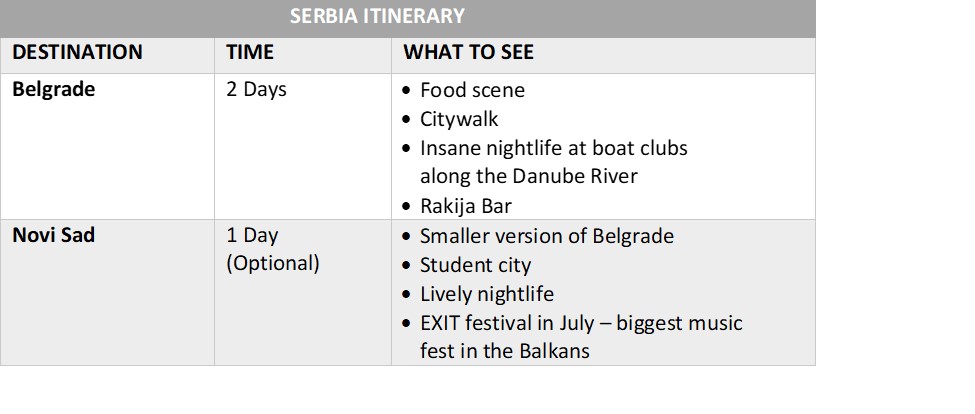
SERBIA TRAVEL INFO
- Insane Nightlife
- Deep History
- Experiencing a Slavic country that remains very true to its culture, unbent by tourism and other invaders
TIME NEEDED: 2 Days
- Ćevapi
- Karađorđeva šnicla
- Punjena Paprika
- Čvarci
VISA: Serbia is not part of the Schengen zone and offers a free 90-day visa for most visitors
- Hostel: $12/night
- Budget breakfast: $1
- Diner or Café Meal: $5
- Coffee: $1.50
- Beer: $1.50
- Inter-city Train: $4.50
- $60 for budget travelers staying in budget hotels
CONNECTIVITY: SIM Card from VIP, Telenor, or MTS for best 3G connectivity
BELGRADE, SERBIA
Belgrade has a rich history, ranging from Roman times to the Ottoman occupation and Serbian Christianization when Serbs converted to Orthodox Christianity in order to counter moves by Catholic clergymen coming from Rome. It was later captured by Turks in 1459, conquered briefly by Habsburgs in 1688, taken by Austrians in 1717–39 during the Great Turkish War, when it was known as “Belgrad” (Turkish: “Novo Brdo”), and liberated by the Serbian army in 1876 during the Serbian–Ottoman War of 1876–78.
Belgrade was also the capital of several Yugoslav states until the dissolution of the former Yugoslavia in 1992. Belgrade is still the capital and largest city of Serbia. It is the only major Serbian city with a population above one million.
- Do the free Belgrade walking tour, hosted by Hostel Hedonism
- Visit the Belgrade Fortress and hang out at the Park in front of it
- Visit old town (Zaman)
- Visit Sajmiste (remnants of a concentration camp)
- Walk Belgrade’s “Stari Grad” (Old Town), seeing the main walking
- The main pedestrian walk of Kneza Mihaila and plenty of places to eat, drink, and people watch
- Visit Republic Square, at the end of Kneza Mihaila
- The Belgrade Fortress, which has never been overtaken
- Kalemegdan Park surrounding the fortress, which includes the military museum and a zoo
- Walkthrough Skadarjila, Belgrade’s most stylish and bohemian neighborhood
- Enjoy the never-ending nightlife at the riverfront bars and clubs
- Visit Zeleni Vanac farmers market
- Visit the Nikola Tesla Museum
- Visit the neighbors of Zemun and Novi Beograd for a taste of what local life is like outside of the city center.
- Noteworthy landmarks to see: National Assembly, Church of St Mark, Church of St Sava
- Belgrade is the largest city in the Balkans
- The Belgrade fortress has never been captured by a rival
TIME NEEDED: 1-2 Days
ESSENTIAL FOOD, DRINK, AND WHERE TO EAT
- Fabrika (Restaurant)
- Leila Records (Radio-Televizija Beograd) – A café, bar, and record located a 10 minutes walk from the tourist strip but authentically (hipster) Serbian.
- Go to new Belgrade or Zamun for food
- Cafeteria (coffee bar in tourist center)
- Fabrika Restaurant
BARS AND NIGHTLIFE
- Go to Passenger Café (have a Kas beer) next to Hedonism Hostel
- Rakia Bar – The name says it all!
- Splavoli (floating clubs built into houseboats on the Rivershore)
- Drugstore (Warehouse District – Bus 16), Old factory clubs complex
GETTING AROUND: Most of the parts of Belgrade you’ll want to see are situated in the downtown and historic areas, so you’ll be able to explore the entire city on foot
- Bongo Hostel
- Hostel Hedonism
- Take the train (11 hours) or fly back to Podgorica, Montenegro and continue on the Balkans backpacking route.
Novi Sad is the second-largest city in Serbia. It’s known for its significant role at the end of World War I, when it was occupied by Serbian troops and became an important anti-Bolshevik base. This great deed earned it a reputation as a Christian bastion that turned out to be undefendable against merciless Ottoman forces.
The dynamic atmosphere attracts many visitors and workers from abroad, who come to experience this Mediterranean Balkans feel during their Balkans tours. Novi Sad is also famous for its thriving art scene as well as the annual jazz festival attracting celebrities and musicians from around the world every October.
As one of the youngest European capitals, Novi Sad’s restaurants, bars, galleries and concert halls all reflect its cultural diversity, which in turn gives the city an alluring nightlife that is often described as unique.
Novi Sad’s strategic position on the Danube River makes it a natural hub for inland waterway transport, and there are good road connections to all major cities around the Balkans.
- Smaller version of Belgrade
- Student city
- Lively nightlife
- EXIT festival in July – biggest music fest in the Balkans
WHAT TO DO IN NOVI SAD
- Visit the Petrovaradin Fortress
- Walk Dunavska pedestrian street
- Enjoy peace and quiet in green Danube park
- Visit the Museum of Vojvodina which documents 8,000 years of history in the region
- Enjoy the architecture: Name of Mary Church, Novi Sad Synagogue, Vladičanski Dvor (the Bishop’s Palace), St. George’s Cathedral
- Enjoy Strand, the sandy beach on the shore of the Danube
- Visit the Matica Srpska Gallery housing 7,000+ pieces of Serbian art from 1500 to present
- Visit Fruška Gora 30 minutes from town, a National Park of vineyards, pastures, and woodlands that was the shores of an island in the Pannonian Sea 90 million years ago
- Drive 35 minutes away to the vineyard laden small town of Sremski Karlovci
TIME NEEDED: 1 day
MONTENEGRO (HIGHLIGHT OF THE BALKANS)
The southernmost fjords in Europe tower above pristine, beautiful waterways and castles
Montenegro is a small yet intensely beautiful country dominated by the southernmost fjords in Europe, waterways, and towering mountains with centuries-old, medieval-style cities dotting in between. Montenegro’s views and stories feel unreal, whether walking a cobblestone road in the afternoon, taking a cheap boat tour through the waterways with the captain narrating the hidden history, or hiking to a monastery.
For many travelers, Montenegro is the highlight of their Balkan itinerary.
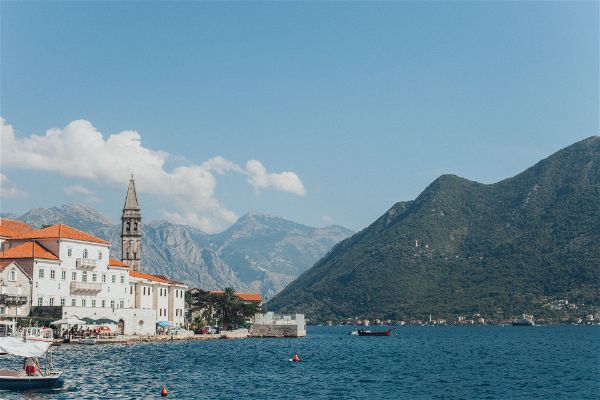
You’ll find the popular sites, Kotor and Budva, frequented by cruise ships and locals (Croatians and Serbians). Montenegro delivers all of the enjoyment of Croatia at about 1/3 the price.
MONTENEGRO ITINERARY
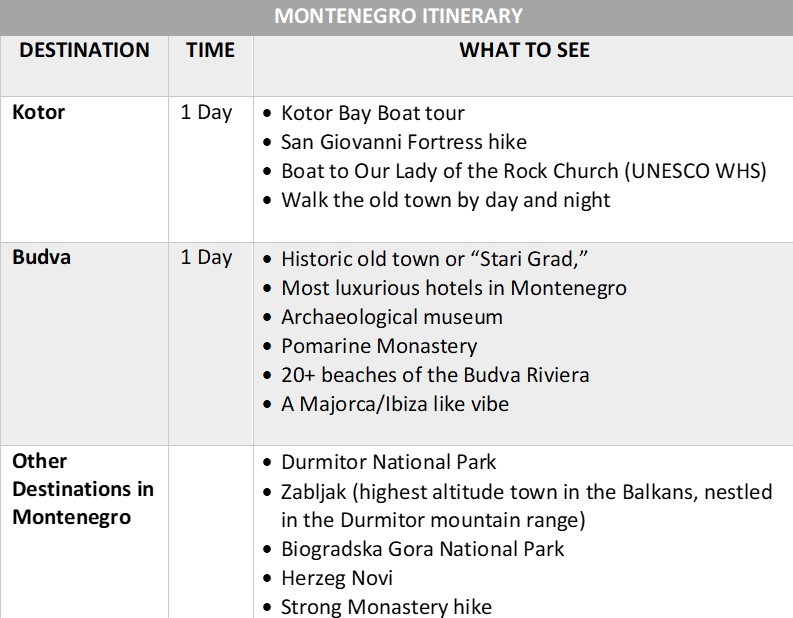
MONTENEGRO TRAVEL INFO
TIME NEEDED: 2 to 3 days for the essentials
- Moussaka (in general)
- Musaka od Ketola

GETTING TO MONTENEGRO
- International travelers coming from outside the Balkans will need to fly into Dubrovnik and then bus to their destination in Montenegro.
- No matter where you come to Montenegro from (within the Balkans), traveling by bus is your best bet.
- From Dubrovnik to Kotor, take a 3-hour bus ($10) .
- From Albania, bus from Skoder (3 hours) or Tirana (6 hours).
- From Mostar, Bosnia, or Sarajevo, taking the bus will be your best option.
- From Belgrade, take the train from Belgrade to Podgorica, and hop a bus from Podgorica to your next destination in Montenegro
VISA: Montenegro is not part of the Schengen zone, and a free 90-day visa is offered on arrival
CONNECTIVITY: Telenor SIM Card best for 3G access countrywide
- Hostel: $12/day
- Transportation: $7 between cities, most cities are walkable and need no transport
- Tours: $35 for Kotor Bay and Lady of the Rocks Tour
- $75/night for budget travelers option for hotels
KOTOR, MONTENEGRO
Kotor is one of the most picturesque cities in Montenegro and a popular destination to visit for people all over the Balkans and beyond!. It’s located on a dramatic bay where the Adriatic crashes into towering limestone walls, forming cliffs and caves. Kotor is home to UNESCO World Heritage Site Old Town, which begins at the foot of Stari Grad (Old Town) and ends at Lovrjenac Rock in the center of the bay, and is considered one of the most beautiful places along the Adriatic Coast. Nearby seaside villages include Tivat, Budva, and Sveti Stefan. With its beautiful beaches, magnificent fortresses and interesting history, Kotor is perfect for travelers of all ages.
Roman Emperor Augustus spent time in Kotor in the 3rd century BC and praised it as a “city defended by strong walls” back then.
If you are planning a Balkans itinerary, be sure to put Kotor on your list. The beauty of this coastal town, as well as its historical significance, will not disappoint.
HIGHLIGHTS (BLURB)
- Kotor Bay Boat Tour
- Visit Our Lady of the Rock Church (UNESCO Site)
- The Kotor Bay Boat tour (€35) is a must-do. 3 hours on a boat spent cruising the crystal clear, blue waters up to the border with Croatia, visiting some interesting sites in between (includes lady of the rock church, underwater tunnel)
- Beaches abound around Kotor , walking distance with water so warm and calm. I went for midnight, moonlit swims every night in Kotor.
- Two fishermen found a picture of the Virgin Mary on a rock in the middle of the water. It was gone the next day but reappeared a week later. The locals decided to build a church on the rock but needed to build an island first. For 100 years, sailors in the bay would drop small rocks from their boats each time they went out, and the town sank enemy ships over the rocks to build the island. Today, the church and the island are UNESCO world heritage sites.
- Old Town and the Castle: The old town is an ancient, walled complex and castle that crawls up the steep mountain behind the city. This complex houses most of the nightlife in Kotor and caters to partiers and backpacker life.
TIME NEEDED: 1 to 2 days for the essentials
GETTING THERE: The destinations in Montenegro are close together, so, anywhere in Montenegro you go, travel by bus. Rome2Rio will be your best tool for planning bus travel, but be smart and book at the train station beforehand.
GETTING AROUND: Kotor is a small and beautiful town that is tightly packed and very walkable. Plan on just walking to get anywhere you’d like to go.
WHERE TO SLEEP IN KOTOR
- Hostel 4 U Montenegro : A hostel on the beach and an anomaly. When I stayed, they had 2000+ reviews and a rating of 9.9 out of 10. On arrival, you won’t check-in. Instead, you’ll be handed a shot of homemade Rakia.
- Old Town Hostel
- Use www.getbybus.com to find your bus out
LOGISTICS VISA: Montenegro is not part of the Schengen zone, and a free 90-day visa is offered on arrival
BUDGET/PRICES: (1 NIGHT ACCOMMODATION, 1 MEAL, 1 BEER)
NOTES : Next to the old town is Kotor’s only shopping complex with a grocery store and anything else you’ll need
BUDVA, MONTENEGRO
Budva is a coastal town with great nightlife and vibrant atmosphere, long sandy beaches, beautiful residences, hotels and hostels. Its off-season city is charming as well – not too big yet numerous things to see and do. The city’s old town centers around its signature pedestrian street, which is the center of activity for visitors, lined with shops, restaurants, bars, and cafes. The Old Town is bordered by the site of a 14th-century Franciscan monastery on one side and a 17th-century Orthodox church on another. A walk through this picturesque area also gives a breathtaking view of mountainside villages and the shores leading up to the Adriatic Sea.
- Soak up the sun on the Budva Riviera
- Walk the Budva Old Town
- Visit the Cathedral of Saint Stephen
- Sail the bay and view Kotor fjord
GETTING AROUND: Just like Kotor, Budva is tightly packed and walkable, so plan out using your feet to get around for the best experience
Undiscovered and packed with experience: the Albanian Alps and the Albanian Riviera are Balkan highlights
Albania is one of the highlights of the Balkans – “young,” undiscovered, and filled with some of the best beaches (the same coastline as you’ll find on the Greek Riviera) and Alpine views in all of Europe, at a travel price that is easily the lowest in the Balkans and Europe.
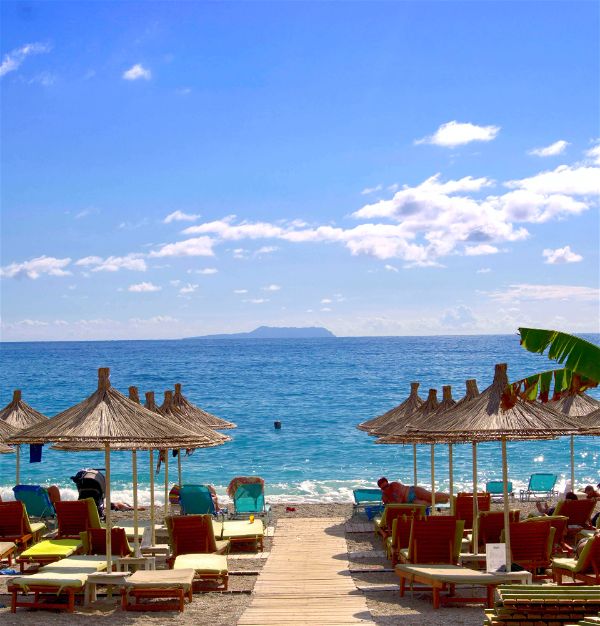
Albania opened up to the west and abandoned communism much later than its neighbors, leaving Albania with a very young and “new” and somewhat adventurous feel as a country. Though traveling through Albania can be slightly more difficult than its neighbors, the natural beauty you get in return makes Albania a highlight of the region thanks to two things – the Albanian Riviera and the Albanian Alps. As you travel through this country, you will experience the highs of travel and the calamity of “adventure travel.” Some parts will feel like the Greek isles and riviera or Alps of other countries, while other places will feel as chaotic as urban India – in all situations, though, the experience is exquisite and worth the trip.
The Albanian Riviera is the coastline shared with Croatia (to the north), but more interestingly, it is shared with Greece to the south. This is the same immaculate beaches and coastline that would cost 5x as much to travel in Greece, but (in Albania) you experience it with a more authentic, less touristy feel, and without the crowds.
The Albanian Alps are tucked just across the Albania-Montenegro border, near the Albanian towns of Theti, the Valbona River Valley and deliver sights as amazing as the Swiss Alps and Dolomites, surrounded by charming rural towns, yet just a few hours drive from warm beaches. All of this is still under traveled, undiscovered, and perfect for budget travels.

INTERESTING FACTS ABOUT ALBANIA
- Albania was the first atheist country in the world in 1967
- The clock tower in Tirana has been rebuilt several times because, at the start of wars, it was usually the first thing destroyed, and after wars, it was usually the first thing rebuilt
- Albania has over 170,000 bunkers strewn throughout the country
- Albania is the international name based on the first tribe that was found here.
ALBANIA ITINERARY
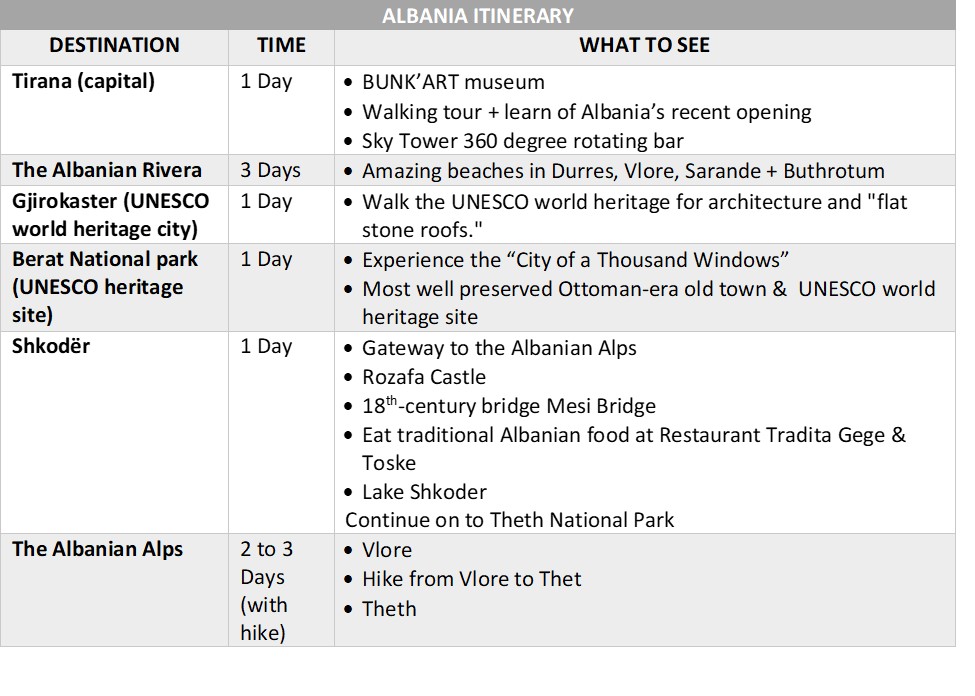
Consider Albania route –> Tirana –> Shkoder –> Albanian Alps –> Albanian Riviera (Vlore, Sarande, Himare) –> Berat –> Gjirokaster –> Tirana to do the adventurously strenuous experiences (trekking) first, and end the trip on the beachy riviera
Or reverse the route if you would prefer to get adventurous first and then end on the beach.
HIGHLIGHTS ALBANIA
- Tirana (capital) and learning of the country’s history
- The Albanian Riviera and exquisite beaches for insanely cheap
- Sarandë (Best coastal destination)
- Rough camping on the beaches of Albania
- Shkodër
- Berat and Berat National park (UNESCO heritage site)
ESSENTIAL FOOD & DRINK IN ALBANIA
- Byrek: Savory pastry
- The Mediterranean Staples: Olives, cheeses, fresh fruits, fresh vegetables, baklava, byrek
- Stuffed Peppers
- Fried Eggplant
WHEN TO VISIT: Shoulder seasons of April to June and September to October are best, with great temperatures and thin crowds. July and August are great, too but expect heavier crowds.
GETTING THERE: From within the Balkans, international busses connect to Tirana from Montenegro, Kosova, Greece, and Macedonia. From outside of those countries, expect to fly in. Momondo is your best bet for finding cheap flights.
GETTING AROUND: Albania is small and easy to get around. You can travel from north to south in a single day, all via public transport (no need to rent a car). Fulgoni and busses are your best options for travel.
Fulgoni are shuttle buses or minivans that run between cities in Albania. They’re accessible and cheap but often only leave when full. To find them, it is best to ask your hostel or hotel where to find the appropriate one for your next destination.
Long-distance busses are another great option, more reliable, easier to book, and my preferred option.
If you are pressed for time and don’t want to waste time sorting transport, consider a tour from G Adventures or Intrepid Travel.
MOVING ON: From Albania, take a cheap flight into Bulgaria (Sofia and Bansko) for great food adventures, a Bohemian café scene, low-key yet engaging nightlife, and some great day hikes.
VISA: 90 days free with no visa required for citizens of EU countries and 59 other countries, including the US, Australia, Canada, and the United Kingdom ( Source )
ALBANIAN BACKPACKING BUDGET/PRICES: Albania is the cheapest country to travel in the Balkans
- $35 per day total
- Hostel: $11/night
- Good meal: $5
- Transport: $75 to $100 for bussing the entire loop of Tirana to the Riviera to the Alps
WIFI AND CONNECTIVITY:
- Vodafone SIM for 3G is best, also Eagle Mobile, Telekom
- Larger, chain cafes will have wifi, don’t expect strong wifi in small cafes
RECOMMENDED TOURS: (G Adventures, Intrepid, Contiki)
TRAVEL INSURANCE: Albania is adventurous enough that I recommend travel insurance, and Safetywing and World Nomads both suffice
Tirana is the Albanian capital and full of history in Tirana, dating back to about 3000 BC. Tirana was once the crown jewel of the Balkans and was considered Europe’s newest and most modern city. But the Balkans lost a lot of its charm following World War 1 which destroyed major portions of the Balkans, including Tirana and many other cities in Albania.
After the war, a communist government was established, and Albania became a communist state, isolating itself from not but the west, but even China, the Soviet Union, and neighboring Yugoslavian countries.
In 1992, Albanians voted to end communism and instead embrace democracy. Since then, Albanian has been gradually reopening and recovering from decades of isolation.
Tirana is the perfect place to learn about, experience, and absorb this history from walk tours, wherein guides share the history that they lived through, museums, and daily life that has eery remnants of a time passed.
- The City Square: Has a plant from every region of Albania and has 100+ small fountains, so the square stays cool in summer.
- The National Museum located next to the square
- A Free Walking Tour for a firsthand account of Albania’s history
- Block Ware (former place of the elite – now a place to go out)
- Sky Bar – a bar that rotates completely every hour, giving a 360-degree view of the city
- The Bunker Museum
- Visit the Bunk’Art 2 museum: A nuclear bunker turned Albanian dictatorship history museum.
- Take a free walking tour to discover the history
- Visit the National Museum
- Visit Skanderberg Square
- View Et’hem Bej Mosque in the Square
- Cable car up to Dajti Mountain for sunset after bussing to Daytime National Park for a panoramic view of Tirana
- Visit Tiranas New Bazar for food and people watching.
RECOMMENDED RESTAURANTS IN TIRANA
- Oda Restaurant
- Sofra Beratase Restaurant
- Head to Himare, on the Albanian Riviera
- By bus from the south bus station (1000 Leke) at 5:45, 6:15, 1:00pm, 6:00pm
- From center to bus station ~700 Leke
RECOMMENDED TOURS
- Any free walking tour
- The Bunk’Art Tour
The gateway to the Albanian Alps and an ancient city that was home to Illyrian tribes that ruled Albania, Kosovo, Montenegro, Croatia, and Bosnia and Herzegovina. Later, this city was ruled by the Serbs, Romans, Byzantines and Ottomans, and the remnants of these cultures still remain today.
A prep town before heading into Theth and the Albanian Alps. One of the oldest cities in the Balkans.
When not prepping gear and planning transport for the Theth to Valbona hike, walk the city streets to absorb the vibe. The main street (G’juhadol), the shopping street (Kole Idromeno) are great places to walk through.
- Hike up to Rozafa Castle
- Prep for the Theth to Valbona hike (food and equipment are best gathered here)
TIME NEEDED: 1 Night
SHKODER LOGISTICS NOTES
- Plan on going to the SPAR Market in town to stock up on everything you’ll need for the hike
- Bring enough cash for your time in the Alps because there is no ATM in Shkodra.
- Transport to Theth will be best arranged through your hostel or hotel, including transport back from Valbona.
THE ALBANIAN ALPS
The Albanian Alps is a high-altitude mountain range in southern Albania, with the highest peak, Mount Korab towering at 2,764m above sea level. The range spans 100km from north to south and rivals the beauty of the alpine regions elsewhere in Europe, making for the same amazing outdoor experience at a fraction of the price and with a fraction of the crowds.
You already know Albania is already a country that has maintained its beauty with charming rural villages untouched natural landscapes. A relatively small Balkans country, to begin with, having an area of only 28,750 km2, the Albanian Alps continue to be an unexplored gem tucked in the northeast corner of Albania. The Albanian Alps stand as a national park immaculate and pristine trekking and hiking by summer and international ski resorts to explore by winter. Throughout your wanderings here, you’ll find scenic views of snowy peaks surrounded by green pine forests as backdrops to crystal blue watering holes and waterfalls. Tourists choosing to hike and make the most of their time in the region here, around Theth and Valbona, can choose from different levels of difficulty in treks, from easy to difficult, making the adventures here suitable for everyone.
The Albanian Alps offer many activities beyond just hiking, such as sightseeing, kayaking, horse trekking, and skiing. This destination is a perfect escape where you will get to travel throughout the Balkans but have the feeling that you are far away from civilization.
An Alpine Mountain town with hiking as its main draw, and that’s plenty.
- The Theth to Valbona hike through the Albanian Alps (7 hours)
- Hike the trail to Danielle (5 hours)
- Hike to the Blue Eye (7 hours) + Grunas Waterfall on the route
TIME NEEDED: 3 Days
The destination city of an amazing, 7-hour one-way hike from Theta to Valbona. You will complete the hike with a walk through the town with a beautiful view on both sides, ending with dinner at your guesthouse.
Be sure to go out after sunset and take in the night sky. Then rest up and prepare to go back to Shkodra the following day.
- Arrange transport back to Shkodra through your guesthouse for the following day.
- The travel back will require a furgon from Valbona to Fierce, a ferry across Loman Lake to Koman, and another Furlong from Koman to Shkodra.
A central town on the Albanian Riviera surrounded by beautiful beaches and a great base for comfortably exploring as many as your trip allows.
- Gjipe Beach (accessible by kayak)
- Jala Beach (accessible by kayak from Himara)
- Filikuri Beach (accessible by rented kayak)
- Rent a kayak and explore the coastline by day, visit the beaches and coves that dot the shoreline.
RECOMMENDED RESTAURANTS & ESSENTIAL FOOD & DRINK
- Sunset Restorat Bar (more for sunset than the food)
UNESCO World Heritage site and city of 1000 windows and home to Ottoman era homes and fortresses on the route to the Albanian beaches
- Berat Castle
- Holy Trinity church, and Byzantine church from the 13th century
- Walk the Mangalem Quarter (home to Muslims) and Gorica Quarter (home to Christians)
- Make the hour-long hike up the hill behind the Gorica quarter for sunset
- Walk Bulevardi Republika just after sunset to experience “xhiro hours” when friends and family come out to walk and socialize
- Two buses daily run from Berat to Gjirokaster from the Berat Bus Terminal, one at 8 am and the second at 2 pm for ~200 LEK. The ride will be ~3 hours.
GJIROKASTER
A UNESCO world heritage site known as the “Stone City of a Thousand Steps.” One of the Balkans’ oldest cities, Gjirokaster, is worth a visit for its architecture, ancient ruins, and abundant Ottoman-era houses.
WHAT TO DO AND SEE IN GJIROKASTER
- Gjirokaster Castle, a beautiful Ottoman-era fortress sitting atop a hill
- Gjirokaster Museum
- Explore the hundreds of bunkers in Gjirokaster
- Gjirokaster Old Bazar
- Do the Free Walking Tour hosted by Stone City Hostel if staying there
- Hike to the Ottoman era Ali Pasha Bridge
WHERE TO STAY
- Stone Coty Hostel
Calm, quiet, and potent for foodies and lovers of pub culture
Quaint, calm, and charming in a peaceful way, Bulgaria is a wonderfully relaxed destination in the Balkans that is less about natural beauty, architecture, and nightlife than its neighbors and more about food and absorbing culture by osmosis. Additionally, you will constantly be surprised by the history, culture, and cuisine of Bulgaria that you’d never even heard of. At night, the restaurants and nightlife make Sofia and Bansko places that a nomad could hang their hat.
Food in Sofia, Bulgaria is surprisingly amazing ; a strong locavore food scene encourages restaurants to commonly experiment with the foods of the region in a gourmet way. The yogurt you commonly eat started here. My favorite meal in Bulgaria was local wild boar that fed on a particular berry in the forest, served with greens and salad foraged from the same forest, paired with a wine made from the same plucked berry from that forest, and finished with ice cream made from the same berry – and this was a standard meal for my entire time in Sofia for cheaper than an average meal in a western European country.
Bulgaria’s history can be explored with day trips (to Plovdiv) and walking tours wherein you’ll discover ruins and remnants from the Ottoman Empire’s former footprint, as well as how the Bulgarians protested the deportation of Bulgaria’s Jews to concentration camps and came up with a scheme to save the Jews in Bulgaria.
Bulgaria’s pub and local bar is an adventure on its own. Whereas Croatia’s nightlife rivals Barcelona’s, Bulgaria’s dark pubs seem reminiscent of Game of Thrones pubs. As contrasted and low-key as the vibe is, the locals are welcoming, and a few beers on the town in Sofia can be a great time.
All in all, Bulgaria is a less exciting destination, but calmly pleasing in many ways and a great way to end a trip through the Balkans.
BULGARIA ITINERARY

- Shopska Salad
- Tarator Soup
- Shkembe Chorba
- Chushka Biurek (Stuffed Peppers)
- Madradjisko (Egg & Cheese in Clay Pot)
- Palačinka (Bulgarian Pancakes)
BULGARIAN VISA: You can travel in Bulgaria for up to 90 days every 180 days. Visits to Bulgaria do not count towards your 90-day visa-free limit in the Schengen area.
CONNECTIVITY and SIM Cards: Telenor, Vivacom, A1 Bulgaria
- Accommodation: $11/night
- Transportation: $10 between cities, $17 to taxi across the entire city
- Attractions: $10
- Accommodation: $25/night
- Food: $25/day
- Attractions: $10
Sofia, the capital and largest city of Bulgaria, is a fascinating blend of European and Slavic styles with architecture that encompasses many different periods. The Balkans itinerary would be incomplete without at least a short stopover in Sofia.
This city may seem dull on the surface, but it is actually cultured, entertaining, and has a heavy hipster influence beneath the surface.
A strong gourmet and locavore food scene at insanely low prices (as expected in the Balkans), a great pub and dive bar scene, tons of kitsch coffee shops, and more add up to a destination that doesn’t quite blow your mind but is a perfectly enjoyable and relaxing stopover for backpackers, digital nomads, and anyone who can appreciate artsy and “low key.”
WHAT TO DO IN SOFIA
- Food Tour with Balkan Bites
- Free walking tour with Sofia free tours
- Go on a graffiti tour or simply wander the town and admire the street art
- 10 pm pub crawl every night from Hostel Mostel
- Consider day use of the spa and sauna at Central Hotel Sofia if you’ve been running too hard.
- Wander and explore the countless cafes as there’s a strong bohemian scene in this city
- Hike up Vitosha Mountain, just outside the city
- Visit “ The Red Flat ” for a peek into what life was like under communism
- Do the Seven Rila Lakes Hike, glacial likes high in the surrounding mountains
- Day trip outside the city to the colorful Rila Monastery
- Landmarks and architecture to see: Alexander Nevsky Cathedral
TIME NEEDED : 1 day for Sofia proper, 2 days including hikes
GETTING THERE:
- Fly in as Sofia is one of Europe’s most affordable cities to fly into. I paid $32 for my flight in and $1.50 to get from the airport to my hostel.
WHERE TO STAY:
- Hostel Mostel: At $11, I got a dorm bed, made tons of friends, and all-you-can-eat breakfast and free dinner. The crowd here was the best part.
- Consider heading to Turkey as a train ticket to Istanbul is only $29.
- Balkan Bites Walking Tour
- Sofia Free Walking Tour
- Free Sofia Graffiti Tour (or just wander on your own)
Bansko is best known as a budget-friendly ski location and mountain town for digital nomads. If you’re traveling to Bulgaria in the winter, stop off for some snowboarding and skiing. Outside of winter, your trip to Bansko will be filled with hikes and day trips to nearby cities.
If you’re on the long trail, backpacking for months, Bansko is worth stopping at for some outdoorsy relaxation. If your schedule is tight, skip this destination and allocate more time for other Balkan cities.
WHAT TO DO IN BANSKO
- Ski-in the wintertime
- Hike to Vihren Peak
- Rila Monastery Day Trip
- Pirin National Park Day Trip
TIME NEEDED: 1 Day + 1 day for each of your chosen hikes/day trips
RESTAURANTS
- Hadjidragana Tavern
- Skaptoburger
- Salted Cafe
ALTERNATE DESTINATION: THE BULGARIAN BLACK COAST
City 1: Varna – The Marine Capital of Bulgaria (1 Day)
- The Retro Museum
- The Stone Forest
- Cathedral of the Assumption of the Virgin
- The Butterfly House
City2: Sunny Beach – A sunny vacation spot filled with nightlife (1 Day)
- Erma Turkish Bath
- Church of Saint Sophia
THE ADDITIONAL BALKANS DESTINATIONS
Kosovo (optional).
Honestly, many other countries in the Balkans have more to offer, but the act of visiting this formerly war-torn country will help you open your mind and shed stereotypes that will enhance your travels down the road. Though Kosovo lacks the sights to see that its neighbors do, Kosovo is very safe to travel to, and visiting can open your mind.
If you are traveling the region for less than three weeks, skip Kosovo and save the travel days for another highlight destination (Albania, Montenegro, or Croatia).
If you are backpacking in the Balkans and have plenty of time, stop through Pristina, Kosovo and walk the town, and be sure to read the history of Kosovo to truly appreciate how far this country has come.
KOSOVO ITINERARY
WHAT TO DO IN PRISTINA
- Take the cathedral elevator up for a good vantage point of the new city
- Check out the statue of Bill Clinton
- Walking tour – 11 AM daily from the steps of the National (Library)?
- Walk down the main drag (??name and Mother Theresa road) in the evening to see normal life.
- National Museum
VISA: For most nationalities, no visa is necessary for up to 90 days
MACEDONIA (OPTIONAL)
With all of the other amazing sights to see in the Balkans, it is difficult to justify detouring to Macedonia instead of spending extra days in one of the country’s neighbors.
Skopje’s Bazar, reminiscent of Turkey, is topped by Little Istanbul (and Little Vienna) in Sarajevo, Bosnia. The countless statues in Skopje’s downtown are interesting but more reminiscent of Las Vegas than a Balkan backpacking adventure and are one-upped by the old walled cities in Croatia and Montenegro.
At the same time, Lake Ohrid’s, and Ohrid’s, beauty are topped by that of Kotor Bay in Montenegro and Lake Shkoder/Shkodra on the Montenegro /Albania border.
Plus, all of these other options above are a shorter distance to other worthwhile sites.
If you are traveling or backpacking the Balkans for less than three weeks, skip Macedonia and spend more time in the other, highlight locations.
If you are traveling the Balkans for more than three weeks and want to include Macedonia, do a quick layover in Skopje and add Ohrid and Lake Ohrid if you are enchanted enough.
MACEDONIA ITINERARY
- Poletti Peperki
VISA: Visas are not required for tourist or business trips of less than 90 days within a six-month period.
VISA INFO FOR THE BALKANS
General: For most borders in the Balkans, you can show up to the border and easily get a 90-day visa or a 90-day entry, visa-free as long as you have 6 months validity on your passport. Slovenia is the only Schengen zone country in the Balkans, sharing its 90 visa with the entire Schengen zone.
Country by Country Balkans Visa Information:
- Slovenia: Schengen Zone country meaning 90 days in a 180 day period, shared with all of the Schengen zone / EU countries
- Croatia: No visa is required for tourist visits less than 90 days – Croatia is not part of the Schengen zone
- Montenegro: Montenegro is not part of the Schengen zone, and a free 90 day visa is offered on arrival
- Bosnia & Herzegovina: Most nationalities can stay for 90 days free without a visa but need to have at least 6 months validity on their passport on arrival
- Serbia: Not part of the Schengen zone and offers a free 90-day visa for most visitors
- Albania: 90 days free with no visa required for citizens of EU countries and 59 other countries, including the US, Australia, Canada, and the United Kingdom
- Bulgaria: You can travel to Bulgaria for up to 90 days every 180 days. Visits to Bulgaria do not count towards your 90-day visa-free limit in the Schengen area. Bulgaria is an EU country but is not in the Schengen zone.
- Macedonia: Visas are not required for tourist or business trips of less than 90 days within a six-month period.
- Kosovo: For most nationalities, no visa is necessary for up to 90 days
CROSSING BORDERS IN THE BALKANS
Border crossings in the Balkans are fairly easy, for the most part. Just be sure to have at least 6 months validity on your passport.
The only border crossing difficult will happening attempting to travel from Kosovo into Serbia. You will have no issues traveling from Serbia into Kosovo, however, traveling from Kosovo to Serbia is forbidden and you will not be allowed through the border.
MONEY AND CURRENCIES ACROSS THE BALKANS
With the exception of Slovenia, Kosovo, Montenegro, and Greece, each country in the Balkans uses its own currency, so be sure to limit the amount of cash you convert to avoid losing too much on the exchange when you exit.
Better yet, aim to keep the bulk of your cash in Euros or US dollars and only exchange as necessary.
The respective currencies for each country in the Balkans are:
- Euros are the standard currency in Slovenia, Greece, Kosovo, Montenegro
- Croatia – Kunas/HRK
- Bosnia and Herzegovina – Bosnia Herzegovina convertible mark/KM –
- Serbia – Serbian Dinar
- Bulgaria – Bulgarian Lev
- România – Romanian Leu
- North Macedonia – Macedonian Denar
- Albania – Albanian Lek
You will receive the best exchange rate at ATMs, so avoid exchanging at money changers if all possible.
TRAVEL INSURANCE: DO YOU NEED IT IN THE BALKANS?
If you can’t afford travel insurance, you can’t afford to travel.
As often as this saying is repeated, it doesn’t make it any less true.
Despite the fact that most of the travel in the Balkans is slow-paced and far from danger, it is wise to pick up travel insurance just in case you get a stomach bug, have an unexpected accident, or fall victim to something related to the recent pandemic.
I normally recommend World Nomads for adventurous travel and high-risk travelers, thanks to World Nomads’ robust coverage.
However, the Balkans is low-risk enough that I recommend inexpensive (yet still reliable) Safetywing travel insurance, as that is the insurance I currently use and have had for the past two years. At ~$40 a month, you can’t afford not to.
GETTING TO THE BALKANS
Budapest Ferenc Liszt International Airport and Dubrovnik’s Čilipi Airport are the cheapest airports in the region with the most flight options per day.
If you are flying into the Balkans, where you should fly into depends on whether you plan to travel from south to north or north to south through the Balkans.
If you plan to travel from the north (Slovenia, northern Croatia) to the south, I recommend flying into Budapest’s international airport. Budapest will have the cheapest inbound international flights in the region.
If you plan to travel south to north, beginning in Albania, fly into Dubrovnik’s international airport (this will be the cheapest airport for inbound international flights in the south), then travel south into Albania, looping back up to Dubrovnik and Montenegro and continue your tour of the Balkans.
WHEN TO VISIT THE BALKANS
Anytime is a great time to visit the Balkans, but the shoulder season is by far the best season to visit the Balkans. Spring and fall, between April to June and September to October, are the shoulder seasons and the best times to visit the Balkans. If you can visit in either window, you’ll have warm waters and sunny skies, yet not too hot, while exploring mostly empty streets. Additionally, prices will ½ the normal tourist season (summertime) prices.
During the Balkans summer of July to September, you’ll have perfect beach weather with amazingly warm waters but plan on sharing the views and beaches with throngs of travelers. Plan on Dubrovnik, Hvar, and Budva to be exceptionally crowded. Also, plan on any of the old town destinations at sea level, such as Split, Dubrovnik, and Hvar, to be scorching hot on the pedestrian streets.
For more open-minded travelers, winter has appeal as well. Winter brings a cold and eerie calm to the Balkans with an equal amount of beauty. If you can brave the cold, you’ll have the cities to yourself. However, plan on the guesthouses, hostels, and hotels closing shortly after tourist/summer and being closed for the winter. You should book accommodation well in advance to avoid booking issues.
WHERE TO STAY IN THE BALKANS
Based on my experiences booking accommodations in the Balkans, both good and bad, I recommend the following booking guidelines
- Hostels & Boutique Hotels for Backpackers and Budget Couples
- Booking.Com for Stays 3 Days or Shorter
- Airbnb for Stays Longer Than 4 Days Or Longer
SOLO TRAVELERS, BACKPACKERS, AND BUDGET COUPLES: OPT FOR THE GREAT HOSTELS IN THE BALKANS
The Balkans are extremely developed, just as well developed as Western Europe, so you will have plenty of accommodation options to fit your tastes or budget.
For solo travelers and backpackers (especially if on a budget), I highly recommend hostels. The hostel standard in the Balkans, especially in Croatia and Montenegro, is very good while being very cheap. For instance, Hostel 4U in Kotor Montenegro is about $12 per night, has maintained a well-deserved 9.8 or 9.9 rating for the last 5 years, and is literally situated on a beach. The beds are comfy, the dorms are clean, and the building seems more similar to a chalet from Game of Thrones than a hostel. Best of all, this is the general standard throughout the Balkans – with the exception of Albania and Kosovo.
For couples and more private budget travelers who still want to be social, private rooms in hostels throughout the Balkans deliver a great balance between the social and the isolated feel of hotels while being friendlier on the pocket.
Bottom Line: For solo travelers, backpackers, and budget travelers, hostels are a great bet. I recommend booking on Hostelword as the site has most of the hostels (or at least the good ones) available on the site.
TRAVELERS STAYING FOR 3 DAYS OR LESS: BOOK VIA BOOKING.COM
If you’re staying less than four days and not interested in hostels, you’ll find the best value for your money and selection on Booking.com. Simple as that.
TRAVELERS STAYING FOR 4 DAYS OR LONGER: AIRBNB
If you’re staying for four days or longer, I recommend booking via AirBnB for a more cost-efficient experience and to better experience what life is truly like off the tourist circuit. While hotels (on Booking.com) tend to be in touristy areas, AirBnB’s and hostels are more often in real neighborhoods where people actually live. As a result, you’ll naturally be exposed to the restaurants, bars, and experiences that locals frequent in their daily lives – which adds a whole new layer to your travels.
BALKANS TRAVEL BUDGET
The Balkans are the cheapest place in Europe to travel and one of the best places in the world in terms of “bang for buck”.

10 TIPS FOR TRAVELING THE BALKANS ON A BUDGET
- Book hostels . Hostels for your Balkans accommodations instead of booking hotels. Hostels in the Balkans can be as cheap as $10 to $15/night and often offer free breakfast too.
- Spend more time in fewer places. The longer you stay in a destination, the cheaper it gets, as room accommodation is cheaper by the week or month than by the day, you learn the great “local” restaurants with cheaper and better food, and you spend less money per week traveling between towns.
- Go in the shoulder season between April to May and September to October when the tourists are fewer, and everything (sites, accommodation, food) is as much as ½ high season prices.
- Sleep, eat and drink off the main street . Sleeping, eating, and drinking on the tourist thoroughfare, a couple of streets over, will cost you 25% to 50% more than walking an extra 5 minutes.
- Use “Trip Advisor Cheap Eats” to find the best food that fits your budget
- Pick destinations wisely – according to your budget and tastes. Croatia is amazing, but the most expensive in the Balkans. Albania delivers amazing beaches and outdoors for 25% of the Croatia coast.
- Bus everywhere as your primary mode of transportation. Flights are extremely inconvenient in the Balkans, and taxis are expensive and unnecessary. Checkout out the best list of Balkans bus and travel booking sites here .
- Travel carry-on only to save fees on flights traveling in and make life easier when transiting by bus – so you can keep your bags with you.
- Grab a beer and quick food to go, make friends, and eat in the park or on the water for a cheap night out or pregame, instead of burning money at a bar. The Balkans has a great tradition of gathering in parks and green spaces around sunset and some great parks to take advantage of.
ESSENTIALS FOR YOUR BALKANS PACKING LIST
You can get by with very little in terms of packing while you travel the Balkans. However there are a few items that are essential for a good experience and making the most of your opportunities in the Balkans.
- Sport sandals: Walkable, adventure-ready sports sandals such as Chacos or minimalist Xero Trails are perfect for the Balkans because so many experiences involve walking and hiking but are equally close to beaches. Whether you are walking Hvar to get to a beach or on a boat tour in Montenegro, you’ll appreciate having comfy sandals that are ready to get wet. Any of these seven great travel sandals will work as well.
- Walkable shoes: Many of the experiences in the Balkans will involve walking, whether on tour, looking at the architecture, or walking to catch a bus. Make sure you have comfortable shoes for walking to make it a 100% enjoyable experience. This mega list of travel shoes has plenty of options if you don’t have a solid pair of travel shoes.
- If you come in December or January or between April and June, be sure to bring a rain shell as those are the rainiest months in the Balkans. Outside of those months, it’s still smart to keep a waterproof layer in your backpack
- If you max out your Balkans experience, you will spend A LOT of time in swim trunks and shorts. Especially if you visit during summer or just outside of the window, you’ll be so hot that pants will be unbearable. Make the most of it by bringing at least 2 pairs of swim trunks, ideally that double as walk shorts too. I highly recommend the Outlier New Way shorts , as they’re as stylish as they are swim-ready and functional, but check out these 6 other shorts that are perfect for travel .
- In Croatia, Montenegro, and Albania, the best adventures are aquatic, whether on relaxing beaches, at waterfalls, or cliff diving. Do yourself a favor and bring a simple roll-top waterproof bag like this to keep your phone, passport, and headphones safe while you swim between boats. The bag takes up minimal space and pays HUGE dividends in function.
HOW TO GET AROUND THE BALKANS
Best options for transport through the Balkans (in order).
- SHORT FLIGHTS
Though there are international airports in Dubrovnik and the neighboring countries, flights between Balkan countries are fairly expensive – so don’t expect the budget airline deals of western Europe. Additionally, when you account for time and hassle spent checking bags, processing through security, and getting to and from the airport from in town, it takes just as long as a bus trip from anywhere to anywhere in the Balkans, but it’s 10x the price. To save time and money in the Balkans, don’t fly; just take the bus.
Best booking platforms for booking buses in the Balkans.
- General Buses in Balkans: Flixbus
- Montenegro – https://busticket4.me/EN
- Croatia – https://www.buscroatia.com/
- General Planning: Rome2Rio
For more info on transport in the Balkans, check out the Balkans section of this article How to Get Around while Traveling .
BALKANS TRAVEL FAQ
- Which Balkan country is cheapest?
- What countries are in “The Balkans”
- Will language be a problem in the Balkans
- How do you get around the Balkans?
- What is the best time to visit the Balkans?
- Where to start when backpacking the Balkans?
- What is it like crossing borders in the Balkans?
WHICH BALKAN COUNTRY IS CHEAPEST?
The cheapest country in the Balkans by far is Albania. Considering the country shares the same riviera as Greece and Croatia and accommodations and food are ¼ the price of the other two countries if you want a budget travel experience Albania is a no brainer.
At the same time, Montenegro is as expensive as Serbia and Bosnia; however, the value of the experience surpasses the cost. Montenegro has the southernmost fjords in Europe make the nature comparable to what you would see around Bergen, Norway, but at a fraction of Scandinavian prices. This makes Montenegro a high “value to money” option as well.
WHO IS BACKPACKING THE BALKANS BEST FOR
- Budget backpackers looking for a cheaper alternative to Europe
- Adventurous travelers, aiming to get off the beaten path to truly new destinations, like Albania, Kosovo, and changing destinations like Bosnia.
- Nature lovers that could spend days on end exploring beautiful lakes, alpine mountains, endless coastlines
- Partiers that find the all-night music and dance of Belgrade’s riverfront clubs and Hvars club island unusually alluring
- History lovers desiring to see old Roman cities and castles in pristine condition (like Diocletian’s palace in Split) or learn the “interesting” histories of the Balkans’ past struggles, like Albania, and Bosnia & Serbia
Note that though you can find food, parties, history, and peace & quiet in the Balkans, you can very easily fill a trip with one type of experience (i.e., quiet, nature) and fill a multiple months-long itinerary. If any of the above.
WHAT ARE THE BALKANS? WHAT COUNTRIES ARE IN “THE BALKANS”
The “Balkans” is the cluster of 11 countries situated in the Balkan peninsula, the name for the Balkan mountain range situated in Bulgaria.
The following 11 countries are regarded as the “Balkan states” that are mostly situated within the Balkan Peninsula.
- Bosnia and Herzegovina
- North Macedonia
Turkey is also partly situated in the Balkan peninsula. Though some people may not regard Turkey as a Balkan country from a cultural standpoint, Turkey is so amazing and so close that it should absolutely be part of your Balkan itinerary.
As you travel through the Balkans, you’ll notice that, with the exception of Greece, the countries and cultures are strikingly familiar while also being drastically different – especially Albania and Bosnia.
During your Balkan tour, I highly recommend adding Turkey to your itinerary because it’s so close, it’s so cheap, and offers such a fantastic travel experience.
WILL LANGUAGE BE A PROBLEM IN THE BALKANS
No, language will not be a problem in the Balkans. For every single destination on this itinerary, you will be able to easily navigate the experience in English.
WHERE TO START WHEN BACKPACKING THE BALKANS?
Ljublana, Slovenia or Dubrovnik, Croatia are your best options for starting your Balkans itinerary.
Ljublana as a start point offers you a very straight forward top to bottom itinerary. If you start in Slovenia, consider flying into Budapest and taking the train into Ljublana.
If you don’t want to start in the peace and calm of Slovenia, Dubrovnik is the other best option for starting. Dubrovnik has a large international airport and is central to every location in the Balkans, allowing you to do one large loop.
OTHER GREAT ARTICLES ABOUT BACKPACKING THE WORLD
- The 9 Best South America Backpacking Routes for 2 Weeks to 6 Months of Travel
- 5 Essential Routes for Backpacking the World and Visiting Every Continent
- The Balkan Walk: The Perfect Backpacking Itinerary for the Balkans
- 3 Months in Southeast Asia: A Perfect Plan for the the “Banana Pancake Trail”
- The Mini Backpacking Trails: 15 Itineraries Aroudn the World for 2 Weeks or Less
ABOUT THE AUTHOR
Carlos is a nomad, slow traveler, and writer dedicated to helping others live abroad and travel better by using his 7+ years of experience living abroad and background as a management consultant and financial advisor to help other nomad and expats plot better paths for an international lifestyle. Click here to learn more about Carlos's story.

These Are the 12 Balkan Countries Plus the Top Reason to Visit Each One
The Balkans

While I’ve been obsessively traveling the Balkans for years, I can distinctly remember a day before I could list the Balkan countries off the top of my head. Now that I’ve explored each one (though some more in-depth than others), here’s a list of the Balkan countries, along with my favorite reason to visit each!
Map of the Balkan Countries
[wpgmza id=”9″]
List of the Balkan Countries
Below are the twelve countries in the Balkans. Keep in mind that some countries do not recognize Kosovo as an independent country. We list it separately on our website, but this is to encourage people to travel to Kosovo and is not a political stance. Note also that technically Trieste in Italy and a sliver of Moldova and Ukraine also lie on the Balkan peninsula, but there’s no common use of the term “Balkan” that includes Italy, Moldova, and Ukraine. Finally, parts of Romania, Slovenia, and Turkey are not on the Balkan peninsula, but we encourage travel to the entire country and not just the portion that is part of the peninsula.
Read: 25 Reasons to Take a Balkan Trip ASAP

Does it get more beautiful than the Albanian Riviera?
Albania is one of the least traveled countries in Europe, which is a shame considering its generous visa policy means an American can stay up to a year here on just a tourist visa! With beaches that rival Greece and Croatia, museum cities like Berat, and the still-finding-itself capital of Tirana, Albania deserves a spot on your Balkan itinerary.
Best Reason to Visit Albania: the Albanian Riviera!
The beauty of a Greek beach at half the price and minus the other tourists? Um, yes, please! Ksamil is across from the Greek island of Corfu, meaning a dip in the water here is literally the same beaches you can visit in Corfu, but at Albanian prices. You can even take a day trip to Corfu on the ferry, so you can compare the two for yourself! If you base yourself on the southern coast, you can also visit the ancient Roman ruins at Butrint .
Runner-Up: Berat and Gjirokastra
These twin UNESCO cities are some of the best-preserved examples of traditional Ottoman architecture in any Balkan city . Wandering through them, you can see flashes of the past and what life would have been like here when Albania was part of the Ottoman empire, complete with Ottoman mosques and traditional houses. While in Berat, don’t skip a visit up to the castle to catch a glimpse of the amazing views. Just make sure to pack comfy shoes, since traditional architecture also means traditional cobblestone streets.
Read: 10 Stunning Balkan Beaches to Explore this Summer
Bosnia and Herzegovina

This iconic Mostar Bridge isn’t all that Bosnia has to offer.
Bosnia and Herzegovina is home to iconic bridges, important historic sites, and a seriously tiny strip of coastline. While many people know to pop into Sarajevo or Mostar for a day or two, this is a country with a ton of small towns to explore. Now that cheap flights have opened up to Tuzla, it’s the perfect time to take exploration here a bit more off-the-path.
Best Reason to Visit Bosnia and Herzegovina: Mostar!
Okay, while we highly encourage you to explore more of Bosnia than just Mostar, it’s hard to visit the country without seeing the bridge in person. It’s one of those places in Europe that simply must be seen (and photographed) to be believed. It is one of the most Instagrammable cities in the Balkans. However, while you’re in the city, dig a little deeper than just the bridge. Learn about the history of the sniper tower and what the war in the nineties was really like here.
Runner-Up: The Republic of Srpska
Did you know there’s a second, semi-autonomous constitutional entity within Bosnia and Herzegovina? The country is divided into the Federation of Bosnia and Herzegovina (BiH) and the Republic of Srpska. While most tourists don’t visit Srpska, within this region are multiple important sites, like the stunning Ottoman bridge in Visegrad and the city of Banja Luka, which serves as Srpska’s de facto capital. You don’t need to show your passport between the two regions, but you will notice a cultural difference since the population here is mostly Bosnian Serbs.
Read: 11 Stunning Places to Visit in Bosnia & Herzegovina

Alexander Nevsky Cathedral has a special place in my heart, but it’s not the only reason to come to Sofia!
My adopted home and the inspiration for this website, Bulgaria is my favorite country in the world. While I’ve visited sixty-seven countries and would gladly travel back to most of them (but NOT Andorra), Bulgaria is where I leave my heart (and my dog) whenever I have to leave. This is a country of amazing lakes (did you know we have a pink lake ?), gorgeous mountains, serene monasteries , and cool cities.
Best Reason to Visit Bulgaria: Sofia!
How could a website that’s literally named after the city recommend anywhere else first? We have fallen in love with Sofia , and we think you will, too. From Vitosha Boulevard to Mount Vitosha, there’s an insane number of things to do , seriously delicious places to eat , and trendy bars to hang out in at night. And while the architecture here is stunning and the prices are amazing, it’s the overall chill vibe of the city that makes is such a marvelous place to visit. While you’re here, make sure to take a day trip out to Rila Monastery to see the most important monastery in the country.
Read: 30 Photos of Sofia that Will Make You Fall in Love
Runner-Up: Plovdiv
Honestly, this one is hard because I love Nessebar, Plovdiv, and Veliko Tarnovo equally. I’m giving Plovdiv the edge here, because it’s been named as the European Capital of Culture for 2019, making now an amazing time to visit this museum city. While in Plovdiv, make sure to set aside time to explore Bulgaria’s nearby vineyards. Just hire a driver so you can sample as much of the goods as you desire.
Read: 40 Fantastic Things to Do in Plovdiv

While the crowds may head to Dubrovnik, we think that there’s a ton of undiscovered Croatia you’ll be thrilled to explore.
Croatia may be the most fashionable Balkan nation to visit right now. Between Game of Thrones tourism and the popularity of Croatia’s islands, this is a super trendy place. Anyone who reads travel magazines or follows travel groups on Facebook has been shown luscious pictures and videos highlighting Croatia’s charms. But it’s a large country, and you’ll need a few weeks if you want to dig in and see everything!
Best Reason to Visit Croatia: The Coast!
Whether you pick Dubrovnik, Split, or even up-and-coming Rijeka, Croatia’s long coastline offers so many opportunities to enjoy the architecture and cuisine of the seaside. With multiple UNESCO World Heritage Sites up and down the Croatian coast, you’ll also find a ton of history and culture to go along with your fried calamari and white wine. Cercei Lannister not included.
Runner-Up: Zagreb
Far from the sea, Zagreb is Croatia’s capital and largest city Dotted with famous sites like the tiled-roofed St. Mark’s Church, Jelacic Square, and the forever-being-renovated Zagreb Cathedral, this is a city with a ton to see packed into a relatively small area, making it charmingly walkable. Enjoy the old city, but give yourself time to explore the nearby mountain and other beautiful nature. Zagreb is a good base to take a day trip to Plitvice Lake, which is a two-hour drive to Zagreb’s southwest.

Between the history of mainland Greece and the beauty of the islands, you’ll never run out of new places to explore here.
I’ve spent months exploring Greece and I’ve barely (and I mean barely) scratched the surface. Mainland Greece has amazing historic sites, like the architectural marvels of Meteora and the gorgeous views of the Oracle at Delphi. The Greek islands offer history as well, along with some of the most beautiful beaches in the world. Plus, the entire country is packed with delicious traditional cuisine . So whether you choose to explore the mainland or the islands, the history or the nature, a trip to Greece is always a good idea.
Best Reason to Visit Greece: Greek Island Hopping!
Why pick just one place when the country lends itself so well to exploring several places by ferry. I’ve relaxed on the beaches of Crete , seen the historic Old Town in Rhodes , and enjoyed the epic views cruising between Hydra and Poros . You can choose a multi-day trip with an organized tour company, or put together your own itinerary utilizing the inexpensive flights and ferry options.
The islands are great for all kinds of vacations and travelers. While we think Santorini and Mykonos are romantic and make great Greek honeymoon destinations , other islands like Rhodes and Zakynthos are some of the best Greek islands for families .
Read: Greek Island Hopping Guide
Runner-Up: Athens
Too many people head to Greece just for the islands, but I’m obsessed with the city. There’s so much to do in Athens, everything from visiting the Parthenon to sampling drinks at the various rooftop bars to get the best shot of the Acropolis from above. My favorite neighborhoods to chill in are Exarchia, the Plaka, and Omonia. It’s a beautiful city, with tons of great Instagram inspiration . Plus, Athens offers the best of both worlds! If you want to enjoy the capital and still get a taste of the islands, you can do what I did on my first trip to Greece and take a day cruise to the islands closest to Athens : Hydra, Poros, and Aegina.
Read: Where to Go in Greece: 27 Top Greece Vacation Destinations

Between the charm of Prizren and the cool vibes in Pristina, you’ll find Kosovo completely enticing.
Whether you view Kosovo as Europe’s newest country, or as part of the country of Serbia, what matters most is you come to visit Kosovo and see how great Kosovo is for yourself. From the picturesque streets of Prizren to one of the “world’s ugliest buildings” in Pristina, there’s enough to do in Kosovo to fill a week or two. Leave time for Kosovo’s mountains, animal sanctuaries, and caves (we do love a good cave).
Best Reason to Visit Kosovo: Pristina!
This capital is funky and cool, with tons of modern cafes, restaurants, places to shop, and, of course, nightlife opportunities. While some of the architecture isn’t exactly picturesque (see: one of the World’s Ugliest Buildings), there are tons of mosques and churches to appreciate in between the newer buildings. You can also take a quick day trip to Gracanica to see one of the monasteries that’s a part of the UNESCO World Heritage Site “Medieval Monuments of Kosovo.”
Runner-Up: Prizren
Pristina may be the capital of cool, but Prizren is where the photographer in you wants to set up shop. After enjoying the views from the fortress, make sure to save time to see the 14th-century church Our Lady of Ljeviš, which is Prizren’s most important site, along with Sinan Pasha Mosque and the Ottoman bridge.
Read: 5 Amazing Places to Visit in Kosovo

I dare you not to fall in love with the beautiful lakeside town of Ohrid.
Tiny Macedonia doesn’t get too many tourists (much less than one million per year), and fewer than fifteen thousand American, Canadians, or Brits visit annually. However, those that don’t come are missing out, as Macedonia is home to one of the most beautiful towns I’ve ever been: the lakeside town of Ohrid. While most tourists will at least pass through the capital of Skopje , you’ll need more than a day or two to appreciate the highlights of Macedonia.
Best Reason to Visit Macedonia: Lake Ohrid!
The lake is a UNESCO World Heritage Site , and the town of Ohrid is both stunning and insanely affordable. With ancient churches perched on cliffs overlooking the lake, cafes lining the shore, and the option to take a sunset boat ride any night of the week, this place is high on my list for favorite spots to unwind. In addition, the beaches are great for swimming (just bring water shoes to protect your feet from the rocks).
Runner-Up: Matka Canyon
One of the easiest and most common day trips from Skopje, Matka Canyon is a gorgeous natural wonder. You can visit St. Andrew’s Monastery located on the water’s edge, explore one of the area’s many caves, or simply go for a breathtaking hike. Adventure lovers will appreciate the rock climbing, while photographers will find enough nature and ancient architecture to keep them busy all day (or longer).

You may not be able to afford to pay thousands for a stay of Sveti Stefan, but Montenegro has many beautiful places to enjoy some summer fun.
Too many people pop into Montenegro as a day trip from Dubrovnik and don’t have enough time to explore. But Montenegro has multiple spots for tourists to fall in love with the country. Montenegro is a haven for nature lovers, with even its best cities showing off the region’s fantastic natural features. While the famous resort island of Sveti Stefan is a bit too pricey for most (when I checked last, the least expensive room was almost 900 Euros per night!), Kotor and Budva offer similarly beautiful locations without the resort price tag.
Best Reason to Visit Montenegro: Perast
The charming town lies on the Bay of Kotor, offering the same bay views without the hassle of being behind the walls in the old city of Kotor itself. Anywhere you stay on the bay allows for amazing views, but I personally like to visit Kotor during the day and return to somewhere quieter at night. However, as soon as you’ve made your way to the Bay of Kotor, you really can’t go wrong! I’ve also stayed in Risan, and the views there are stunning but slightly different than those in Perast and Kotor.
Runner-Up: Durmitor National Park
This UNESCO World Heritage Site is a little harder to get to, but its worth it. The stunning Tara Canyon and bridge, the Black Lake (actually a collection of eighteen glacial lakes), and Dobrilovina Monastery all make for amazing sites to appreciate, explore, and, of course, photograph. Thrill seekers can go whitewater rafting in Tara Canyon, while those who want to stay firmly on the ground can enjoy the views from above.

No trip to Romania is complete without exploring one of the many gorgeous Romanian castles found throughout the country.
The home of some of history’s most famous brutes Vlad the Impaler and Nicolae Ceaușescu, Romania has worked hard in the past decade to showcase the beauty of the country and attract more than dark tourism. While I’ve spent Halloween in Transylvania and enjoyed the delightfully campy way that the region embraces its Dracula associations, Romania is so much more than vampires and villains. From the country’s beautiful castles to its stunning river gorges to its charming painted houses, there’s enough to see in Romania to stay for months without getting bored.
Best Reason to Visit Romania: Sibiu!
This town has been transformed in the past twenty years. The European Capital of Culture in 2008, the city spent years restoring the old town square and other important historic architecture to return the town to its formerly charming self. And their work paid off! In addition, the city is very proud of the restaurants and their new focus on being a gastronomy tourism hot spot, making SIbiu one of the most delicious spots in Romania! Sibiu is high on my list to visit again once I return to Romania, and this is in no small part to the quality of the Balkan cuisine here.
Runner-Up: Bucovina
While Transylvania has the lion’s share of Romanian castles and Bucharest attracts those looking for fun nightlife, I think Bucovina is the country’s best-hidden gem. Between eating cheesy polenta cooked over the fire (the only way anyone should eat polenta, really), taking an old steam train through the mountains, exploring the painted houses of Ciocanesti, and visiting the UNESCO-protected monasteries, I found Bucovina to be both delightful and charming. The best part? This region badly needs tourism, so parting with your hard-earned dough here will do a lot of good for the local community!
Read: 9 Towns and Cities in Romania You Need to Explore

Belgrade just might be the coolest city in the Balkans…and that’s saying a lot!
I rarely see Serbia on a list of the best countries to visit in Europe, yet I’ve never been to Serbia without having a thoroughly amazing time! In fact, even though I just got back from my most recent trip to Serbia last week, I’m already plotting how to get back as quickly as I can! There’s so much to do here since Belgrade is a phenomenal city and the roads are so good in Serbia that you can easily get out and explore the countryside. Train enthusiasts can ride the Sargan Eight, one of the most picturesque train rides in Europe, while wine lovers can sip away to their hearts’ content in Fruska Gora. Whatever kind of tourism you prefer, Serbia has something to tempt you.
Best Reason to Visit Serbia: Subotica!
This town in far northern Serbia is just ten kilometers away from the Hungarian border, and its Hungarian influences are apparent all over the town in the form of near-pristine art nouveau architecture. An easy day trip from Novi Sad or Belgrade, Subotica is the jewel of Vojvodina , yet I was shocked that I saw no other tourists while visiting on a cool autumn day in October. This despite the fact that the tourism board is friendly and provides amazingly detailed information to help you make the most of your time. If you choose to rent a car in Serbia and drive, take an hour to visit the delightful Lake Palic before you leave.
Runner-Up: Belgrade
Anyone who knows me or follows me on social media can attest to the fact that whenever I’m in Belgrade, I am completely and utterly happy. The city is hip without being overwhelming. It’s full of an amazing mix of old and new architecture, street art , museums, and green markets . In fact, even though I’ve visited the city for almost a month in total, I’ve literally never run out of things to do in Belgrade . Plus, they may have the best tacos in the Balkans, which this American chick needs desperately after backpacking the Balkans for weeks one end.
Read: 13 Towns and Cities in Serbia that You Absolutely Can’t Miss!

Lake Bled might be the country’s most iconic spot, but Slovenia is full of charming towns for you to explore.
Slovenia is part Slavic, part Italian, and part Germanic, making it a delightful blend of cultures on the borderlands of the Balkan peninsula. While Lake Bled is the country’s most famous Instagram spot, the country has so much to offer visitors, and its compact size and great roads make this an ideal country to enjoy a road trip in and explore more. The key to the perfect Slovenian vacation: enjoying several different parts of the country with ease.
Best Reason to Visit Slovenia: Piran!
This formerly Venetian city has the charm of a quiet Italian seaside town, without the throngs of tourists who flock to Italy. Sharing a sliver of the Adriatic sea, the number of beach travelers here is dwarfed by neighboring Italy and Croatia, so you can enjoy more of the coast with less of the hassle of traditional tourist traps. You can spend a few days wandering the town, climbing up the clock tower, and enjoying fresh seafood right on the water’s edge. Accessible easily from Ljubljana or from Trieste in Italy, it’s also an affordable flight from most of Europe.
Runner-Up: Ljubljana
Move over Paris, because Ljubljana might be the most romantic city in Europe. Standing on the Triple Bridge while looking up at the gorgeous frosting colored pink Baroque church in the center of town, it’s hard not to fall instantly in love with the city. It is a great base to use to explore the rest of the country, but give yourself a few days to lazily wander the city, enjoying the atmosphere of this dreamy capital.

Sitting on the southeastern tip of Europe, Istanbul is the largest city in the Balkans and its influence can be felt all the way to Vienna.
True, only part of Turkey lies on the Balkan peninsula, but the entire country has a ton to offer travelers. From Istanbul to Cappadocia, from Ankara to Mardin, Turkey is a large country with ample travel opportunities to get off the beaten path and explore.
Best Reason to Visit Turkey: Istanbul!
Yes, while there’s so much to do in Turkey, we recommend Istanbul as the country’s top destination and can’t-miss travel spot. As the capital of the Byzantine and Ottoman Empires, it’s easier to understand the rest of the peninsula if you get a grip on Istanbul’s (formerly Constantinople’s) legacy and traditions. While here, make sure to relax in a Turkish bath, explore the sights in the historic district of Sultanahmet, and enjoy the amazing cuisine. We doubt you’ll tire of the Bosphorus views no matter how long you stay!
Runner-Up: Cappadocia
Anyone with an Instagram account is familiar with the beautiful hot air balloon rides tourists take over the amazing rock landscapes here. While you don’t need to be an Instagram girl to enjoy Cappadocia, don’t leave your camera at home because you’ll want to grab photos of the fairy tale landscapes here. For a special treat, stay in a cave hotel.
Read: Istanbul Instagram Inspiration
Planning a Trip to the Balkans? Don’t Forget Travel Insurance
Finally, make sure you always travel to the Balkans with a valid travel insurance policy. The region is very safe for travelers, but accidents or theft can easily ruin your trip if you don’t have the travel insurance coverage to recover the losses. Recently my aunt fell on a train in France and needed surgery, but luckily her travel insurance covered the costs in full. Thank goodness!
For travel insurance, I use World Nomads . I’ve been a happy customer of theirs for almost three years, and I’ve never had an issue when making a claim. I’m happy to refer them to anyone I meet.
Get a travel insurance quote for your trip here.
Which Balkan countries are on your travel bucket list? What reasons did we forget to visit each country? Leave your best Balkan country travel tips below!

Stephanie has been living in and traveling around the Balkans for the past three years. She’s written for National Geographic Online , appeared on CNN Arabic and in the New York Times , and ridden more Balkan buses than is good for a person.
Related posts
22 comments.
Wow, this is an excellent introduction to the Balkan countries! I realise how little I knew of them, and your wonderful summation has definitely enticed me to explore them. Thank you!
Thank you! Hope you visit soon!
What are your facebook profile?
You can find us at https://facebook.com/sofiaadventures
Have you been in caucasus
I’m half Serbian, but none of my relatives here in the U.S. have ever vitied Serbia. Thanks for letting me know how cool it is to travel there!
That’s awesome Nina – we truly love Serbia, you really should go and rediscover your roots! I’ve been to Serbia three times now and Stephanie has twice and each time we find more and more we love about the country <3
Wow. Meg this is an impressive article on all these countries. I would love to tour them all.
You should visit!
Greece and Bulgaria. Wonderful article!
Thank you! When are you coming to visit?
Slovenia is wonderful
Myriads of thanks for your informative details about Balkan countries.. Now, I’m eager to go! All the countries are well explained and described.. CHEERS
Have fun when you visit them! Let us know if you need any other information.
Hi Stephanie. We are have been to Croatia, Greece, Romania, Slovenia, Slovakia and Turkey. Mind blowing. We tried to find guides for the other Balkans, but there aren’t any. I took lots of notes from your blogs, thank you. Is the train a great option for visiting each of the other countries? One can’t rent a car in one and then drive to another, not legally, anyway. Are there safety issues with train travel or renting cars? What would you do?
Hi Gina! That’s so great how much of the Balkans you have visited! We have a bit of info on some of the other Balkans on our site (Bulgaria, Romnia, Bosnia, Kosovo, Serbia, to name a few :)) that might help you plan a visit. The train is not the best option unfortunately for most of the Balkans as the connections are generally not that great. In summer they are a little better. We advise traveling by bus most of the time, we have a Balkan bus guide here: https://sofiaadventures.com/balkan-bus/ and actually driving between countries in the Balkans is legal but you just have to check with your rental company and usually pay a little extra for the paperwork. We have some info on renting a car here: https://sofiaadventures.com/balkan-road-trip/ – give those a read and let us know if you have any additional questions! We personally advise a combo of traveling by bus between countries and renting cars when needed. No major safety issues either way 🙂
Some great choices there. I have to admit that I have not taken a shine to Sofia, but really loved visiting Veliko Tărnovo. I must add Sibiu to my list to visit. I have actually just published a light-hearted book about my travels in the Balkans, much of it by train.
I really like what I saw of your site.
Wilbur, Wilbur’s Travels
Wow, Balkan train travel can really be hit or miss. I bet that was spectacular!
Yes to Sibiu. An absolutely charming little city with fantastic food.
Thanks for the compliments!
I never have been in slovenia.but i whish
Please, visit Montenegro!
Montenegro is the most beautiful country in the Europe!Amazing nature, with all the beaches,rivers, lakes and mountains, 5 amazing National Parks, Kotor bay and most of them under UNESCO protection! Old cities Kotor, Budva, Ulcinj, a little streets with the stores, churches and the palaces old many centuries!A lot of history. The people are amazing, worm and welcoming.. The night light is awesome too!For everyone who likes fun, music, dance! The summer is the best for that because there are some many International festivals out there in Montenegro! There are also some popular ports as Kotor, for a big cruising ships(it’s a popular cruising destination) or Tivat- Porto Montenegro, very famous place for reach people and their expensive yachts!Of course, everyone can go there and enjoy walking or sitting with the friends eating or drinking or maybe shopping !(it’s very pricey )😊 That’s only a little bit about a beautiful Montenegro!💕
We agree very much with you!
Submit a Comment Cancel reply
Your email address will not be published. Required fields are marked *

New on Sofia Adventures:
- How to Spend a Magical One Day in Istanbul: Mini Itinerary
- 30 Insanely Delicious Greek Street Foods You Need to Try
- 13 Things That EXIT Music Festival Visitors Should Know
- South Africa
- El Salvador
- Bosnia and Herzegovina
- North Macedonia
- Czech Republic
- Transnistria
- Liechtenstein
- North Cyprus
- New Zealand
- Map with posts
- Alternative Guides
- Architecture Guides
- Cafe Guides
- Itineraries
- Neighborhood Guides
- Travel Guides
- Travel Tips
- Photo Galleries
- Photo Locations
- Solo female travel
- Train Travels
- Work with me
- Privacy Policy
Your ultimate Balkan travel guide
Every week I get lots of messages asking about Balkan travel.
In light of the recent events all over the world and safety concerns that many of us have, it seems like the Balkans are top travel destination these days. And I totally can understand that!
Balkans are safe, affordable, interesting, rich in history and culture, delicious and most of all stunning!
The region has been one of my favorite places for years, I travel there on regular basis (I just can’t resist all the cheap flights there) and it’s about time I share with you all my knowledge about Balkan travel!
Hopefully, you will find it useful when planning your own trip around the region!
Balkans essentials
Planning a trip to the Balkans? Here are the services I always use and personally recommend:
- Accommodation : I always book a place to stay on Booking.com
- Tours: when I decide to go on a tour I either use Viator
- Get insured for your trip to the Balkans with SafetyWing
Table of Contents
Where to go during your Balkan travel
Now that’s the most difficult question.
Every country has some amazing places that you should visit and everything depends on how much time you have and how well you want to get to know the Balkans.
The most basic Balkan travel route is: Kotor (Montenegro) – Dubrovnik (Croatia) (including day trips from Dubrovnik ) – Mostar (Bosnia and Herzegovina) – Split – Plitvicke Lake (Croatia) – Ljubljana – Lake Bled ( Slovenia ).
All those places are incredible and definitely worth a visit but they are also super crowded, especially with day trippers.
If you can stay in those towns overnight already in the late afternoon you will see a totally different, much better face of those places.
And then you will understand why they are so popular as during the day you might actually hate them a little bit.
Just a few days ago I was walking through Kotor Old Town at 4:30 am and was almost hyperventilating at the beauty and charm of it, with literally no one around me.

Once you do the basic route you might want to do more of Balkan travel – I know I did.
I still haven’t been to all the places I wanted to but here is my personal list of destinations you might want to check out, in random order:
- Slovenia : Lake Bohinj , Maribor , Celje, Ptuj, Postojna Cave , Bovec
- Croatia : Zagreb , Sibenik, Krka National Park , Primosten, Pula , Makarska, Hvar , Krk, Rovnij, Trogir , Opatija , Karlovac, Varazdin, Osijek, Vukovar
- Bosnia and Herzegovina : Sarajevo , Travnik , Jajce , Blagaj, Pocitelj, Trebinje , Visegrad , Bihac , Konjic, Lukomir
- Montenegro : Lake Skadar, Durmitor National Park, Tara river canyon, Ostrog Monastery, Lovcen, Cetinje , Stari Bar , Ulcinj.
- Serbia: Subotica , Novi Sad , Belgrade , Zemun, Zlatibor, Uzice , Petrovardin, Sremski Karlovci, Derdap NP, Novi Pazar, Palic, Golubac, Smederevo
- Kosovo : Pristina , Prizren, Gjakova, Mitrovica, Peja , Prokletije Mountains
- North Macedonia : Skopje , Canyon Matka , Ohrid , Bitola , Mavrovo, Krusevo , Prespa, Tetovo
- Albania : Tirana , Berat , Gijokastra, Ksamil, Valbona, Shkodra, Butrint, Vlore, Theth, Lake Komani , Korca
…and many, many more!
I’m sure I still haven’t found out all amazing destinations in the Balkans either but recently I asked fellow travel bloggers of their favorite places and we came up with this list of Balkan highlights !

When to go to the Balkans
To be honest I would never dare to travel to Balkans in the summertime. It’s too hot and too crowded!
I really like spring there when everything is green and blooming and the air smells like flowers (and grill).
I also like early autumn although the weather might be more tricky then.
Basically, from the end of March till mid-June and from September till late October you should be fine traveling in the Balkans.

How to get to the Balkans
Fortunately, recently low-cost airlines (Ryanair, Wizzair, Easyjet) started flying to the Balkans, making everything so much easier.
I usually fly from Berlin or Budapest and most often I can get the return flight for 20€. Even with getting to Berlin/Budapest from Warsaw it’s worth the time and money as I most likely won’t find a better deal from Poland.
Berlin isn’t the only airport in Europe serving the Balkans, you can get there also from other German cities as well as Hungary, Denmark, the Netherlands, France, Sweden, Slovakia, UK, Poland, Belgium, Spain, Malta, Norway, Italy, Cyprus, Ireland, Switzerland.
Balkan airports where you can fly to are: Ljubljana (Slovenia) , Pula, Rijeka , Osijek, Zadar , Split , Dubrovnik (Croatia) , Tuzla, Sarajevo (BiH), Nis , Belgrade (Serbia) , Skopje, Ohrid (North Macedonia), Pristina (Kosovo) , Tirana (Albania) , Podgorica , Tivat (Montenegro).
Those are just the low-cost airlines I’ve mentioned above, there are also regular airlines serving all the Balkan countries.

Very often the biggest problem is not getting to the Balkans but getting out of the airport. The public transport is very often nonexistent and taxis are overpriced though might be your only option.
In Podgorica, for example, there is a train station some 1km away from the airport but the train stop very rarely there (if you are lucky you can get to the city for 1€, you can check the schedule here ).
The taxis try to charge you 15€ and it’s not even 10kms ride!
If you’re good at haggling you can find the car for 10€, last time it took me three attempts to find the driver willing to take me to the bus station for that price. It’s usually much easier in another direction.
There are also bus and train connections from neighboring countries (Austria, Hungary, Greece) but since those take hours and are rather expensive I’ve ditched them altogether.

Crossing the borders in the Balkans
Crossing borders during your Balkan travels shouldn’t be too much of a hassle.
Sometimes you might encounter a queue on more popular routes in the summer season so be prepared for that.
I’ve crossed the borders when traveling by bus, by car, by train or simply walking and I’ve never had any problems or never was questioned.
The only border that might give you a headache is Kosovo as it’s really tricky and can get confusing as Serbia doesn’t recognize it as the independent country.
When you enter Kosovo from Serbia you are free to go anywhere forward.
But when you enter Kosovo from any other country Serbia sees it as illegally crossing their border and if you continue onward to Serbia you might get lots of troubles.
A couple of my friends were refused the entry to Serbia because of Kosovo stamps in their passport, others had lots of issues but eventually were let in…
No one that I know managed to visit Serbia with no issues when having a Kosovo stamp but the internet knows such stories, I just can’t vouch for them.
Some countries allow to enter most of the Balkan countries with the national ID so this might be an option too.
For example with Polish ID I can visit every Balkan country but Kosovo where the only passport is allowed (but apparently if you national ID is biometric you can also use it for entering Kosovo) – what I do is using my ID every time I visit Serbia to avoid troubles.

How to get around the Balkans
The easiest would be your own/rented car but keep in mind that the drivers are pretty crazy there and the roads are often pretty challenging – narrow, in the poor condition, leading through the mountains (you really need to have a solid stomach to survive all those turns and serpentines).
Trains operate only very few routes so your best option is buses.
They are unfortunately not the cheapest and often slow but usually, there is at least one connection per day between places of your interest.
The best website to check the bus connection is Balkanviator although it’s also not perfect (but at least can give you the vague idea of connections).
Always double check at the bus station and get the ticket in advance if you can – buses can get crowded especially in the season (although it never happened to me that there were no seats).
In most of the countries, they also charge you a small fee if you have a bigger piece of luggage that needs to go to the trunk – in Bosnia and Herzegovina, for example, it was 1mark (~0,50€).
The most challenging country to travel around is Albania where public transport is based on furgons (minibusses) and usually, there is no fixed schedule or even bus stations.
But don’t worry, locals are always willing to help and you don’t need to look too much for your bus, the driver will somehow find you!
Last time I was in Tirana trying to find the furgon to Pogradec the driver approached me on some random street next to some blocks of flats and shortly after I was already on the way to my destination.
Some example routes with times and prices:
- Ljubljana – Lake Bled : from 6am till 9pm at least one bus per hour, 1h20min, 6,30€ one way / 11,30€ return
- Ljubjana – Zagreb: 12 connections per day, 2h20minutes, 9€ one way
- Zagreb – Plitvicke Lake: 12 connections per day, 2h20 minutes, 10-13€ one way
- Plitvicke Lake – Zadar: 8 connections per day, less than 3 hours, 12-14€ one way
- Zadar – Split: at least one connection per hour, 3 hours, 12-14€
- Split – Dubrovnik: 13 connections per day, 4h30min, 15-17€
- Dubrovnik – Kotor: 4 connections per day, 2-3 hours, 18€
- Dubrovnik – Mostar: 3 connections per day, 3h20min, 16€
- Mostar – Sarajevo: 10 connections per day, 2h30min, 10€
- Mostar – Kotor: 2 connections per day, 9 hours, 38€
- Sarajevo – Belgrade: 4 connections per day, 7-8 hours, around 15-20€
- Skopje – Ohrid: 10 connections per day, 3 hours, 8€
- Skopje – Pristina: at least one connection per hour, 2 hours, 5€
Some hotels and hostels offer transfer between most popular destinations that are not so easily accessible by public transport. It’s always good to ask at the place you’re staying.
I know in Kotor 360Monte agency offers transportation to Mostar and Tirana, both faster and cheaper than by public transport.

Where to stay in the Balkans
As the region is becoming more and more popular in most places you have lots of accommodation options to choose from, something for each taste, from fancy hotels to dorm rooms in hostels.
I usually try to stay at family-run businesses, either guest houses or apartments as not only this way I’m helping directly local people but usually those offer amazing hospitality.
The good thing is that out of the summer season it’s very easy to find an excellent place to stay for really good money.
If you’re planning to visit Sarajevo I’ve created the whole guide on Sarajevo accommodation for all budgets – click here to read it and choose where to stay in Sarajevo.

What to eat in the Balkans
The Balkans are food heaven for all the meat lovers. Some places, especially in Bosnia, even smell like grilled meat!
Then those located along the coast are known for excellent fresh fish and seafood.
One thing is for sure – no matter what you choose you won’t be hungry in the Balkans.
Some of the most popular dishes you might want to try include cevapi, cevapcici or pljeskavica.
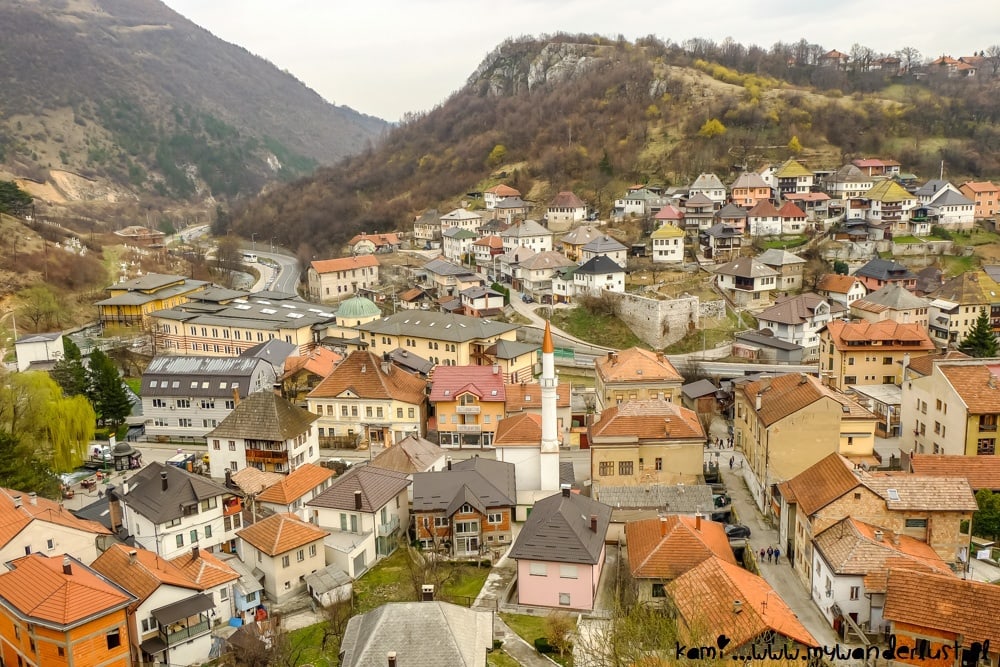
Vegetarian in the Balkans
I must admit being vegetarian in the Balkans is pretty challenging but it’s also slowly changing and many restaurants, especially in more touristy places, offer vegetarian options.
You can often get grilled vegetables and salads which are to die for! Everything is so delicious and so fresh, the taste I remember from my childhood!
Other solid options, which you can almost always count on, are pizzas and risotto which – thanks to the Italian influences – are very often really decent.
And in case of emergency, there are always bakeries everywhere, just look for the “pekara” sign.
And there you can find burek which is one of the best things you can eat in the Balkans! A filo pastry filled with feta cream cheese, cheese, and spinach or potatoes (the second one is my favorite).
The best drink to accompany burek is always a yogurt. You can see lots of people eating this combo directly in the bakery.
The most challenging country for me, food-wise was Serbia, with BiH on the close second place.

Is Balkans safe
Yes! I never felt any danger there and everyone I know can share this opinion.
People are super friendly and will try their best to help you, even when you don’t need it!
Of course in bigger and more popular places you should be more careful – I, for example, lost my passport in Sarajevo (when walking in Bascarsija in the evening, I think I know when that happened but then I didn’t catch anyone opening my backpack so I can’t be sure).
But even with this story, I think Sarajevo and the Balkans are really safe, definitely safer than Western Europe.
And the passport could have been stolen everywhere, just the other day my friend lost the camera in Naples, Italy.

Actually, there is only one really uncomfortable story when, together with my friend Kinga, we arrived in Tuzla, Bosnia and Herzegovina late in the evening and the owner of the guest house we were staying at picked us from the airport.
It was a dark night, we were speeding through Bosnian countryside and suddenly he started telling us his opinions about many subjects, the “highlight” being how Hitler did a really good job with death camps and killing Jewish people…
We were both speechless but he didn’t mind and just kept talking this bullshit. We were both really relieved when we arrived at his guest house and could leave the car but probably even more relieved when we departed early in the morning (me to Travnik, Kinga to Mostar).
Still, it wasn’t really dangerous, just really uncomfortable and awkward.
As you probably know in the 1990s there was a cruel war in the Balkans.
You still see the remnants, especially in Bosnia and Herzegovina, and the tension is still there but it doesn’t affect tourists at all so you don’t need to worry about it.
Just be careful when hiking or going freely in BiH as there are still landmines hidden in the countryside.
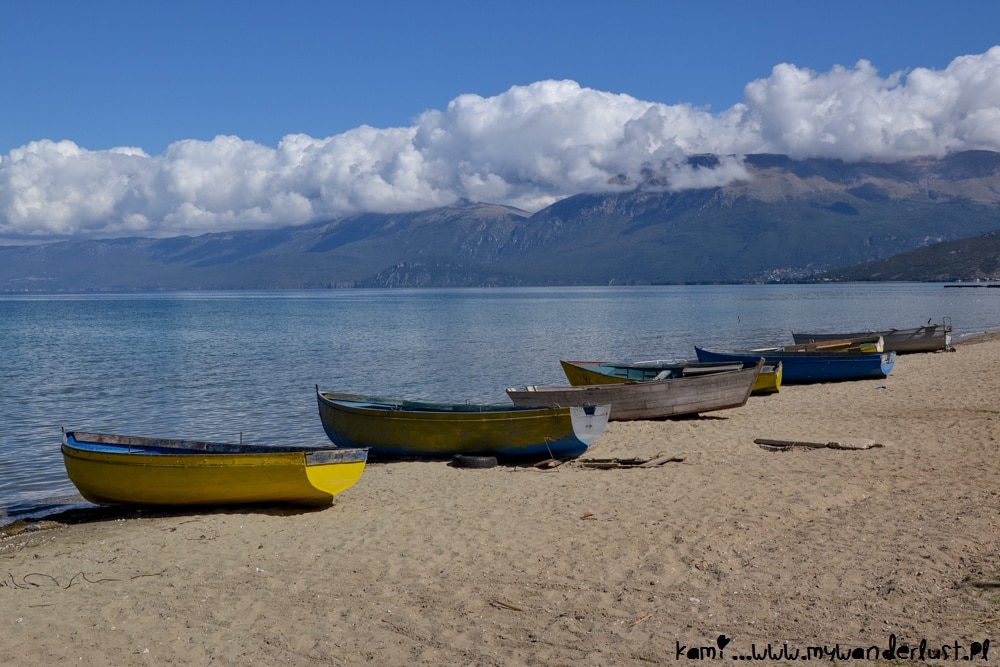
Solo female travel in the Balkans
The majority of my trips to the Balkans were solo (although I often tend to meet Kinga there, who also travels just by herself).
I can’t count how many times I’ve been to the region by now as I usually just go for short trips up to one week, and there are lots of them per year.
But I can’t recall any situation when I was really in danger. I’ve never even been harassed or bothered by anyone!
If you’re a solo traveler and thinking about any Balkan travels there is really nothing to worry about! You can always write to me and ask some specific questions, I will do my best to help!
I also wrote the whole post about solo female travel in the Balkans – click here to read it .

Is Balkans expensive
It all depends on what you want to do and where you want to stay during your Balkan travel but in general, I’d say prices are moderate, definitely cheaper than in Western Europe.
If you travel off season you will have no problems with finding affordable accommodation, in touristy places you should get lunch or dinner for less than 20€, drinks included.
Entrances fee are also rather reasonable, usually a couple of Euros. Unfortunately, Dubrovnik is an exception here as prices are just extraordinary there!
I found North Macedonia and Albania to be the cheapest countries while Croatia is the most expensive one, the rest is simply fine.
The only thing I found rather expensive is transport between the cities I feel like 20 marks between Mostar and Sarajevo or 7€ between Podgorica and Kotor is rather much but maybe I’m just spoiled by the cheap bus connections we get in my part of Europe.
By the way, the useful info you might want to know: Kosovo, Montenegro, and Slovenia use Euro as their currency.

So yes, that’s probably all I know about Balkan travel.
If you have some questions and want to know something I haven’t covered here you’re more than welcome to join my Facebook group about travel in this region – there is always someone who knows answers to all kind of questions! Happy Balkan travels!
Travel Resources
You can find the best accommodation options at Booking . They have many discounts and excellent customer service. Click here to look for the place to stay in the Balkans
Never travel without travel insurance , you never know what might happen and better safe than sorry. You can check the insurance policy for the Balkans here.
I recommend joining organized tours to get to know the place better and to visit more places during your trip. You can find a great selection of tours at Get Your Guide – click here .
For the end I left a few announcements that might interest you:
- If you don’t want to miss new posts and news from me click here to sign to my newsletter! You can also follow me on Bloglovin!
- Join my Facebook group about Eastern Europe, the Balkans and former USSR and connect with fellow travellers and enthusiasts of these regions – just click here!
- I’ve included a few handy links of services and products I personally like and use so you can plan your own trip to the Balkans too. They are often affiliate links. This means I will get a small commission if you book/purchase anything through my links, at no extra costs for you. If you like what you are reading and seeing here and would like to support me and my blog please consider using those links. It would be like getting me a virtual drink that you don’t have to pay for! Thanks!
LIKED IT? PIN THIS POST FOR LATER!
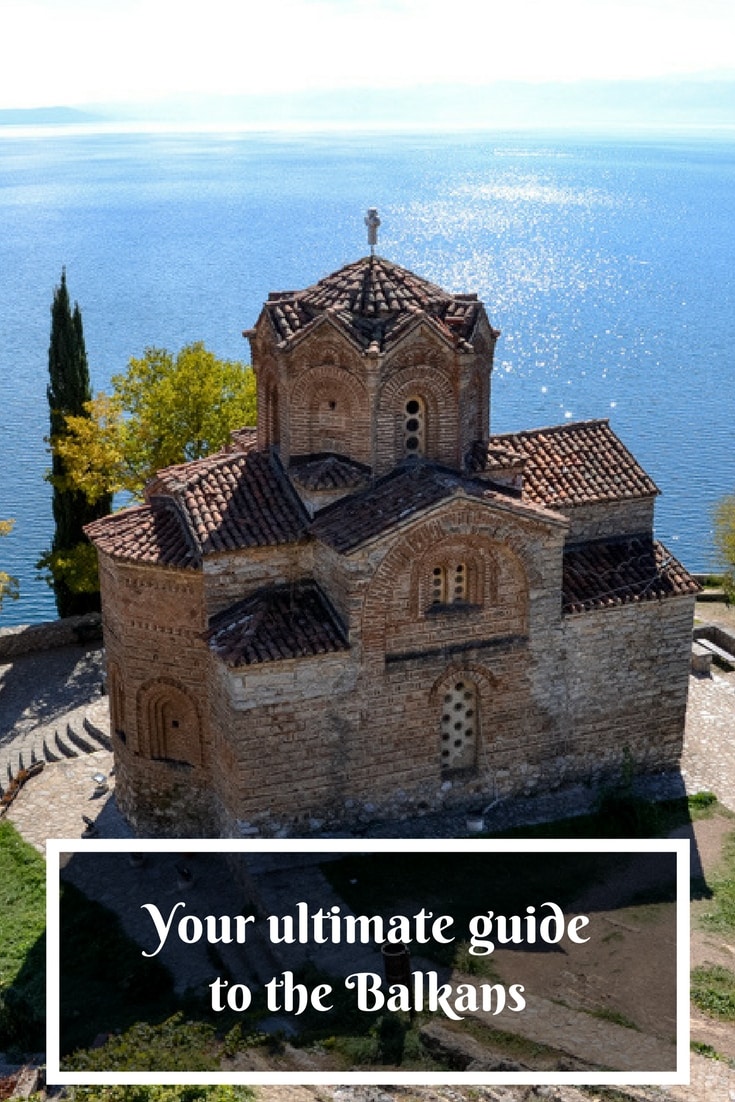
If you enjoyed that post why don't you share it with your friends? That would mean so much to me! Also be sure to join 30.000+ fellow travelers and follow me on Facebook , Twitter , or Instagram for travel updates and even more pictures! If you don't want to miss new posts sign up to my newsletter or follow on Bloglovin !

30 Comments
Kasia & Victor przez świat
Kami, thank you for this detailed and practical guide! I know one day we’ll have to concentrate on Europe and Balkans will be THE place to go. I’ve already store all the information. BTW, great photos! It must be one of those magical places for photo freaks ;)
it is indeed a photo heaven, so many breathtaking places it’s impossible to stop taking pictures! I really hope you will be able to come here soon as it’s simply amazing!
A big thank you Kami, because of reading your posts I am now starting my Balkans trip. I am in Moldova and did the local bus trip to Transnistria. Thanks to your info it was easy. Just a long way from Australia, but worth it.
I’m really glad it was helpful! Hopefully you will enjoy Balkans as much as I do, it’s such an amazing place! Greetings from Sarajevo!
stacjabalkany
Great post. My blog have a mission on exploring Balkans and showing Balkan to the polish people. But Your post is showing that the Balkans are peoples the best destination in Europe for a budget trvellers as we are. The best thing is that new cheap flights from Berlin to Tuzla, Skopje, Podgorica, Nis, Sofia and Bucharest make things now really easy :) and I agree in Croatia, Montenegro, Bosnia and Slovenia buses are really quite expensive – far too expensive. Only in Macedonia i find them cheap. In Serbia they are also quite expensive, but in Serbia you can use trains.
But I’m not so much of a budget traveller anymore ;) I can spend more if I get a good value for that. Balkans are perfect for all kind of travellers, not only budget, it’s just an amazing place to visit!
great post with amazing pictures. thanks for sharing with us.
Great post, very informative! Thank you. I hope to travel to the Balkan’sso your advice and information is wonderful.
Thank you! I hope you will go there soon, it’s so worth it!
Shannon Lee
Hi Kami, I’m Shannon Lee from Singapore would like to find out whether do you know any tour agency in Balkan would conduct a package tour for say 12 days Balkan trip include the most attractive places of interest like what you have introduce.
Hi Shannon Lee! Unfortunately I don’t know any agency but if you would like to travel independently there I can plan the itinerary for you and give you all the info about the visited places. If you’re interested email me at [email protected]
Javi Romero
Thanks Kami for this post! I’m starting my trip to the Balkans in September and I’ll be there around 2 1/2 months. I have taken note of the places that you suggest, and I feel relieved to read that is perfectly safe for a woman to travel that region. Lovely photos
I’m always happy when I can help! If you have any more questions about travelling in the Balkans you’re more than welcome to join my Facebook group (there’re links above in the post and in the sidebar). We have a great community of travelers there who seem to know the answer to every single question :)
Your post is great and really helpful. I have 13 days to plan a trip and I thought being in South it would be warmer but I guess I was wrong.
I would like to go to Greece, Santorini and then navigate to other Balkan countries via bus and finally fly back from say Sofia(to Brussels). During course of my travel I would be more than happy to spend 2 days each in let’s say a Balkan country.
Could you advise this to be a good idea and suggest some places??
Thanks in advance. Romesh [email protected]
To be honest 2 days in each country is really rushed, especially that public transport can be rather limited in the Balkans. I’d skip some places and focus on other more. If you’re flying from Sofia I think Albania, Macedonia, Kosovo and maybe part of Serbia will be enough for you.
We plan on spending about 3 weeks in the Balkans late August to mid September. I know, I know, it’s not the best time of year but it’s the only time we can travel. I appreciate your list of places but maybe you can help us trim it down for our trip. For a little back ground on what we like, we spent 2 weeks at Lake Bohinj (one of our favorite places in the world) and didn’t get bored. (We didn’t really care for Bovec in comparison.) In Croatia, we loved Hvar and Korcula. Based on your list of suggestions, I’m thinking of sticking to Montenegro and Kosovo because we love both beaches and mountains. We love hiking and prefer small towns to cities and we don’t like spending a ton of time on buses, preferring slow travel to changing locations all the time. Is it easy to travel between these two countries? What would be your top picks for towns to base ourselves? Thanks!!
I think you can focus on Montenegro and Bosnia and Herzegovina, you can include Kosovo or Montenegro too if you have time. These two countries are neighbors and while connections aren’t the best, they are existing and traveling around is doable. Feel free to join my Facebook group about traveling in the Balkans (link is in the sidebar and in this post), I’m sure the member will be happy to help you too. Have a good trip!
James Holman
Super! Podziekujemy!….I feel more prepared than before I stumbled upon your excellent post.
I’m glad you liked it !
Great post and has got us very excited. But our only language is English so I suspect that will have a major effect on our communication. We have used Google translate to get us through Russia and hoping that should help in the Balkans. Also, we have found that the younger people in Russia do have reasonable English and we often picked on them to help us out. Are you able to provide some feedback on communication please.
I find it much easier with English in the Balkans than in Russia, to be honest. Not only young people can speak it well but also older generation often knows it (or German). And in the worst case scenario there is google translate :)
Nice blog simple English explain nicely from 17 aug to 30 sept i am going to travel in balcans already plan started from Greece end in Slovenia Thanks
Have a great trip!
Nice blog. As for security, the Balkans are no less safe than the EU.
Thank you. Ans you are right.
Ramesh Krishna
Really enjoyed your coverage, very informative and useful.Thanks a lot.
Ivan Caperuto
I’m planning a trip to the balkans next year, I must say, I still have to finish reading, but from what I’ve already read, this guid is great, I’ll add questions as I finish the article!
Thanks! You are also more than welcome to join my FB group about traveling in the Balkans and ask your questions there, here’s the link https://www.facebook.com/groups/121053081614593 It’s a great community of fellow travelers who seem to know everything :)
Leave a Reply Cancel Reply
Sign me up for the newsletter!
Let’s become friends!
Join me on Facebook for even more travel updates!
Kami and the rest of the world
APRIL SALE: Discover and book at up to 60% off!
Balkans Tours & Trips
Find the right adventure for you through Balkans. We've got 3095 tours going to Balkans, starting from just one day in length, and the longest tour is 42 days. The most popular month to go is September, which has the highest number of tour departures.
250+ Balkans tour packages with 16,915 reviews
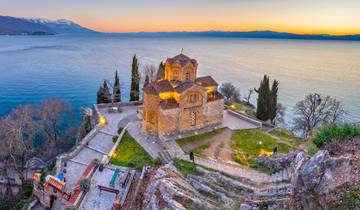
- In-depth Cultural
- Coach / Bus
- Christmas & New Year
Balkans Uncovered Luxury Tour
My experience with this tour was great. The hotels were tops. Our tour guide very attentive and knowledgeable. Our bus driver, Barry, was the best. The itinerary is very busy and a bit tight. I would suggest spending less time at Dubrovnik and more at Kotor. Our pre-fix meals were good, but maybe offer a choice of two or three entrees? Overall, it was a very enjoyable trip!
- £100 deposit on some dates Some departure dates offer you the chance to book this tour with a lower deposit.

All About Balkans (4 Star Hotels)
The sights were amazing and the tour guides (both Simon Simonovic and Sofia) were excellent! The group of 42 got along perfectly. We enjoyed the diversity as we shared our adventures and experiences freely.

Balkan Discovery (4 Star Hotels)
Excellent accommodation excellent tour Guide Bayan.. Bus driver excellent 10/10

Balkan Kaleidoscope
Full of history and beautiful scenery.
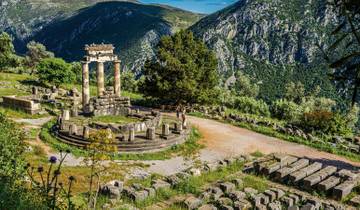
Tour from Athens to Dubrovnik or Split: 7 Balkan countries in 14 days
It was excellent! Our guide Daniel was the best. Daniel made the whole trip fun, stress free and he was very knowledgeable. The accomodation was lovely and very central. The countries we visited were beautiful but having a guide made it 100% better. We ate incredible local foods and had a great experience with a guide local to the Balkans. Couldn’t recommend the tour enough!
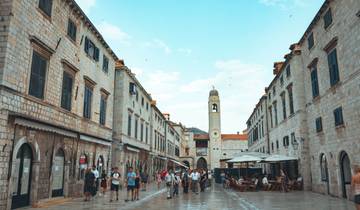
Balkan Explorer
Tour Leader: Filip Filip is an outstanding tour guide and a really great guy. Over our 16 day tour, I found him to be kind, funny, tremendously helpful, and incredibly knowledgeable. Coming into this tour, I knew very little about the Balkans beyond the general idea that bad things had happened there in the 90's. I learned a tremendous amount from Filip about the rich and complex history, culture, and geopolitics of the region. His knowledge is really something, and goes far beyond the sort of "dates and factoids" that I came into the tour expecting, and his delivery is funny, engaging, and shows a deep level of understanding. Filip was always there for everyone on the tour, be it a helping hand getting off the bus, tracking down cold medication (on a national holiday when every single pharmacy in the entire country was closed), or running back to the hotel to sort out a passengers luggage issue. To say nothing of his ability to wrangle and organize 48 different people through 70+ stops in 10 different countries over 16 days without any incidents, which in-and-of-itself is quite a feat. He was kind, courteous, and kept everything running smoothly. On a personal note, beyond his duties as the tour leader, my wife and I immensely enjoyed getting to know Filip, he already feels very much like an old friend. TLDR - Filip is an amazing tour guide, a really cool guy, and I hope to travel with him again. Driver: Kleanthis Kleanthis is a man of few words, but the interactions I did have with him were warm and genuine. Mostly, I think, he was focused on getting us where we were going safely and on time, which was quit an accomplishment. I'd say about half of the driving on the trip took place on narrow one and two lane roads that switchback high up into the mountains, with nothing but a low guardrail the bus and sheer drop offs, and some of the countries visited on this tour (heres looking at you Albania) seem to have little to no rules governing traffic. Kleanthis navigated all of those streets with a skilled ease that made for a very smooth journey. Tour: Balkan Explorer by Expat Explorer This was my first tour with Expat, and it was an amazing look at one of the grungier sides of the European continent, which is exactly what I was looking for. I feel like in this day and age so many places have become over-touristed, to the point where they are Disneyland versions of themselves. On this tour we got to visit places that that have been inhabited for thousands of years, cities built on history, we ate at restaurants among Greek, Roman, and Ottoman ruins, sipped drinks on sidewalks surrounded by locals. These places had the historicity of museums, but (for the most part) haven't yet become over-touristed and lost the feeling of being places where real people live. That isn't to say that there aren't other tourists, cities like Budapest and Dubrovnik are very popular destinations, but my wife and i really fell in love with some of the off-the-beaten track places we visited on the tour. I couldn't help but read some of the negative reviews on this site, and it seems like a lot of people feel this tour is rushed. You certainly do cover a lot of ground, there are long hours of driving and a fair amount of walking to do, but I feel like that's a good thing. On a tour like this, you get to experience a lot of different places and cultures in a fairly short amount of time, giving you a preview of places you might want to return to. My wife and I absolutely fell in love with the small city of Ohrid in North Macedonia, and very much look forward to visiting there again for a longer stay. Overall, I'd say if you're looking for a relaxed, sterilized, and/or handicap accessible vacation this probably isn't the tour for you, but if you want to experience a really cool part of the world, I'd highly recommend it.
- 10% deposit on some dates Some departure dates offer you the chance to book this tour with a lower deposit.

- Sightseeing
Tour from Athens to Belgrade: 7 Balkan countries in 14 days
Wonderful tour of Balkans! Montenegro, Bosnia, Kosovo, and Albania were new to us. Each day was well planned with interesting sites to explore: old historic centers/ museums/ castles/ churches/ mosques/ markets. Hotels were well located and offered delicious breakfasts. Fabio our guide and driver was excellent and taught us the history of all the sights that we visited. We will recommend this tour to family and friends.

Zagreb to Athens: Adriatic & Ancient Capitals
Excellent tour with fantastic tour guide (Noddy). It's a tour aimed at younger (under 40) travellers, so the accommodation is mainly hostels and the pace is pretty fast but we still managed to spend a reasonable amount of time in each place. There was a good balance of history/culture and activities, and there is a lot of flexibility with the optional activities and free time to spend more or less time at the beach, museums, etc. Highly recommended as an introduction to the Balkans!

Western Balkans Uncovered
I did not know what to expect and was pleased to find it all very interesting and different from our North American standards. The kindness of the people toward tourists was wonderful to experience especially given the difficult history all of the countries visited had gone through. Food and drink were very good.
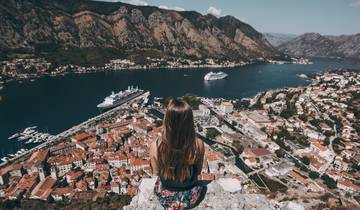
Dubrovnik to Athens
Tour leader Dora was awesome. Very adaptable. Provided options on transport to save time & inconvenience. Gave us information on each place visited but didn't overload us like school children. Provided suggestions on places to visit, restaurants, etc during free time. Hotels & guest houses all very good. Would have liked to stay 2 nights in Berat instead of 1. That is our 2nd Intrepid tour, will definitely keep recommending to friends. Linda Arlaud & Rodney Barnes
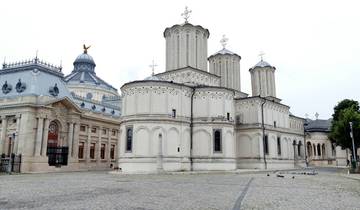
Balkan Adventure (14 Days)
An excellent trip with an outstanding tour director (Sarah Rossi) and highly skilled bus driver (Bruno). Plenty of option excursion choices along with very good included tours with knowledgeable local guides. The only down side were two of the hotels - Hotel Marinela, Sofia Bulgaria, and Mercure Belgrade Excelsior - that were in desperate need of refurbishment not to mention functioning air conditioning and bathroom cleaning. Otherwise, great trip.
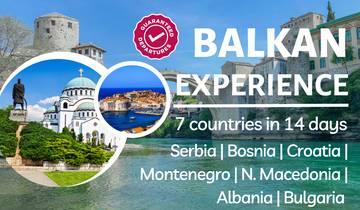
Balkan Experience – seven countries in two weeks - SMALL GROUP
I am Dr. Girija Shanker from Pune India. Visiting Balkans had been a long treasured dream. My wife and I are well travelled, but Balkans was held in abeyance for Lack of Confidence. Fortunately we connected with Victor tours. Mr. Aleksandar from Bucharest Serbia, he not only provided us confidence and Assurance but also a worthy solution to Visit Six Countries, starting from Romania, Serbia, Croatia, Montenegro, Albania and Macedonia from Romania and completing the tour in Skopje Macedonia. It was a 23 days tour by car from Airport to Airport in total comfort. Victor Tours team members Mr. Milos and Mr. Ivan were extremely well informed Gentlemen they drove the car perfectly and shared their treasure trove of information while visiting places of Interest en route. Mr. Aleksandar and Mr. Ivan deserve a special mention and commendation for planning and executing this MOST memorable trip. Today we have reached home with FOND MEMORIES, Trust Mr. Aleksander of Victor tours, he is indeed a wonderful person and their custom made six countries tour planned and executed flawlessly by him, has been and amazing experience for us.

Balkan Dreams end Bulgaria
Good trip to get a feel for the region and an appreciation for the uniqueness of each of the nations you visit. Hotels were very good for the most part. Only one looked like a carryover from the bad old days. Breakfasts and dinners were typically quite good Places visited were very good. Dubrovnik was not to be missed. Mountain top monastery in Greece was truly spectacular. Albania was surprisingly modern in the city center of the capital Needed an additional day in Sarajevo. With the assassination, the Olympics and the siege of the 90's, there is too much history to only have a single day there. Biggest problem was the amount of time in transit on the bus compared to the time seeing the sights we drove to. Interesting concept in the way the company recombines groups at each point to customize the experience desired by each of the travelers. Does mean that you may be travelling with totally new companions and guides each couple of days. Our guide for most of the time was Victor. Relatively young and new to the business. Fluent in Bulgarian, Spanish and English. Struck a nice balance in furnishing information about the places we visited without being over-bearing with it. Had the ability to keep things organized and get what we needed at various points. Street smart and I'm sure will get better with his knowledge of the region as time goes on. I'd bet he'll be really good at this down the road.

Dubrovnik to Athens: Beachfronts & Fortresses
This trip was absolutely amazing! And it was all due to our amazing guide - he was, hands down, the most knowledgeable and charismatic tour guide a person could have dreamed up! He not only made it possible for our diverse group to get to know one another, he introduced us to experiences, places and persons that a local would only know. He was meticulously organized down to a "T", arranged for upgrades at his own expense, and left the group with little to no worries about where/what would be done next. If I could book tours with this guide solely - I would. In fact, for my next adventure I do plan on booking with G Adventures and requesting his tour.
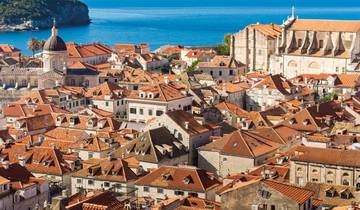
Treasures of the Balkans (Classic, 16 Days)
- £130 deposit on some dates Some departure dates offer you the chance to book this tour with a lower deposit.
What people love about Balkans Tours
Itinerary - Great. Good mix of hotspots like city capitals, and some lesser known places like smaller towns and hidden gems. Guide - Excellent, 10 stars to both of my guides this trip. Organization - Everything went extremely smoothly, also in part to other travelers being amazing.
This was my first time booking through TourRadar and I am NOT disappointed. My son and I had an amazing adventure and I will definitely recommend and be using TourRadar again. Our Balkan Discovery tour was well organized. Our guide Vijor was extremely knowledgeable and friendly, as was our driver.
- Fully Guided (1907)
- Family (1567)
- Personalized (1285)
- In-depth Cultural (924)
- Private (657)
- Self-Guided (341)
- Sailing (315)
- Active (272)
- Hiking & Trekking (247)
- River Cruise (176)
- Coach / Bus (171)
- Bicycle (163)
- Ocean Cruise (104)
- Custom (91)
- Food & Culinary (55)
- Intl. Flights Included (48)
- Self Drive (39)
- Health, Spa & Wellness (13)
- Motorcycle Ride (13)
- Festival & Events (9)
- Honeymoon (9)
- Jeep & 4WD (7)
- Educational (5)
- Romantic (5)
Destinations
- Greece and Turkey (95)
- Croatia and Slovenia (95)
- Bulgaria and Romania (47)
- Albania and Montenegro (36)
- Croatia and Greece (33)
- Bosnia, Croatia and Slovenia (31)
- Croatia and Italy (30)
- Croatia and Serbia (15)
- Croatia and Hungary (10)
- Greece and Italy (6)
- Greece tours (1105)
- Croatia tours (535)
- Romania tours (286)
- Albania tours (160)
- Slovenia tours (123)
- Bosnia tours (90)
- Bulgaria tours (84)
- Montenegro tours (51)
- Macedonia tours (28)
- Serbia tours (25)
Travel Styles
- Small Group (1073)
- Budget (336)
- Luxury (192)
- Singles and Solo (1982)
- For Couples (580)
- Young Adults (82)
- Seniors (970)
- 3 Day Tours (234)
- 7 Day Tours (550)
- 10 Day Tours (1013)
- 2 Week Tours (317)
- 3 Week Tours (160)
- 4 Week Tours (17)
- Spring 2024 (1684)
- Summer 2024 (2020)
- Fall / Autumn 2024 (2042)
- Winter 2024 / 2025 (617)
- Spring 2025 (898)
- Summer 2025 (830)
- Fall / Autumn 2025 (835)
- Winter 2025 / 2026 (351)
- April 2024 (1127)
- May 2024 (1798)
- June 2024 (1904)
- July 2024 (1810)
- August 2024 (1827)
- September 2024 (1951)
- October 2024 (1671)
- November 2024 (706)
- December 2024 (588)
- January 2025 (477)
- February 2025 (466)
- March 2025 (560)
- April 2025 (680)
- May 2025 (812)
- June 2025 (799)
- July 2025 (768)
- August 2025 (774)
- September 2025 (815)
- October 2025 (679)
- November 2025 (423)
Wander-Lush
The Balkans
He who was lucky enough to wake up this morning in Belgrade shouldn’t ask for anything more in life. More than that would be immodest. Duško Radović
Caught between Western and Eastern Europe, the Balkans combines the best of both worlds. In traveller’s terms, this is probably the most underrated (and undervalued) part of the continent.
Why you’ll love The Balkans
Geographically, ‘the Balkans’ is the 12 countries that share the Balkan Peninsula, including the six ex-Yugoslavia republics (Slovenia, Croatia, Bosnia and Herzegovina, Serbia, Montenegro and North Macedonia), plus Kosovo, Romania, Bulgaria, Turkey, Greece and Albania. Much of their history is shared – yet when you look beneath the surface, you’ll see that each country is completely distinct.
The Balkans countries each boast national parks, old towns and cosmopolitan cities to rival any of their more popular neighbours. All with a much more palatable price tag and in most cases, far fewer other tourists to share with. On a practical note, the region is small and well-connected, making it easy to fit a lot into a short itinerary.
I spent more than 6 months travelling around the Balkans by bus, train and car, with a minimum of 14 days in each country and at least a week in each of the capitals.
Explore the Balkans by country
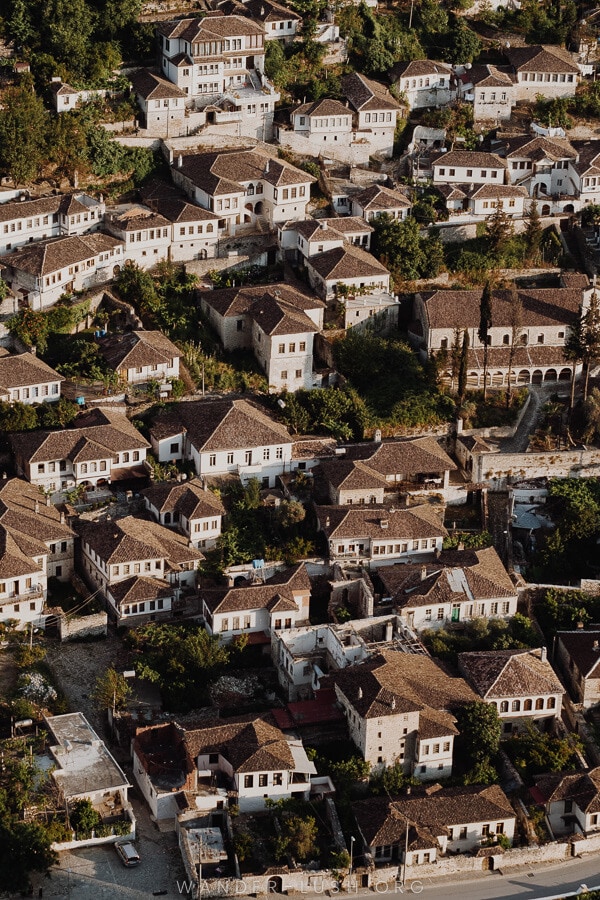
northern Greece
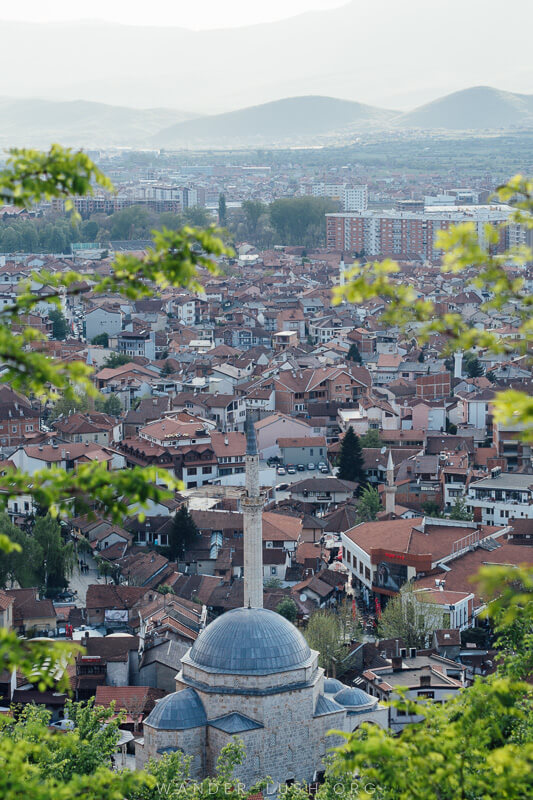
N Macedonia
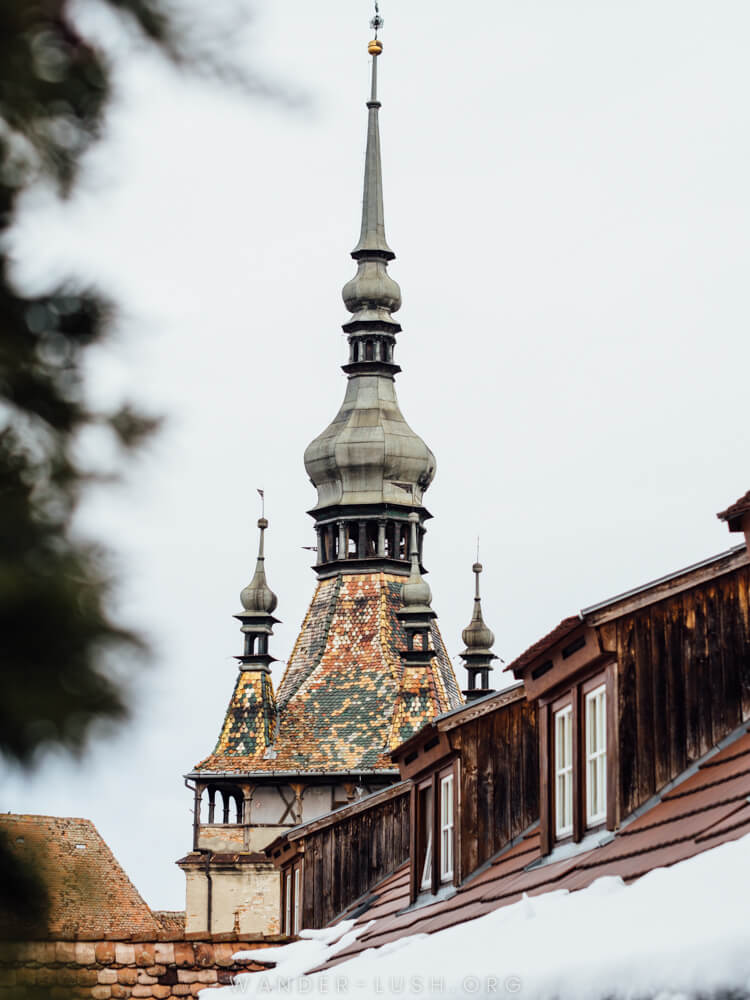
Things to do in the Balkans
A journey through the Balkans is like 12 trips for the price of one. In the space of a day, you can travel from an Illyrian town that’s as old as the hills to Europe’s youngest country , Kosovo.
If, like me, you grew up in the 1990s, your preconceptions of the Balkans were probably shaped by the six-o’clock news. A lot has changed in the intervening years, and the region is now an overwhelmingly safe place for travellers. From the scars of past conflicts spring the green shoots of creativity, most visible in the vibrant cities of Tirana , Pristina and Zagreb .
Trace the region’s omnipresent Ottoman influence all the way from the Old Bazaar of Skopje , the minarets of Bulgaria and the coffee houses of Sarajevo back to its point of origin in Istanbul . Be prepared to adopt a steady diet of cevapi and burek – hearty, meaty food, as you’ll see, is one thing all of the Balkan countries can agree on.
From the pink churches of fairytale-like Ljubljana and the iconic half-moon Stari Most bridge in Mostar , all the way to 50-shades-of-cement Belgrade , the nerve centre of the old Yugoslavia, a journey through the land of spomeniks must be laced with either strong coffee, wine or a shot of rakia , depending on the time of day.
Incredible hiking can be found in the region’s national parks, most notably Albania’s Accursed Mountains , Croatia’s Krka , Montenegro’s Durmitor, and Slovenia’s Triglav that envelops the iconic Lake Bled . Take a boat out on the marshy Lake Skadar , the largest on the peninsula, or through Romania’s Danube Delta .
Be transported back to the time of Saxon craft guilds as you wander through Transylvania’s fortified towns . Hop between the walled Venetian cities that stud the Adriatic Coast – from Croatian Istria to Dubrovnik all the way to the Bay of Kotor . Trust me when I tell you that each one is more charming than the last.
Conquer the steep cobbled streets of the UNESCO-Listed old towns in Berat and Gjirokaster , then veg out under a parasol on the Albanian Riviera .
Recent posts from the Balkans
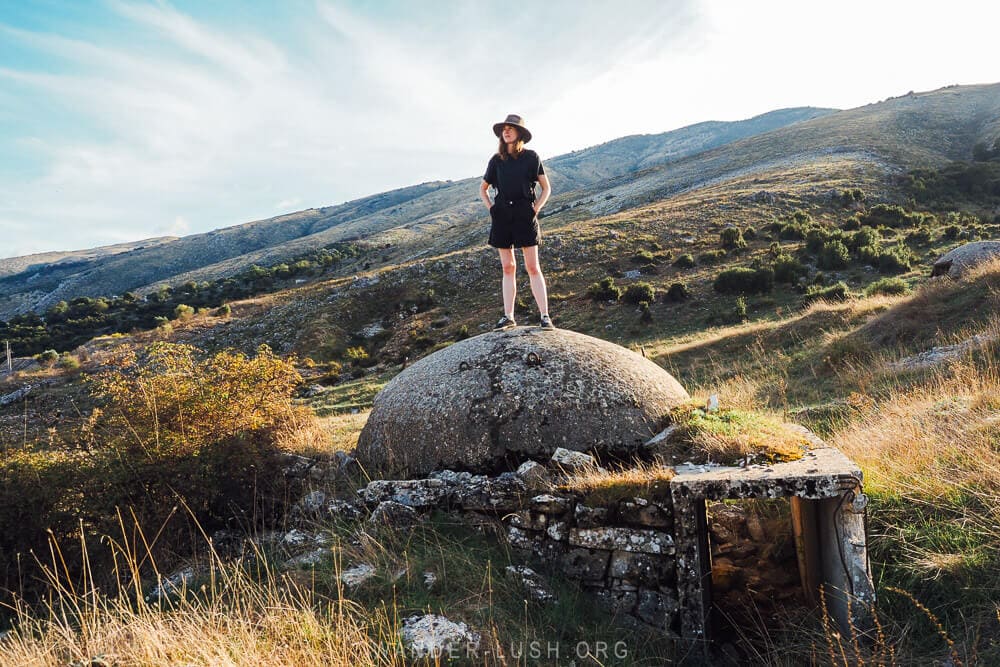
The Ultimate Albania Road Trip Itinerary — From the Riviera to the Vjosa & Lake Ohrid in 2 Weeks
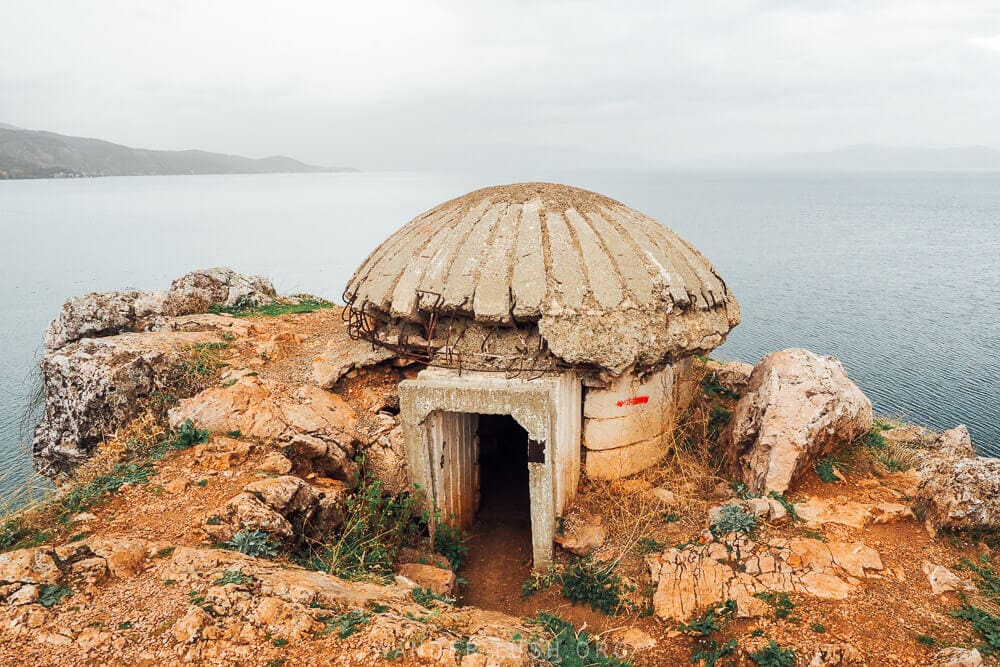
Guide to Lin, an Ancient Village on the Albanian Side of Lake Ohrid

Guide to Leskovik, Albania: Wine Country & the Melesin Distillery

Guide to Upper Qeparo, a Traditional Village in Southern Albania
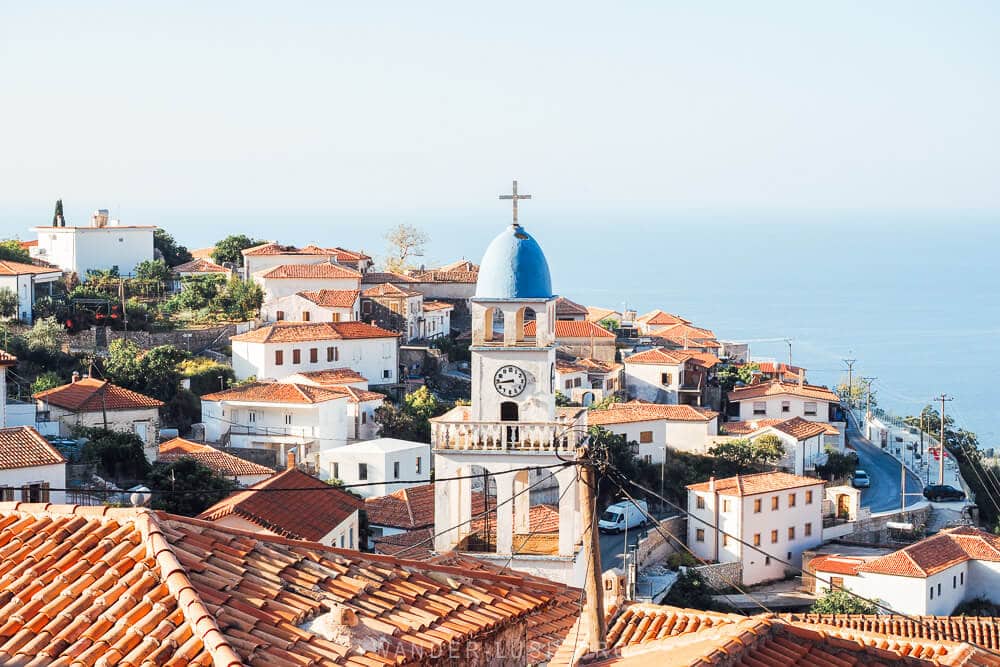
Guide to Dhermi, the Loveliest Village on the Albanian Riviera
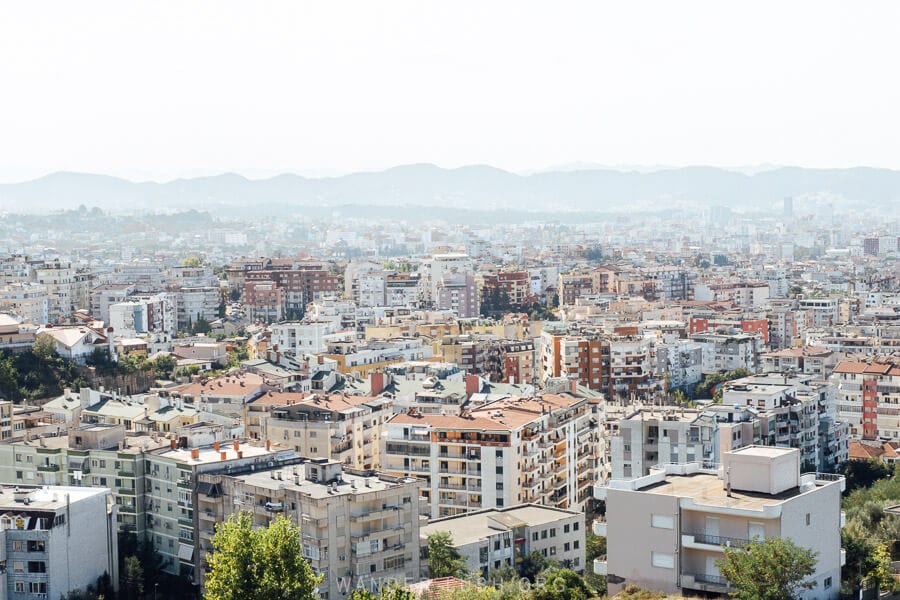
How to Get From Tirana Airport to the City Centre (Updated for 2024)
Balkans travel essentials.
Ready to start planning your trip to the Balkans? Get started with my favourite booking tools and resources.
Please note: Some of these links are affiliate links, meaning I may earn a commission if you make a purchase by clicking a link (at no extra cost to you). Learn more .
find flights
Apply for a visa, buy travel insurance, book a hotel, buy bus/train tickets, book a day trip, find a food tour.
- Work with me
- Privacy policy

- Years in review
- United Kingdom
- Bosnia & Herzegovina
- North Macedonia
- Philippines
- South Korea
- South Africa
- Africa Overlanding
- Central America
- New Zealand
- Solo Travel
- Budget travel
- Travel tips
- Travel itineraries
- Hidden gems
- Bucket list
- Travel resources
- Digital nomadism
- Blogging tips
- Start a travel blog
Balkans Itinerary For 2-8 Weeks (No Car Needed)
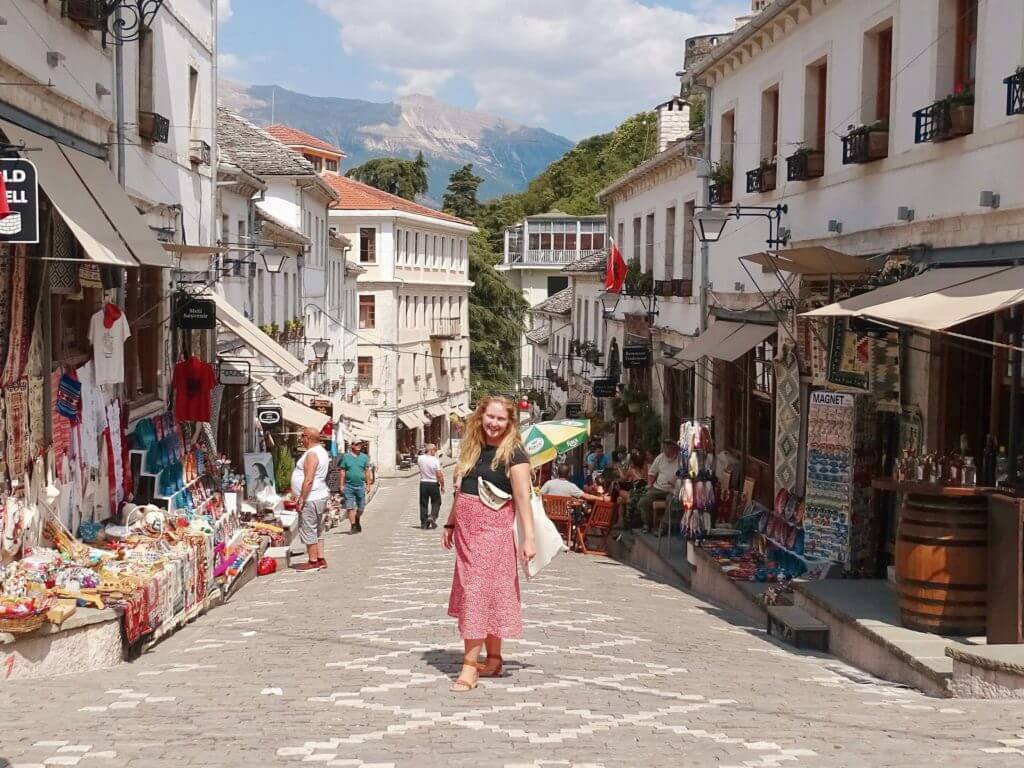
Table of Contents
This post may contain affiliate links to things like tours, hotels, Amazon associates and products. These help me earn a small commission at no additional charge to you.
So, you’re visiting the Balkans? I recently took this exact Balkan itinerary which took me around 2 months. Whether or not you have time for the whole thing, I hope this will give you a good idea of where to go, how to get around and how long to spend in each location. Before we start, I’ll define the countries I’ll be talking about:
- Bosnia & Herzegovina
- Note – countries like Romania , Slovenia , Turkey and Greece are also often included in the Balkans definition but I’m not including them in this particular itinerary.
BALKANS ESSENTIALS Accommodation: Booking.com / Hostelworld Getting there: flight ( Skyscanner ), bus Activities: GetYourGuide / Viator Getting around: car /bus
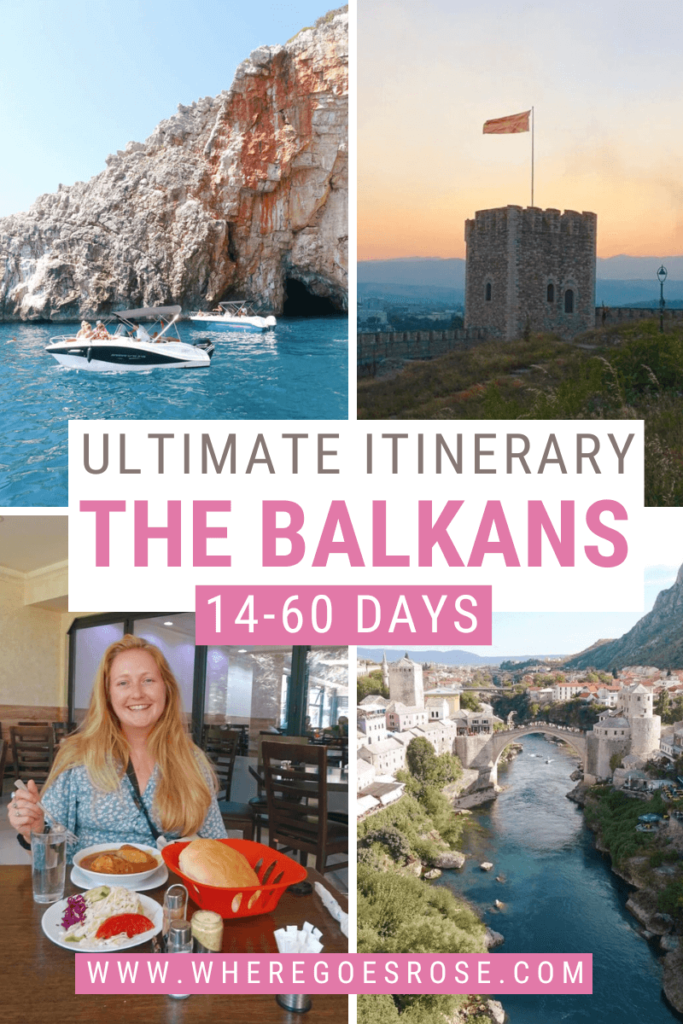
Suggested Balkan itineraries
Here are a few options for different time frames and destinations.
Holiday hotspot itinerary for 2 weeks
- Croatia – 1 week following my Croatia itinerary
- Montenegro – 1 week following my Montenegro itinerary
Off-the-beaten-path Balkans itinerary for 1 month
- Serbia – 3 days
- Kosovo – 5 days
- North Macedonia – 5 days
- Albania – 10 days
- Bosnia & Herzegovina – 7 days.
The complete one (up to 2 months)
- Bulgaria – 3-5 days
- Albania – up to 2 weeks
Montenegro – 1 week
- Bosnia & Herzegovina – 5 days
- Croatia – 1-2 weeks.
Watch out for overspending in Croatia & Montenegro! They’re more than twice the price of Albania and the other cheaper Balkan countries.
Let’s follow my complete Balkans itinerary for up to 2 months. However long you have, you can refer to this for things to do, what to eat & how to get around!
How to get around the Balkans
By car – this isn’t the option I took but I know it’s a common one with all freedom to you. It would be especially useful in countries like Montenegro where many attractions are in the countryside without public transport connections. I recommend Rentalcars.com for hiring vehicles in the Balkans and around the world. For a surcharge, you can choose different locations for pick up and drop off. By bus – I usually rely on Flixbus in Europe but it doesn’t serve the whole Balkan region, just certain capitals like Belgrade, Sarajevo and Podgorica. For other locations, check busticket4me , Getbybus or simply buy your tickets at the station (this is often cheaper). The Balkans are a bit old-fashioned about booking things online! Tip – have some of the country’s currency remaining when leaving. Often there’s a fee to use the bus station and a luggage fee. Carrying some Euros even in non-Euro countries is a good idea.
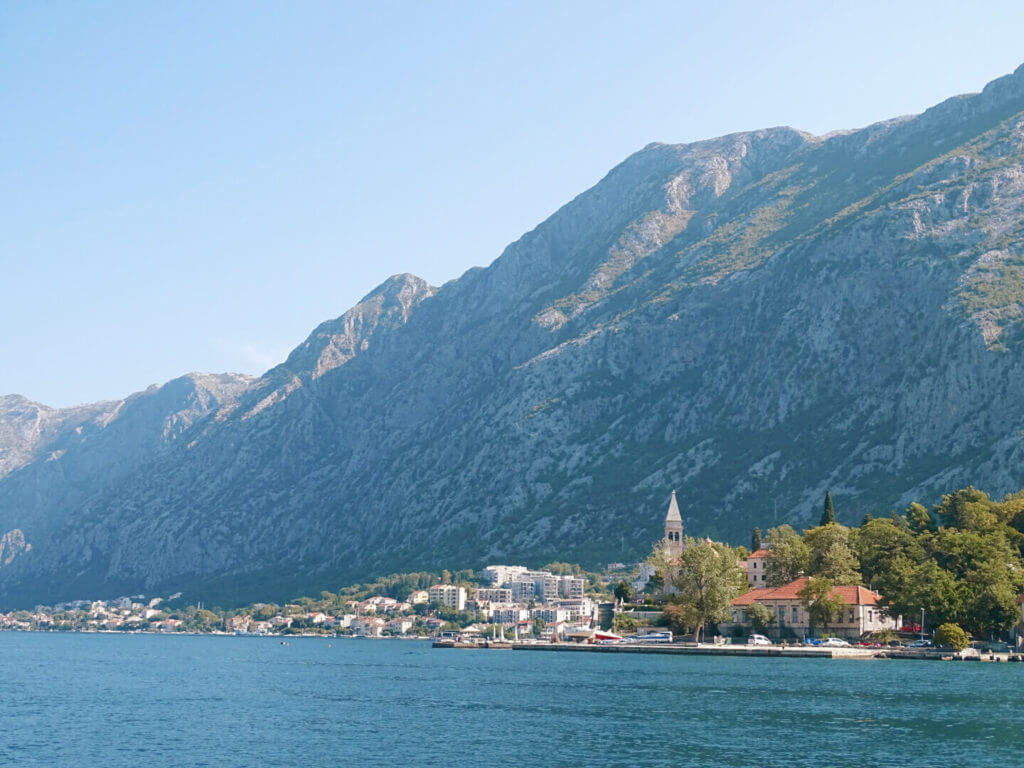
Best season to visit the Balkans
Summer (July & August) : this is the most popular time to visit the Balkans as well as the hottest. During my summer 2022 trip, it was often 40 degrees Celcius. If you hate the heat, it might not be the season for you. I would avoid visiting Croatia in this season regardless of the weather simply because it’s so expensive and crowded. Shoulder season: Spring (April-June) and autumn (Sept-Oct) are great times to visit with milder temperatures and cheaper prices than the summer. Winter (Nov-Feb) : if you can handle the cold and often snow, it’s not the worst idea to visit the Balkans in winter. You’ll get great prices and see attractions without the crowds. However, you won’t be able to enjoy the wonderful beaches of Albania, Montenegro and Croatia.
Belgrade, Serbia – 1-2 Days
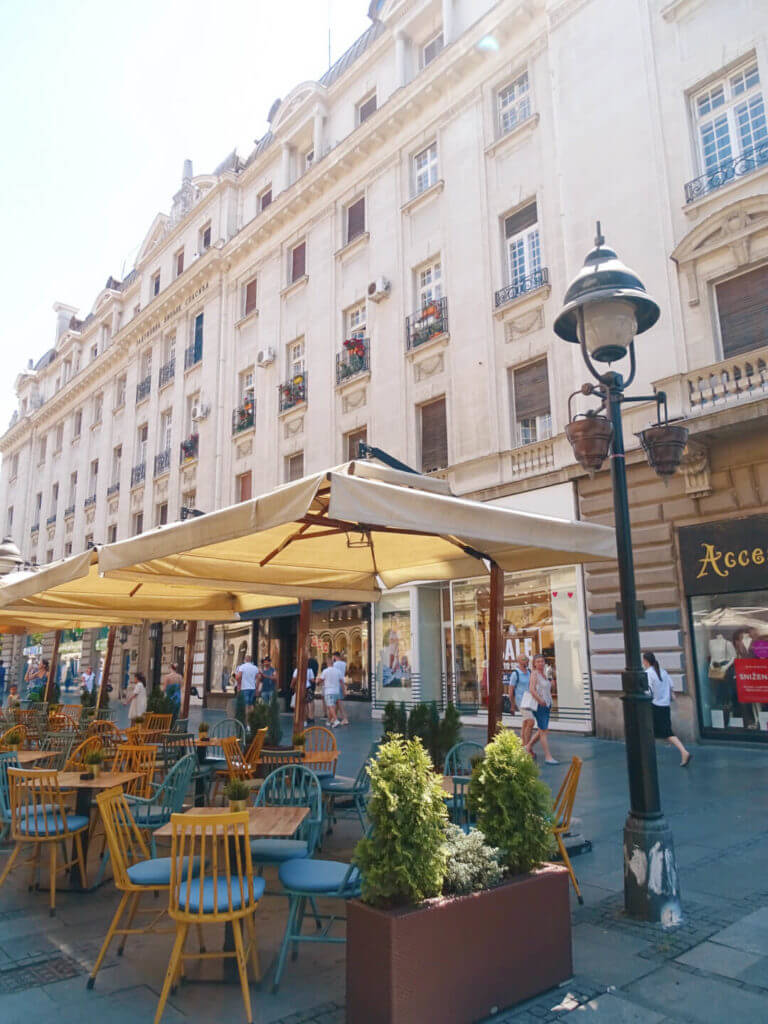
Belgrade was the first stop of my Balkans itinerary. Although I initially didn’t fall in love with the city centre due to the chain stores and touristic prices, when I started exploring cool neighbourhoods like Skadarlija , I was hooked on the beautiful city with lots of quirky cafes and bars. Especially during the summer, it’s an outdoorsy city where you can tell people enjoy themselves. From authentic Serbian food to fine dining, international cuisine like sushi and tacos, plus third-wave coffee and vegan food, there’s a range of options set alongside wide, leafy streets.
Read next: is Belgrade worth visiting?
Things to do in Belgrade:
- Take the free walking tour
- Sightsee in Republic Square
- Visit Skadarlija, the Bohemian quarter
- Wander in Jevremovac Botanical Gardens
- Go inside the impressive Church of Saint Sava
- Feel pensive at the Modern Art Museum
- Soak up views from the Fortress in Kalemegdan Park
- Learn at the Yugoslavia Museum and Nikola Tesla Museum
- Browse at Akademija Book Store.
Read next: things to do see and do in Belgrade, Serbia
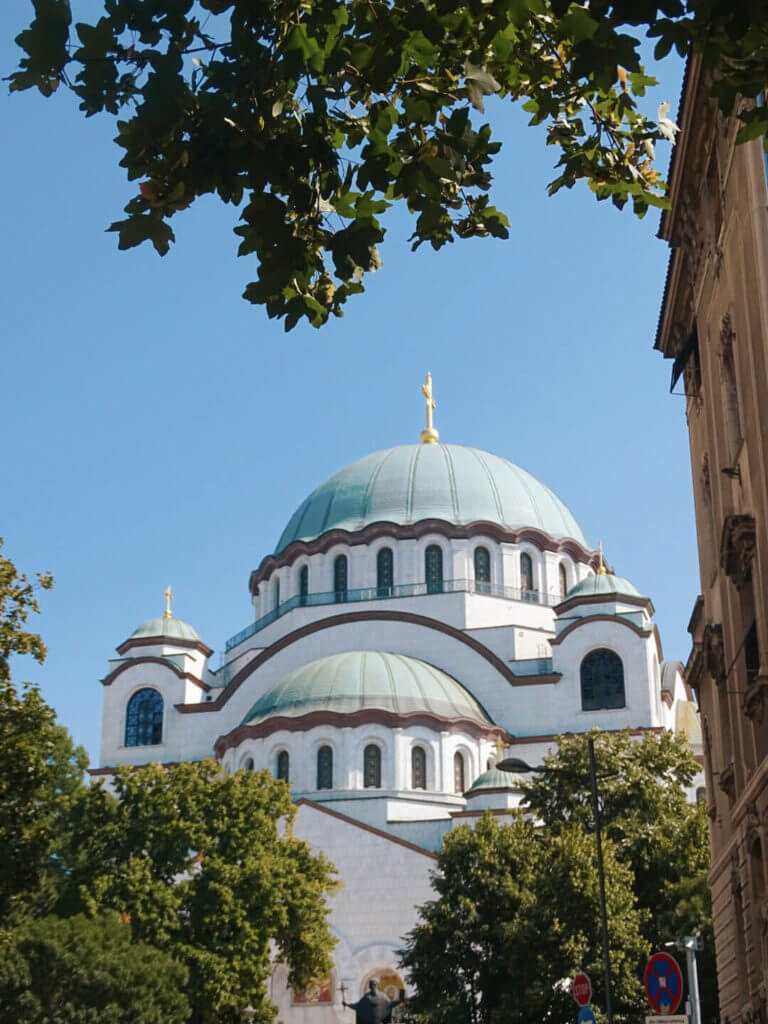
Getting around Belgrade:
- Bus – your best bet on a budget. They’re clean and efficient. Tickets cost around 100 Dinar (€1), paid by tapping your bank card on the screens inside.
- Taxi – the drivers at the bus station tried to rip me off and I hear this is common if you’re not speaking Serbian. There’s one taxi app, CarGo, which is more affordable but still not especially cheap (600 Dinar/€5 for a 10-minute journey).
Day trip to Novi Sad
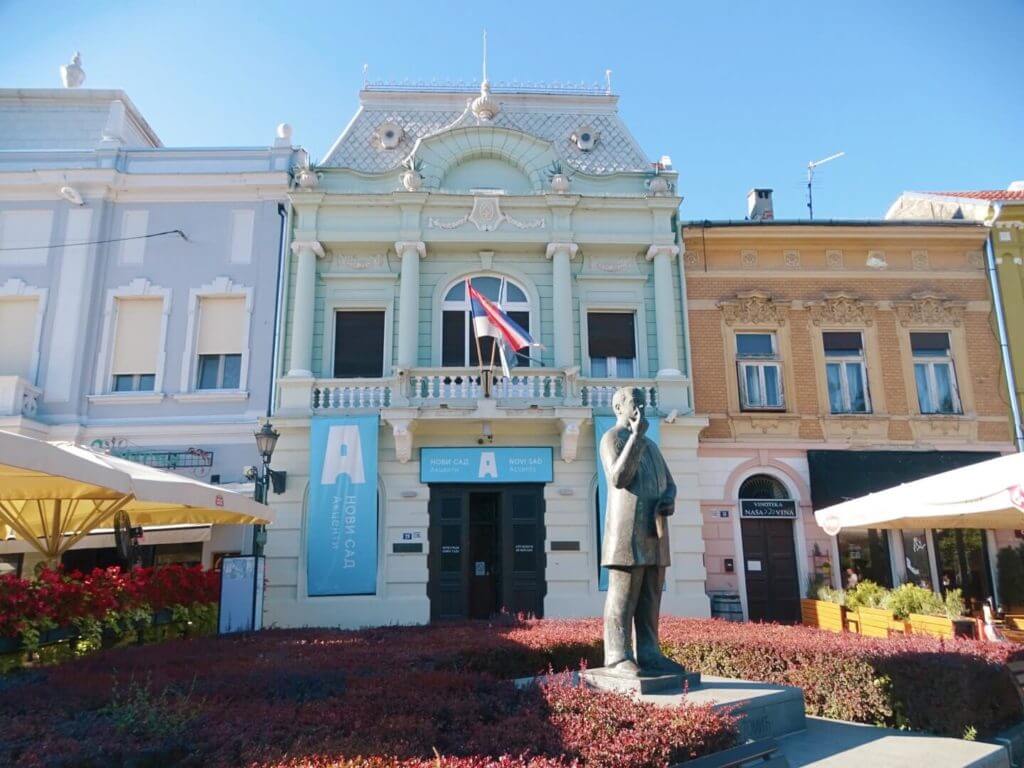
If you take one day trip from Belgrade, it should be to Novi Sad. The main attraction is Novi Sad Fortress , a short walk from the city centre. On the way there and back, you’ll cross a river with beaches where you can stop for a dip. Travel time from Belgrade : 30 minutes on the fast train / 1 hour on the slow train or by car. Factor in 20 minutes to ride bus #41 to Belgrade Central Station which, misleadingly, is not in the city centre!
Pristina, Kosovo – 1-2 Days
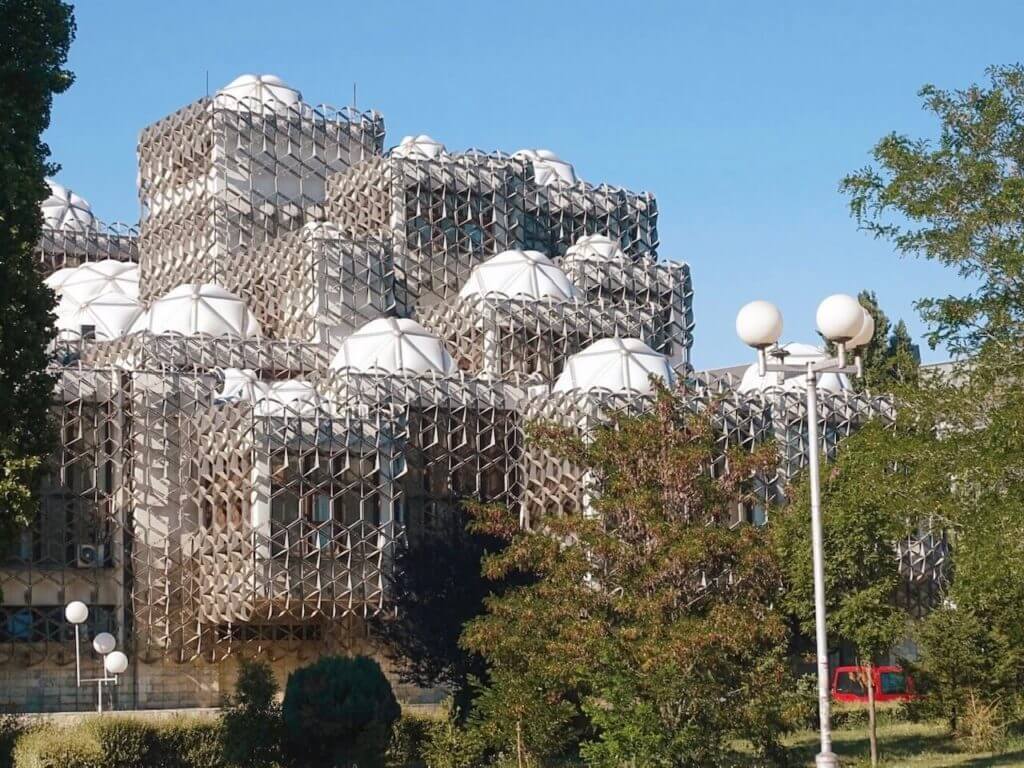
Pristina is a small but captivating city that makes a great addition to any Balkans itinerary thanks to its fantastic cafe culture and quirky architecture that divides the masses. Things to do in Pristina:
- Find the Newborn sign celebrating Kosovo being the newest country in Europe
- Make up your own mind on the National University Library
- Climb the bell tower of Mother Theresa Cathedral
- Soak up the atmosphere on MT Boulevard
- Spot street art
- Visit the King’s Great Mosque (Xhamia e Madhe)
- Take a trip out of town to Pristina Bear Sanctuary and Gračanic Monastery.
Related read: things to do in Pristina, Kosovo
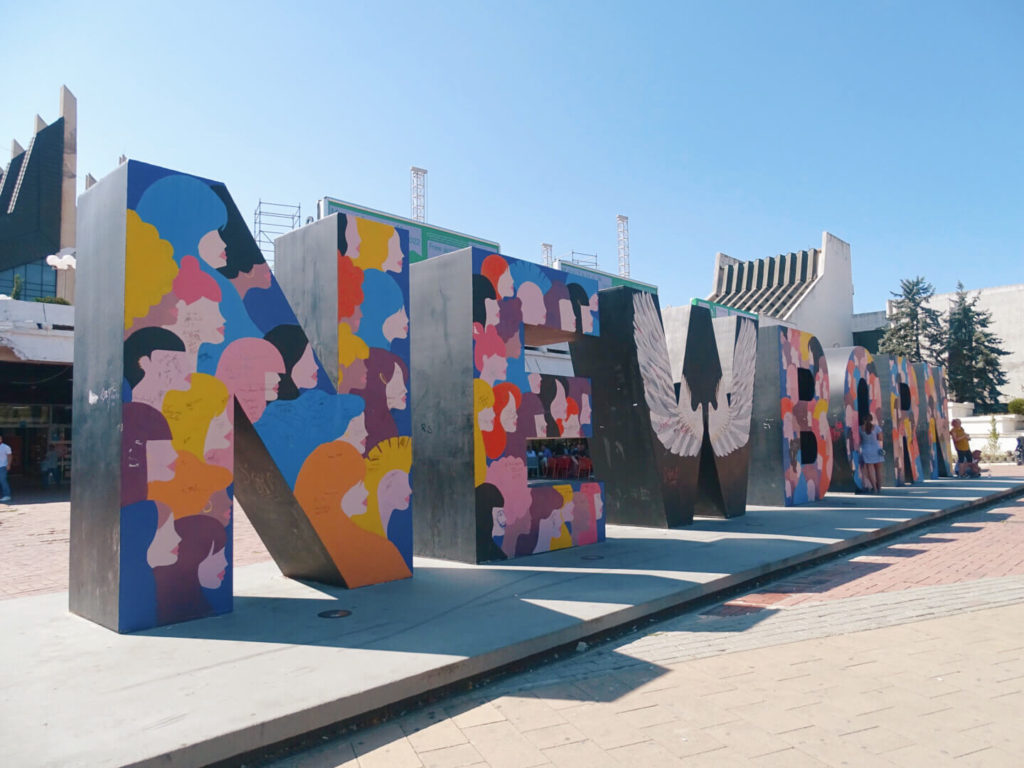
Travel time from Belgrade : 6 hours by bus.
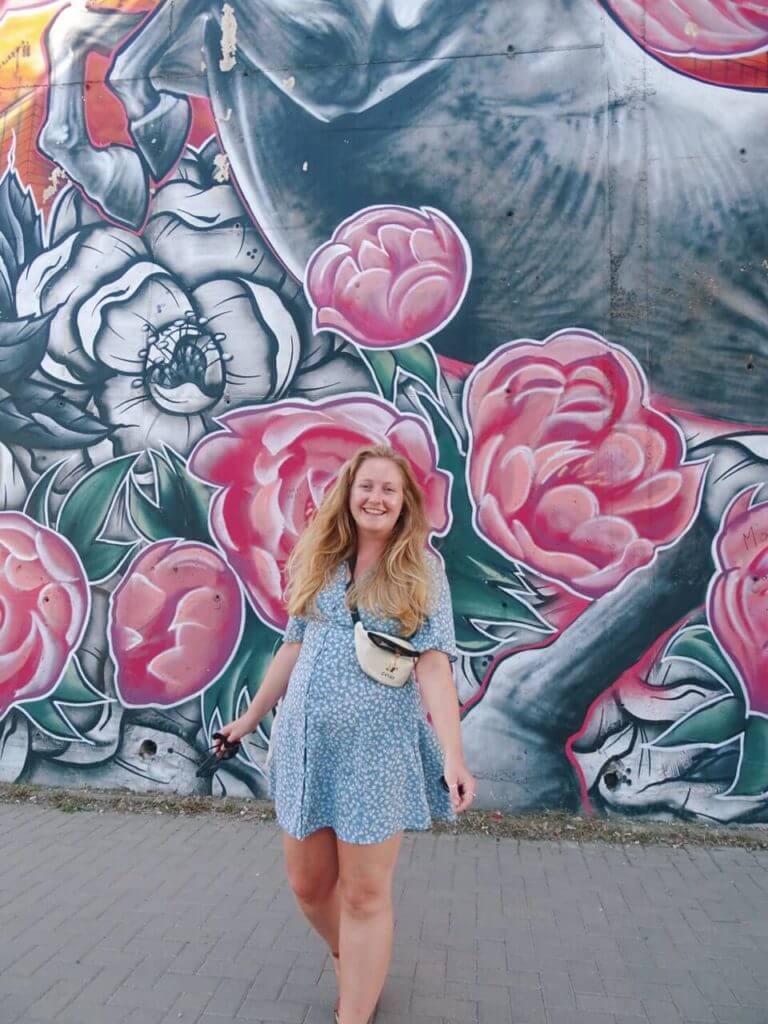
Traditional places to eat
- Shpija e Vjetër – an atmospheric eatery with typical Kosovan dishes like kofta casserole and roasted peppers, plus rakija and local wines
- Pishat – an affordable lunch spot with local fish, meat and veggie dishes
- Caffez – a spacious bar with a garden serving modern Kosovan food, sharing platters and beers.
Cool places to eat & drink coffee
- Baba Ganoush – delicious veggie Middle Eastern food
- Soma Book Station – the prettiest cafe in town serving drinks, platters, burgers, cocktails and more
- Matcha Coffee and Eatery – healthy brunch and matcha lattes
- Dit’ e Nat’ – a beautiful cafe with outdoor seating, coffees, casual eats and cocktails.
Getting around Pristina: The city centre is walkable and there are local buses travelling further afield. For some out-of-town attractions like the Bear Sanctuary, it’s best to hire a car or take a day tour.
Peja or Prizren – 1 day each
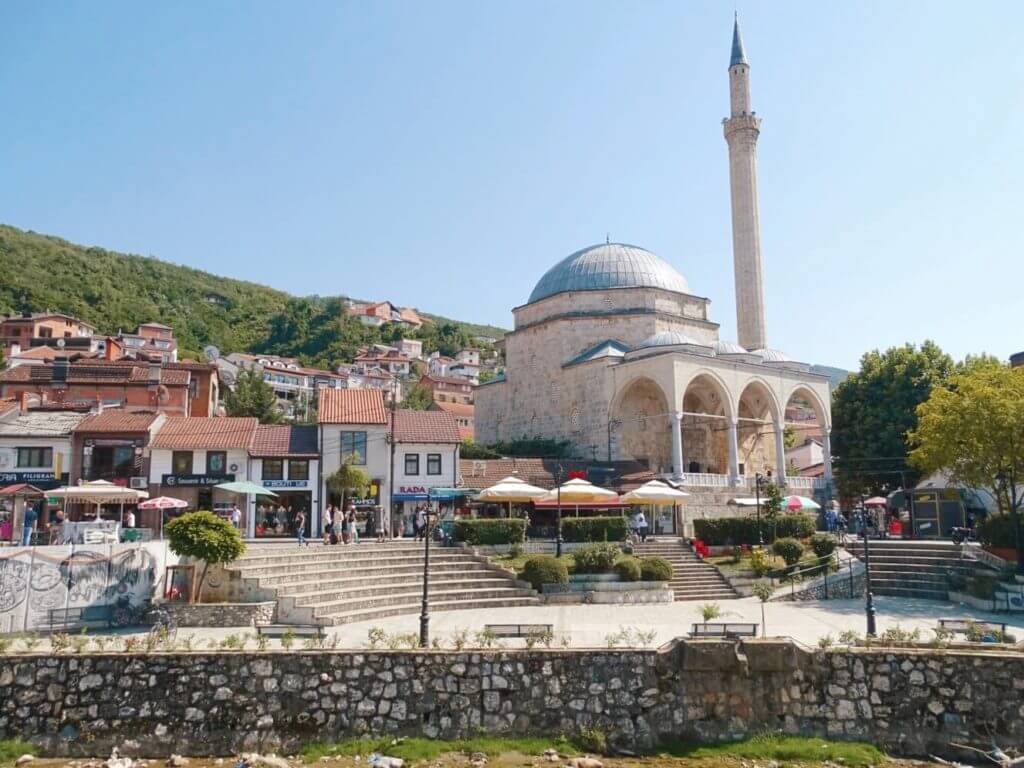
Prizren: this small, walkable city 2 hours from Pristina by car or bus is a total contrast to the busy capital. With small mosques, cobbled streets, a river running through its centre and a fortress towering above, it’s totally idyllic. Don’t miss Noja Kuzhine for a homemade veggie breakfast for €3. You could visit as a day trip from Pristina but I preferred staying overnight. Peja: for abundant nature, caves, waterfalls and monasteries, don’t miss this beautiful region 1 hour 20 minutes from Pristina. It’s best to explore by hiring a car or taking an organised trip .
Note about passport stamps – since Serbia doesn’t recognise Kosovo, it’s recommended to visit Serbia first as they may not permit you entry if you already have a Kosovo stamp. Also, beware that if you do what I did and enter Serbia and exit Kosovo, you won’t get a Serbian exit stamp which could cause future problems entering Serbia. Read this article carefully for clarity!
North Macedonia – approx 5 days
After Kosovo, I continued my Balkans itinerary to North Macedonia, a wonderful underrated country with a pleasant capital and one of the most sublime lakes I’ve ever seen!
Skopje 1-3 days
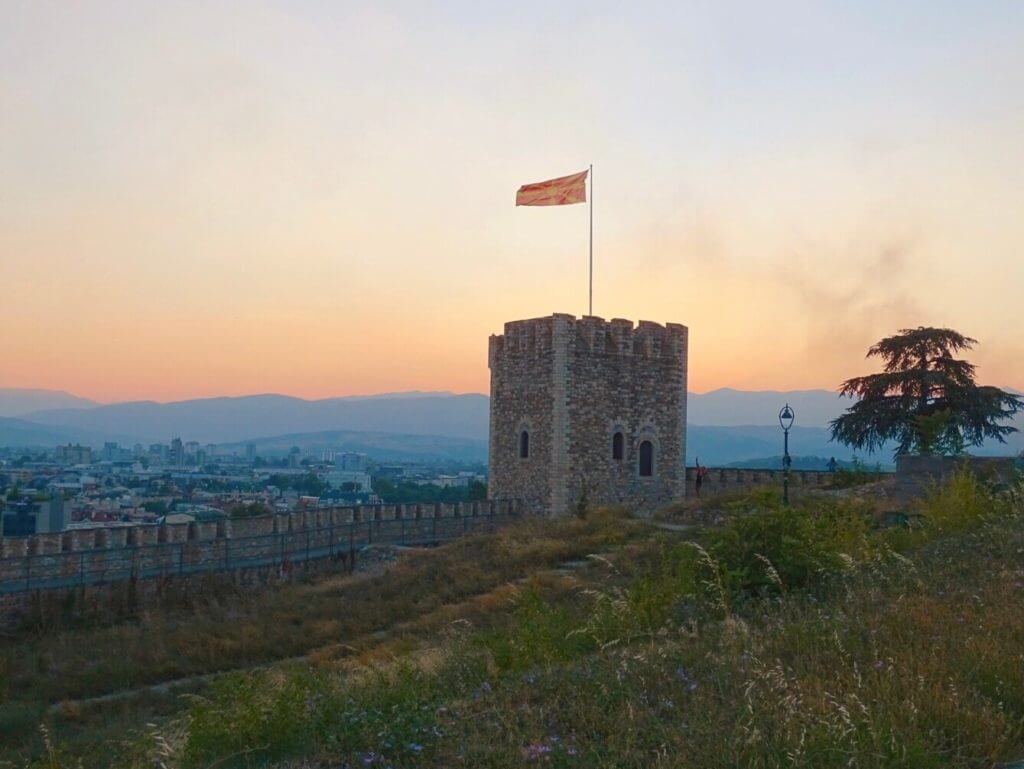
Travel time from Pristina/Prizren : 2-3 hours depending on delays at the border. Skopje is, from the offset, an impressive and immaculate city with countless statues and grand squares. When you learn about the history, it stops being quite so lovely: during recession in 2014, the city was remodelled with a decidedly Western European look leading to riots and the Muslim community in particular feeling ignored. Personally, I preferred exploring the authentic, historic sites in the city like the Old Bazaar . Here, I tried lots of delicious foods like tavče gravče (sausages and beans), pide (flatbread), baklava, Turkish sweets and coffee. If you need a break from typical Balkan food, this is the perfect place to try Middle Eastern dishes and desserts.
Things to do in Skopje:
- Ride the cable car to the giant hilltop Millennium Cross
- Wander impressive Macedonia Square
- Take a day trip to Matka Canyon where you can hike and take boat trips
- Visit Mother Teresa’s house and museum
- See sunset from Skopje Fortress
- Take a walk in City Park.
Read next: What to do in Skopje, North Macedonia
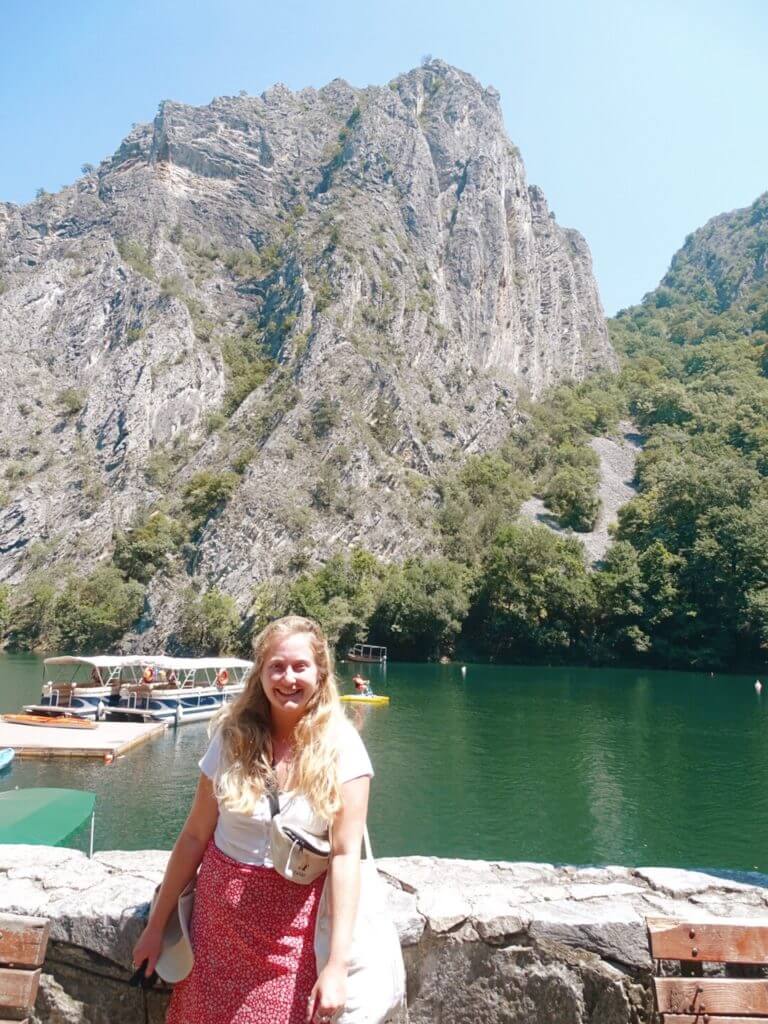
Day 1: free walking tour, Old Bazaar, city centre Day 2: Matka Canyon day trip Day 3: Morning trip to Millennium Cross by catching a bus then the cable car. Afternoon options include visiting Kamnik Winery (or their city centre wine shop ) or simply revisiting the Old Bazaar and enjoying the vibe and food! Otherwise, visit bohemian Debar Maalo neighbourhood for authentic restaurants as well as modern air-conditioned cafes like Kanteen.
Sofia, Bulgaria – 2-3 days
Here I suggest you take a quick detour out of North Macedonia to add Bulgaria to your Balkans travel itinerary. We’ll continue exploring North Macedonia in a few days when you get back!
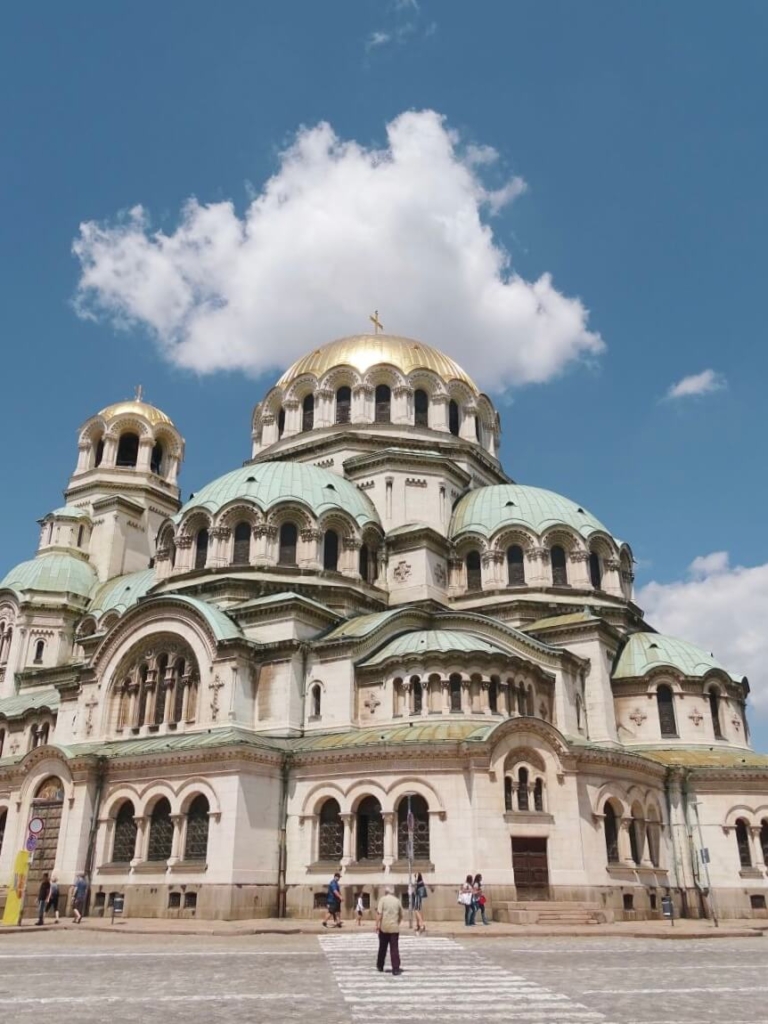
Travel time from Skopje: 3.5 hours by bus. I loved Sofia! It’s a beautiful city that doesn’t feel too hectic or fast-paced. There aren’t billions of things to do which is the perfect excuse to relax, drink coffee and visit wine bars like Garafa .
- Visit the incredible Alexander Nevsky Cathedral
- Take a FREE FOOD TOUR (yes, I meant those caps!) with Balkan Bites
- Step back in time at the Red Flat
- Hike at Seven Rila Lakes
- Visit Rila Monastery
- See the street art
Read next: how to spend 2 days in Sofia including all my food tips!
Plovdiv: if you have time to visit another place in Bulgaria, make it Plovdiv! This is thought to be the oldest continually-inhabited city in Europe full of historic artefacts, museums and characterful guesthouses. You can see everything in 1-2 days.
Back to North Macedonia…
Lake Ohrid – approx 2 days
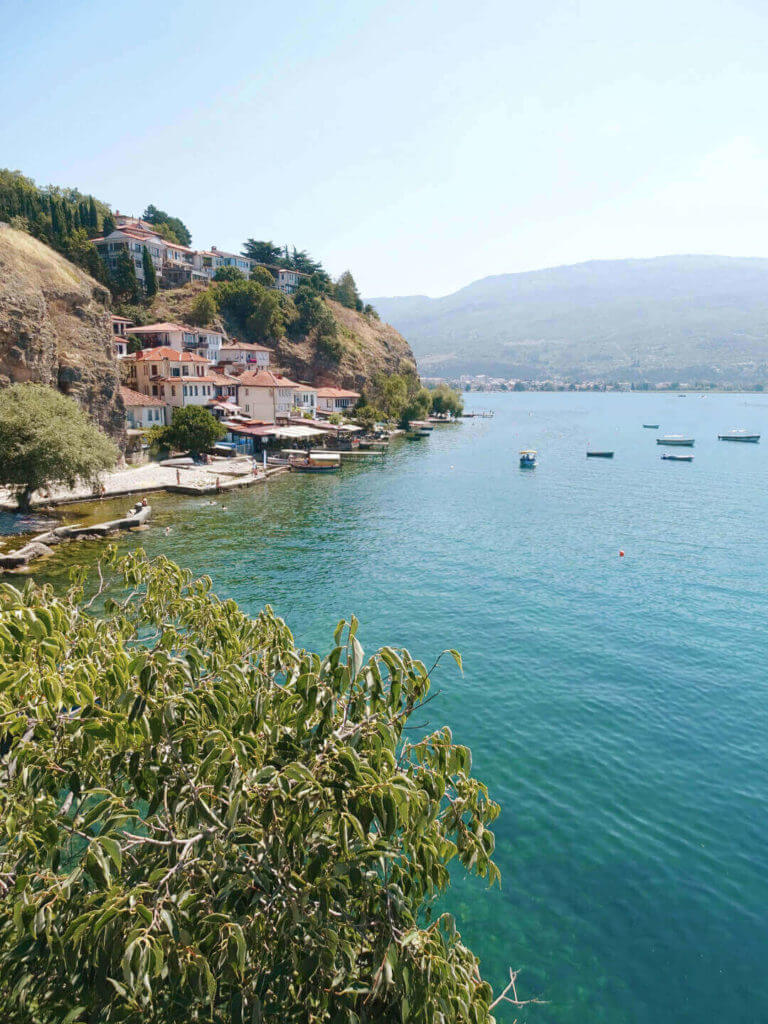
Getting there: from Sofia to Ohrid , it’s best to change in Skopje (5 hours from Sofia) then get a 3.5-hour bus to the lake. It’s been a busy Balkans itinerary so far so I prescribe some downtime at one of Europe’s most beautiful (and underrated) lakes! Lake Ohrid borders North Macedonia and Albania but most people will stay in Ohrid town as a base to take boat trips, visit small beaches and watch sunset at the Church of Saint John the Theologian . Spend as long here as you need to relax!
Bitola (only if you have time) – 1 day
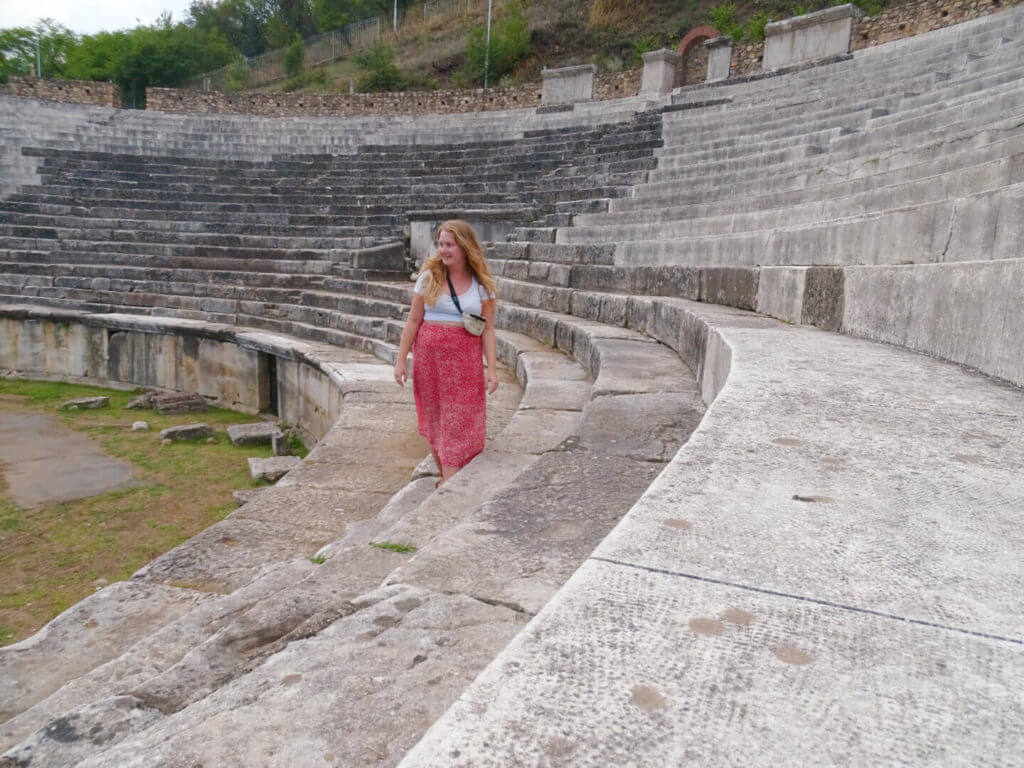
If you’re keen to see a third place in North Macedonia, pay a visit to Bitola (3 hours by bus from Skopje) which is the second-biggest city. The ancient ruins and mosaics at Heraclea Lyncestis are indeed impressive, but I didn’t find too much else going on in Bitola.
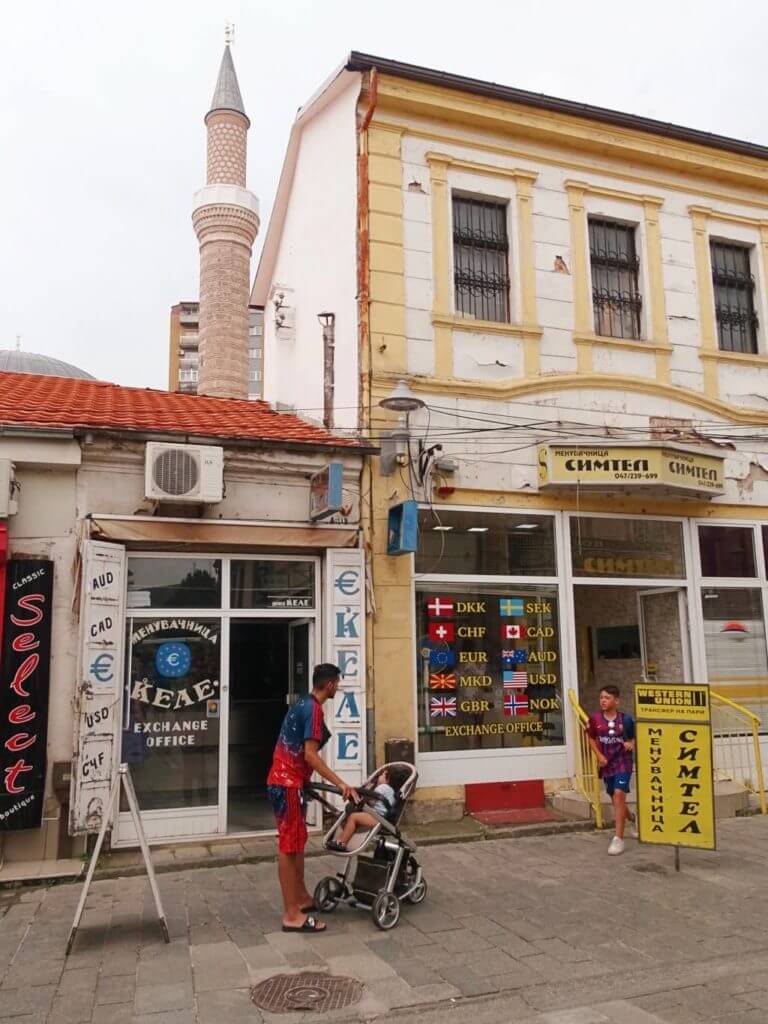
Albania – 2 weeks +
Beautiful Albania is well worth visiting . There are several ways to plan this leg of your Balkan itinerary. I went straight from Ohrid to Sarande but this was a long journey so many people start in Tirana. From here, you can either head to the inland destinations of Berat and Gjirokastër or the beaches of Himare and Sarande. To travel from inland Albania to the coast, there’s a direct bus between Sarande and Gjirokastër, otherwise you can travel from Berat to the beaches (or vice versa) by changing in Vlore. As some people seem unsure what to expect, I wrote a guide to solo female travel in Albania !
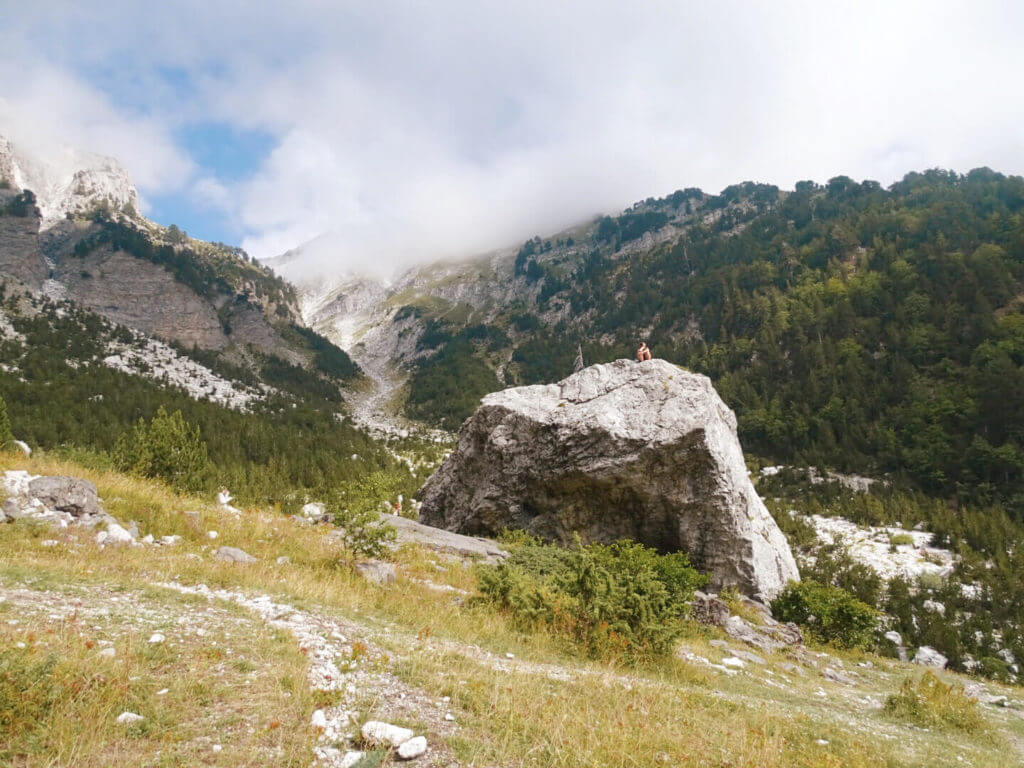
Read next: a complete Albania itinerary
Another consideration is when to visit Shokder for hiking in Theth. You could either do this as a return excursion from Tirana or, if you’re going to Montenegro after, save it ’til the end of your Albania adventure.
Transport tip – Albania bus journies are rarely listed online so ask your accommodation about routes & schedules. Bring cash to buy your ticket, usually purchased from a ticket man halfway through the journey. There are coaches departing Tirana but for the most part, you’ll be in minibuses. These can be hot and cramped so bring water!
Tirana – 1-2 days
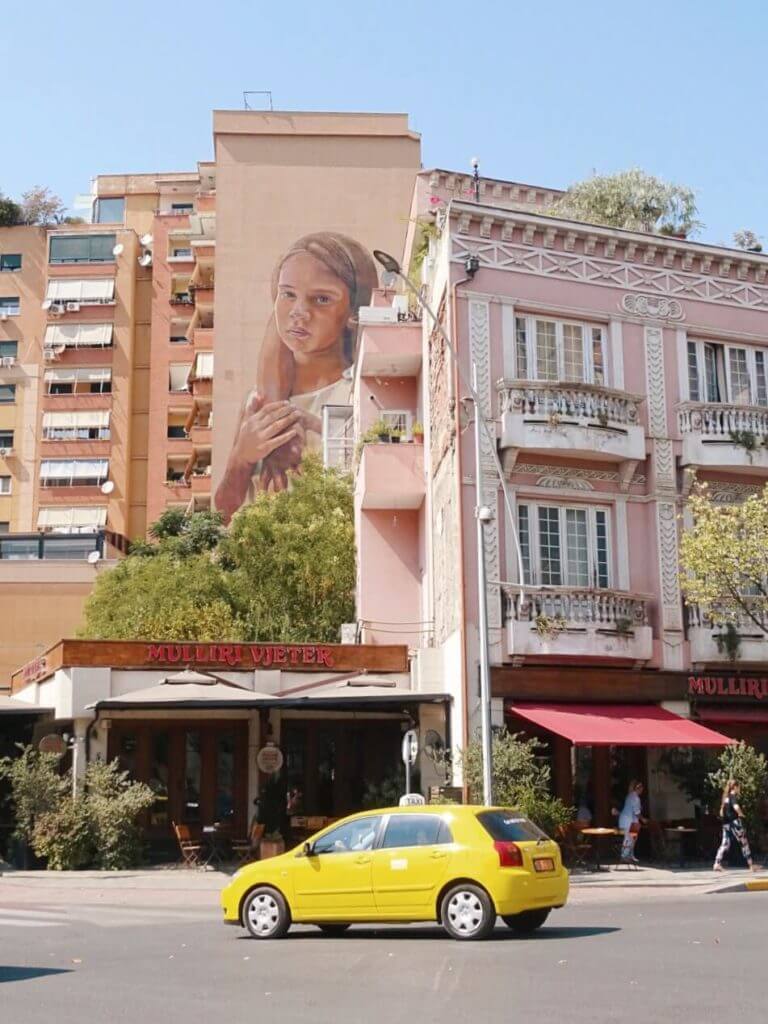
Most people will spend just a day or two in Tirana which is enough time for Albania’s capital. I found some things to like here but it’s definitely not the highlight of the Balkans! Things to do in Tirana:
- Learn about mass surveillance under the communist regime at the House of Leaves
- Ride the Dajti Ekspres cable car for fantastic views
- Learn about Albania’s dark past at Bunk’Arts 1 and 2
- Shop and eat at the New Bazaar
- Hang out in Blloku neighbourhood full of cool cars, cocktail bars and international cuisine.
Read next: everything to do in Tirana
Sarande & Ksamil – 1-2 days
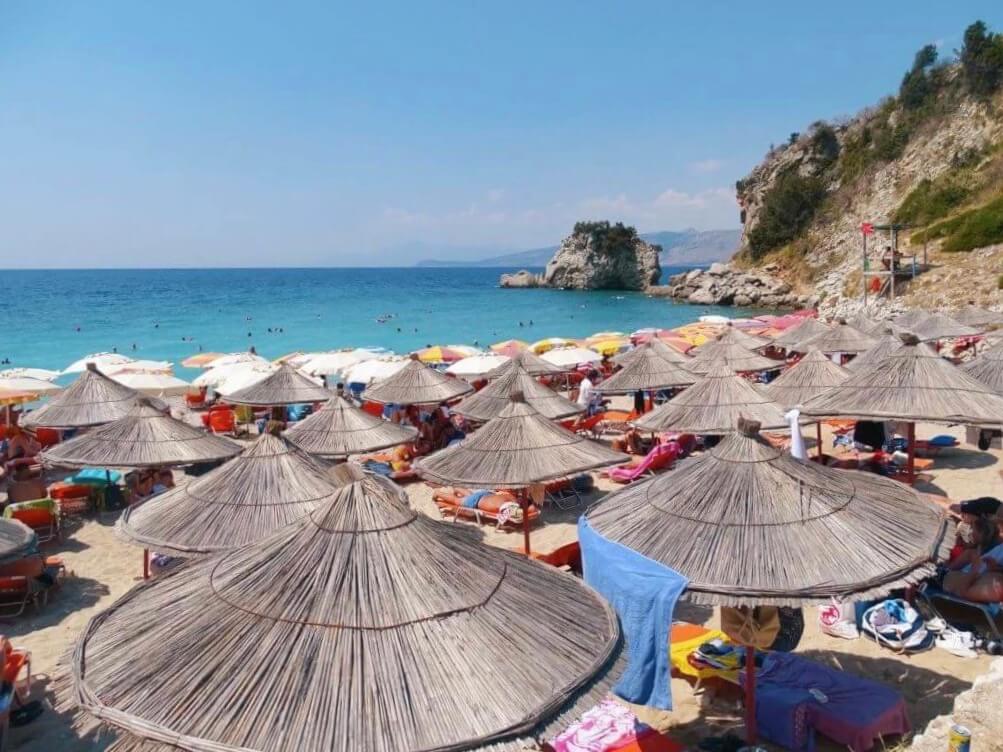
As someone who travels for culture and hidden gems (and on a budget!), I didn’t love the popular Albanian beach towns. Sarande is crowded and overpriced without much charm. The beaches down on Ksamil peninsular are undeniably idyllic but things are even more pricey from food to beds on the beach which you can’t escape paying for. Still, some people rave about this region so it just depends what you’re into! If you’re like me, swap Himarë into your itinerary for the Balkans instead…
Himarë – as long as you need to chill
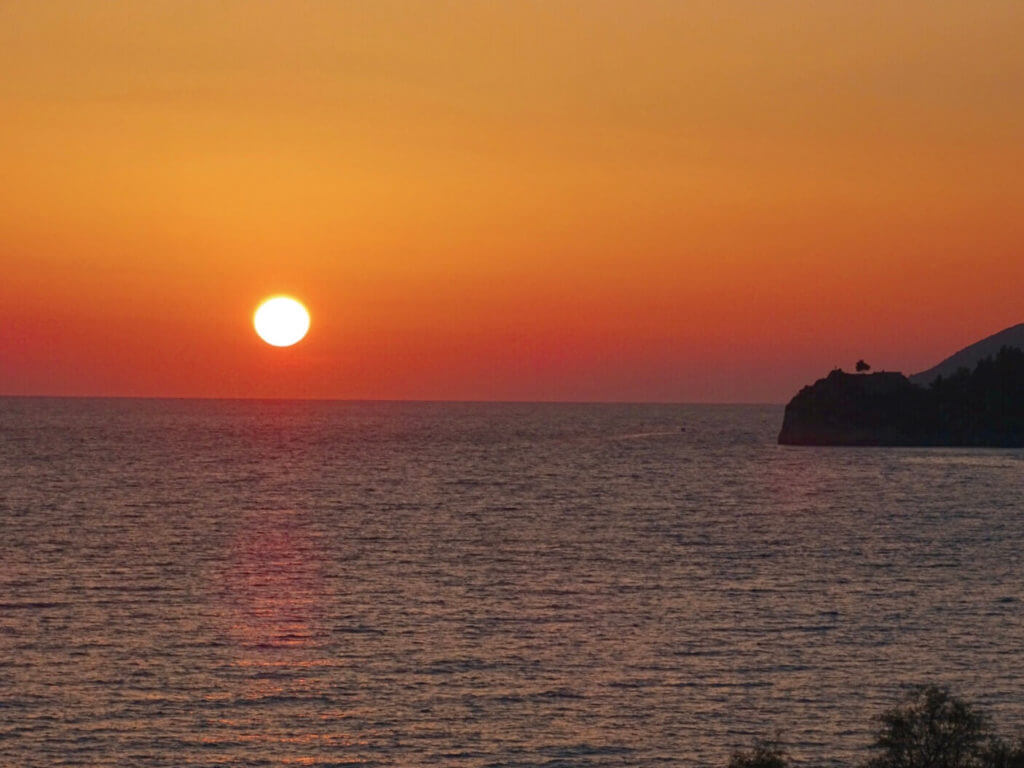
Himarë is an underrated beach town that suited me far better than Sarande or Ksamil. It’s not so fancy but it’s wonderful for exploring quieter beaches and eating fantastic Greek food (due to the large diaspora there) at affordable taverns. Nearby beaches worth a visit include Mateus and Gjip . A beautiful hilltop town not far away is Dhermi . If you’re a backpacker, you’ll have blast staying at Sun Bakers Hostel ! Getting there: by car or bus, Himarë is 1.5 hours from Sarande. If coming from Tirana, it’s a long 3.5-hour journey over the mountains!
Berat – 1-2 days
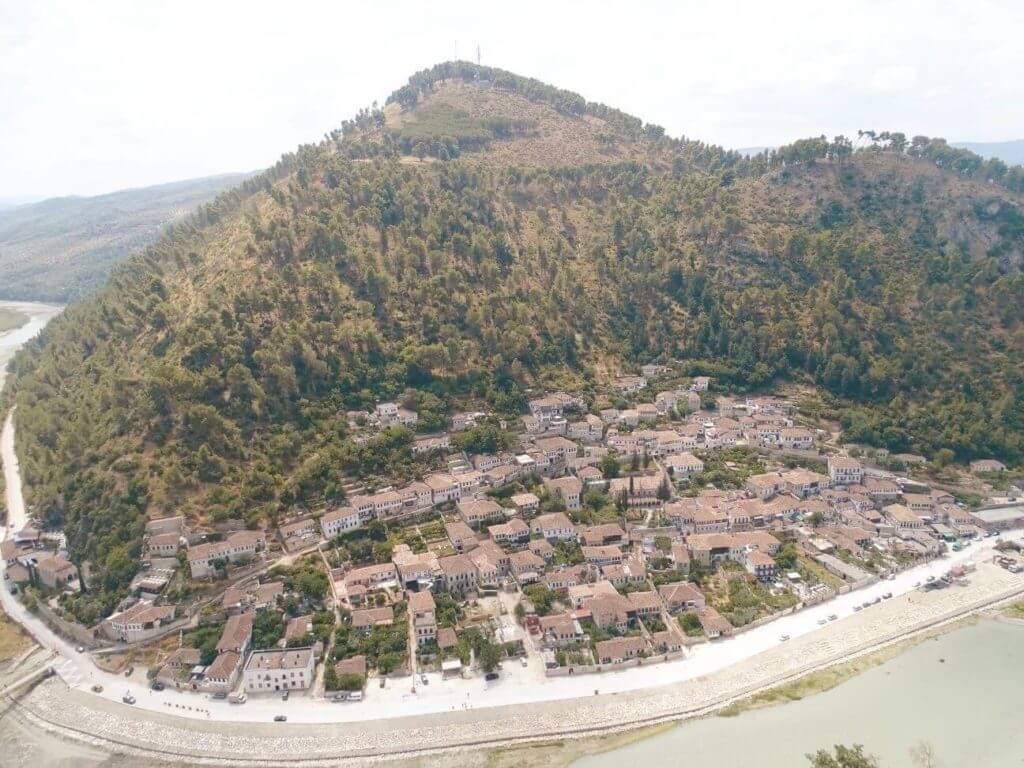
Berat is a lovely UNESCO heritage city with houses stacked high on the hillside, overlooked by the castle and Holy Trinity Church . Find delicious restaurants in the Mangalemi quarter and hidden gems across the river in the Gorica quarter. There are several great wineries in the countryside surrounding Berat. Cobo Winery and Alpeta Agroturizem serve fantastic Albanian wine in peaceful settings. Getting there: it’s around 2 hours by car or bus from Tirana (400 lek per bus ticket). Direct buses also serve Gjirokaster. From Himarë, change buses in Vlore.
Day trip to Osum Canyon & Bogove Waterfall
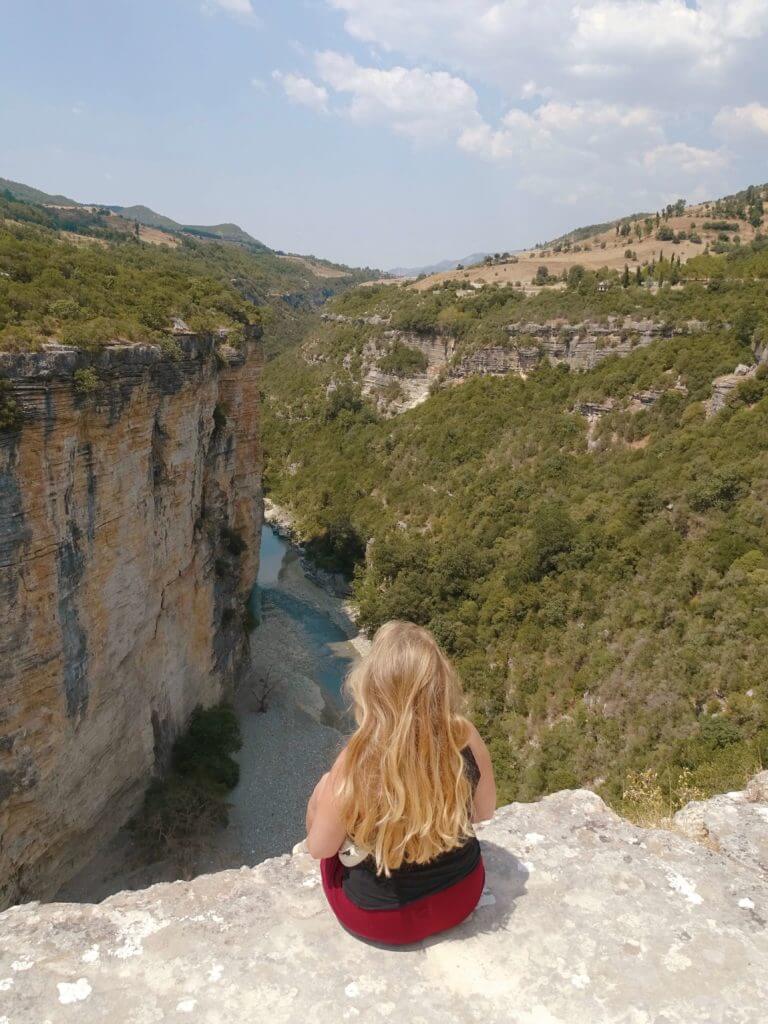
While you can see Berat in a day, I’d suggest spending two to include a trip to Osum Canyon close to Berat. Swimming through this magnificent natural feature was a real highlight of my Balkans itinerary! It’s one of many gems in this countryside region that also includes Bogove Waterfall, a lovely swimming spot despite the freezing cold waters. If you don’t have a car, book a guided tour or ask your accommodation if they can organise something.
Gjirokaster – 1-2 days
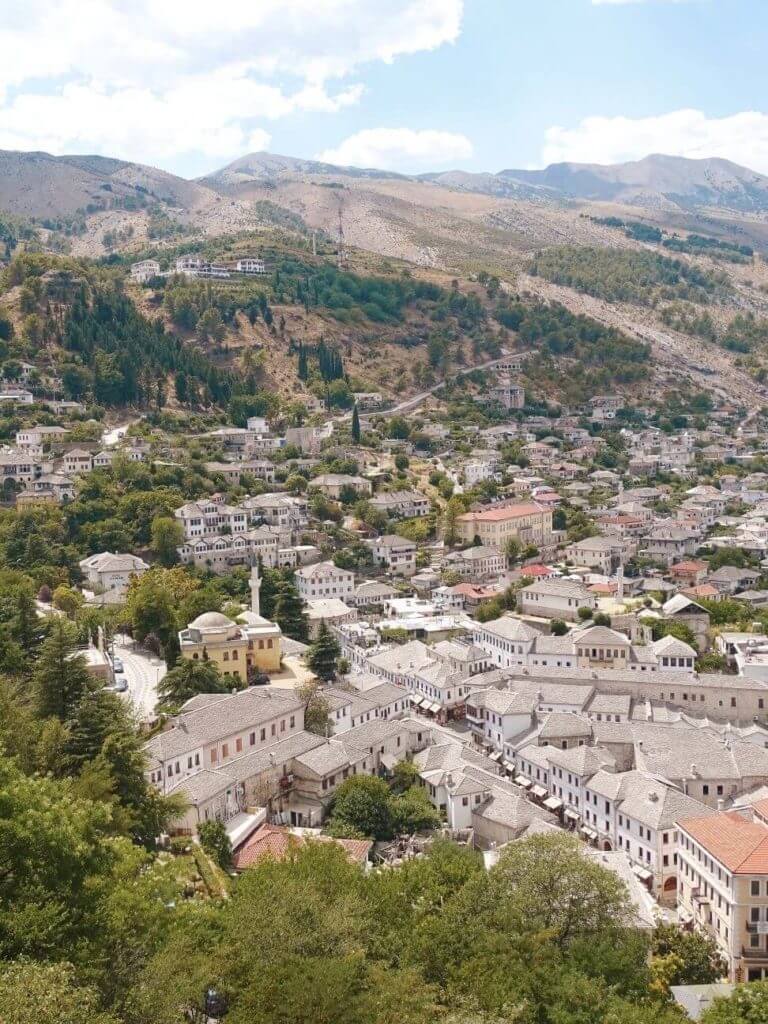
Gjirokaster is quaint and charming with wonderful markets and delightful regional cuisine. Don’t skip it! A day is sufficient to see Gjirokaster. As it was very hot in August, I did my sightseeing during the afternoon of day 1 and the morning of day 2, staying just a night at Stone City Hostel . This was one of the best hostels I’ve stayed in with gorgeous decor, clean spacious dorms, free breakfast and a free daily walking tour.
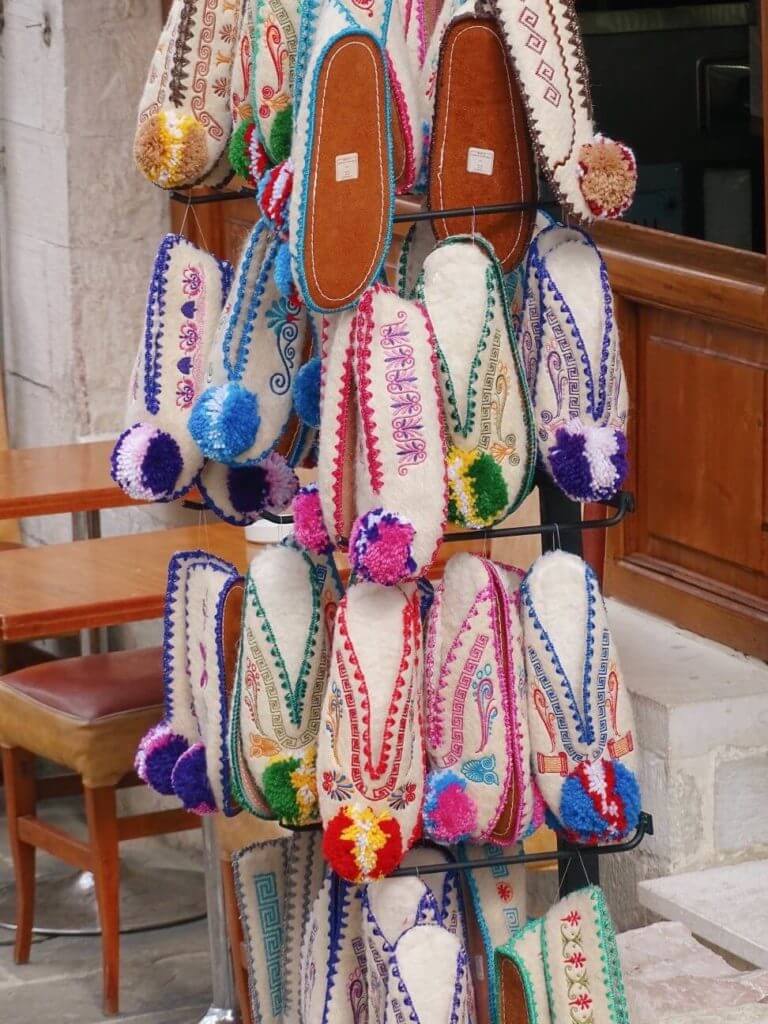
Getting there: I came from Sarande by direct bus but if you have a car, you could make this journey with a stop at the spectacular Blue Eye . Direct buses also connect Berat and Tirana. Transferring through Tirana, your next stop could be…
Shkodër – 2 nights
I used the small, pleasant city of Shkodër to rest and prepare for my 2-night hiking adventure in Northern Albania. However, there’s plenty to do in Shkodër like cycling to Lake Skadar, enjoying the cafe scene, hiking up to Rozafa Castle and checking out the various museums.
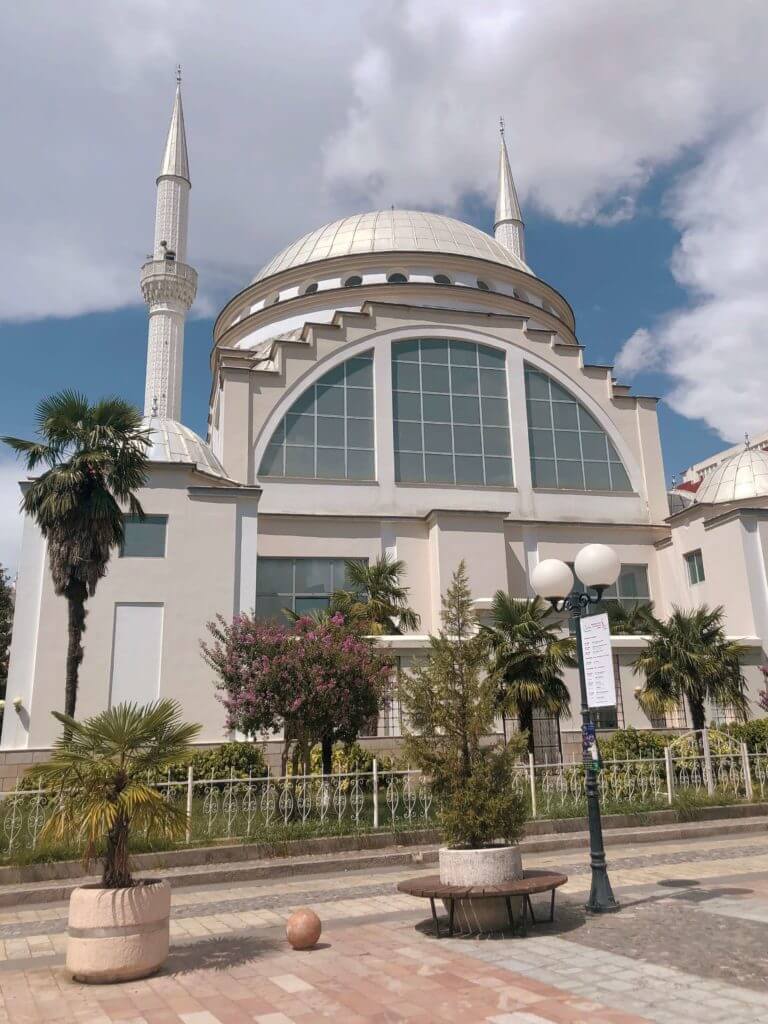
Where to stay: Wanderers is a great backpacker hostel that organises the Theth hiking excursion for you. Getting to Shkoder: drive or catch a bus from Tirana. They depart every 30 minutes between 6.30am and 5pm from Tirana regional bus station taking 1 hour 45 minutes.
Valbona to Theth hike – 2 nights (highlight of my Balkan itinerary!)
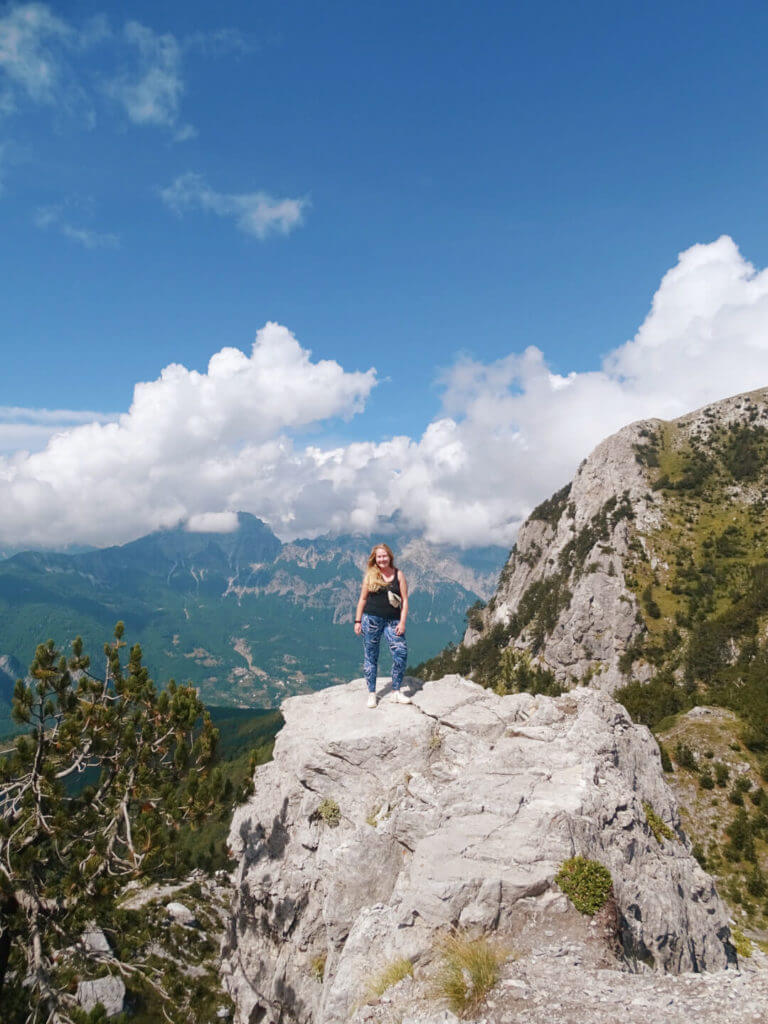
If you have time, the highlight of my trip to Albania was hiking from Valbona to Theth . These alps are some of the most gorgeous and underrated in Europe. There are several ways to experience this region including basing yourself in the small town of Theth. In addition to the famous Valbona Pass, there are several other hikes in the area like the Blue Eye route and Qafa e Pejës . However, I can’t speak highly enough about the method I took: spending a night in Valbona and a night in Theth, using the day in the middle to hike between them. The downside is carrying all your stuff but this wasn’t too much of a problem as I left my big bag in Shkodër and packed light into a day bag. My whole trip was organised by the Wanderers hostel in Shkodër including the return transport. Browse tours to Theth .
About Albanian food
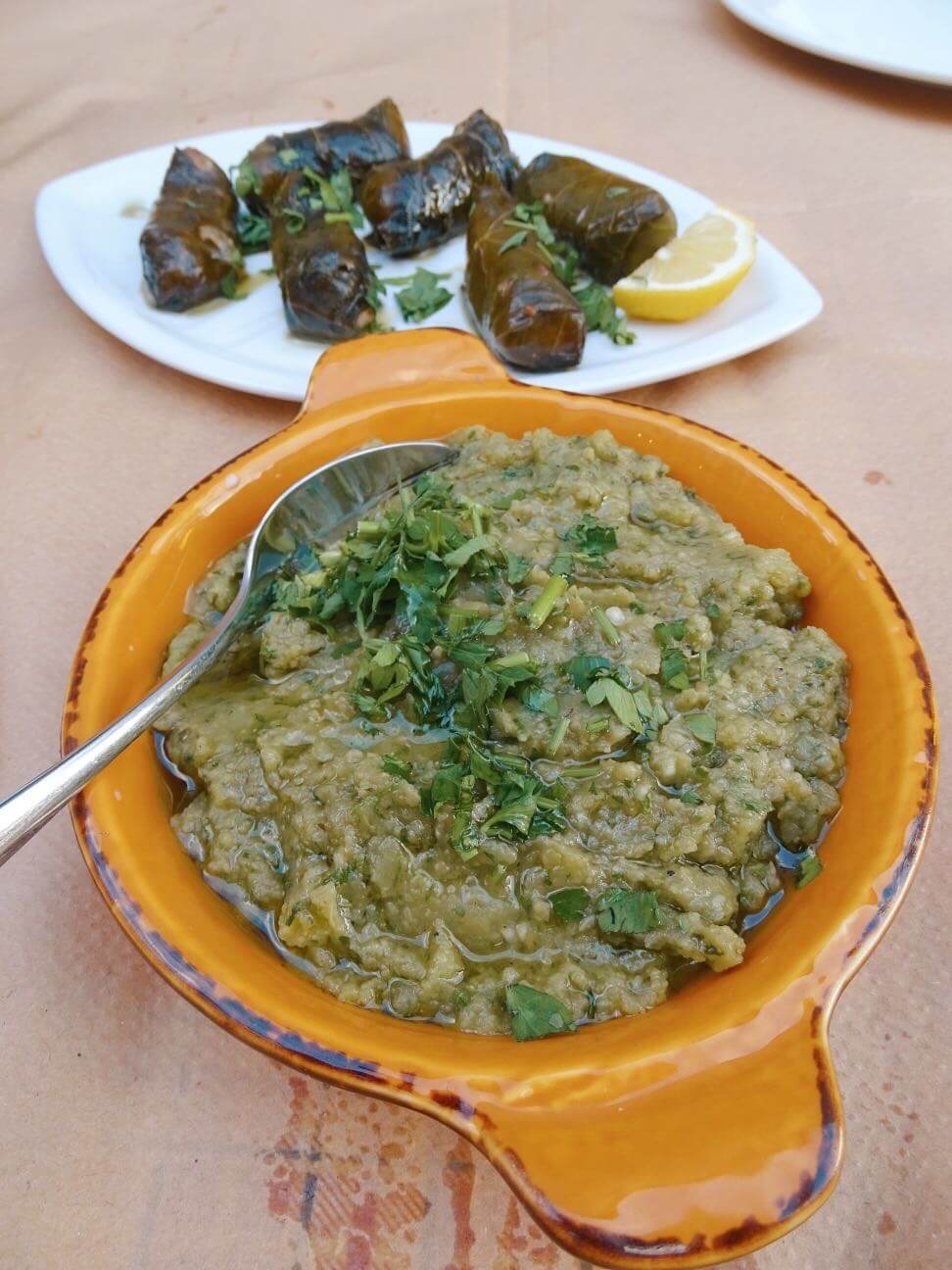
Albanian food is yummy! By the coast, there’s loads of fresh seafood and, in Himare beach town, there’s endless Greek food. I particularly enjoyed eating in Gjirokaster where I tried plenty of regional dishes I didn’t see elsewhere. Because so many Albanians go to Italy to work as chefs before returning home, the Italian food is amazing!
Characterised by lakes, mountains and sweeping coastline, Montenegro is insanely beautiful and easily one of the most underrated places in this Balkan itinerary.
Read next: the ultimate Montenegro itinerary
Ulcinj or Stari Bar – 2 days
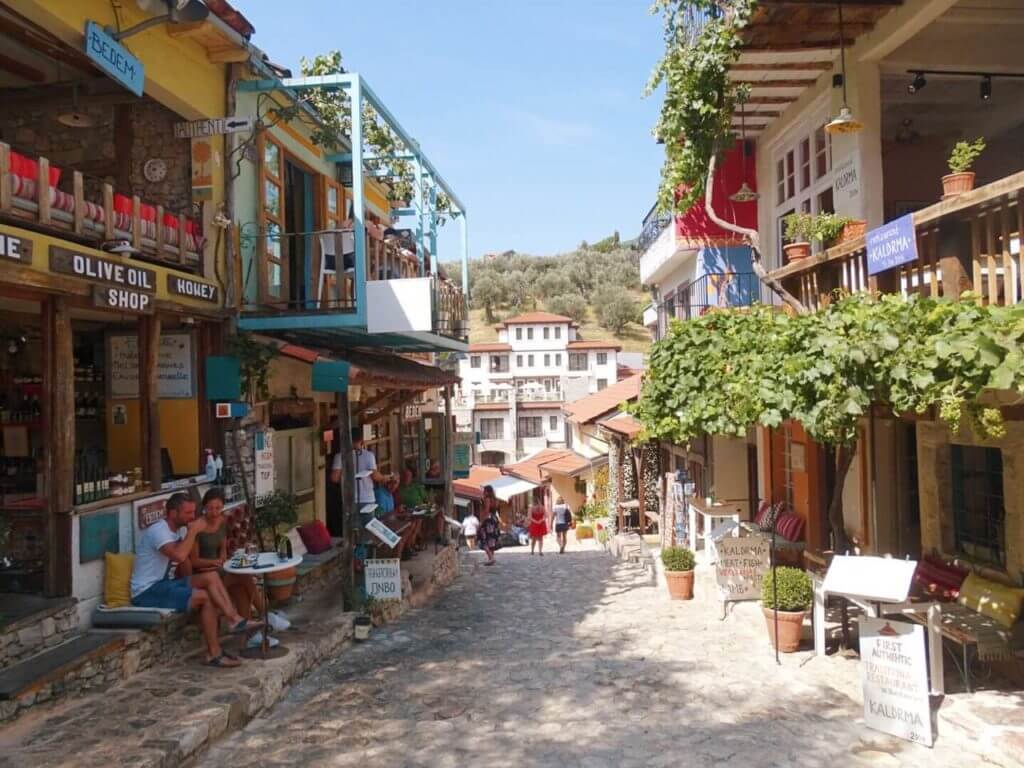
If you’re coming from Albania, it’s easy to drive or get a bus transfer from Shkodër to Montenegro. One popular place to begin is Ulcinj beach town but I decided to start with Stari Bar which is a charming inland town surrounded by olive groves and mountains. Getting there: it’s a 15-minute drive from the larger town of Bar. If you arrive into Bar bus station, board a bus or taxi to Stari Bar.
One option is spending 2 days in Ulcinj then 2 days in Stari Bar
Kotor or Budva – 3-5 days
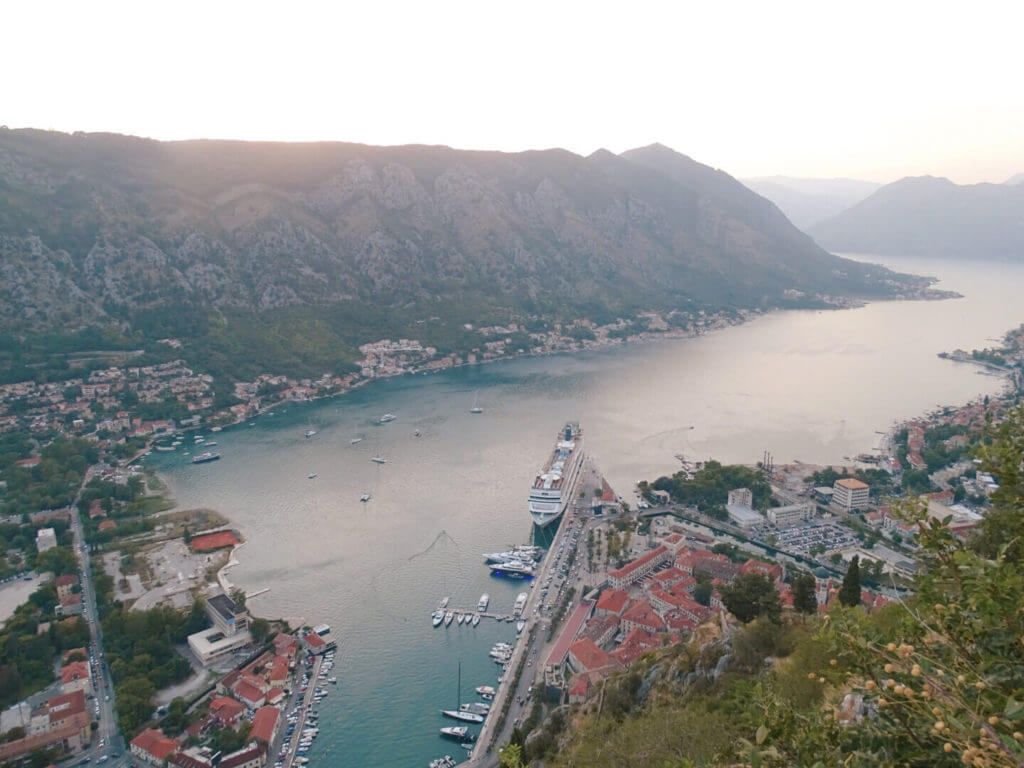
I loved staying in Kotor and using the charming town as a base to explore wider Montenegro. Just 30 minutes away by bus is the other popular tourist town in the country: Budva . I would suggest choosing one or the other because they’re so close you could explore the other as a day trip. Budva has a reputation for being more resorty and upmarket, popular with families and honeymooners. As a backpacker, Kotor was far more my cup of tea. However, I would recommend visiting Budva to see Stevi Stefan, an idyllic village on an island, once a playground for the rich and famous and now a luxury resort (so more or less the same thing!). Things to do in Kotor:
- Hike up to St John’s Fortress for sunset views
- Visit the quirky Cat museum!
- Visit the various churches, some Greek Orthodox, Catholic or Serbian Orthodox (Serbia and Montenegro only split in 2006).
Read next: what to do in Kotor, Montenegro (plus where to eat)
Day trips from Kotor:
- Boka Bay – take a quick speedboat tour or a more leisurely 8-hour sailing trip
- Lake Skadar – this lovely lake is full of wildlife with incredible viewpoints dotted around it. I visited as part of a guided tour .
- Durmitor National Park – the Black Lake hike is easily accessed from Zabljak village. Visit by car or a guided tour that also includes…
- Ostrog Monastery – built into the cliff face and known as a holy site where miracles happen, this monastery is easily visited by car or group tour .
- Perast, Tivat and Herceg Novi – if you have a car you could see two or all of these villages in a day. Perast is the prettiest so, if you have limited time (or you’re relying on public transport), just go there. Tivat has a fancy, boujee vibe with designer shops.
- Cetinje – the old capital of Montenegro is a beautiful town with important historic sites. Drive from Kotor in 1 hour or take a guided tour usually including the peak of Lovcen Mountain.
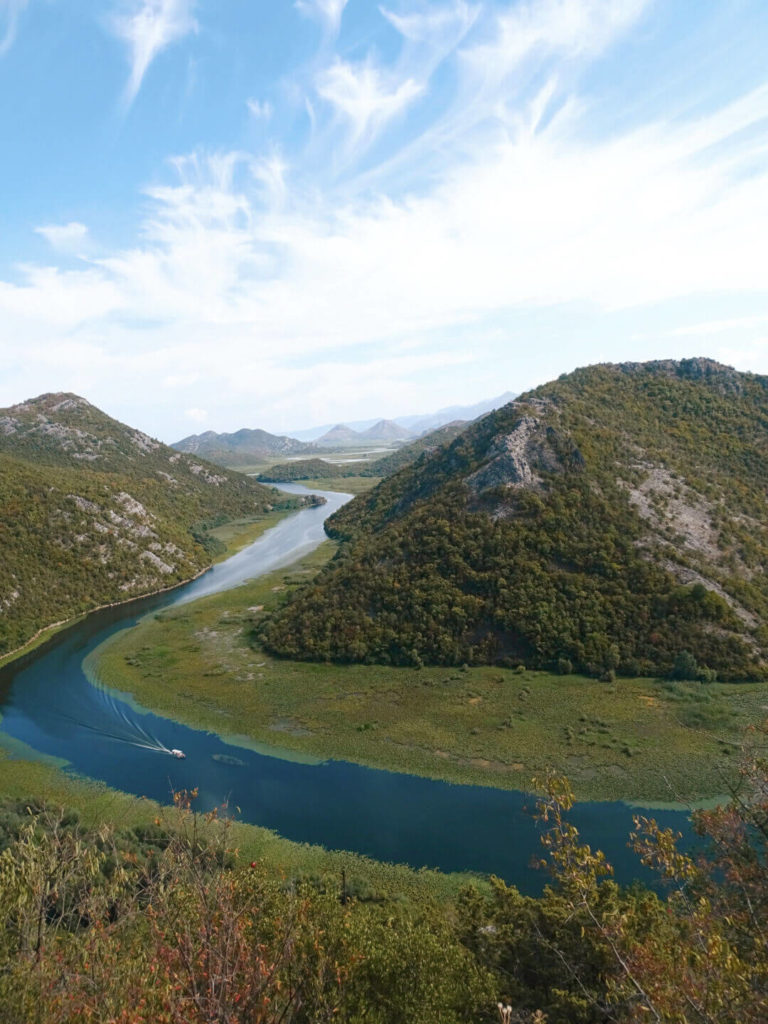
Where to stay in Kotor:
- Budget – Old Town Kotor Hostel
- Hotels – Boutique Hotel Astoria / Hotel Libertas / Hotel Monte Cristo
- Apartment – Wine House Apartments / Apartments Babilon .
From Kotor, continue your Balkans trip itinerary by catching the 7.40am bus to Mostar. Make sure to book in advance (using busticket4me or by purchasing your ticket at the station) as there’s only one per day!
Bosnia & Herzegovina – 1 week
I first visited Bosnia as a day trip years ago, something I would never do now! It deserves a week of your time, although I spent 2 weeks.
Mostar – 2-3 days
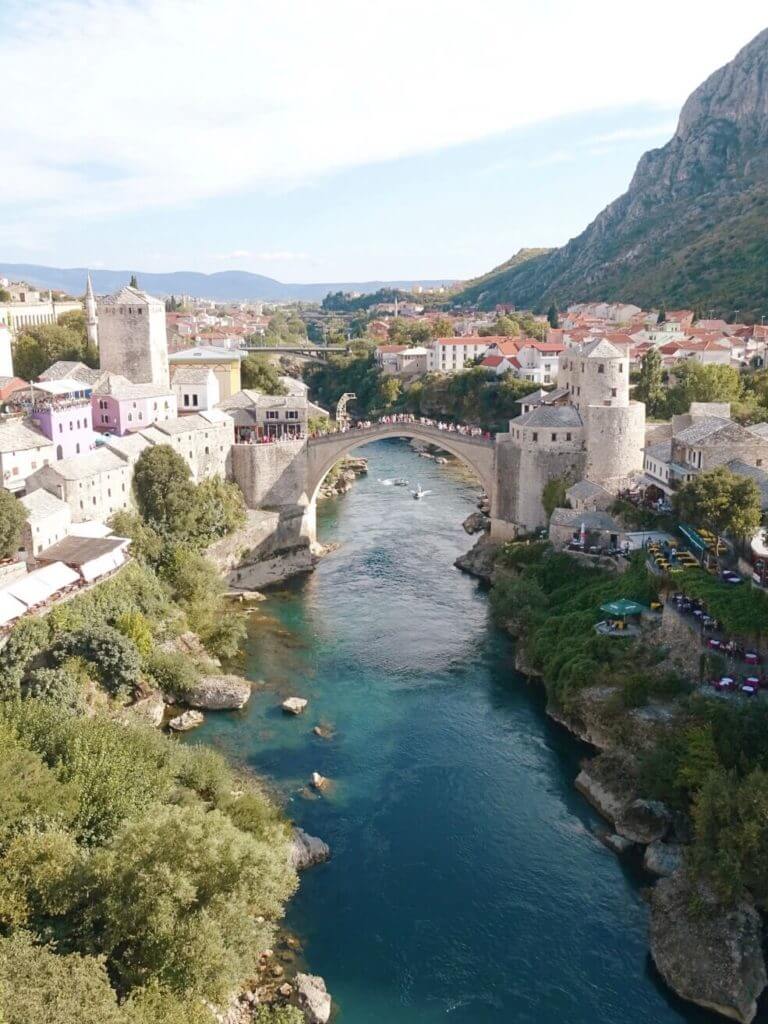
After two visits to Mostar, I can confirm it’s a delightfully pretty and idyllic place with wonderful attractions surrounding it. However, the recent and bitter history is a complete contrast to this sublime settlement with cobbled streets and colourful markets. I urge you to take a free walking tour, visit the museums (especially the Genocide Victims museum ) and learn about some of the worst things that have happened in Europe in the last few decades.
Read next: things to do in Mostar
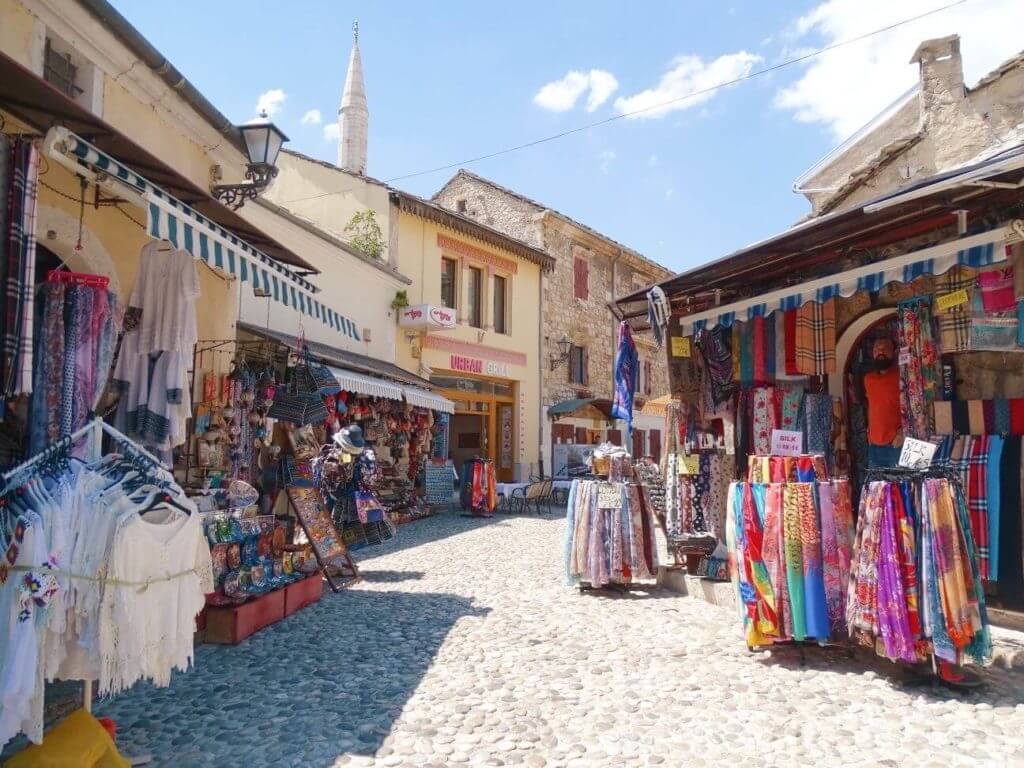
Day trips from Mostar
- Blagaj Tekke – this ancient Ottoman house built into the cliff beside a river is a spectacular place to visit, just a €1 bus ride from Mostar.
- Kravice Falls – these beautiful falls are perfect for swimming and not half as busy as similar ones in Croatia!
- Počitelj – described as an open-air museum, this charming village has mosques, churches and a castle. A must for historians!
- Visit all three during one day as part of a guided tour from Mostar .
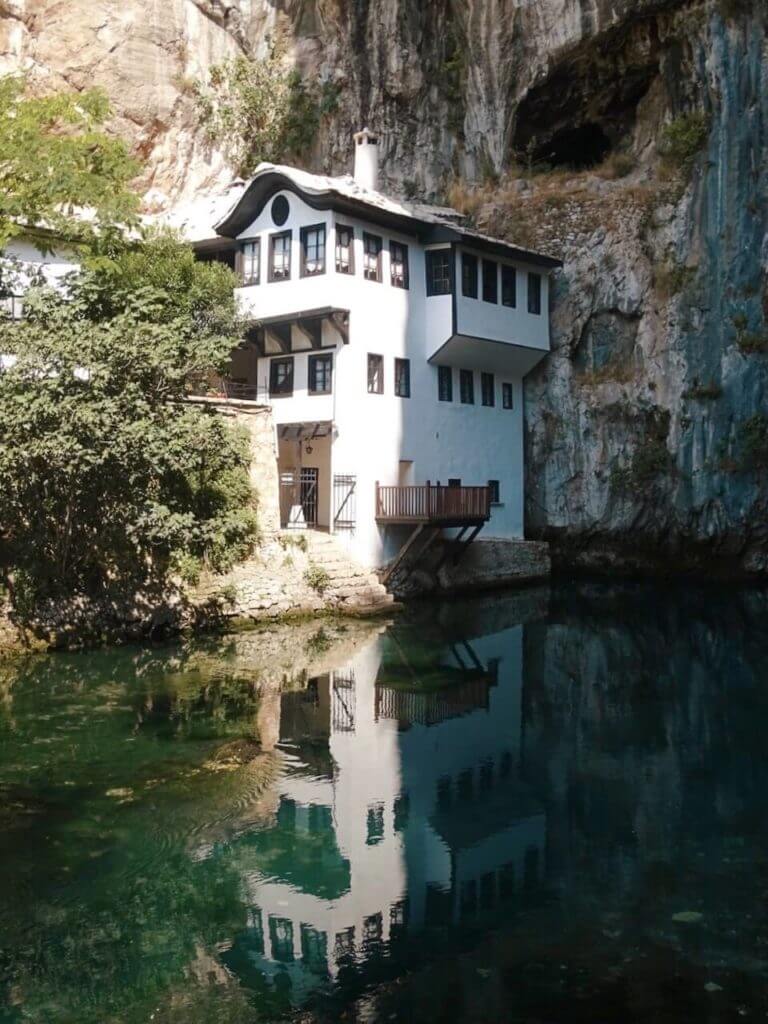
Sarajevo – 3 days +
Larger than Mostar but still small for a capital, the wonderful city of Sarajevo is one of the best places I visited during my Balkans itinerary. It has well-preserved Ottoman markets selling the same handmade goods they have for centuries, captivating museums, ornate mosques and tasty food. It’s amazing and cheap!

Things that make Sarajevo worth visiting :
- Shop at Bascarsija Bazaar, particularly on historic Kazandžiluk Street
- Visit heartbreaking but important museums like the War Childhood Museum and Gallery 11/07/95
- Watch sunset from the Yellow Fortress (Žuta Tabija)
- Walk through the Tunnel of Hope, ideally on a fall of Yugoslavia tour that also includes…
- The abandoned 1984 Olympic bobsleigh track at the top of Mount Trebević (ride the cable car there).
Read next: What to do (and eat) in Sarajevo
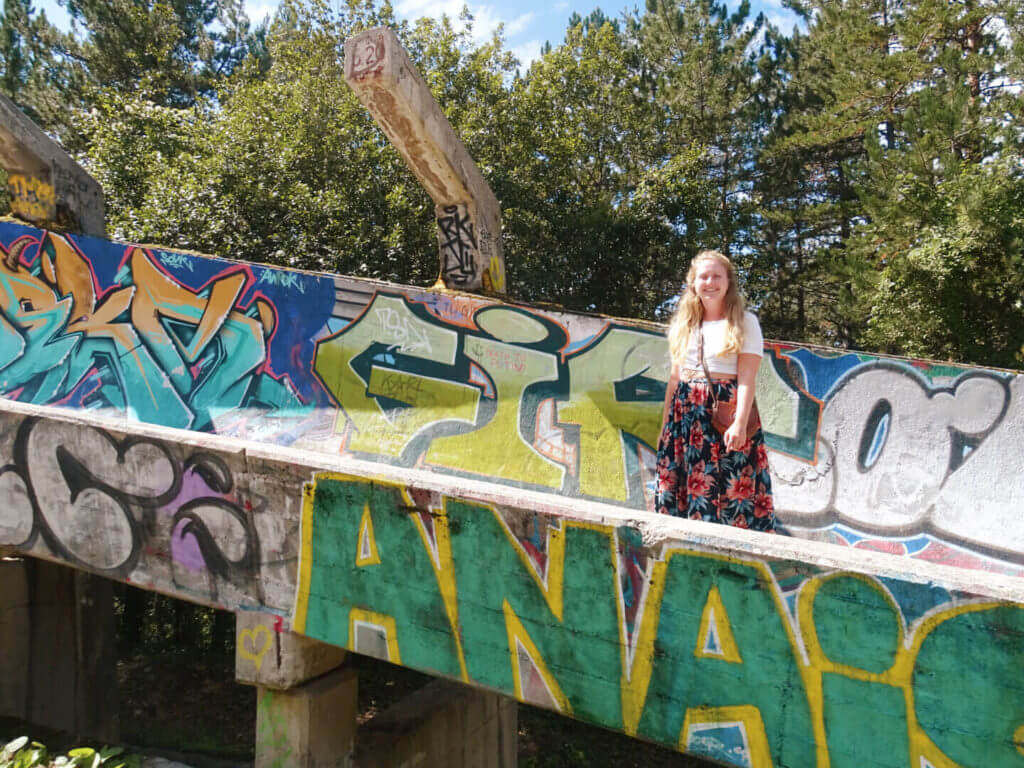
About Bosnian food
You’ll find all the Balkan classics in Bosnia & Herzegovina like burek and cevapi, but there’s a distinctly Ottoman influence so expect tasty desserts like baklava and coffee with Turkish delight.
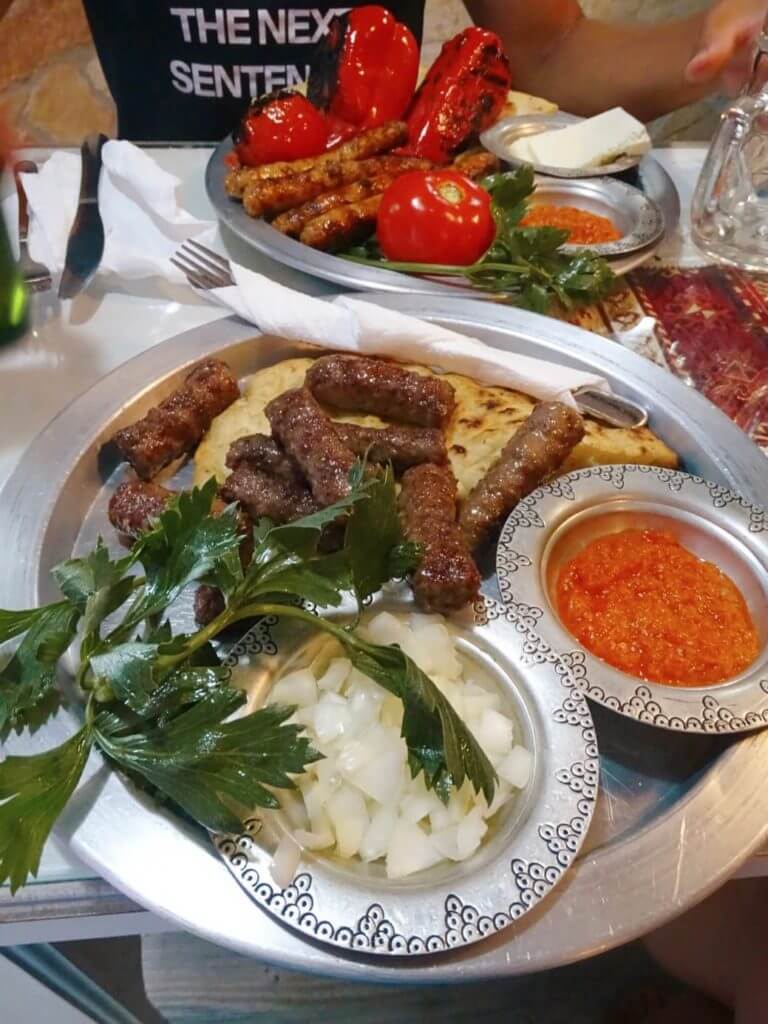
I can recommend lots of restaurants like Šadrvan and Tima Irma in Mostar and ASDŽ Aščinica (buffet), Sač (burek) and Cafe Dućan (baklava) in Sarajevo. From Sarajevo, you can easily take the Flixbus to Dubrovnik to finish your trip in the most ‘holiday-ish’ place of them all…
Croatia – 1-2 weeks
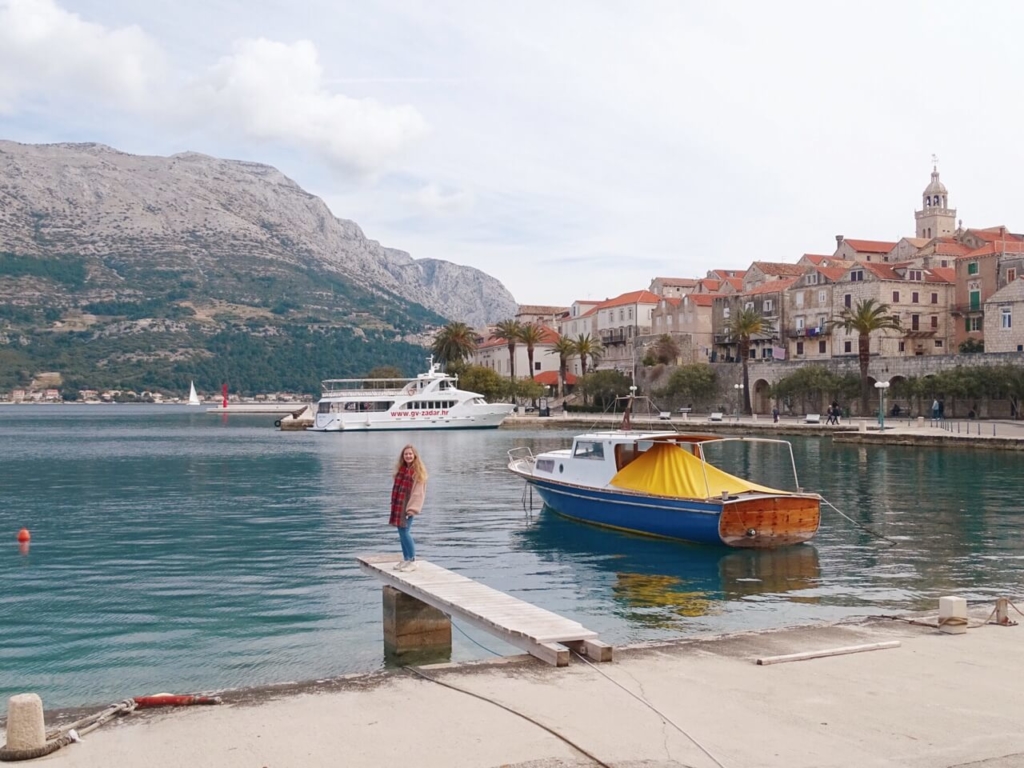
If you travel through the cheaper Balkan countries in July or August, it would be perfect to finish in Croatia in September when the crowds are leaving. Alternatively, I’d reverse this itinerary and visit Croatia in May or June at the start of your Balkans itinerary. I put together this 1 week Croatia itinerary including Dubrovnik, Split and Zadar (along with some other suggestions like Istria) but you can spend longer if you have the budget: Croatia is considerably more expensive than most of the Balkan countries. I’ll keep this brief because all the details are in my Croatia itinerary linked above so go check that out!
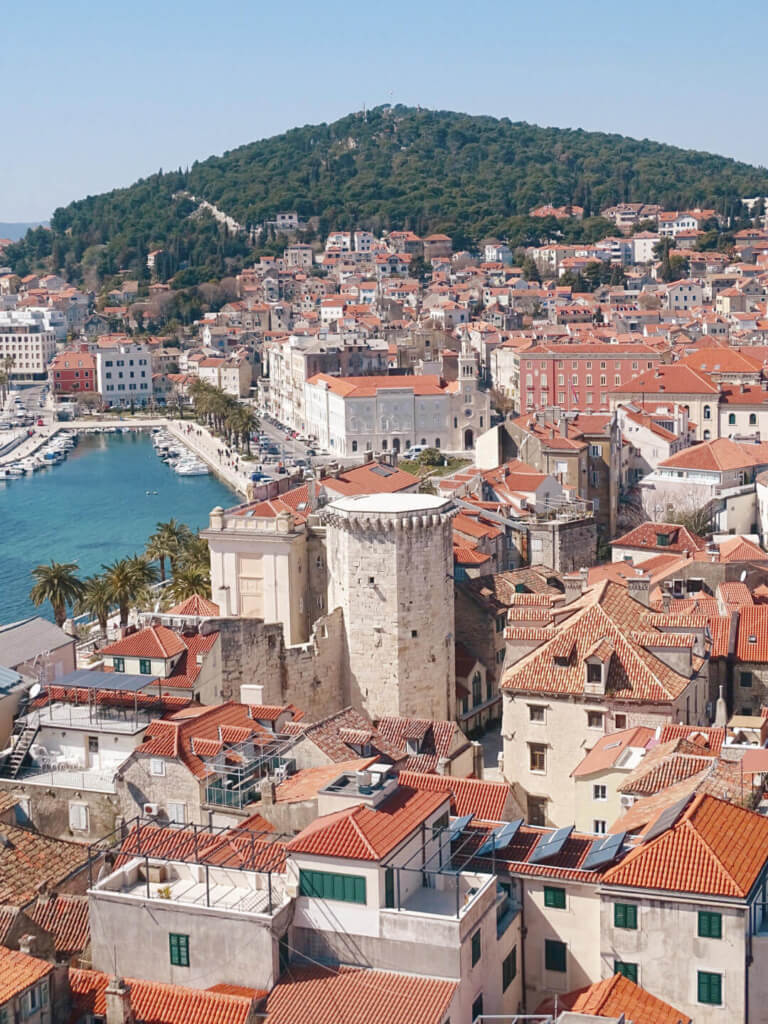
Split: after 3 months living here, I can vouch for there being lots of things to do in Split and many wonderful day trips to the islands, waterfalls and idyllic small towns like Trogir . The Diocletian’s Palace in Split Old Town boasts some of the best-preserved Roman architecture in the world, while Marjan Forest Park offers amazing hikes and views just moments from the city. Dubrovnik: everyone knows this city and for good reason: it’s beautifully preserved, known for its Game of Thrones filming… and hellishly busy and expensive in the summer! Popular things to do in Dubrovnik include walking the old city walls, admiring Lovrijenac fortress, taking the cable car (or hiking) up Mt Srd, hitting the beaches and cruising to Lokrum Island . Zadar : this underrated Dalmatian coastal city is a great alternative if the touristic cities above don’t take your fancy… or suit your budget! Take day trips to Pag Island and Dugi Otok island. Zagreb : the capital of Croatia isn’t half as atmospheric as Dubrovnik and Split but it’s a decent base with nice cafes , street art and easy access to Plitvice Lakes National Park .
Budget and money in the Balkans
Excluding Croatia and Montenegro, I was amazed by the cheap prices in the Balkans. Many places are almost on a parr with Southeast Asia! On a backpackers budget, you could live on €25 a day. I certainly kept the costs down by staying in hostels but I like wine and brunch too much to stick to €25 a day since turning 30 😉 Montenegro, Croatia and Kosovo use the Euro but the other countries have their own currencies. I would recommend spending most of your currency before leaving because you can rarely exchange it outside of the countries. But do save the local equivalent of a few Euros for luggage and station fees if leaving by bus.
Thanks for reading!
Check out all my Balkans blogs:
Serbia: Things to do in Belgrade, Serbia | Reasons to visit Belgrade Kosovo: What to do in Pristina, Kosovo Albania: The ultimate Albania itinerary | Things to do in Tirana, Albania | Valbona hiking guide | Is Albania safe for female travellers? North Macedonia: Attractions in Skopje, North Macedonia Romania: 2 week Romania itinerary | What to do in Brasov, Romania | Things to do in Timisoara, Romania | hidden gems in Bucharest | Romania travel tips Bulgaria: 2 days in Sofia, Bulgaria | Hiking Rila Lakes in Bulgaria | Visiting Rila Monastery, Bulgaria
Slovenia: The perfect Slovenia itinerary | Things to see and do in Ljubljana | wine tasting in Ljubljana | the best restaurants in Ljubljana Croatia: 7 day Croatia itinerary | Things to do in Split | Split day trips | Marjan Forest Park | Split restaurants | Split coffee | Krka Falls from Split day trip | What to do in Trogir | Things to do in Dubrovnik | Lokrum island guide | Croatia solo travel | What to do in Zagreb | Zagreb cafes | Plitvice day trip from Zagreb | Zagreb street art | things to do in Zadar | Pag island | Dugi Otok Island Bosnia & Herzegovina: Things to do in Mostar | The top attractions in Sarajevo | Is Sarajevo worth visiting?
For more Europe content, follow me on Instagram , Facebook , Twitter and YouTube .
TRUSTED RESOURCES FOR VISITING BALKANS Getting around by air – I use Skyscanner and search by month to see the cheapest dates. Driving in Europ e – use Rentalcars.com to compare car rentals in European countries (and all around the world). For buses around Europe, I use Flixbus . It doesn’t connect all destinations in the Balkans but does service some popular locations like Belgrade, Skopje, Sarajevo and Podgorica. For hotels and self-catering apartments, I use Booking.com . You can filter by review score and price to find the best-rated budget places. For hostels, I use Hostelworld . To save money on accommodation, I use Trusted Housesitters , a website that connects homeowners going away and travellers who can sit their homes & pets. Browse tours and activities on GetYourGuide and Viator . Need travel insurance ? I use True Traveller (for UK & Europe residents) since it’s affordable but covers everything you’d need including various activities, valuables and pre-existing conditions. Unlike some companies, they insure you if you’re already travelling / don’t yet have your flight home booked. Get a quote . For travel insurance for other nationalities, I recommend Hey Mundo and for long-term digital nomad travellers, I suggest Safety Wing . Check out my resources page for more travel discounts and budget tips from my 10+ years on the road!
Rose is a solo traveller from the UK who has been on the road since 2015. She wants to show other women that solo travel isn't scary and doesn't have to be expensive! Rose has lived in Mexico, Canada and all over Asia, seeking out food, bubble tea and street art wherever she goes!
Leave a Reply Cancel reply
Your email address will not be published. Required fields are marked *
You can see how this popup was set up in our step-by-step guide: https://wppopupmaker.com/guides/auto-opening-announcement-popups/
Ultimate Balkans Travel Guide by Country
Not long ago, the Balkan countries were considered quite off-the-beaten path destinations. That is not so true anymore. From Croatia to Bulgaria, and everything in between, the region is becoming more and more popular.
The area is still ripe for discovery, though, as even the busiest cities, beaches, and national parks won’t be nearly as crowded as other parts of Europe. Especially if you go during shoulder or off-season.
I’ve put together a short round-up of each country in this travel guide to help you figure out the best way to travel the Balkans.
This post contains affiliate links.
Quick Balkans Geography Lesson
Technically, the Balkan Peninsula stretches from Slovenia (east of Italy), south down the coast of the Adriatic Sea to Greece, east to European Turkey, then north to Romania with Serbia in the center.
For this piece, we’ll focus on the following countries in the Western Balkans:
- Bosnia and Herzegovina
Related: 8 Tips for Traveling in the Balkans

Random Note : You’ll find that smoking indoors is much more common in the Balkans than in Western Europe or the United States. This is especially true in Albania, Serbia, and North Macedonia, so if you’re sensitive to cigarette smoke, consider eating outside.
Another Random Note: If you love wine, keep an eye out for wineries in the Balkans!

The Western Balkans Today
Take a listen and learn…

The country in the region least like the rest, Slovenia looks and feels more like its northern neighbor Austria than its neighbors to the south.
As the first former-Yugoslavian country to join the European Union, and until January 2023, the only one in the Schengen Zone, it has more of a Western European vibe than the rest of the Balkan countries.
This makes Slovenia the perfect starting destination if you want to ease into the region. Its cities are full of charming streets, wine bars, and museums, and you are never far from the mountains, lakes, or coastline.
Must-know Facts About Slovenia
- Capital City: Ljubljana
- Currency: Euro
- Languages: Slovenian, Hungarian, Italian
- Time Zone: Central European Time (CET) or Central European Summer Time (CEST)
- Outlets and Plug Types: Type C, the standard European plug, and Type F, used in almost all European countries and Russia.
- Electricity: Voltage – 230V. Frequency – 50Hz.
*If visiting Slovenia from the US, you will need a power plug adapter and voltage converter , unless you have dual voltage devices.
Visa Info for Slovenia
Slovenia follows Schengen Zone rules, which allows 90 days visa-free within every 6-month period for US citizens. More information can be found on the U.S. State Department’s website .
Where to Go in Slovenia
Ljubljana – The capital city is worth a couple of days’ visit. Enjoy live music at wine bars, sip espresso at outdoor cafes, or museum hop!
Julian Alps – A great alternative to the often crowded mountains in France, Switzerland, and Bavaria.
Lake Bled + Lake Bohinj – Turquoise lakes amongst the mountains where you can chill out, hike, enjoy water sports and even stay in a treehouse!
Skocjan Caves – Deep caves near Ljubljana that are a must-visit while in Slovenia.
Lipica – Admittedly not much here but if you love horses, the famous Lizzapiners can be found in this town.
Piran – The HQ of Slovenia’s tiny coastline if you’re craving the beach.
Transportation in Slovenia
Train – Lines run to and from nearby Austria, Croatia, Hungary, and Serbia, as well as further afield like Germany and Switzerland. There are also a decent number of domestic trains. Check the Slovenian Railway website for more information.
Bus – The most popular way to get around the region! International coaches like Flixbus run frequently to and from other cities. For buses within Slovenia check the bus station website .
Car – A great country for a renting a car and going on a road trip, most international rental car companies operate here. This is the best option for flexibility, as most destinations are no more than a couple hours from each other!
PS: We love using Europcar when renting a car in Europe, as we have found them to be hassle-free and reliable in many countries.

Game of Thrones made sure this country didn’t stay a “hidden gem” for long, but that doesn’t mean it’s not still a spectacular place to visit. It is one of the most diverse countries in the Balkans in terms of landscape, from epic waterfalls to beautiful coastlines and wonderful cities.
Croatia also pairs perfectly with Slovenia as a good “starter” Balkan country for those who have perhaps only ever visited Western Europe or similar countries.
Additionally, as the first Balkan country since Slovenia to become a part of the EU and the Schengen Zone, things are changing quickly in Croatia. Those EU funds can be seen in numerous construction projects throughout the country, as well as price increases, and of course, popularity.
Must-know Facts About Croatia
- Capital City: Zagreb
- Currency: Euro – You can exchange the Croatian Kuna until December 31, 2023 , although it cannot be used for payment.
- Languages: Croatian, Bosnian, Serbian
*If visiting Croatia from the US, you will need a power plug adapter and voltage converter , unless you have dual voltage devices.
Visa Info for Croatia
As of January 2023, Croatia follows Schengen Zone rules, which allows 90 days visa-free within every 6-month period for US citizens. More information can be found on the U.S. State Department’s website .

Where to Go in Croatia
Zagreb – The capital city is often skipped by travelers, but shouldn’t be! Cute cafes, bars in old ruins, numerous museums (including the world famous Museum of Broken Relationships), await you!
Plitvice Lakes National Park – You know those stunning photos of waterfalls in Croatia you see on Instagram? Chances are they’ve been taken here. Hike, take a boat ride, and soak in a different side of Croatia.
Istria Peninsula – This area is very different from the rest of Croatia, both in architecture and in cuisine. Explore seaside towns like Rovinj and Pula, hilltop villages like Motovun and Groznjan, and sample local specialties like Istrian wine, olive oil, and truffles.
Zadar – Croatia’s coolest city awaits you. A seaside town full of hip bars and cafes, one of the few vegan restaurants in the country, and Roman ruins. And don’t miss the sea organ (an instrument built into the seaside, played by the ocean itself!)
Krka National Park – Not far from Split lies this wonderful alternative to Plitvice. Hike for views of beautiful waterfalls, take a boat tour of the Visovac Monastery (located on an island), or explore the Roman ruins.
Korcula – Croatia’s wine island! Just 2.5 hours from Dubrovnik is a whole other world! The island is known for Grk, a unique varietal you’ll only find here, wonderful biking, hiking, and horseback riding tours, and a surprising amount of amazing restaurants in the small town.
Vis – A bit further away than the other islands and slower to be taken up by tourists as it was closed as a military base until the 90s. Now, it’s the ideal place to go to relax, sun tan on the beach, and take a boat tour of the Blue Cave.
Mljet – An island favorite among Croatians and an easy day trip from Dubrovnik. Relax and swim in one of the many saltwater lagoons inside Mljet National Park, or ride a bike from end to end!
Dubrovnik – Of course, the one destination that doesn’t need an introduction. You could spend days wandering the streets, enjoying the wonderful restaurants, hiking the hills above, and going on boat tours in and around King’s Landing, ahem, Dubrovnik.
Transportation in Croatia
Trains – Limited lines run to and from nearby Austria, Hungary, and Slovenia. There are also trains between Zagreb, Rijeka, and Osijek on the coast and Split. Check Croatia Railways for more details.
Bus – The main way to get around Croatia without a car, buses run between most cities and towns, as well as to neighboring Austria, Bosnia & Herzegovina, Slovenia, and Montenegro. Check Flixbus or Croatia Bus .
Car – A great country for a renting a car and going on a road trip, most international rental car companies operate here. Driving is the best option for flexibility, but tolls can be quite steep. And due to the geography, drives can take longer than expected and require switching freeways multiple times (or going into Bosnia and back to get to Dubrovnik).
Ferry – The only way to access Croatia’s islands is by boat. Ferries leave daily from the mainland ports of Dubrovnik, Split, Pula, Rijeka, Zadar, and other smaller towns. Check Croatia Ferries for routes and schedules, the frequency changes from month to month, with summer having the most amount of sailings. Use the CF website as a search engine, but always book direct with the ferry company for the best prices and flexibility.

Bosnia & Herzegovina
It’s hard to imagine that just a couple of decades ago this country was the center of a major conflict. Today, scars of the past are very much still present and I highly recommend you take a walking tour and visit a few of the numerous museums in the capital, Sarajevo.
Like, highly recommend . Do NOT miss the real story of what happened here.
Additionally, talk to locals. In general, they’re pretty friendly and happy to chat over an espresso or glass of wine.
Nature is an often-overlooked feature of Bosnia & Herzegovina, but you should definitely take at least a day (or more) to hike, bike, and explore the mountains and lakes of the region.
Take a listen…
Ethnicity and nationality are tricky subjects throughout the Balkans, particularly in this country. One’s ethnicity is based on religion — Muslims are called Bosniaks, Catholics are Croats, and Orthodox Christians are Serbs. However, this does not mean that Bosnians (nationals of Bosnia & Herzegovina – the majority of the population, regardless of ethnicity) that identify as Croats are from Croatia, or those that identify as Serbs are from Serbia. It’s all about religion and family history.
Fun fact: Why is it called Bosnia & Herzegovina? You might not think the distinction is essential, but anyone from Mostar or the Herzegovina area will tell you they’re Herzegovinian, not Bosnian.
The country actually has four separate regions. There’s Bosnia, which is the central part of the country, where Sarajevo is, a predominantly Muslim area. Herzegovina in the southeast near Croatia, where Mostar is located, is named for the German word “Herzog” which means duke. In the 15th century nobleman, Stjepan Vukčić Kosača ruled the area and began to refer to himself as a duke. Thus, the name, the Duke’s Lands or Herzgogovina stuck. Mainly Croats (Catholics) live here.
There is also the Republika Srpska, which is actually two different areas, one in the north bordering Croatia, and the bulk of it in the east towards Serbia. The Republika’s population is mainly Serbs who want autonomy or reunification with Serbia. And finally, the Brcko District, a small region in the north en route to Serbia with mixed demographics. No one could agree on which region to include it in, so in 1999 the decision was made to leave it autonomous.
Must-know Facts About Bosnia
- Capital City: Sarajevo
- Currency: Convertible Mark
- Languages: Bosnian, Serbian, Croatian
*If visiting Bosnia from the US, you will need a power plug adapter and voltage converter , unless you have dual voltage devices.
Visa Info for Bosnia
Bosnia allows visa-free stays for 90 days within every 6-month period for US citizens. More information can be found on the U.S. State Department’s website .

Where to Go in Bosnia
Sarajevo – The country’s capital city is where you go to learn about the complicated history. Take a walking tour (or two, many are offered with different themes) visit as many museums as you can, wander the Old Town, take the cable car to the old Olympic bobsled run, go out and explore the tunnel used during the Siege, or just enjoy amazing coffee at one of the numerous cafes.
Mostar – A popular day trip from Croatia, this old city is worth at least an overnight. Go wine tasting, watch the locals jump off the old bridge (try it yourself if you’re crazy enough), and browse the many shops.
Jahorina – Not far from Sarajevo (you’ll see this mountain from the train to Mostar) is the country’s largest ski resort. Head there in the winter for runs half the price of Western Europe!
Bihac – Just across the border from Croatia, near Plitvice, is this nature-lovers paradise. Hiking trails, rivers, and waterfalls await you just outside the small city.
Kravica Waterfall – Not far from Mostar is a cascading waterfall you should absolutely make sure to visit. The park has plenty of hiking trails and swimming areas to keep you busy for a day or two!
Herzegovina wine country – Just outside of Mostar is Europe’s latest up-and-coming wine destination. The area’s climate is perfect for high-quality vino and you’ll want at least a day to browse the selection!
Neum – The tiny sliver of coast Bosnia & Herzegovina is allowed is worth a visit if you have time. Relax on the Adriatic at one of the resorts or just cool off before continuing on to Croatia.

Transportation in Bosnia
Trains – Limited lines run within the country, connecting the main hubs of Banja Luka, Sarajevo, and Mostar. I highly recommend the train between Sarajevo and Mostar, much more comfortable than the bus and one of the most beautiful train rides I’ve taken in Europe. Book tickets in advance online , but you’ll need to arrive early at the station to collect them!
Bus – The main way to get around Bosnia & Herzegovina and how you’ll likely arrive in the country. Check Croatia Bus or ask your accommodation or check schedules at the local station.
Car – A great country for a renting a car and going on a road trip, most international rental car companies operate here. This is the best option for flexibility, especially if you’re visiting other Balkan countries.

So many people rave about the beauty of Montenegro and after just a few minutes in the country, you’ll see why! The lush green mountains give way to the fairy-tale-like Bay of Kotor where you could spend months exploring different towns along the shore to find the best one to relax in.
Most visitors just pop into Kotor on day trips from Dubrovnik or off a cruise, but this tiny country in the heart of the Balkans is absolutely worth at least a week (preferably more) to explore. It is also quickly becoming more expensive than neighboring countries, with more and more tourists flooding in from Croatia. Its popularity will only continue to rise, so go now!
A note about the name : In Italian “monte negro” means black mountain , which is what the Venetians saw in the thick forests that dot the area’s peaks. The name has stuck ever since.
Must-know Facts About Montenegro
- Capital City: Podgorica
- Languages: Montenegrin, Serbian, Bosnian, Albanian, Croatian
*If visiting Montenegro from the US, you will need a power plug adapter and voltage converter , unless you have dual voltage devices.
Visa Info for Montenegro
Montenegro allows visa-free stays for 90 days within every 6-month period for US citizens. More information can be found on the U.S. State Department’s website .
Where to Go in Montenegro
Kotor – Montenegro’s most famous destination and UNESCO world heritage site, base yourself here for a few days. Hike up to the castle that overlooks the city, wander the old town, or take a boat tour of the bay.
Budva – Not far from Kotor, Budva is a cute contrast to other towns on the bay, as after a massive earthquake in 1979, it wasn’t rebuilt in the old style, unlike Kotor and Perast. Still, the Old Town is a lovely place to wander and you can take boats to Sveti Nikola Island where hikes and beaches await you.
Herceg Novi – A true gem and an easy day trip from Dubrovnik (as the closest town in Montenegro to Croatia) this small town is the ideal place to relax, for those in the know.
Bar – The country’s ferry port is a nice place to spend a morning or afternoon strolling or relaxing by the water before catching your boat.
Sveti Stefan – Just down the coast from Budva is this charming beach town, with sandy shores that stretch for miles. The highlight is of course the orthodox church of the same name on the island that juts out from the mainland.
Perast – Another UNESCO world heritage site, Perast will completely charm you. Climb the Bell Tower, marvel at Saint Nikolas’ church, and take a boat to Our Lady of Rocks, an artificial island built over the centuries by fishermen laying rocks to thank God after a narrow escape at sea.
Durmitor National Park – This park boasts dramatic mountains, glacial lakes, and prime hiking trails for adventurers seeking natural beauty.
Transportation in Montenegro
Bus – The main way to get around Montenegro and how you’ll likely arrive in the country. Flixbus and Croatia Bus both operate in the country. However, for the most up-to-date timetables, check the local station.
Car – A great country for a renting a car and going on a road trip, you’ll want one to get out in the mountains and enjoy the beautiful nature this country has to offer. Most international rental car companies operate here. This is the best option for flexibility, especially if you’re visiting other Balkan countries. Just note drivers here tend to tailgate pretty hardcore.
Ferry – Ferries leave the port of Bar daily to Bari and Ancona in Italy, where you can connect to Croatia, Albania, or Greece.

Long a mystery to the world, as the dictator Enver Hoxha kept the country closed off from the rest of the world between the end of World War II and 1990. During those decades, Albania was one of the most isolated countries in the world. Now, it’s one of Europe’s premier up-and-coming destinations with some of the best coastline in the area, most of which is largely undiscovered.
Additionally, if you are an outdoor enthusiast, don’t miss the Albanian Alps, where trails are still quite uncrowded.
If you’d like to learn more about the often sad, but very interesting history of this country, I’d recommend the Site of Witness and Memory in Shkoder , and Bunk’art 1 and 2 as well as the National Historical Museum in Tirana to learn more. Additionally, Tirana Free Tours give amazing history lessons as you wander the capital city!
Related: 5 Tips for Traveling to Albania
Must-know Facts About Albania
- Capital City: Tirana
- Currency: Albanian Lek
- Languages: Albanian, Greek, Romani
*If visiting Albania from the US, you will need a power plug adapter and voltage converter , unless you have dual voltage devices.
Visa Info for Albania
No visa needed for US citizens visiting for less than one year. More information can be found on the U.S. State Department’s website .

Where to Go in Albania
Tirana – The country’s capital is often skipped by travelers, but don’t make this mistake! Charming cafes and restaurants await you, along with some of the most affordable shopping in Europe. This is also the museum capital of the country, so make sure to visit one and take an afternoon to stroll the large city park.
Sarande & the Riveria – A beach vacation on the cheap ; this area is quickly blowing up, so get your trips in now! Enjoy electric blue water, waterfront accommodation, and nightlife that rivals the Greek islands for a fraction of the price!
Berat – An ancient city in the mountains, you’ll want to make a day trip here a priority. The city has kept the Ottoman-era style architecture and on approach, it looks all the buildings are staring at you due to front-facing windows. You can walk the promenade, explore the Berat Castle, and visit the wonderful Ethnographic Museum.
Gjirokaster – Another ancient city, this is the hub for the surrounding mountains and a great place to break up your journey south from Tirana.
Shkoder – In the north of the country lies this often overlooked, but fascinating city. Situated near a large lake of the same name, this is a great stopover between Montenegro and southern Albania. Hike in the nearby mountains, explore the local fortress, or wander the streets, galleries, and museums of the old town.
Vlore & Himare – A bit too far north to be considered part of the “Riviera” both these seaside towns are great options if you want more of a laid back ocean trip. Don’t expect much in the way of activities, these parts are for laying by the beach and enjoying espresso or wine in the sun!
Transportation in Albania
Train – Limited domestic lines operate between Tirana to Durres and Durres and Elbasan, although departures are extremely limited. Check Albanian Railways for more information.
Bus – The main way to get around Albania, buses run regularly to neighboring Kosovo, North Macedonia, and Montenegro, as well as to most destinations within the country. You typically don’t need to book in advance, just pay the driver. Just note in Tirana there are two bus terminals; one for international routes and one for domestic, so make sure to tell the taxi driver where you’re headed!
Car – The best way to have full freedom, although driving in Albania isn’t for the faint of heart. Many towns don’t have traffic lights and drivers can be aggressive, so be prepared!
Ferry – A few boats operate between four main ports and Italy and Greece. From Durres and Vlore you can catch ferries to Ancona, Bari, and Brindisi in Italy. From Saranda and Himare you can take direct ferries to Corfu in Greece.

North Macedonia
While many of the countries discussed to this point are quickly becoming trendy destinations, North Macedonia is one of the few countries in Europe that can truly still be described as a “hidden gem.”
Nestled between Greece, Albania, and Kosovo, this delightful nation is full of vibrant green mountains, scenic lakes and rivers, and interesting towns. It’s also known as a great sun destination — without the crowds or prices of Greece.
A note on the name: The country has undergone many name changes over the years. Initially, after Yugoslavia dissolved, the newly independent country called itself the “Former Yugoslav Republic of Macedonia” often shortened to the Republic of Macedonia or simply, FYROM.
However, from the beginning, Greece objected to the name because the Greek region of the same name already existed directly to the south. So in 2019, the nation changed its name again to North Macedonia to appease their neighbors (and, hopefully, aid in their bid for EU membership.)
Must-know Facts About North Macedonia
- Capital City: Skopje
- Currency: Macedonian Denar
- Languages: Macedonian, Albanian
*If visiting North Macedonia from the US, you will need a power plug adapter and voltage converter , unless you have dual voltage devices.
Visa Info for North Macedonia
North Macedonia allows visa-free stays for 90 days within every 6-month period for US citizens. More information can be found on the U.S. State Department’s website .

Where to Go in North Macedonia
Skopje – The country’s capital could be mistaken for many cities, with architecture and riverfront walk reminiscent of Paris, an Old Bazaar that brings Turkey to mind, and charming cafes and leafy streets that could be Athens. However, the most interesting feature are the over 250 statues commissioned in 2014 to bring tourists to the area. You can’t go more than a few steps without encountering a massively imposing statue or fountain.
Ohrid & the Lake – The shining star of this landlocked country (Macedonians have to drive to Albania or Greece to enjoy the sea) is the massive Lake Ohrid, the perfect place to relax. The town of Ohrid is adorable with plenty of cafes, a fortress, and churches to keep you busy. And of course, don’t miss the Sveti Naum Monastery, accessible by a scenic boat ride every day.
Galicica National Park – Not far from Ohrid is this massive national park, with the best hiking and mountains in the country. Allow at least a day or more to truly explore the beautiful scenery!
Bitola – Located between Ohrid and the Greek border, this charming town is full of cafes, parks, and markets, although less crowded than the capital city.
Related: How to Get from Ohrid to Meteoria, Greece
Transportation in North Macedonia
Train – Limited lines operate between Skopje and Serbia, Kosovo, and Greece. Domestic routes run between a few cities. Check North Macedonian Railways Transport for more details.
Bus – The main way to get around North Macedonia and how you’ll likely arrive in the country. Routes run regularly between the country and Albania and Kosovo. There are also frequent domestic lines. You can book directly at the bus stations and it’s recommended to do so a day in advance (although there’s usually room.)
Car – The best way to access the mountains and enjoy the outdoors. Most international companies operate here. The best option for flexibility, especially if you’re visiting other Balkan countries.

Europe’s youngest country, founded in 2008 when it declared independence from Serbia (much to Serbia’s chagrin) and is still relatively unknown to tourists. If foreigners are aware of Kosovo, it’s likely related to the conflict in the 1990s, when Serbia tried to prevent the country from becoming independent and carried out ethnic cleansing.
Today, tensions are still present, but Kosovans or Kosovars enjoy life in relative peace and you’ll have minimal issues visiting the country. Most Kosovars are ethnically Albanian and much of the country was part of Italian-controlled Albania until Yugoslavia formed, so the two countries remain closely linked.
Today, Kosovo is a true undiscovered treasure and is home to adorable small cities and beautiful nature. Don’t miss this amazing destination on your next Balkan trip!
In addition to Serbia, the United Nations as well as many countries, including Spain and China, refuse to recognize Kosovo. This can have implications for your passport and entry, more on that in the visa section.
Related: What to Eat in Kosovo
Must-know Facts About Kosovo
- Capital City: Pristina
- Languages: Albanian, Serbian
*If visiting Kosovo from the US, you will need a power plug adapter and voltage converter , unless you have dual voltage devices.
Visa Info for Kosovo
Kosovo allows visa-free stays for 90 days within every 6-month period for US citizens. More information can be found on the U.S. State Department’s website .
*Since Serbia does not recognize Kosovo, you may encounter issues visiting Serbia with a Kosovo stamp if you entered through another country (i.e. Albania or North Macedonia). I’ve heard mixed stories about this, and I didn’t receive a Kosovo stamp on my visit in 2023. So, enter and leave Kosovo through Serbia to ensure issue-free travel to Serbia.

Where to Go in Kosovo
Prishtina – Kosovo’s capital doesn’t have much in the way of big sights, but it’s still worth a visit. Marvel at the odd National Library, Bill Clinton statue, and check out the ever-changing NEWBORN monument. And don’t miss out on the cafe culture. It is unmatched. No Starbucks here, but there is the Kosovan (and superior) chain, Prince Coffee House.
Prizren – Considered the country’s “cultural center” you’ll find cobblestone streets, cafe-lined rivers, and numerous mosques and churches to visit. If you want to get out in nature, this is a great area to do so. You can take the short (but steep) hike up to the fortress — just don’t be fooled by what looks a simple climb, it is brutal in the heat.
Peja – Where most of the Orthodox churches in the country are located. It also has great access to nature, as Rugova Canyon (one of the largest in Europe) isn’t too far away. There is a via ferrata there that may have you shaking in your boots!
Transportation in Kosovo
Train – Domestic routes run daily between Prishtina and Peja. Check TRAINKOS for more details.
Bus – The main way to get around Kosovo and how you’ll likely arrive in the country. Routes run regularly between the country and Albania and North Macedonia. There are also frequent domestic lines. You can book directly at the bus stations and it’s recommended to do so a day in advance (although there’s usually room.)
Car – The best way to access the mountains and enjoy the outdoors. Most international companies operate in the country. The best option for flexibility, especially if you’re visiting other Balkan countries.

Serbia has a not-underserved reputation as being rougher along the edges than other Balkan countries. The nature of the area is lovely, but not in the obvious way of the eclectic water of Albania or North Macedonia or the epic waterfalls of Croatia and mountains of Bosnia & Herzegovina. You have to look a bit harder to appreciate the landscapes and urban quirks.
Related: Belgrade, Serbia City Guide
Related: Best Belgrade Restaurants – A Budget Foodie Guide
Must-know Facts About Serbia
- Capital City: Belgrade
- Currency: Serbian Dinar
- Languages: Serbian, Albanian, Hungarian, Slovak, Romanian, and Bulgarian
*If visiting Serbia from the US, you will need a power plug adapter and voltage converter , unless you have dual voltage devices.
Visa Info for Serbia
Serbia allows visa-free stays for 90 days within every 6-month period for US citizens. More information can be found on the U.S. State Department’s website .
*If you’ve visited Kosovo prior to traveling to Serbia and did not enter via the Kosovo-Serbian border, you may be denied entry. More information can be found on the U.S. State Department’s website .
Where to Go in Serbia
Belgrade – The largest city is a bizarre mixture of amazing cafes and gelato shops, crazy nightlife, and great budget accommodation.
Novi Sad – The architecture here is definitely leftover from the Austro-Hungarian Empire and feels totally different from the rest of the country. The city is great for people-watching at cafes and enjoying a different side of the country.
Tara National Park – In the west of Serbia lies this mountainous escape where you can enjoy stunning lakes on great hiking trails and quiet forests.
Negotin Wine Region – In rural Eastern Serbia, you’ll find a surprisingly vibrant wine scene, where you can sample interesting varietals accompanied by Balkan cheese.
Transportation in Serbia
Train – Lines operate between Belgrade and Istanbul, Skopje, and Sofia. Domestic routes run between Belgrade and Nis, Novi Sad, and Subotica daily. Check Serbian Railways for more details.
Bus – The main way to get around Serbia, routes run regularly between the country and its’ neighbors. There are also frequent domestic lines. You can book directly at the bus stations and it’s recommended to do so a day in advance (although there’s usually room.)
A year in each country would never be enough to explore all that the incredible Balkan peninsula has to offer.
We hope this Balkan travel guide helps you in your travel planning, and if the Balkans aren’t on your list yet, do yourself a favor and put them there immediately!
More on Traveling in the Balkans
- A story from traveling in the Balkans – Bulgaria, Macedonia, Albania, Greece
- A story from traveling in the Balkans – Athens to Bulgaria
- Driving Through the Balkans with Busabout
Ready to Book Your Trip?
Some of these links are affiliate links.
Use these BMT-approved travel resources to plan your best budget-friendly trip yet!
Flights – Learn our tried and true strategies for finding the cheapest flights .
Accommodations – Using Booking.com to search for hostels and budget hotels has many benefits, including free cancelation and member upgrades.
Travel Insurance – Now more than ever, we encourage the purchase of travel insurance for every trip. Insurance protects you against cancellations, lost luggage, theft, injury, and illness. Compare plans at:
- InsureMyTrip
- World Nomads
- Allianz Travel Insurance
Activities – Find amazing things to do that won’t break the bank in destinations worldwide on Viator .
Need an international SIM card? We suggest pre-ordering from SimOptions .
- Tags Albania , Balkans , Bosnia , Croatia , destination guide , food , Kosovo , Macedonia , Montenegro , road trip , Slovenia , transportation

- Living In Croatia
- Croatian Recipes
- Balkan Recipes

Home > Two Week Balkans Road Trip Itinerary
Two Week Balkans Road Trip Itinerary

Written by our local expert SJ
Sarah-Jane has lived in Croatia for 10+ years. SJ, as she is known, has been traveling the Balkans & beyond since 2000. She now shares her passion for traveling with her husband & kids.
Want an easy-to-follow two-week Balkan road trip? Then look no further; here is your guide to a Balkans road trip for 2 fun-filled weeks

Were you hoping to find some secret gems on your Balkans road trip or looking for the most stunning natural parts of the region? This guide should help you sort through the hundreds of destinations in the Balkans so you can guarantee you are seeing the best of the best on your two-week trip through Europe’s forgotten oasis.
Fear not; if our itinerary doesn’t cover an area of the Balkans you are eager to see, we have loads of other Balkan travel guides on the site that may suit your fancy.
You don’t have to use this itinerary as an end-all-be-all for your trip. Sift through our many guides and itineraries and use the information to put together your dream trip according to your desires.
Skip Ahead To My Advice Here!
Where Are The Balkans

The Balkan peninsula is a geographic region in the southeast of Europe, usually consisting of a dozen countries: Croatia, Bosnia and Herzegovina, Slovenia, Serbia, Montenegro, Kosovo, Macedonia, Romania, Bulgaria, Albania, Greece , and Turkey.
Although the Balkans region is not necessarily defined, generally, these are the countries that are referred to as part of the Balkans on Chasing the Donkey. Others disagree.
The region is named after the Balkan mountain range, which extends nearly all the way across the peninsula. The peninsula is trapped between the Adriatic Sea to the West, the Black Sea to the East, and the Mediterranean in the South and is one of the best regions for nature escapes in Europe.
How To Travel In The Balkans – We’ll Help You Plan Your Holidays In The Balkans
Getting around the Balkans is easy and getting easier by the year. With advances to its intricate train network, bus lines and routes being added to connect popular tourist towns, and improvements in highway systems in almost every country, traveling around the Balkans has never been easier.
Not to mention, it seems budget airlines have figured out people want to travel to the Balkans and have added many affordable routes throughout the region, with many more in the works.
However, a self-driven road trip is our favorite way to get around the Balkans because of its cost, efficiency, and pure beauty. We will set an itinerary for this two-week Balkan road trip .
When To Travel In The Balkans
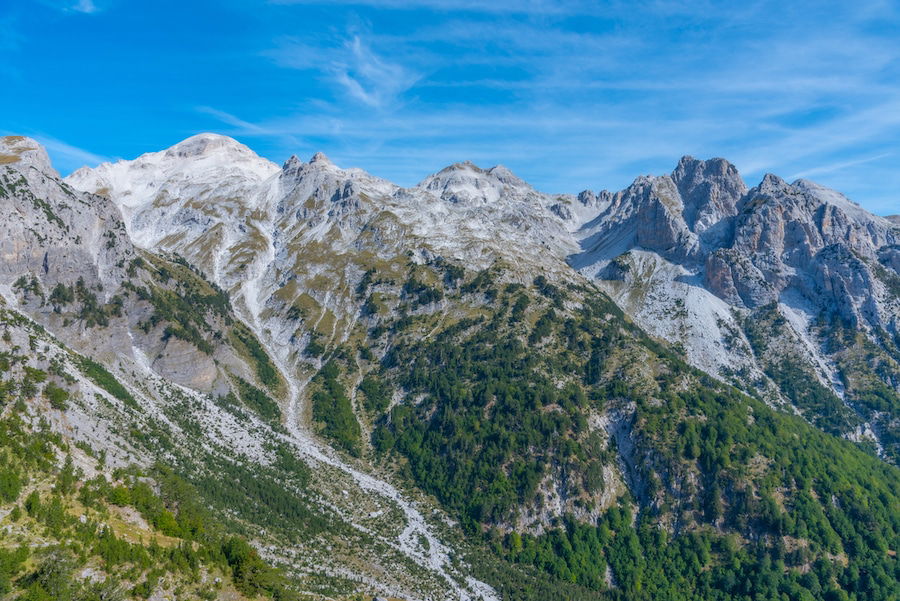
Between the top-notch ski run s at an affordable price, the Adriatic’s immaculate beaches , the unspoiled hiking trails among dozens of national parks, and the dashing water activities of the Black Sea , there is fun for all seasons in the Balkans.
You may take a winter vacation to ski among the fantasized peaks of the Balkans range and decide you crave a summer vacation to its beaches afterward. There is no reason not to keep coming back, as there is a journey to be had at all times of the year.
For the sake of 10 days in the Balkans itinerary, we will assume it is the travel season , and you are road-tripping during the summer months along the Adriatic Coast.
Balkan Countries To Visit In Two Weeks
- Bosnia and Herzegovina
2 Week Balkan Road Trip Itinerary
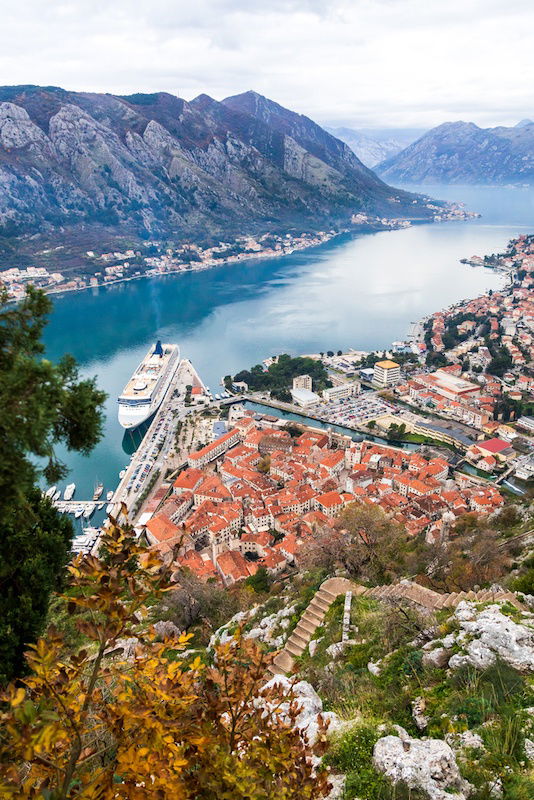
You will likely fly to the Balkans unless you travel from somewhere nearby, where you can come with your own vehicle. From there, you will need to rent a car to start your road trip . Starting from any of these destinations is suitable; we have mapped out this specific itinerary to spare you time in back-tracking and distances between cities.
Not to waste more breath, here is our suggested two-week Balkans Itinerary:
Where To Start Your Balkans Road Trip
As mentioned, you can start anywhere in the Balkans, and there is always another nearby city within driving distance worth visiting . However, we suggest starting in Albania’s capital city for convenience when planning for this itinerary.
Tirana, Albania (3-4 Days)
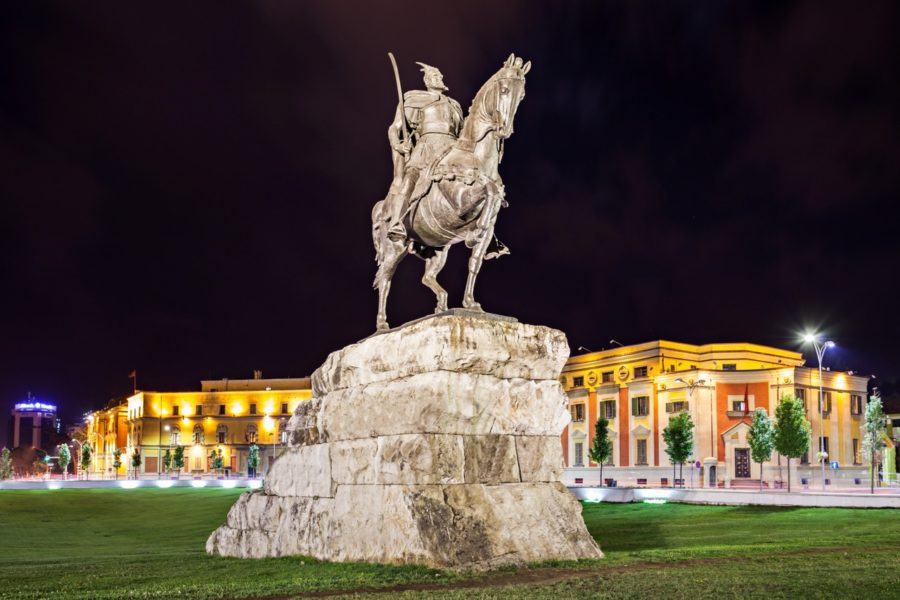
Tirana is the capital and largest city in Albania but by no means the only place to be in Albania. Kruja and Durres are within an hour’s drive from the capital city and well worth your time during your visit.
We suggest spending a day in each of these cities during your stay in Albania.
Start in Tirana , where you must check out Skanderbeg Square’s main square, which is excellent for people-watching. Check out the National Historical Museum, the famous statue of Albania’s #1 hero, and the square’s namesake, Skanderbeg.
Tirana is filled with lovely people, just as all of Albania is, and prices are exceptionally affordable for things like checking out the local cuisine and bar scene.
Next, travel to Kruja – a charming medieval village between soaring mountain peaks and truly green valleys. Besides its picturesque natural appearance , Kruja also has very significant historical importance to Albania.
Very few foreign tourists make the day trip to Kruja; however, you will find a lot of Albanian weekend warriors visiting on days off of work. Despite that, the village has been able to remain wholly authentic and void of tourist traps .
Lastly, on your third and final day, you can travel to the coast of Durres for a true beach escape. It is the most ancient city in the whole country and owns the biggest port in Albania .
Durres has over 3,000 years of history, dating back to 627 B.C., earning it the nickname of the eternal city over the Adriatic. The most notable tourist attraction and historical significance is the amphitheater of the Roman Emperor Hadrian – the second-largest amphitheater in the Balkans.
When the three days are over, you will likely be craving more of Albania’s culture , and the good news is there is still plenty to see of this country, just not on this itinerary. The Albanian Riviera in the South is one of the most overlooked areas of the Balkans and Europe. Save it for another trip!
- Your Guide To Tirana, And What To Do There
- Where To Stay In Tirana
- Renting A Car In Albania
Budva, Montenegro (2 Days)

About four hours north of Tirana along the Adriatic coast is the exciting Montenegrin city of Budva. With so much to experience in the Balkans, Montenegro is often skipped in favor of more popular tourist countries; however, those who don’t miss this place will be treated to an authentic experience that many more popular countries in the Balkans cannot provide.
Budva and Sveti Stefan are two semi-secret coastal towns in the tiny country, which are both worth visiting. If you spend two days between the two places, you will probably have seen all you need to see – but it is still worth the time.
In Budva, step through the medieval gate leading to town directly onto the beach and stroll down the coast for about five minutes until you reach Mogren Beach – Budva’s best. Here, you will notice a bronze statue of a ballet dancer gazing out to sea. It is the graceful symbol of Budva – a town we would argue is just as graceful as the statue itself.
You can rent paddleboards or kayaks and cover more of the pristine waters surrounding the area that way.
Just six miles to the East is Sveti Stefan , which is a must-visit. It is a fortified town built on a small island connected to the mainland by a sand spit. It is a rare geographical feature but an even rarer town. Walk through its narrow streets, and you can easily spend a few hours soaking up the beauty. If you still have energy, find a way up the hillside on the mainland for an even better bird’s eye view of Sveti Stefan.
Again, Montenegro is a beautiful country and worth more time on your visit – however – for the sake of keeping to the itinerary, it may be better to revisit another time. Podgorica is the country’s capital and is only about an hour away. The city is known to be suffering through an identity crisis after a long history of controlling empires, which gives it a huge, unpronounced feel.
- Your Guide To Montenegro And What To Do There
- Your Guide To Budva And Sveti Stefan
- Where To Stay In Budva
- Renting A Car In Montenegro
Dubrovnik, Croatia (1-2 Day)

Just 2.5 hours northwest of Budva along the Dalmatian Coast is the bustling little seaside town of Dubrovnik in Croatia. You may have seen a few places in Dubrovnik on HBO already, as it has gained some fame as the host of many scenes from the popular series Game of Thrones .
Though tourism has soared in the past decade along the coast of Croatia, Dubrovnik is well-deserved in its attention and is still a must-see on your Balkan road trip .
Make sure you traverse the narrow lanes of its fortified Old Town and take in the excellent architecture that drew the attention of the monster series, G.O.T.
After a long day on the beach, make sure you catch the sunset at one of the seaside cliffside bars offering happy hour at golden hour. You may need to arrive early at a few more popular spots – especially during the busy season – and be ready to witness magic in the sky as the colors change all sorts of vibrant colors. Dubrovnik is one of the best places in the Balkans for sunset magic.
- Your Guide To Dubrovnik And What To Do There
- Where To Stay In Dubrovnik
- Renting A Car In Croatia
- Beaches In Dubrovnik
- Game Of Thrones Locations In Dubrovnik
- Accommodation In Dubrovnik With Pools
- Camping In Dubrovnik
Mostar, Bosnia-Herzegovina (1 Day)

After Dubrovnik , whether you decide to spend a night in the city or not, you can drive to your next destination in Bosnia and Herzegovina – a much quieter destination for a good night of sleep – in a tiny valley village called Mostar.
It is due north, about 2.5 hours from Dubrovnik , and has a tremendous nighttime ambiance that you will appreciate. It will likely be late by that time, so you can check into your hotel and get ready to witness the largest city in Herzegovina in the morning.
Despite being the largest city, there is no need for concern. It is quaint but full of dark history. You can hike the hills, but watch out for undetonated landmines. This might be a bit intimidating, so if you’d like, you can stay in town and witness its history on the walls – literally. Bullet holes still grace the concrete and stone walls around town. It is a tell-tale sign of a violent past, but do not fret; Mostar is such a peaceful place today.
Most people hang around the enchanting famous Old Bridge (Stari Grad), where the two sides of the town connect over the river. You can join if you dare (the bridge is about 60 feet high). If you are lucky, you may catch the locals jumping from the bridge into the river – a sort of tradition in town.
Spend the afternoon walking around the cobblestoned town, and when you feel like you have walked around the entire city, you can grab a drink and get a good night’s sleep or head to your next destination – back to Croatia !
- Your Guide To One Day In Mostar
- Where To Stay In Mostar
- Renting A Car
- Guide To The Mostar Bridge Jump
Split, Croatia (1-2 Days)

You will cross borders several times, and here you are crossing back into the long, narrow nation of Croatia to the most famous seaside town, Split.
Split has become one of the hottest destinations in the Balkan peninsula . If you are road-tripping during the summer, you may have to book accommodation in advance – especially when arriving in the nighttime; you don’t want to be left without a place to sleep.
Split is the second-largest city in the country and the largest in the Dalmatia region. Despite all the people, we like Split because of its blend of modern living and ancient history.
You only need one day to see the sites in Split , but you will notice many people hanging around at the resorts and taking boat trips for an extended stay.
Whatever you do, there are a few things we suggest, none of which include beaches or lazing in the sun.
The Old Town and its maze of narrow streets and cafes are worth getting lost in. We’d also suggest climbing the Bell Tower of St. Domnius Cathedral for unparalleled views of the city and the fifty shades of blue in the Adriatic Sea. Lastly, you must visit Diocletian’s Palace – especially as a Game of Thrones fan, as multiple scenes were shot here at this UNESCO World Heritage Site .
Alternatively, if you want to run away from the crowds, consider traveling just a short half-hour down the coast to Omis , which is regarded as very similar to Split in architecture but half the price and size (and madness) of Split.
After a full day in Split, you will need to be well-rested for your longest drive of the road trip , but don’t worry; the time is well worth it, and the ride is beautiful.
- Your Guide To Split And What To Do There
- Where To Stay In Split
- Best Clinic In Split
- Beaches In Split
- Boat Trip From Split
- How To Spend 24 Hours In Split
- How To Spend 48 Hours In Split
- Blue Cave Tour From Split
Zagreb, Croatia (3 Days)
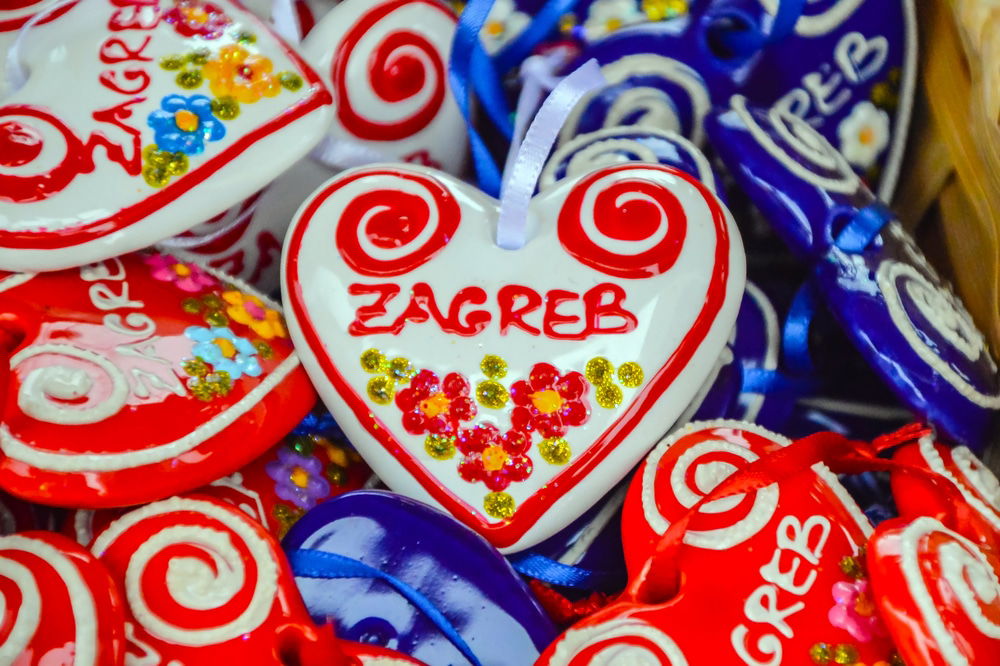
Four hours north of Split is Croatia’s stunning capital in the northern part of the country, Zagreb. It is one of the best cities in the Balkans to to walk around and experience the culture vibrating off the walls. We love Zagreb for many reasons and believe it is worth at least two days of your itinerary .
There are so many things to see as far as sites go; however, our favorite part of the city is probably its most popular. Gornji Grad – the upper town – with its cobblestoned streets and head-turning architecture, is worth at least a few hours of walking around and grabbing photographs.
Though we could argue your time isn’t wasted leisurely strolling its streets, it is fair to assume that some people would like to stay busy seeing the sites. No worries; there are plenty of things to do in Zagreb too.
One of the more entertaining things you can do in Zagreb is spend an hour or two in the Museum of Broken Relationships. People worldwide have submitted their sob stories about lost loves, and is there anything more amusing than complicated love stories (ask Nicholas Sparks)? And yes, it is precisely what it sounds like. The museum is so well done and has become Zagreb’s top tourist attraction based on pure intrigue.
There is also a booming street art scene in the city, which has turned the dull walls into a collection of youth culture and talents, making the city the most beautiful it has ever been.
It is a vibrant city full of young people, bustling chic cafes, talented and entertaining street performers, and green parks around every corner you least expect it. The city is forever in our hearts, and we are sure it will find a place in yours, too.
- Your Guide To Zagreb, And What To Do There
- Where To Stay In Zagreb
- How To Get To Zagreb
- How To Go From Zagreb To Plitvice Lake
Ljubljana (2-3 Days)
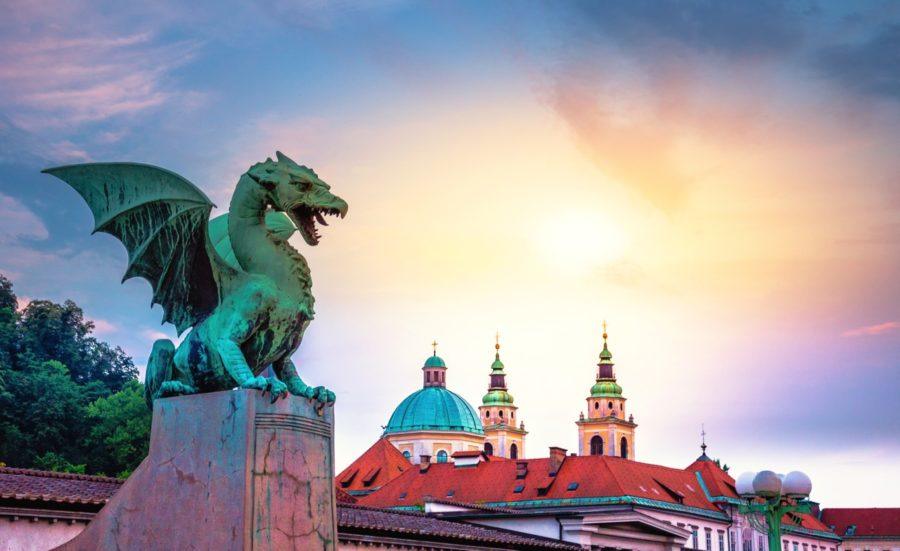
We end our itinerary a little under two hours northwest of Zagreb in a new country – in the capital of Slovenia, Ljubljana. It is another city with a young identity and lively streets. You can walk along the river and be entertained for hours. Or, set up shop on the river at a cafe and spend time watching life go by.
Speaking of capital cities in Europe with a lot of green space, Ljubljana has set a precedent in that category, making it one of the prettiest urban cities in Europe – and it is hard to dispute that once you see it.
Spend the majority of your stay in the gorgeous Old Town, soaking up the excellent vibe of restaurants serving up delicious traditional Slovenian foods . If you still have time left for your vacation, you MUST visit Lake Bled , which is the country’s biggest attraction and one not to be missed.
- Where To Stay In Ljubljana
- Renting A Car In Ljubljana
- Bridges In Ljubljana
- Day Trips From Ljubljana
- Your Guide To Ljubljana And What To Do There
Move This Adventure To Your Inbox & Get An Instant Freebie

No spam. Unsubscribe at any time.
Brands We Use And Trust
Enjoy your balkan road trip.
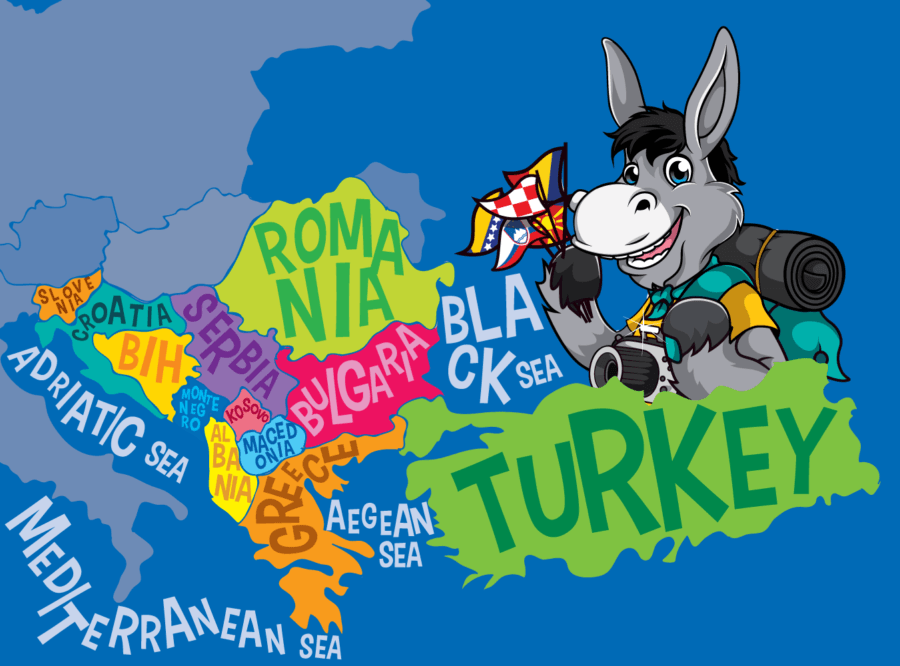
The Balkans are a vastly underrated road trip destination in Europe. As a matter of fact, when you combine its lovely coastal drives among pristine, crystal blue waters of the Adriatic, its mountainous terrain, Transylvania’s wooded forests , quaint Black Sea coastal towns , stunning old-world architecture, and wondrous lakes and waterfalls , the Balkans region is genuinely incomparable to anywhere else in the world. And the affordable prices to travel around the area don’t hurt either.
Even though this region of Europe is often forgotten, it is no less beautiful than anywhere else on the continent and deserves more attention as a holiday oasis.
Don’t be shy. Comment below if you have any questions regarding a vacation to the Balkans.
- All About Traveling In The Balkans
- Guide To Backpacking In The Balkans
- Best Beaches In The Balkans
- Top Places To Go Hiking In The Balkans
- One Month Itinerary For Traveling Through The Balkans
- Ultimate 5-Day Balkans Travel Itinerary
- Balkan Cruises – Where You Can Cruise To In The Balkans
- Southwestern Balkans Road Trip
- Beautiful Lakes In The Balkans
Comments (5)
I appreciate this article and it brings to mind an experience I have already had in this area. I have been to Montenegro and entered with a tour group out of Croatia. We spent over an hour waiting while the bus driver and tour guide spoke with the border guards and bribing them to get them to let us cross the border. I remember the tour guide making a comment once back on the bus, “that was cheaper this time” and laughing. The bus driver stepped on it across the border before the guards changed their minds. I don’t feel any need to return to Montenegro. What has been your experience with border guards in this region? Thank you!
If you don’t mind me saying so, Mostar is NE of Dubrovnik not “due north”. Due North would be Split. I teach world history and geography, so I tend to pay attention to directions. Thanks!
This is very helpful thanks. Aiming to do Balkans for 5 weeks in July and August. Looking at doing about 9 countries. Taking your tip on the smaller car + green card. Any specific countries that you found one should avoid? Or need special papers or visas?
Hi and thanks for this detailed information! It is very useful. I was wondering how easy is to collect the hire car from Tirana airport and then drop off in Croatia?
Thank you in advance
You are welcome. Choosing the airport depends on what places you want to go to and where you can get connections.
Leave a Reply Cancel reply
Your email address will not be published. Required fields are marked *
Save my name, email, and website in this browser for the next time I comment.
This site uses Akismet to reduce spam. Learn how your comment data is processed .
Subscribe To Unlock Your FREE Customizable Travel Packing List & All Our Best Tips!
Unlock Your FREE Customizable Travel Packing List!
Subscribe Now For Instant Access To Stress-Free Packing

15 Essential Balkan Tips You Must Know
Love it? Share it!
When venturing to southeastern Europe, let the gorgeous Balkans region be your chosen destination. This expansive territory spans several European countries, each with its own tantalizing culture and charm. In this detailed guide, we will share all the essential Balkan tips to get you started!
From the cheery Balkan people to the picture-perfect Balkan mountains landscapes, there are many good things about this part of “the Old Continent”. With so much to see and do, you’ll need a set of Balkan tips, tricks, and travel suggestions for a smooth, worry-free Balkan Peninsula trip.
The following article will help you elevate your Balkans holiday plans, whether visiting for a short time or tackling a longer two-week Balkans itinerary .
15 Essential Balkan Tips You Need to Know

Disclosure: This post contains affiliate links. If you click one of them, we may receive a small commission at no extra cost to you.
Our first trip to the Balkans was in early 2020, and since becoming full-time travelers we often spend months in a row in the region relishing cuisines, learning different cultures, and just soaking in the beautiful landscapes!
We have completed this guide using our experience of the region, so no need to stress or panic about finding a Balkan travel guide that hits all the sweet spots. Here are 15 essential nuggets of useful info to serve as a really useful Balkans tips go-to.
1. Where to locate the Balkans
The Balkan region comprises several different countries. This means you can expect eclectic cultural experiences from different nationalities across a bevy of beautiful smaller destinations and major cities like Sarajevo, Sofia, and Zagreb.
The Balkan countries are:
- Albania (“The Land of the Eagles”)
- Bosnia and Herzegovina (“The Heart-shaped Land”)
- Bulgaria (“The Land of Roses”)
- Croatia (“Our Beautiful”)
- Kosovo (“The Land of Freedom”) – an independent country that self-declared in 2008
- Montenegro (“The Black Mountain”)
- North Macedonia (“The Land Of the Sun”)
- Romania (“The Land Of Count Dracula”)
- Serbia (“Rascia – The Land of the Serbs”)
- Slovenia (“The Sunny Side of the Alps”)
- Turkey (“Anatolia”) and Greece (“Hellas”) – some areas in these countries are considered part of the Balkans
2. What the Balkans region offers
The name “Balkan” itself is a giveaway, as it means “mountain” when translated from Turkish. Naturally, this region abounds in gorgeous landscapes and majestic mountain peaks like the Julian Alps.
You’ll also find wondrous architecture, picturesque coastal hideaways, and fascinating historical towns like Macedonia’s Ohrid. If you enjoy island retreats, the Balkans deliver those, too.
Fun Fact: Thanks to the Balkans’ rich history, dating back to 9th-and-10th-century Bulgaria, we have the Cyrillic alphabet .
3. Check your visa requirements for visiting Balkan countries
Citizens of the United States, UK, Australia, Canada, and New Zealand can visit the following Balkan states without a visa for up to 90 days within six months from arrival:
- North Macedonia
- Bosnia and Herzegovina
What about other travelers and Balkan destinations not mentioned above? Check your applicable travel requirements before departure. Consult the relevant authorities (e.g., the embassy) to get all the necessary information.
Note that countries like Greece, Slovenia, and Croatia are part of the European Union and they follow the Schengen rules (90 days of entry within a rolling 180-day period). Countries like Romania, and Bulgaria do not follow this rule, although they are an EU member.
Furthermore, countries like Serbia allow for visa-free entry for passport holders from India, etc.
4. The best time to visit the Balkans
The truth is the best time to visit the Balkans depends on a few factors, like your budget, how much time you want to spend in the region and your weather preferences.
Generally, the shoulder seasons (spring and fall) are favored. They provide endless opportunities for wild outdoor adventures in places like the Balkan national parks and forests.
Take a look at this snapshot of what each season promises to help you make your choice:
- Spring (April – June): You’ll enjoy pleasant temperatures along the coast and relish plenty of inland activities in countries like Serbia and Greece.
- Summer (June – August): The summer months are peak season, which means busy tourist attractions and higher prices across the board. During this time, the Balkans beam with a warm and dry Mediterranean-style climate. For beach and coastal fiestas and visits to the Balkan peaks, the summer season is your best bet.
- Fall (September – November): For cycling and hiking enthusiasts looking for balmy conditions, travel to the Balkans during the fall. Besides nature’s vibrant bursts of changing colors, you’ll also revel in the cultural events taking place. An example is Croatia’s annual Feast of St. Martin (“Martinje”) , perfect for wine lovers, on the 11th of November.
- Winter (December – March): Balkan winters are cold and rainy but surprisingly mild, too, at times. The coldest months are January and February when temperatures can drop as low as -5°C (23°F) in the interiors. The mountains are often covered with heavy snowfall, so be sure to pack lots of layers.

5. Draw up a budget for the cost of your Balkan holiday (it is not soo expensive for a European trip as you might think)
Balkan nations are very affordable, except European Union countries Croatia, Greece, and Slovenia – the most popular tourist destinations in the Balkans. Balkan countries trump Europe’s golden children, like France, Italy, and Spain, for inexpensiveness.
It’s great to save money, whether yours is a short trip or a lavish 10-day European itinerary .
That said, the best places to enjoy budget-friendly Balkan escapades and get good value for money are Bosnia and Herzegovina, Serbia, North Macedonia, and Bulgaria.
These countries offer fabulous food, fun cultural experiences, fantastic accommodation deals, and charming cities with plenty to see and do.
On average, you’ll shell out around $40 – $160 (€38 – €150) per day per person which is cheaper than a Western Europe vacation. A longer time will require a bigger budget.
6. Carry enough of the local currency in cash
Depending on where you’re hailing from, there’s a chance your own currency won’t be helpful in a Balkan country. This is unless you’re accustomed to the Euro — which some of the Balkan countries use.
To help prepare you for the currency you’ll need, here’s a summary:
- Albania – the Albanian Lek (ALL)
- Bosnia and Herzegovina – the Bosnia-Herzegovina Convertible Mark (BAM)
- Bulgaria – the Bulgarian Lev (BGN)
- Croatia, Kosovo, Montenegro, Slovenia, and Greece – the Euro (EUR)
- North Macedonia – the Macedonian Denar (MKD)
- Romania – the Romanian Leu (RON)
- Serbia – the Serbian Dinar (RSD)
- Turkey – the Turkish Lira (TRY)
Remember, carrying too much money is never advisable. Around $50 (€47) in cash should suffice. Cash will come in handy for café eats and purchases at markets, souvenir stores, and quaint boutiques during your day excursions.
Work with a budget, plan what you need daily, carry just enough safely, and leave all other valuables at your accommodation.
7. Learn a few phrases in the local language
While not a general rule but more of an unspoken understanding, we all know and appreciate this simple truth. Traveling somewhere new necessitates immersing yourself in the local ways.
One of the most important cultural immersions is learning basic phrases in the native tongue. There’s no common language in the Balkans and Slavic languages are considered challenging, but learn what will get you by.
In a region teeming with different ethnic groups, you’ll feel stoked with yourself when you can exchange pleasantries and ask for help (like directions). This is also part of extending country-specific gestures of respect, kindness, and gratitude where appropriate.
Here are the official languages in each of the Balkan countries:
- Albania – Albanian
- Bosnia and Herzegovina – Bosnian, Croatian, and Serbian
- Bulgaria – Bulgarian, with considerable Turkish and Romani spoken in parts as well
- Croatia – Croatian, with a large population of locals comfortable to exchange conversations in English
- Kosovo – Albanian, with a considerable portion of locals speaking Serbian as well
- Montenegro – Montenegrin, with Albanian, Serbian, Croatian, and Bosnian recognized as co-official languages
- North Macedonia – Macedonian, with Albanian as a co-official language
- Romania – Romanian, with Romani and Hungarian spoken in parts as well
- Serbia – Serbian
- Slovenia – Slovenian (or Slovene), with Italian and Hungarian recognized widely as well
- Turkey – Turkish
- Greece – Greek
8. Packing for your trip to the Balkans
Depending on your travel duration and when you are traveling, it is always a good idea to be well-prepared for your trip to the Balkans. All year round a light scarf, sweater, and a waterproof jacket always come in handy (in the mountains and in most Balkan cities).
Here’s our suggestion for Balkan must-haves:
- Comfortable walking shoes – Comfort is king when walking, touring, hiking, and sightseeing. Get comfortable sneakers here.
- Warm sweaters – It can get nippy in the evenings, especially when visiting the Balkan peaks. Buy warm sweaters here to keep you cozy.
- Sunscreen and hats – Quality sun protection goes a long way, regardless of the weather. Buy sunscreen and find a stylish travel hat here.
- First aid kit – A travel-friendly first aid kit with medical goodies and mandatory OTC items is a no-brainer (did someone say Imodium?). Ensure your medication and prescriptions are valid in your host country. Buy a first aid kit here.
- Camera – Is it a real Balkan quest without pictures as proof? Do one better than your smartphone and take a digital camera to snap marvelous Balkan stills. Shop for a camera here.
9. Be safe in the Balkans
It’s normal to wonder: “Are the Balkans safe?” and the answer is “Yes”; the Balkans are indeed safe to visit. Follow precautions and the host country’s standard rules to enjoy a trouble-free trip.
Like all other tourist destinations, it’s imperative to be on high alert when in public spaces. Watch out for petty crime – like pickpocketing and bag snatching in touristy areas. Taxi drivers can be rumbustious when negotiating to squeeze an extra buck.
This is more than just a Balkans travel tip but something to remember for all international journeys. Most travel guides and warnings stress that the main thing when traveling to a new destination is to keep your wits about you and practice caution while out and about.
Do some research on the area you’re visiting and stay vigilant – particularly in crowded spaces. Familiarize yourself with emergency numbers and the relevant police hotline to report any concerning incidents.
Fun Fact: The 2019 Global Peace Index identified Slovenia as the world’s eighth safest country. Romania is rated 25th on the list, with Albania (51), North Macedonia (65), and Bosnia (81) making the cut of the top 100 safest nations in the world.
10. Scour the food scene and try new dishes in the Balkans
It’s all about long-standing traditions, exquisite food, ample portions, and sharing in the Balkans. Try local specialties such as Bakalar fish and Rožata, a creamy Croatian pudding.
You can also sample Balkan staples like Ćevapi (a tasty sausage dish much-loved in Serbia and Bosnia and Herzegovina) and Rakia (or Rakija). The latter is a delicious, double-distilled fruit brandy. It’s considered the people’s spirit in Serbia, Romania, and Albania.
Try a hearty Albanian Flija (or Flia — a layered pie of batter and sour cream) or a meaty Bulgarian Moussaka meal accompanied by some Rakia. You might even get away with making Rakia part of your holiday five-a-day.
See, this drink features grapes, apricots, and plums with a generous slash of the good, strong stuff, of course. That’s 50%-80% strength to take you to cloud nine — the cheeky Balkans way.
When culinary experiences are at the center of your travels, stick to the coastal countries. Traditional Albanian, Croatian, Greek, Montenegrin, and Turkish dishes and their seafood creations are out of the world.
For travelers who get slightly nervous about unfamiliar foods in new places, remember these Balkan food tips:
- Go ahead and try new dishes ; you’re on holiday, after all. But if you prefer not to get carried away, keep it simple .
- Savor each meal by taking your time and staying mindful of new, mouth-watering flavors, scents, food combinations, and ingredients.
- Keep hydrated and opt for bottled water when you’re unsure about the quality of tap water at designated locations like your accommodation.
- Prioritize freshly prepared meals over processed and packaged foods.
- While ultimate fun on holiday is the aim of the game, don’t overdo the caffeine and alcohol .
Read : Best food tours in Dubrovnik
11. Plan your Balkans transportation
Public transportation, both economical and immersive, is the best way to travel within the Balkans. Buses and trains are efficient, relatively affordable, and easy to use.
We’re talking about 12 countries with varying degrees of public transport safety. On the whole, traveling in the Balkans as a visitor is safe enough.
Travel durations will depend on where you’re moving between, but you can count on reliability and comfort. To gauge pricing, let’s look at the quick examples below.
Depending on the exact time of the year you visit, intercity bus travel in Croatia could range between $20 – $30 (€18 – €28) per ticket. The FlixBus c ompany offers the most impressive services all around and is trusted by many Europe-bound jet-setters.
By comparison, a Mostar to Sarajevo intercity bus in Bosnia and Herzegovina could cost between $13 and $20 (€12 – €18) per traveler. Use websites like Get By Bus to compare cross-country travel prices.
To give you a rough idea, a 7.5-hour, one-way FlixBus ticket from Bulgaria (departing in Sofia) to Romania (arriving in Bucharest) could cost around $16 (€15).
In regards to trains, Eurail passes give you plenty of options and the chance to tailor your Balkans movements as you see fit. We took a train from Poland and explored Central & Eastern Europe before settling in Romania for a few weeks. It is important to stay well-prepared by checking where the train station or bus station you need is located beforehand.
You can also stay ahead of the commuting game by keeping track of bus schedules online and via cellphone apps like the Moovit public transit platform .
12. Driving in the Balkans
The independence private cars enable speaks for itself. However, driving in the Balkans can be overwhelming or intimidating because many roads are narrow and some are run down. Unfamiliar navigation routes are also a headache.
But for the insistent, self-driving die-hards, remember these tips:
- Compare prices from tried and tested car hire companies.
- Google Maps is your friend. Download and use the app to help you understand the lay of the Balkan land.
- Don’t skimp on investing in car insurance and roadside assistance services.
- Remember to double-check the little matters , like petrol stations and the toll road tally.
CAR RENTALS

Discover Cars.com partners with over 380 car rental companies worldwide serving more than 8,000 locations in 150 countries.!
Find the right car, for the best price!
13. Book a few curated tours and experiences
We strongly believe that a fine mix of independent exploration and guided experiences is what makes Balkan discoveries and sightseeing extra special. You’ll feel safer and well-catered during curated activities, whether you prefer a private tour or group exploits.
You can find incredible Balkan tour packages on some leading platforms by reputable companies. We like G Adventures , Tour Radar, and Get Your Guide for their competitive prices, diverse options, and stellar ratings.
Pro Tip: Don’t be tempted to book a spontaneous tour off the street verbally from an over-zealous stranger, no matter how alluring the deal. Stick to trusted companies and well-known service providers for guaranteed safety and your money’s worth.
14. Add extra time when traveling the Balkans
Regardless of how you travel, you must account for extra travel time when getting from place A to B. Especially when you cross borders, (by private car, bus, or tour) you will have to be patient, ensure your passports and visa are valid, and be ready to answer questions.
When flying from North America, you will also have to account for layovers in Europe before arriving in the Balkans. For example, on our trip, we touched down in Amsterdam and then flew to Zagreb Croatia.
In another instance, we flew to Gatwick-London United Kingdom, and then took a short flight to Sofia Bulgaria.
15. Opt for travel insurance for your trip to the Balkans
The comfort, confidence, and assurance you get from knowing you have comprehensive travel insurance while abroad is unmatched. It can be a lifesaver when disasters strike.
Some of the most common setbacks include falling ill while traveling, losing precious paperwork, facing challenges with your personal cards, or if your valuables are stolen.
We used our travel insurance in the spring of 2020 when we had to re-book our flights as Canadian borders were closing. Trip or flight cancellation insurance is so so handy – we can’t stress it enough.
Get a free quote for Safety Wing Travel Insurance
What qualifies as comprehensive travel insurance, you wonder? Well, here’s what we think you should look out for — based on what you can afford:
- Access to air ambulance services if immediate home returns are necessary
- Car replacements or returns if you embarked on cross-border travels from neighboring countries and got involved in a serious accident
- Dangerous sports and recreational activity coverage
- Flights back home for the body if death occurs in the case of a fatal tragedy
- Flights back home if severe injury or illness occur
- Medical bill coverage
- Pre-existing medical conditions coverage
Balkans Trip Planner – What to do in the Balkans
No travel advice is complete without suggestions for the most popular places to visit, the most enthralling experiences, and must-do activities. Let’s take you through ten of the Balkan Peninsula’s many star attractions.
There’s something for every traveler. There’s Montenegro’s gleaming waters, Bosnia and Herzegovina’s hidden gems, Croatia’s mesmerizing Dalmatian Coast, and more.
Below is what not to miss when visiting the Balkans.
1. Hark back to ancient times in Turkey or Greece
A great place to start amid your Balkans holiday crusade is Turkey or Greece. The Hagia Sophia in Istanbul is one of Turkey’s most prominent historical, cultural, and religious symbols. Now a museum, you’ll find this architectural stunner in Istanbul’s Old Town.
An even more impressive landmark is Greece’s Meteora , six 9th-century Greek Orthodox monasteries standing as if “suspended in the air” (the literal translation). They’re atop towering sandstone columns.
Enjoy a multi-day, small-group trip that includes exploring these glorious monasteries or a half-day morning Metera tour with sublime views.
2. Live it up in Sveti Stefan, Budva, Montenegro
Sveti Stefan, near Montenegro’s Budva, is worth visiting if you adore the idea of a lush island paradise right on the Adriatic coast. Luxuriate in the spoils of soft beach sands with powder pink hues, sparkling waters, and delightful villages along the shoreline.
This year-round Mediterranean-type treasure is best experienced with a guided tour, allowing sightings from exclusive viewpoints if you can’t snag a direct visit as a lodger. Sveti Stefan is now a luxe hotel town that doesn’t allow casual, public, non-guest meanderings.
There are a few tour options. From Tirana in Albania, you could do a multi-stop Montenegro day tour through an outfit like Tour Radar or Get Your Guide.
If already based in Kotor, Montenegro, consider an integrated highlights group tour of the best sights in this region.
3. Savor Balkan culture in Dubrovnik, Croatia
Every Balkans itinerary features a Croatia stop, and Dubrovnik is a big reason why. Its 16th-century stone-walled Old Town is the life and soul of Dubrovnik . Baroque-style buildings and palaces make this one of the country’s most captivating places.
Stradun, or Placa, the limestone-paved main street, is where all the action is. Wander around the boutiques and eateries where you can try local specialties such as Bakalar fish and Rožata (a creamy Croatian pudding).
Book a sailing tour from Dubrovnik to Split, a sea kayaking tour, or the ultimate Game of Thrones walking tour.
4. Soak up Belgrade’s history in Serbia
If ancient discoveries and a deep dive into a city’s tales are the main reason you love holidays overseas, then a great way to soak it all up is to go somewhere oozing with history.
Belgrade , once part of Yugoslavia, has seen its fair share of tragedy as a regular bombing site during the Yugoslav Wars . Perhaps this dark history makes it such an enlightening place to visit today.
Do two days in Belgrade , seeing iconic sites like the St. Sava Temple, Kalemegdan Park the grand Belgrade Fortress, and the Nikola Tesla Museum.
5. Discover gems in Bosnia and Herzegovina
The small country of Bosnia and Herzegovina has so many beautiful places that it easily deserves a spot on your Balkans itinerary. It offers staggering gems like Blagaj village along the Neretva River.
What do we admire most about Balkans travel? It surpasses only prioritizing the capital cities. While you can devote one day to Sarajevo enjoying countless splendors, much more awaits in other fanciful locations.
Spend one day in Mostar , an enticing Bosnia and Herzegovina destination full of charm, tourist buzz, and character.
6. Visit Lake Bled in Slovenia
A favorite place for many locals and visitors in Slovenia is Lake Bled , one of the Julian Alps’ headliners and a tranquil place to visit for calm, quiet reflections, and outstanding scenery.
Lake Bled in winter is a cool haven where you can church-and-castle-spot at popular sites like Bled Island and Bled Castle. These destinations deliver spectacular panoramic views, a pretty natural setting, and the bonus of splendid historic architecture.
Keen on an exciting outing? Take a Ljubljana to Lake Bled day trip for sightseeing and valley tours. You could dare to tackle a Lake Bled walking and hiking adventure.
Next Read: Thinking of escaping to the Balkans during the chilly season? Explore Ljubljana in one day , Slovenia’s shining capital, and discover things to do in winter .
7. Explore the Dalmatian Coast of Croatia
Dalmatia sits on the eastern shore of the Adriatic Sea and is one of Croatia’s four historical districts. The Dalmatian Coast stretches extensively from the northern island of Rab to the southern Bay of Kotor in Montenegro.
This dramatic coastline is the place to be during the summer for beach festivities and island getaways. Switch things up if you’re a sucker for national parks, and visit Plitvice Lakes while in Croatia.
Plitvice Lakes National Park is one of the continent’s most cherished parks, boasting caves, teal-colored lakes, and scintillating waterfalls.
Next Read: If the two entries above have left you undecided, double the holiday merrymaking and experience both Croatia and Slovenia in 10-14 days .
8. Enjoy a retreat in the Albanian Riviera
Beautiful beaches adorn the Albanian Riviera along the southwestern locale. This Riviera hugs the Ionian Sea coast and is well-liked by visitors coming from Vlorë and Saranda.
Catch about 93 miles of immaculate seaside scenery and mountain vistas where the nightlife is a total trip, the villages are intriguing, and the ancient buildings are lovely to behold.
For tour experiences, try a southern Europe group tour that includes a stop here or a three-day tour package with Tirana and the Albanian Riviera as prime highlights.
9. Embrace border crossings with a Balkan road trip
Uncover the best parts off the beaten path with a Balkan road trip , and we have just the road expedition ideas to help you traverse the Balkans in the most thrilling ways.
Hop into a car, pack sunscreen and your beloved snacks, and hit the road as you embrace border-crossing to quirky places and bountiful Balkan natural spaces.
You’ll feel the unlimited bliss of self-directed exploration while meeting new people, mingling with the good-natured locals along the way, and making timeless memories.
10. Spend time in and around Lake Ohrid
For the hopeless lovers of exquisite bodies of water, Lake Ohrid has your name written on it.
This lake is shared by the mountainous regions of eastern Albania and southwestern North Macedonia. It’s one of the oldest and deepest lakes in Europe, with hundreds of aquatic species.
Macedonia’s Ohrid , straddling the lake, is a notable town where you can see archaic churches and monasteries in what UNESCO has dubbed a Cultural and Natural World Heritage Site.
It’s the ideal place for recreational activities and festival-hopping if you visit during the summer season. Whether in and out of Macedonia for a quick break or staying for a long time, you’ll be far from bored.
FAQs to help conclude your travel guide
Do you have a lingering question that needs answering? Here are bite-size tidbits of useful info to wrap up your Balkans travel tips.
Which is the best Balkan country to visit?
Although a bit pricier than other Balkan countries, Croatia and Slovenia are breathtaking – with enduring beauty, astonishing views, and compelling sites.
Do you need a visa to visit Balkan countries?
Citizens of the US, UK, Australia, Canada, and New Zealand can visit the following Balkan states without a visa for up to 90 days within six months from arrival:
Are the Balkans safe for backpacking?
Yes, the Balkans are safe to visit. Simply follow precautions and the host country’s standard rules to enjoy a trouble-free trip.
Like all other tourist destinations, watch out for petty crime – like pickpocketing and bag snatching in the touristy areas – and rumbustious taxi drivers trying to squeeze an extra buck.
Tips for your Balkans travel guide
No matter what kind of weird, whimsical, or wonderful Balkans travel guide you’re in the process of putting together, now you know exactly what to expect when visiting southeast Europe.
From the best things to do and what to see to travel tips and Balkans-specific suggestions, you’re finally set. You can choose the Balkan country that best suits your style, interests, and curiosities and start anticipating memorable culture trips to Europe’s magnificent Balkan Peninsula.
New Year? New you, right? Get excellent ideas here for Europe’s best places to visit in January .
Get the inside scoop on European travel – for free!
Europe travel resources vault.
Access our FREE Europe resources library! This is the place for those who want to travel to Europe but don’t know where to start. Our exclusive library has free itineraries, tips, worksheets, guides, and more.
And the best part? You can access it all simply by signing up for our newsletters. We can’t wait to help you plan your perfect European vacation.
Other guides from the Balkans
- Croatia in March
- Slovenia 7 day itinerary
- 3 days in Dubrovnik itinerary
Pin: Balkan Travel Tips

Mayuri is the founder & editor of ToSomePlaceNew. An Indian-Canadian globetrotter, she has traveled to over 100 cities and 35+ countries. Mayuri has a graduate degree in History and is an MBA. She loves traveling the world, capturing historical nuances, and discussing that over a cup of coffee with her husband, Salil. She currently resides in Edmonton, Canada, and plots travel plans to Europe, the Americas, and beyond.
Similar Posts

Best of Balkans Itinerary 2 weeks with or without a car
Heading to the Balkan Peninsula? Great choice! We got 3 epic Best of Balkans Itinerary 2 weeks to help you plan and prepare for your trip. The Balkans is an interesting region in Europe. It is full of stunning natural landscapes, history, and culture (which we LOVE), food, and all of them at an affordable…

Best 10 to 14 days in Croatia and Slovenia Itinerary
Eager to head out and explore the majestic beauty of Croatia and the often-overlooked Slovenia? Well, you’re in luck as we’ve planned the perfect 14 days in Croatia and Slovenia itinerary that will quickly become your next best friend. Spending two weeks on a whimsical road trip from Dubrovnik in Croatia to Ljubljana in Slovenia,…

One day in Sarajevo Itinerary: Best things to do in Sarajevo
Sarajevo brought my history classes into life. It is one of those underrated cities in Europe that deserves a place in your travel bucket list. We are sharing a fascinating one day in Sarajevo itinerary, to inspire you to visit and learn more about it. Sarajevo is the capital city of the Balkan state of…

Ljubljana to Lake Bled (day trip & transportation ideas)
Visiting Slovenia and wondering how to travel from the capital city of Ljubljana to Lake Bled? Don’t worry, we will share all the possible ways to get there easily. We traveled there on a tour from Zagreb, in a private car, and also in a bus. There are about 4 ways to reach there, and…

One day in Ljubljana Itinerary (map & travel tips)
Ljubljana is one of those European destinations where the city doesn’t have a major ‘world famous’ attraction, but it is the little things that makes Ljubljana a special place to visit. And in one day in Ljubljana itinerary you can cover a lot, and on foot! Ljubljana is the capital city of Slovenia in the…

Perfect One Day in Mostar Itinerary (+Map)
Mostar lies some 130 km (80 miles) from the capital city of Sarajevo, and not very far from the border of Croatia. The city got its name from the word ” mostari” meaning bridge-keepers. Thanks to its location, it can be easily added to any Balkan trip. If you are planning a visit, our one…
Leave a Reply Cancel reply
Your email address will not be published. Required fields are marked *
Save my name, email, and website in this browser for the next time I comment.
This site uses Akismet to reduce spam. Learn how your comment data is processed .

Get our Rail Planner app
Plan your trip, get extra discounts, and show your Pass as you go.

Our favorite spring routes
Celebrate spring with these 7 off-the-beaten-path train routes

All about seat reservations
Everything you need to know about booking your seats

Alternatives to Busy Routes
Travel between popular European cities without seat reservations

Through our Chatbot in the bottom right corner.

Ask the Community
Browse questions from fellow Eurail travellers, or ask your own!
- Plan your trip
- Suggested Itineraries
Balkans Itinerary
- Order overview
- Reservations overview
- My Trips & Travelers
- {{translatedTraveler}} {{#promotional}} {{currencySign}} {{standardPrice}} {{/promotional}} {{quantity}}x {{currencySign}} {{finalPrice}}
- Child {{childPasses}}x FREE
- {{translatedPassType}}
- {{translatedValidityPeriodDescription}}
- {{translatedClass}}
- Remove Pass(es)
- {{variant.localizedTravelPackDescription}} {{quantity}}x Free
- {{variant.localizedPassUpgradeDescription}} {{quantity}}x {{currency}} {{price}}
- Your order will arrive by {{expectedDeliveryDate}} 1 x {{currency}} {{price}}
Your cart is empty
The Balkans are a diverse region in Southeast Europe, with stunning cities and spectacular nature. Traveling in the Balkans can be a bit challenging, but it’s also extremely rewarding. So go one stop further with our Balkans itinerary and discover a whole new side of Europe. You can travel the Balkans with a Eurail Global Pass . The train will get you to most places, but some stops in this itinerary can only be reached by bus. Bus tickets in the Balkans are generally low-priced, so don't let it stop you from having a full Balkan experience!
Itinerary in short
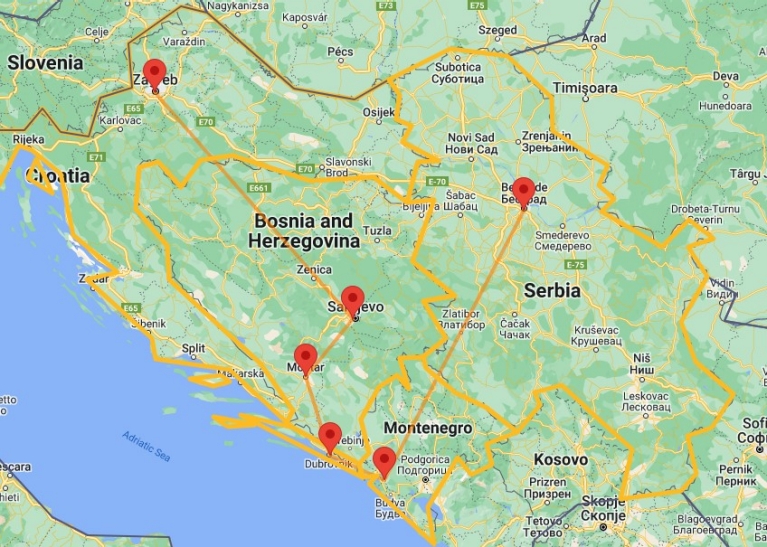
Click here or on the map to view this route in our Trip Planner
Cities visited in this trip:
Zagreb, croatia.
Sarajevo, Bosnia-Herzegovina
Mostar, Bosnia-Herzegovina
Dubrovnik, croatia, kotor, montenegro, belgrade, serbia.
Zagreb is a great place to start your Balkan adventure. It has an inviting city center, with many cosy bars and restaurants. Check out the magnificent tilework on St. Mark's Church and get your daily supply of fruit and veggies at Dolac Market . For something truly original, visit the Tragicomical Museum of Broken Relationships .
For the best view of Zagreb, climb up to Lotrscak Tower , a defensive fortification from the 13th century. If you're up for a walk, make your way to nearby Mirogoj , one of the most beautiful cemeteries in all of Europe.
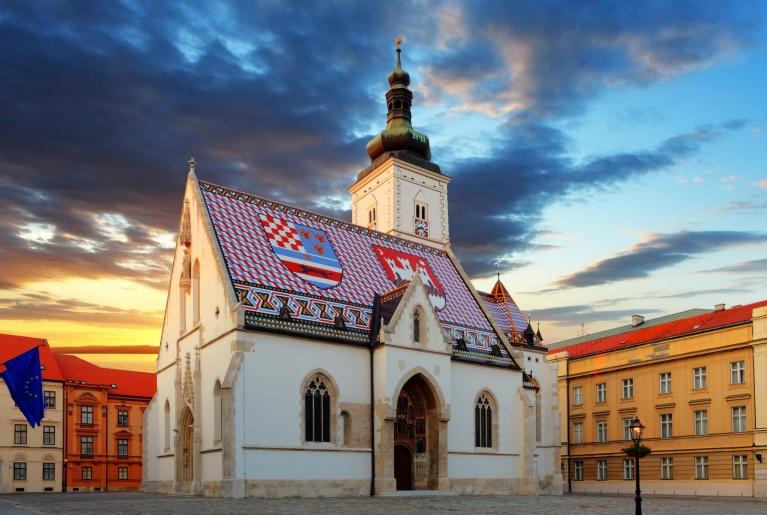
From Zagreb to Sarajevo
Travel time:
Zagreb Glavni Kolod
Sarajevo, Bosnia-Herzegovina
Sarajevo is a city that will amaze and delight you. It's nicknamed the Jerusalem of Europe, due to its history of ethnic and religious diversity. Walk through the Bascarsija bazaar to see the lasting influence of the Ottoman Empire. Turn a corner to find the majestic Vijecnica , Sarajevo’s old city hall and library. It was greatly damaged in the Bosnian war, but repaired and reopened in 2014.
During the Bosnian war, Sarajevo suffered through the longest siege in modern history. Check out the Sarajevo Tunnel that was used for getting supplies into the city and look around for Sarajevo Roses – mortar shell holes in the concrete that have been filled with red resin as a memorial.
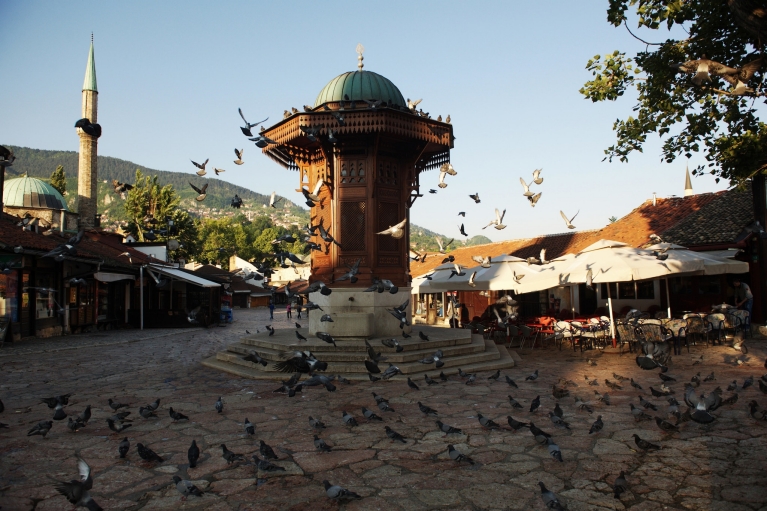
From Sarajevo to Mostar
The city of Mostar is famous for and named after the Stari Most , its Ottoman bridge from the 16 th century. One of the country's most recognisable landmarks, the old bridge was destroyed in the Croat-Bosniak War, but reconstructed with many of the original stones. In July, watch divers leap from the bridge in the annual Stari Most diving competition.
The bridge and the Old Town around it are recognised as a UNESCO World Heritage Site. When you’re done exploring Mostar, take a day trip to the nearby Kravice Waterfalls . This beautiful spot is the perfect place to go for a swim on a hot summer’s day.
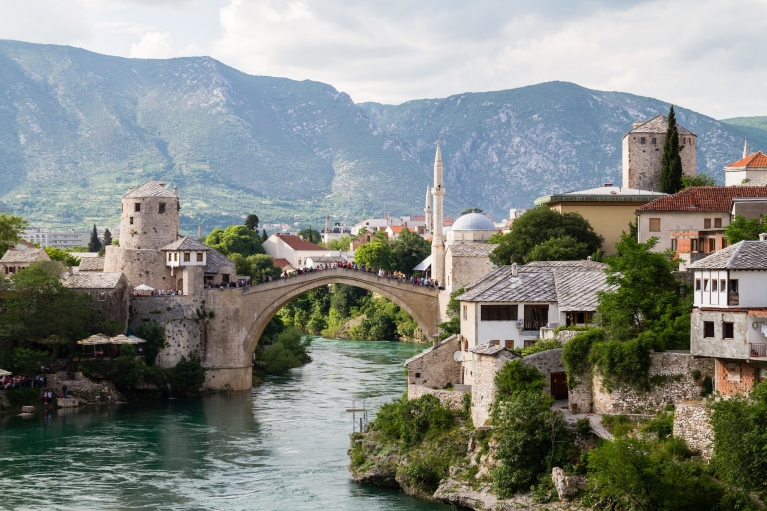
From Mostar to Dubrovnik
Dubrovnik is one of the best-preserved medieval cities in the world and a UNESCO World Heritage Site. It lies on the Adriatic Sea and is bursting with monuments, like the Renaissance Rector’s Palace and the impressive Minčeta Tower . The city’s most characteristic features are the splendid Walls of Dubrovnik that run over 1.2 miles (2 km) around the Old City.
If Dubrovnik looks familiar to you, it's probably because it's a major filming location for the hit series Game of Thrones! This has only increased tourism, so expect Dubrovnik to be packed in summer. For some peace and quiet, you can visit the lush island of Lokrum and its botanical gardens. Lokrum is located just off the coast of Dubrovnik and is inhabited exclusively by peacocks.
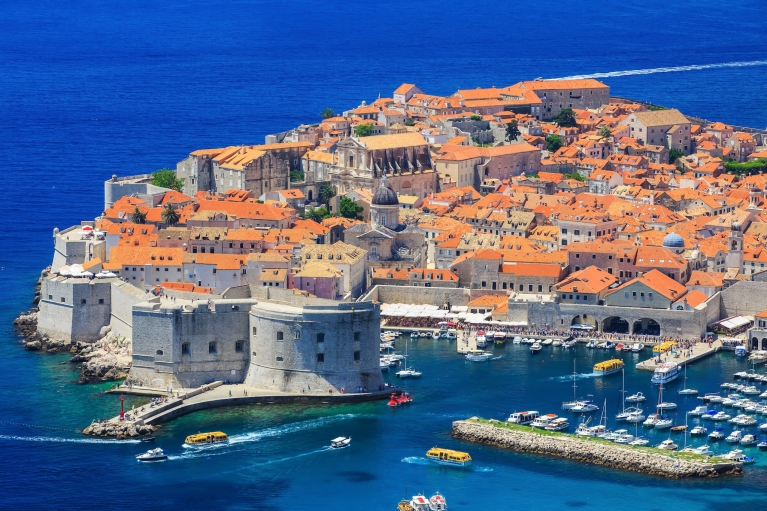
From Dubrovnik to Kotor
From Dubrovnik, travel by bus to the Montenegrin town of Kotor , with its impressive Venetian fortifications. Climb all the way up to the Castle of San Giovanni for an amazing view of Kotor Bay. Equally beautiful is nearby Budva , a 2,500-year-old town that’s known for both its medieval Old Town and as the undisputed party capital of Montenegro.
Traveling in Montenegro is mostly done by bus. The country’s trains start running at Bar , another coastal town with plenty of beaches. Here, you can catch a train up to the capital city, Podgorica, and to Belgrade in Serbia. The journey from Bar to Belgrade is quite long, so we recommend you travel this route by night train.
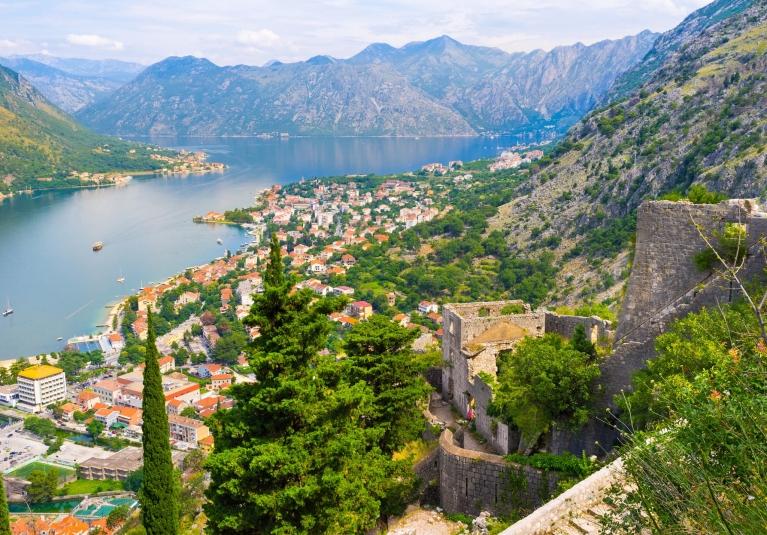
From Kotor to Belgrade
Bar, montenegro.
Belgrade, meaning white city, is Serbia's capital and largest city. Look beyond its rough edges to find an abundance of beauty. Visit the historic Belgrade Fortress in Kalemegdan Park for an amazing view of the Sava and Danube rivers. Make sure to check out the huge Church of St. Sava and visit the National Museum to find the largest art collection in Serbia.
If you’re looking for a night out, visit one of Belgrade’s splavovi , clubs and bars on rafts in the Sava River. On a summer day, go out of the city and have a swim at Ada Ciganlija , Belgrade’s beach island.
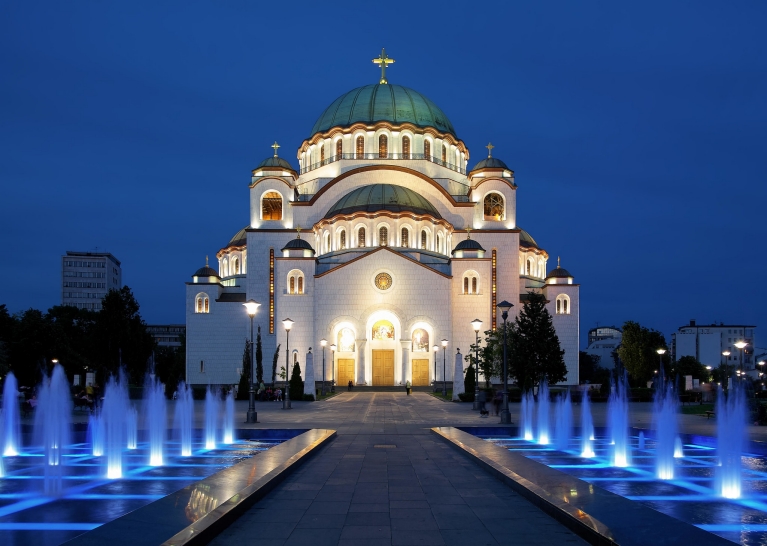
Experience the Balkans with a Eurail Global Pass!
Go the last mile.
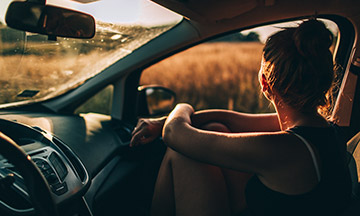
Found yourself at the end of the line, but not at your destination? When public transportation ends, it's time to take matters into your own hands: rent a car for the last miles!
Eurailers get up to a 15% discount on all Avis retail prices.
You can find more information in the Terms & Conditions .
Change of currency
You cannot change the currency once you have a Pass in your cart. Remove the Pass, and then change the currency on the website header.

How to Travel Through the Balkans (6 Modes Explained)
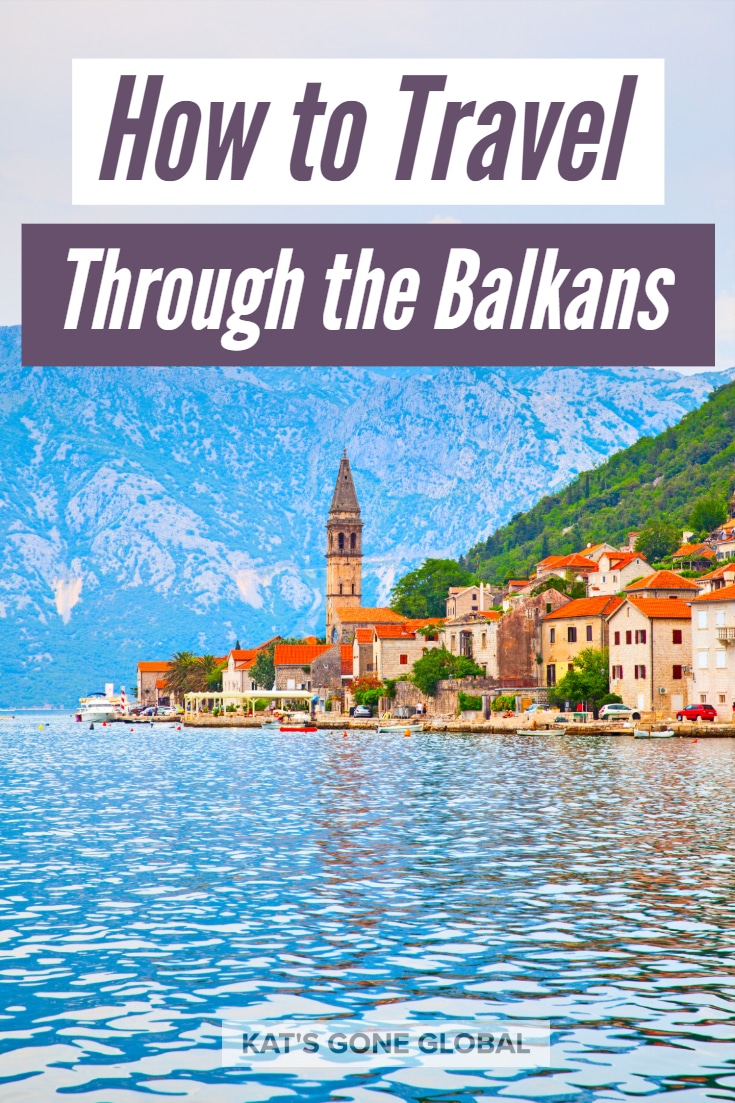
One of my favourite places to travel is the Balkans. It’s super cheap, everyone’s really friendly however getting around can take a little planning or long-winded searches on the internet as I found out. The initial questions I had when planning my trip were:
- What’s the best way to travel across these destinations?
- Rent a car? Are the roads good in those countries?
- Should we catch the train? Are the connections between the countries easy? Is it worth buying an InterRail Pass?
- Is Bus or Coach easier?
- What other modes of transport are available?
In this guide, I will cover everything you need to know about transport in the Balkans. From travel tips, modes of transport you can take, useful website, safety travelling in the Balkans and much more.
How to get to the Balkans by Plane
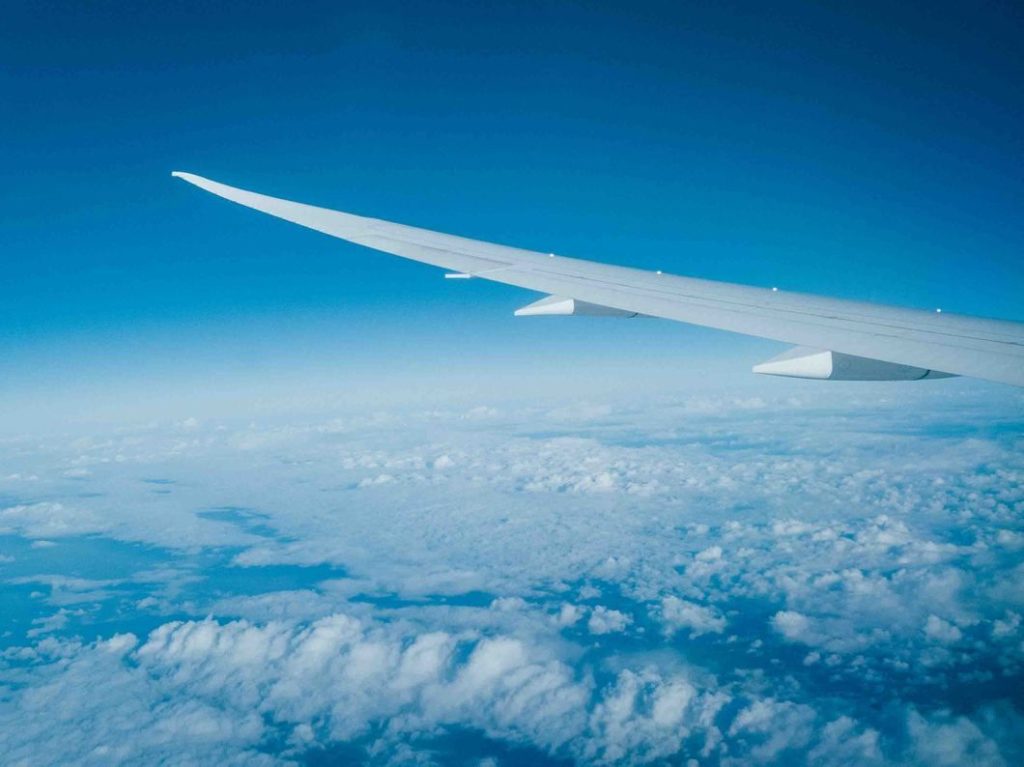
While low-cost carriers like Ryanair, Wizzair and Easyjet fly to destinations in the Balkans it’s not always cheap to fly into some of the destinations. In my experience flying into cities like Sofia, Zagreb, Athens or Budapest is way cheaper than flying into Belgrade from London for example. Plus, there is generally more flights into these cities.
Disclaimer: Hi! this post may contain affiliate links which will take you to online retailers that sell products and services. If you click on one and buy something, I may earn a commission, see my Affiliate Disclosure for more details.
It does mean that if you are planning a short trip it can either make the travel time longer or you end up spending more to get to the places you want to go to.
To find flights I use websites like Skyscanner and Kayak to find the right flights, play around with routes etc. To get you started here are the major international airports in the Balkans:
How to get around the Balkans by Trains

Trains aren’t my preferred mode of transport in the Balkans as the connections between the countries are not always straightforward as it is by bus. When you do get trains, the scenery is absolutely stunning and is a great way to travel.
An example of the difficulty of travelling by train is Dubrovnik to Split and seems like such an easy route to take but it’s not possible by train, you will only be able to catch a bus, ferry or Minibus there. Additionally, there are absolutely no trains to Greece or Albania, between Macedonia and Bulgaria, Croatia and Montenegro or Serbia and Bosnia and Herzegovina.
Then you get journeys like Mostar to Sarajevo which is totally possible by train! My main point to this section is to do your research on train routes before travelling . Some countries it will be easier to reach from western Europe by train, so it can be another great way to enter the area and go by bus from there on.
Of course, there are benefits by travelling overland by train like catching an overnight train to save on a night’s accommodation like we did when catching an infamous overnight train from Belgrade to Budapest.
Before you travel check out these websites which will give you more detailed information:
- Rail Europe – Provides information on fares and passes as well as schedules for the most popular routes in Europe .
- Man in Seat 61 – Provides excellent independent information and advice.
The classes on the trains will be based on whether you are taking a short trip or a trip that has sleeping options.
As a general rule:
- Hard seats – What I would say is as comfortable as a park bench. I had this style of seating on a train from Novi Sad to Belgrade which is fine for an hour or two’s train ride.
- Soft seats – Available for both short travel and overnight trains. The seats are quite comfortable and were the option we ended up with on our train ride from Mostar to Sarajevo and Belgrade to Budapest.
- Third Class Berths – A six-person sleeping berth in a closed compartment. These styles of the cabin can be quite crowded with little room for your things and stuff. Although the cheapest option if you are looking to save money. This option isn’t as widely available.
- Second Class Berth – A four-person sleeping berth in a closed compartment. If there are two of you, you will share with two other people but if there are three of you, you will often have the compartment to yourselves.
- First Class Berth – A two-person sleeping berth and generally fancier with a washbasin and decoration. A high price tag will come with this option.
Reservations
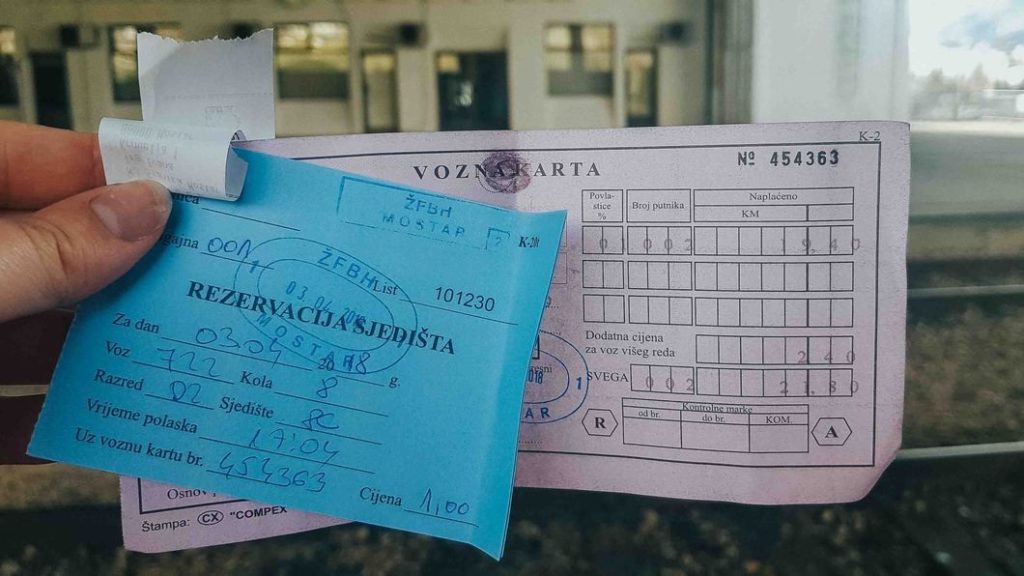
All our train reservations were made on the day or when we arrived at the city we were travelling from. Online booking is not common and will be dependent on the country or train provider. For Bosnia and Herzegovina and Serbia we were unable to book tickets online.
It was super simple:
- Buy tickets at the station (there are always places)
- Some require having a seat reservation with your ticket (the ticket office should give you this). Seat reservations several days in advance are also recommended for busier routes and during peak summer periods, but this is only necessary if the timetable specifies that seat reservations are required.
Rail Passes
An option to consider is rail passes for your journey in the Balkans. Keep in mind that not all the countries covered by rail passes; Kosovo and Albania are notable exceptions.
Discount prices are offered to travellers under the age of 26 and children aged four to 11 are eligible for a child rate. Discounted fares are also available if you are travelling in a group of two to five people (although you must always travel together).
With the passes there are two options you can choose from:
- Single-Country Passes – Simply it gives you train travel for one country, with the freedom to explore its numerous cities and towns.
- Multi-Country Passes – Allows you to travel across to multiple countries with a single rail pass. For the Balkans, these are offered by EuroRail.
For more information look at Rail Europe .
The InterRail Global pass is available for the following Balkans countries: Bosnia and Herzegovina, Croatia, Macedonia, Montenegro, Serbia and Slovenia.
Europeans residents (living in Europe for over 6 months), some resident of Turkey and parts of North Africa are eligible for the InterRail pass. It’s not valid for the country you live in essentially so it’s good to check the terms and conditions before booking. The pass is not available to non-European residents.
Check InterRail for more information.
Eurail Global
Just like the rail passes EuroRail offers single and multi-country passes which are available for non-European residents.
Single country passes are allowing unlimited travel in Croatia, Greece, Serbia and Slovenia.
The multi-country pass allows travel in three, four or five neighbouring countries, including Croatia, Slovenia, Montenegro and Serbia. For some of the country’s combinations, two countries may be classified as one like Montenegro and Serbia are classified as one country for the purposes of this pass, as are Croatia and Slovenia.
Check EuroRail for the latest information and purchases.
Coach (Bus) Travel in the Balkans
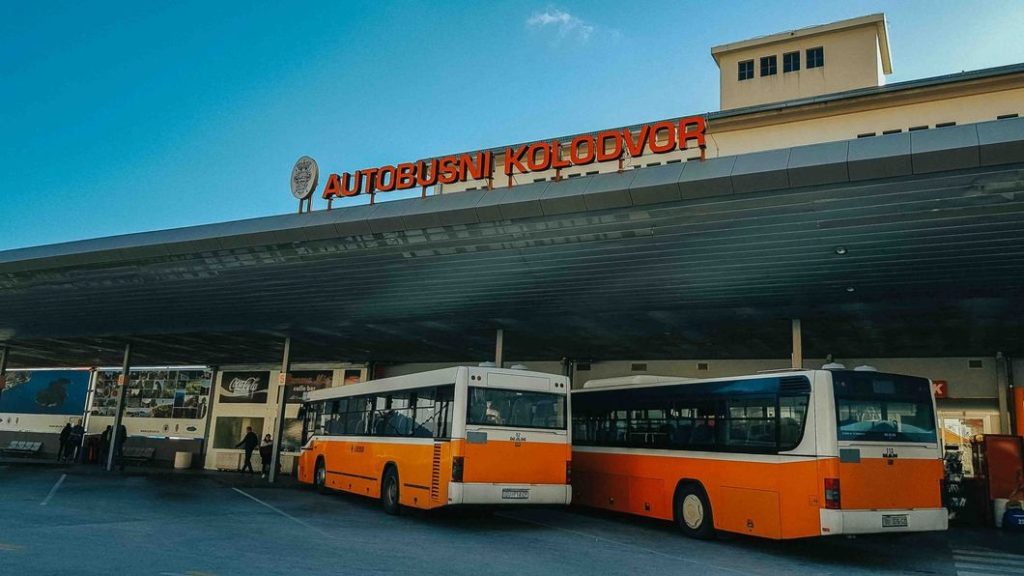
Travelling around the Balkans by bus is quite easy! As with any bus travel, the journey can be quite long but with some entertainment, it’s a great way to catch up on some reading or movies. Unlike train travel buses operate in all countries both internally and internationally.
Night buses are a good way to save on accommodation. For my Balkans trip, I decided not to do night travel in the end since most seemed to arrive at 4am in the morning and the accommodation was really cheap.
Quick tips for bus travel:
- Bring spare cash with you, some to cover the baggage charge and some to cover the toilet costs, you’ll be stuck otherwise!
- Bring snacks and drinks, an obvious point but the food stops are not great.
- There’s border control, so stay alerted and keep your belongings close to you.
Bus Travel Within Countries
Bus travel within countries is a lot cheaper than travelling internationally and can get you to more of the surrounding towns and areas. If you are struggling to get where you need to head to the bigger the towns which will have better connections.
In most countries, bus routes are operated by multiple companies, each with its own timetables and fares. It can be hard to find a schedule or price information online and I’ll leave the best links and way to book in the booking section.
International Buses in the Balkans
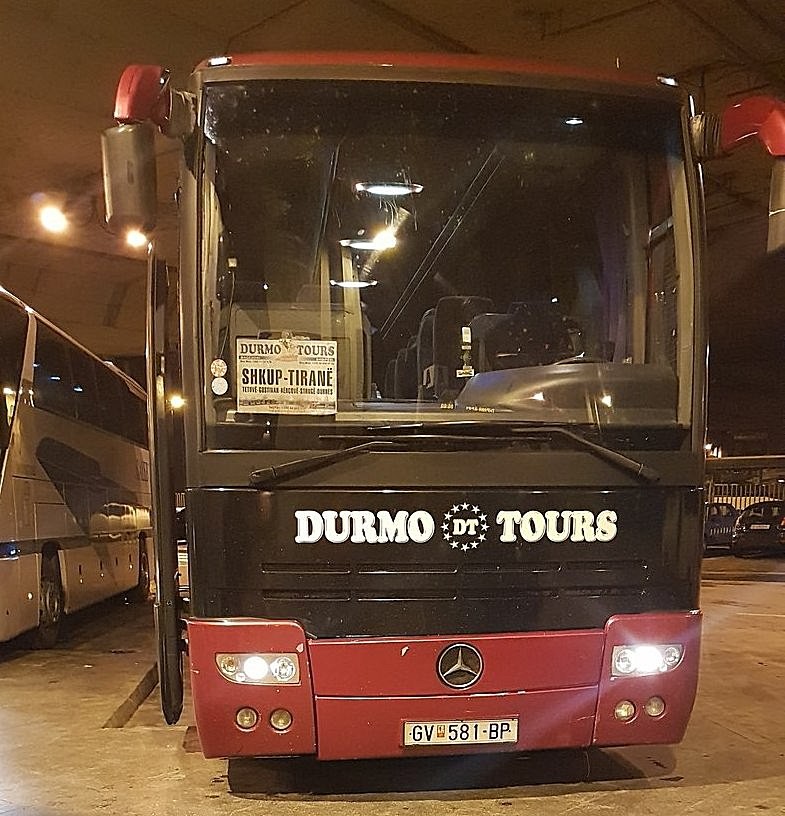
Most of our travel within the Balkans was international buses. Personally, I found this was the best way to get to the places we wanted to go. It did take a bit of planning to understand the routes and schedules and go to the bus stations beforehand to find the timetables and purchase tickets.
Generally, our journeys were pretty easy going. The road can quality vary between countries making the comfortability and journey length different. For example, the road quality was poor in Albania and there is a tremendous number of potholes to endure on the trip! When we entered Montenegro, the road is better quality but they do have very windy roads along the coast added time to your bus journey.
Border crossing can take a while depending on the traffic, lanes open or if they decide that they wish to search every bag individually.
Here are detailed guides on the following routes:
- Sofia to Skopje
- Skopje to Tirana
- Tirana to Kotor
Booking Balkan Bus Travel
Booking in advance isn’t a must and can be quite hard with the lack of online systems available. In countries like Slovenia and Croatia, it will be a lot easier to book online than somewhere like Macedonia or Albania.
I would suggest when you arrive at your departure destination going to the bus station to get the latest timetable, understand which company you will be travelling with and just purchasing your ticket while you are there. With the more popular touristic places like Dubrovnik, there will be more demand during the summer months, so this would be the only time I recommend purchasing in advance.
In doubt ask your hostel or hotel for help on getting the latest schedules and prices.
Booking at the stations you will encounter two main types of a bus station, one in a parking lot and one in a building. In general, you needed to shop around or know the company you wished to travel in countries like Bulgaria and Albania, alternatively, sometimes there would just be central ticket desks selling tickets for all providers like in Montenegro, Bosnia and Herzegovina, and Croatia.
For the central ticket, desk takes note of the carrier, so you can find the bus stand and bus you are meant to be on.
The ticket price will not include the baggage fee so ensuring you have about 1 euro per bag in local currency is a must. We had a few awkward moments on our journey where we didn’t have the right change and ended up holding up the bus.
How to Search Balkan Bus Routes
The websites I used for searching bus routes in the Balkans were:
- Balkanviator
- Bus Croatia
- Bus Ticket 4 – Montenegro
- SAS – Macedonia
It’s important to note that the websites may not give you reliable information. A good example was when we were travelling from Sofia to Skopje the bus, we were aiming for which was the 15:00 to Skopje arriving at 19:25. As a precaution, we went to the bus station to ensure we had the right times, bus companies and what not. When we arrived, it turned out the schedule was different than the ones available online, instead, there were buses running daily at 09:30, 16:00 and 19:00. However, when we were travelling the 19:00 was cancelled for the day we were catching a bus to Skopje.
Border Crossings
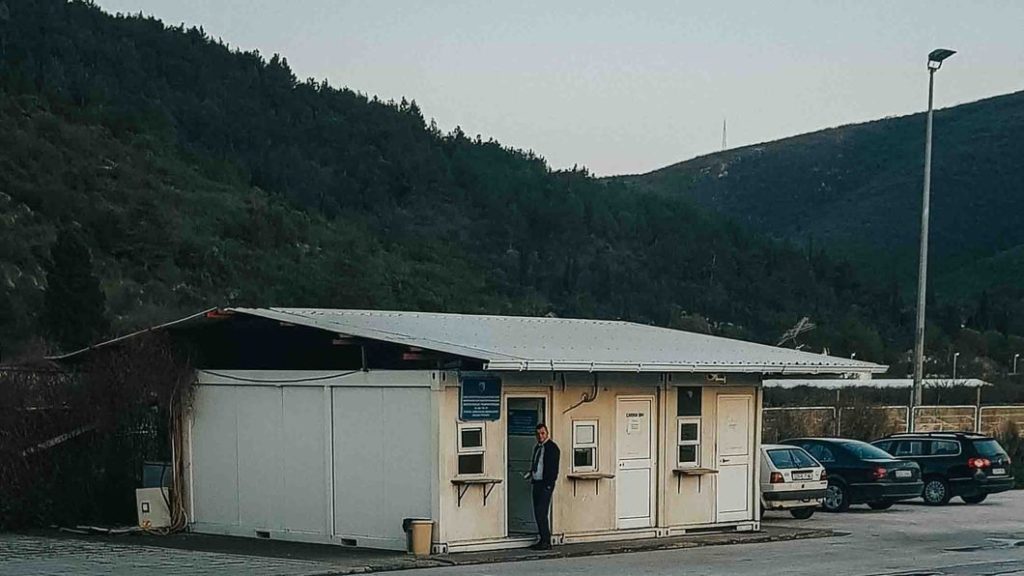
Border crossings were generally easy in our experience. The guard would board the bus to check everyone’s passports or you would get off the bus to a passport counter. The passports were then taken for processing and once clear handed back to the passports back to the owners.
There were brief checks underneath the bus in the luggage compartments or in some cases you were asked to take your luggage to a room with tables where the luggage would be checked by the guards. They may do stricter spot checks, but we were not subjected to these on our trip.
Another thing to be mindful of when planning your trip is the complication with the Kosovo-Serbia border. Currently, Kosovo is not recognised by Serbia as an independent state so if you entered Kosovo via Albania, Macedonia or Montenegro, officials at the Serbian border will deem that you entered Serbia illegally and you will not be let in. To avoid this exit Kosovo via another country and then enter Serbia. Alternatively, if you enter Kosovo from Serbia then there is no issue entering Serbia.
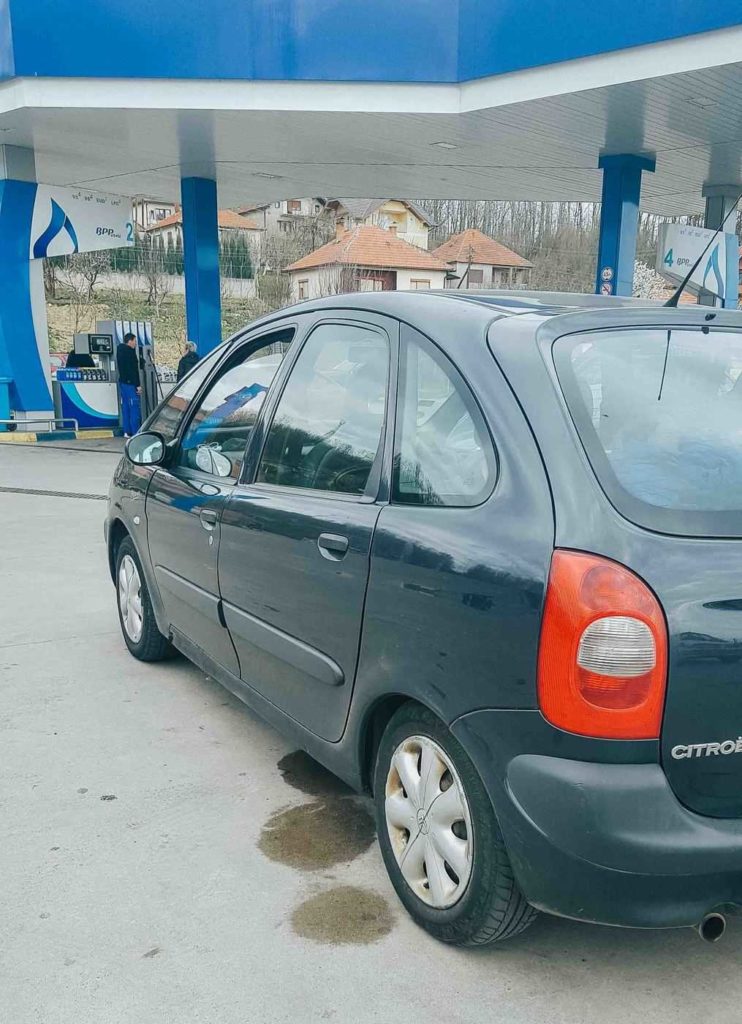
About halfway into our Balkans trip, we discovered that lots of hostels had teed up with companies to provide minibus options between countries. The minibus options are surprisingly not too pricey compared to catching a bus and much quicker.
The minibuses can be anything from a large van to a guy driving you in his 4-seater car while you are squished together. Some are even door to door service which is a luxury!
Booking Minibus Travel in the Balkans
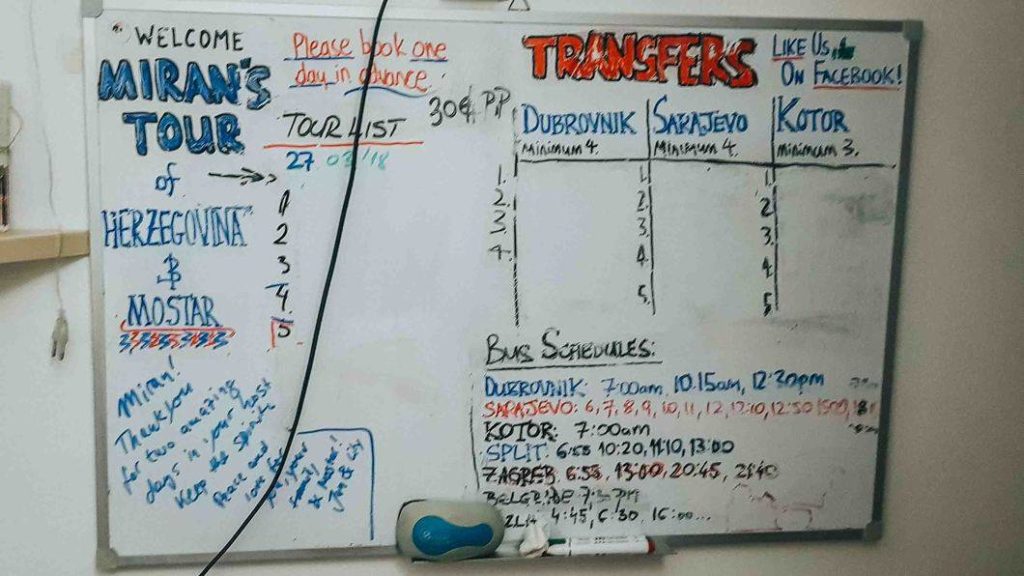
The best way to book minibus travel is via the hostel or hotel you are staying at. Normally in the reception area, there will be a sign stating the route and cost. Just tell the receptionist the route you wish to take and next thing you know it will be all booked, plus provided with all the details you need.
You will be matched with other passengers travelling the same route as most services have a minimum number of 3 to 4 people before they will schedule your departure. In Sarajevo, we were lucky that another hotel/couple were heading to Belgrade when we needed too.
To book online you can look at:
- GoOpti for minibuses in northern Croatia, Slovenia, Italy and Austria.
- Gea Tours have a range of route in the Balkans but there seem to be a few issues with their website and someone hacking their site, so I would use this with caution.
- Taxi Travel operate transfers to the main cities in Austria, Croatia, Hungary and Serbia.
Minibus routes
There isn’t a definitive list available online, here is an example of routes available from Belgrade to other nearby cities:
- Belgrade to Budapest
- Belgrade to Sarajevo
- Belgrade to Timisoara
- Belgrade to Vienna
- Belgrade to Zagreb
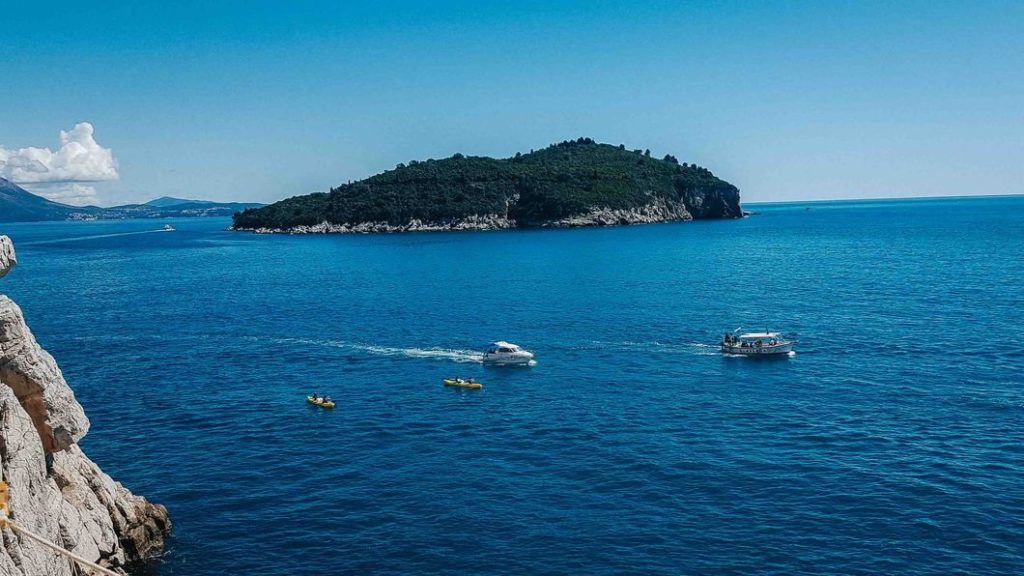
Ferries are a limited way of getting around the Balkans. Lots of the boats that go between the destinations are organised day tours like the popular day trip route Dubrovnik to Kotor and Budva in Montenegro.
The routes you can take are:
- Italy to Montenegro
- Italy to Albania
- Travel within Croatia
Travelling by Car
The best way is definitely by car, preferably your own, because it’s difficult and expensive to take rental cars across borders. It’s the best strategy to get you to the offbeat destinations that you can’t get public transport too.
An important thing to mention and I cover this above in the bus section (skip above) is how you enter and exit Kosovo. Make sure you plan this correctly so you don’t get into any trouble.
Renting a Car
Car rental within a country is great but as soon as you leave the country you’ve rented the car from there are fees or restrictions with crossing borders and one-way car hire. The option is best suited to those wanting to explore the country in-depth and dropping the car to the same destination.
Things to consider before renting a car
- Renting a car anywhere (apart from your home country) will require you to have your passport and driver’s license.
- As a general rule for those that hold a European Union driving license, you will not need to obtain an International Drivers Permit (IDP). For example, if you are driving from London to the Balkans you may decide to drive through Italy which will require you to have an IDP if you don’t have EU license.
- Check the simple things like no hidden fees, how many drivers you can have or that you have unlimited mileage.
- One of the biggest ways that car rental companies earn money from you is via insurance. Picking up third-party insurance will save you a ton of money.
- Can you drive manual transition? Most cars offered in Europe will be manual so if you can only drive automatic this may drive up the price.
- Consider emailing the hire car company to negotiate the price of the rental.
- Not all countries have the Latin alphabet some will be in Cyrillic alphabet making it interesting understanding where you need to go.
- The Green Card Insurance System – you need a green card to show that you have insurance. Car hire companies will usually charge extra for this card (actually a piece of paper).
Driving your own car
Driving your own will give you the freedom to cross borders without all the costs that a hire car comes from. The crucial part of driving your own car is knowing the documentation you will need for your car to drive across borders. The main one is the Green Card Insurance System.
Green Card Insurance System
As I mentioned above the Green Card Insurance System is something you need to be aware of when driving your own car in the EU. This is your proof of insurance and shows on it the countries you’re insured to drive in. Ensure you are clear with your insures about which countries you can and can’t go to within your policy.
Before you leave your home country make sure you have the green card otherwise you could end up paying double insurance to get another green card to enter your destination. It’s not applicable in all countries so check the countries you are travelling to and through.
Is it Safe to Drive in the Balkans?
Being a confident driver helps greatly with driving overseas. It’s an experience driving in the Balkans and not for the faint hearted. The roads can be the width of 1 to 1.5 cars, meaning you need to pull to the side of the road and let people pass. That doesn’t mean the locals will follow the same rules, generally they will be speeding past you whilst you are trying to be safe! Take it slow and keep to the road rules, at the end your safety is the most important part of driving.
Animals on the road are another hazard of driving in the Balkans. You can stumble across all types of farm animals and wildlife.
The road quality will be a mix of some good roads, some bad roads and some horrible roads. Researching the road quality and route you wish to take will ensure you get there safely and quickly. Here are some tips:
- Check between different navigation systems
- Look at Google Satellite to see the road quality
- Search YouTube or Google to see if there are any videos, photos or comments about the roads
- Ask locals for advice as the roads are constantly being re-done and the locals will know the best routes.
- Travelling on a sealed road will be beat driving on an unsealed road. Sometime navigation systems send you via the quicker route but later you find out it’s a dirt track taking 5x times longer.
In conclusion: Travelling in the Balkans requires a bit more flexibility and accepting of a mix of transport options available. Take the trains, if there are no trains take buses and rent a car here and there to explore regions more deeply.
Have you ever been to the Balkans? What was your experience with transportation?! Any tips you recommend?
More Balkans Articles
- How to get a bus from Skopje to Tirana
- How to Catch a Bus From Tirana to Kotor
- How to Catch a Bus from Sofia to Skopje
- Things to do in Skopje – A Complete Guide
- How to Catch the Infamous Belgrade to Budapest Overnight Train
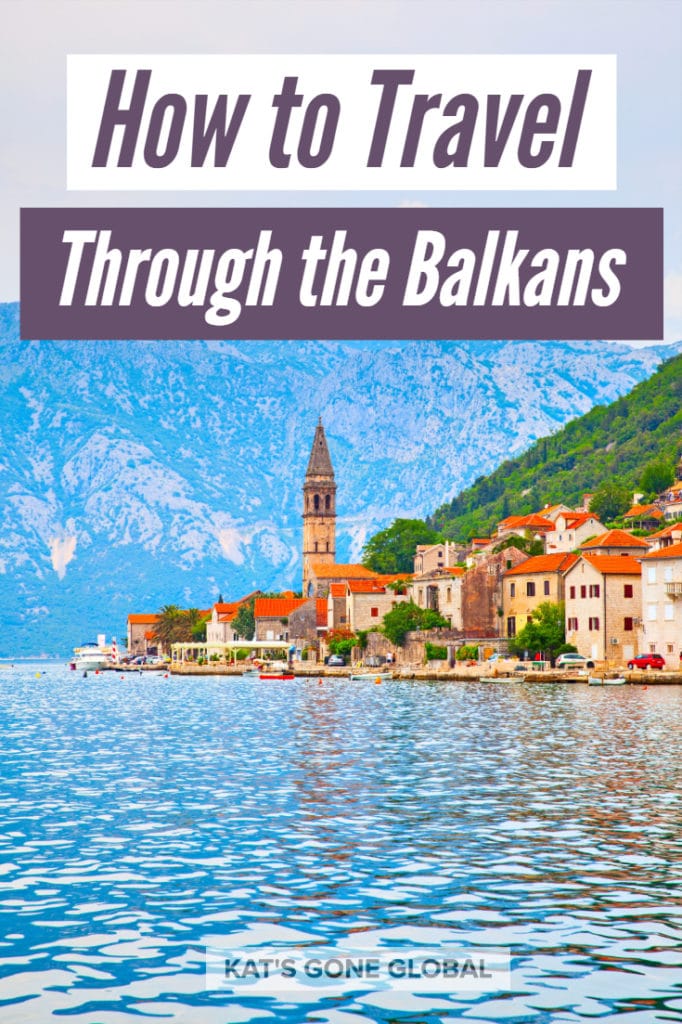
Kat Hi, I'm Kat, an Australian that moved to London in 2013 to start a new adventure. What a roller-coaster that was! I love helping others move to the UK and people explore the world ! I’d be honoured if you’d say, “Thanks!” with a £3 coffee on Ko-fi.

Saturday 3rd of August 2019
Hi! very well done .
This site uses Akismet to reduce spam. Learn how your comment data is processed .
- Balkan Countries
Travelling Balkans
Bosnia and herzegovina, north macedonia.
- Privacy Policy
- Work With Me
Balkan Countries: A Guide to Travelling the Balkans
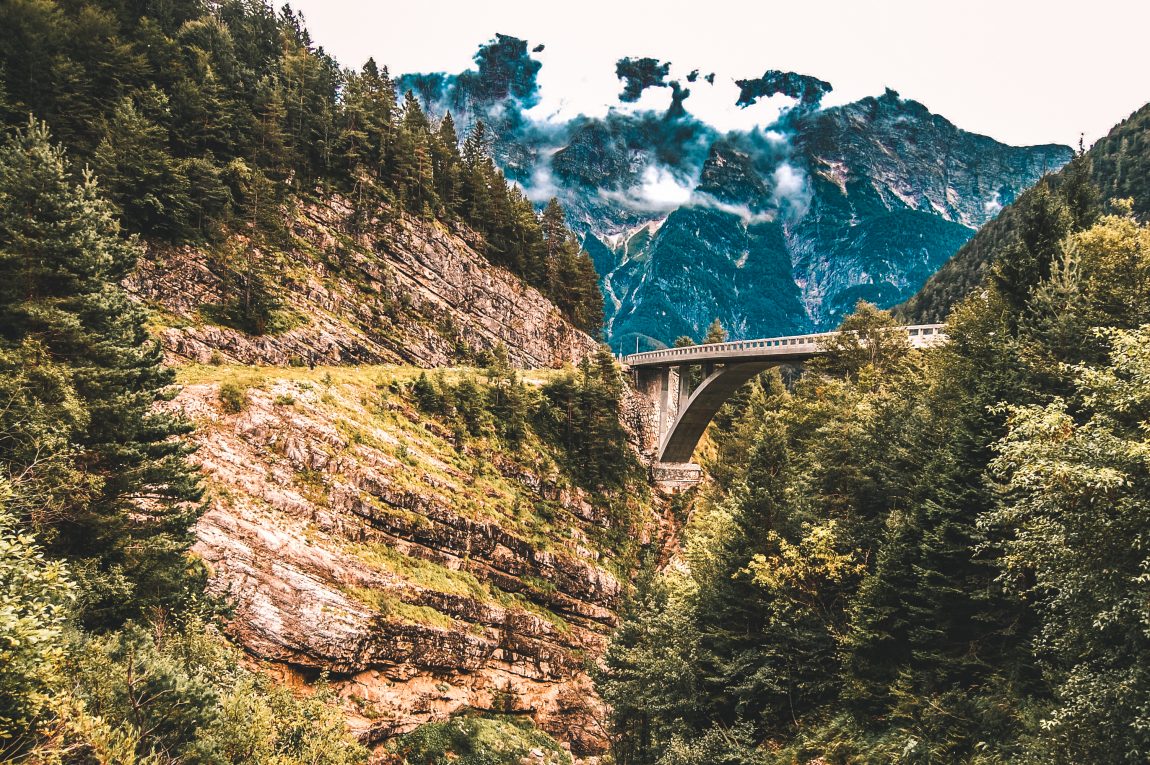
If you’re trying to plan your trip to the Balkans then look no further as this is your ultimate guide with my best knowledge, tips and recommendations for all the Balkan countries.
I have been living and travelling in the Balkans for around 3 years now. I remember years ago when I was trying to research my first Balkan trip there were no resources on the internet to help me. The information was very limited and outdated so I found myself just winging it and creating the ultimate Balkan trip myself.
The Balkans can be daunting with the lack of information about the peninsula which is why I wanted to create this website and this full guide to help you along the way and reinsure you that travelling the Balkans shouldn’t be daunting, it’s marvellous!

Balkan countries
The Balkan peninsula is made up of 12 countries:
A common misconception is that the Balkan countries were all former Yugoslavia which is incorrect. Croatia, Montenegro, Serbia, Kosovo, Slovenia, Bosnia and Herzegovina and North Macedonia were part of the former Yugoslavia.
See a deeper dive into the Balkan countries and the best places to visit within them further down the page.

Transport in the Balkans
When travelling the Balkans, you have a few options. You can travel by bus, train and car but note that not all countries have a functioning (and good train system). Trains are often slower in many of the countries. That’s why when travelling the Balkans, I always recommend travelling by bus. This is by far the most popular and easy way to get around if you are not comfortable with hiring a car.
Buses are often cheaper than trains and in the likes of Albania, your only option when it comes to public transport. Balkan Viator is often the best website to look at when it comes to timetables but always keep in mind that it might not be 100% correct. Buses in the Balkans are notorious for changing their timetables often and not notifying anyone so the best thing to do is go and ask at the local bus station yourself or your accommodation supplier so that you can get the right timetable.

Hiring a car is a fantastic option when travelling the Balkans because there are lots of destinations that are missed and some that can only be accessed by car. If you have a car you have a lot more freedom to visit more of the off the beaten path destinations around. A common question is ‘how to hire a car’ and ‘Can I travel to the other Balkans countries with it?’. I answer that question and many more in the post below!

Safety in the Balkans
Are the Balkans safe? A common misconception of travelling the Balkans is safety. You will find a lot of opinions, and most of the people giving them have never stepped foot in the Balkans. If you talk with travellers who have visited one of the first things you will hear will be about how friendly the people are, or how hospitable they were.
The misconceptions stem from past wars and politics. The last major war in the Balkans was the breakup of former Yugoslavia. This saw much violence and death between Serbian forces and the other countries such as Croatia, Slovenia, Bosnia and Macedonia. The last breakout of war was between Serbian forces and ethnic Albanians in Kosovo which ended in 1999 when Kosovo fought to gain independence.
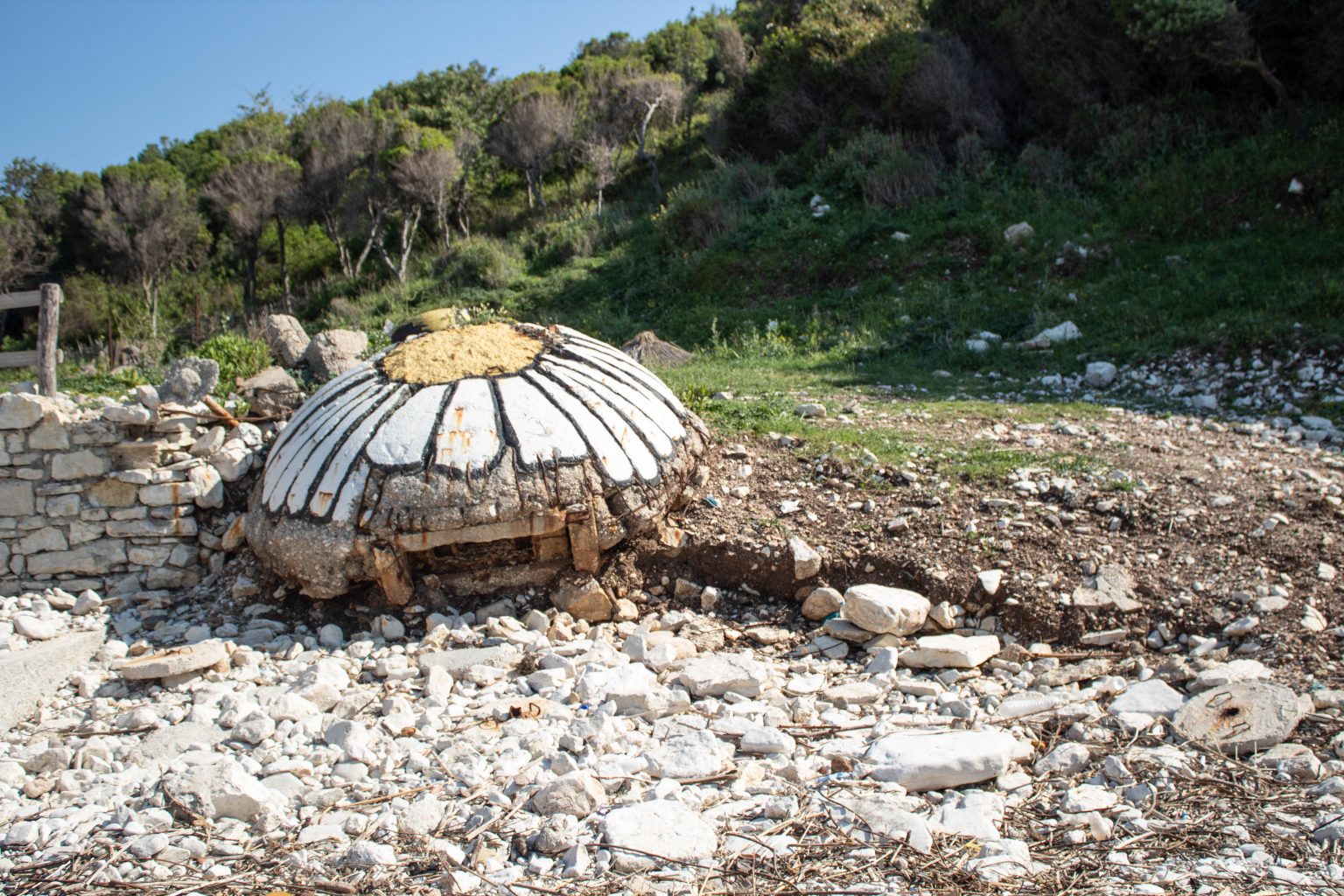
Because the wars weren’t that long ago and the effects of them are still very present today, the conception that many have is that the Balkans is still very dangerous which is simply not true anymore. You will find travelling the Balkans that safety won’t be an issue. People from the Balkans are very welcoming of tourists so most of the time they are happy to see you and accommodate you!
As I have lived in the Balkans for the past two years, I have gotten a lot of opinions from the locals about the current political situations and let me tell you, politics in the Balkans is damn confusing. Depending on who you talk to there is still very much tension between countries. It’s not the type of tension that will most likely start a war anytime soon, but more raw feelings and betrayal that some of the locals feel between each other as any bloody war would leave you feeling.
But politics shouldn’t scare you from coming to the Balkans. Unless you live here you won’t even hear about or have to deal with it!
So, the question, is the Balkans safe? Absolutely.

Travel insurance in the Balkans
Travel insurance is a must with any travels around the world. I can recommend two global insurance companies which I have used in the past and recommend to all people travelling the Balkans.
World Nomads: World nomads have two types of insurance, a basic plan and a comprehensive. You are fully covered with World Nomads which makes you feel a little safer when travelling knowing that you’re covered if something does go wrong. Their plans are reasonable, and you can purchase no matter where in the world you currently are.
SafetyWing: This company is a new one which I have been using from time to time. It’s made for digital nomads in mind and its VERY affordable. For 1 month, the price is around $37! The plan is focused on travel medical insurance, but they do have plans to expand in the future so keep an eye on them.

Weather in the Balkans
The weather in the Balkans varies a lot between countries. In the south in Greece and Albania, temperatures can easily rise to over 40 degrees. But in the mountains and even in the coastal cities you can expect some snow in the winter. I recommend you look at weather.com for the latest weather within the Balkans as the peninsula is so vast that there no common weather patterns.
My favourite time to visit the Balkans is spring. That’s because the crowds of tourists haven’t started yet and the weather is very beautiful as well as all the flowers are in full bloom!
Summer is the most popular season for obvious reasons. But in countries like Greece and Croatia hordes of tourists and cruise ships rock up and bring in thousands of people. Travelling out of the summer season is a much better experience in my opinion!

Balkan food
Balkan food is very flavourful, fresh and delicious. A lot of the dishes are very meat-based so if you are vegetarian or vegan you may struggle. However, in the cities, vegan restaurants are popping up. Balkan fruit and vegetables are so fresh and delicious so be prepared to cook some of your own meals!
Read more: The Most Delicious Balkan Food You Must Try

Balkans visa
The great thing about the Balkans is that most of the countries are out of the Schengen zone. Greece and Slovenia are the only countries that are in the zone and so make sure you only spend 90 days out of 180 days within the Schengen countries.
The Balkans is incredibly common for travellers because of their majority exclusion from the zone. Depending on where you’re from, of course, in most countries you will get a maximum of 3 months within each country out of the Schengen. But make sure you always double-check your own countries requirements.

Cultures in the Balkans
Each country has its own culture and customs but there is a theme within the Balkans. The people are very family orientated. The family is always number 1 no matter what. Throughout the Balkans, the culture is so rich that it feels like a sort of time capsule. It’s one of the things I love about the Balkans. In many countries around the world, they have lost their touch with their ancient history, but the Balkans very much haven’t.
When I first stepped foot in the Balkans I didn’t feel like I was in Europe as it’s so different from anywhere else in western or northern Europe.

Deeper dive into the Balkan countries
Albania is a Balkan gem and still relatively undiscovered compared to other Balkan states. The country’s tourism is growing rapidly as people are starting to realise how beautiful and how friendly Albanians are.
There are lots of reasons why you should choose Albania to visit. They have a very fascinating and dark communist past which has been compared to North Koreas. All around the country you can still see the result on what it did to the country as well as the Civil war which followed not long after. But Albania is not only a favourite with history buffs.
Albania has some of the most beautiful beaches and nature within the Balkan Peninsula. The Albanian riviera is a must-see as well as the Albanian alps!
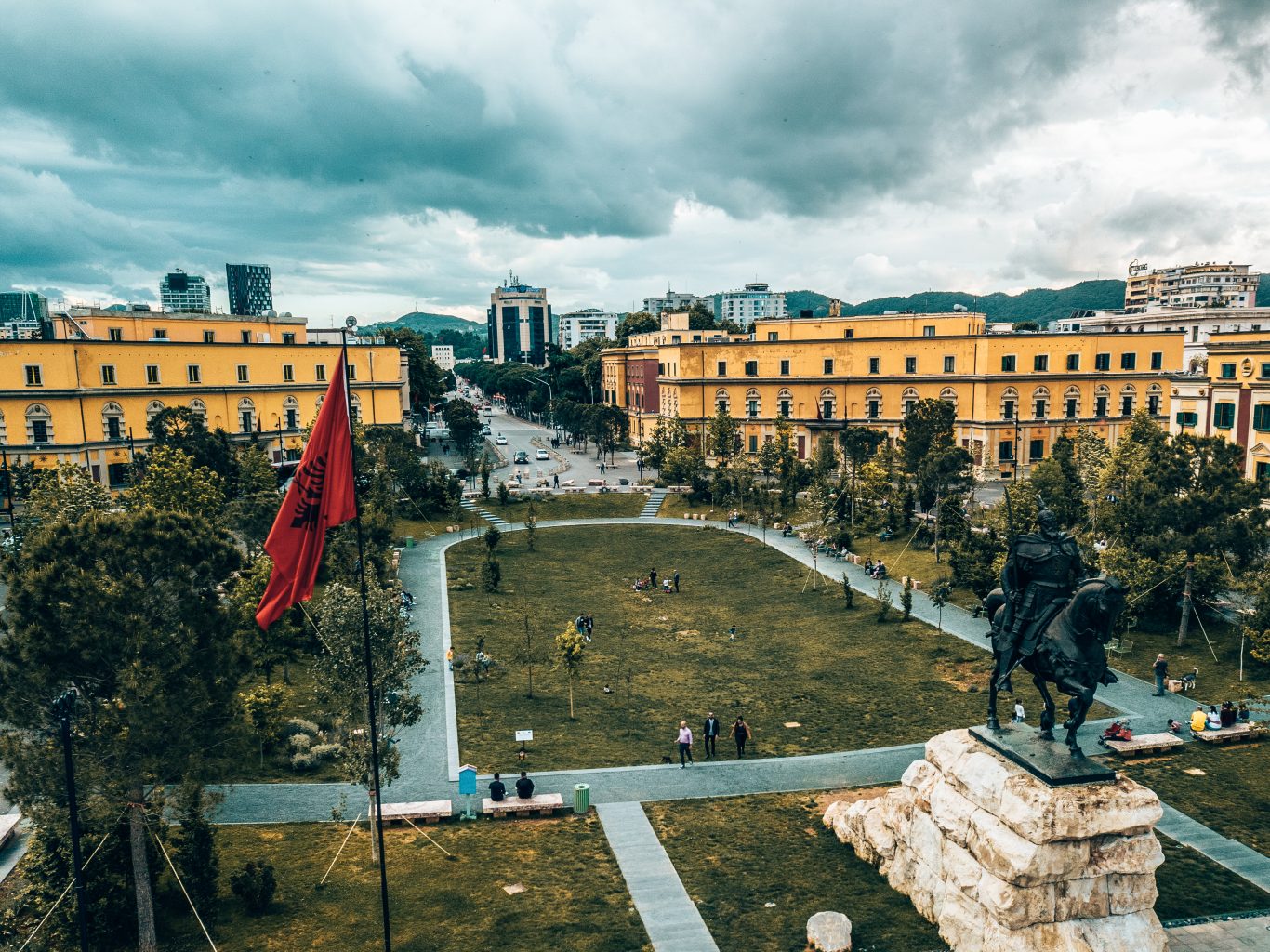
Where to go in Albania
The beating heart of Albania and a city like no other. Tirana is one of those cities you just can’t describe. It’s full of beautiful and colourful cafes, fascinating museums and fantastic food. Tirana certainly has a charm to it! I recommend staying and checking the Blloku area where most of the artsy cafes and things to see are situated.
Read more: 26 incredible things to do in Tirana, Albania

Saranda is the southern gateway to the Albanian riviera and a great base to explore nearby attractions. If you come to Saranda make sure you check out the sunset from Lëkurësi castle as well as wonder the boulevard and swim in the Adriatic Sea! Other nearby attractions include Ksamil (The Maldives of Albania), Gjirokastër (UNESCO mountain city) and Butrint (an ancient city now protected by UNESCO).
Read more: 18 things to do in Saranda, Albania

Berat is also known as the town of one thousand windows and is one of the best places to visit in Albania. There is so much history, great food and attractions nearby that Berat warrants a visit. Many compare Berat to Gjirokastër and say if you have seen one, you don’t need to see the other. That is completely not true. Although both cities are UNESCO cities, they are different, and both deserve a visit.
Read more: The Best Places to visit in Albania
The easiest way to get to Albania: There’s one airport in Tirana which is a popular and easy way to get to Albania. Otherwise, you can get the ferry from Corfu, Greece to Saranda in the south of Albania and start your travels from there.
Currency: The currency of Albania is Lek.

Kosovo is one of the smallest countries in the Balkan peninsula but it sure packs a punch! It’s a dream for nature lovers as there is some great hiking, skiing and walks to do throughout the country. It’s also Europe’s newest country as it gained independence in 2008 from Serbia.
You can find mouth-watering food and they also do the best macchiato in the world!
Although Kosovo has had a bloody past you can see the strength of the people. The people are some of the friendliest within the Balkans and show you incredible hospitality.
It also has the youngest population in Europe as over 53% of people are under 25 years old. You will see so much innovation and entrepreneurship here because of the young population.

Where to go in Kosovo
The lively city of Prishtina is not to be missed. Filled with beautiful cafes and good restaurants, as well as the church of Mother Teresa, I highly recommend you spend at least a few nights in Pristina. There are lots to discover in and just out of the city too.
Read more: 30 best things to do in Prishtina, Kosovo

If you’re looking for a getaway to some of the best nature spots within the country, then take a trip to Peja. The small city is steeped in tradition. Make sure you take an excursion into the Rugova valley where one of the most stunning nature spots in Kosovo is situated. Here you will find incredible mountain views and villages as well as waterfalls and canyons!
Gjakova is a small city with a charm like no other. Make sure you wander around the streets of Gjakova, have a coffee and do some people watching. You also should walk up to the castle which overlooks the city for the most amazing views!
The easiest way to get there: Fly into the capital of Pristina, another alternative is to fly into one of the nearby countries like North Macedonia or Albania and catch a bus to Prishtina. But generally, the flight into Kosovo are some of the cheapest in the Balkans.
Currency: The Euro is used in Kosovo.

Montenegro is fast becoming a popular stopover for people on a Balkan trip. Due to its location, Montenegro offers fantastic nature experiences like no other. It’s also incredibly affordable and has friendly people and good food.
In Montenegro, you will find beautiful national parks, tranquil lakes, jaw-dropping canyons and scenic mountain peaks! Let’s get into the top 3 places to visit in Montenegro.

Where to go in Montenegro
The city of Kotor is the most popular place in Montenegro and rightly so. This quaint, cobbled city is a must-see when visiting Montenegro. Make sure you take time to wander the old part of the city. There’s also a fortress called St Johns fortress which can be reached by walking up 1355 steps. This is a must-do as you get an incredible view of the surroundings.
Read more: How to get from Dubrovnik to Kotor by bus

Durmitor National park
Durmitor might be one of the best national parks within the Balkans because of its beauty and abundance of adventure activities. You can hike to the tallest peak in Montenegro, go river rafting or get dizzy by seeing the tallest canyon in Europe.

Sveti Stefan
Sveti Stefan is a small island which is accessible by a narrow walkway and beach. It’s located only 6km from Budva and it absolutely tiny but so sweet! The accommodation on the island is run by a resort called Aman and rooms start at around €800 per night. You are not allowed to wander around the island as you have to be a hotel guest, but if you make a reservation at one of the restaurants Nobu or The Taverna then you will get to see a glimpse of the Piazza for a lot less than €800!
The easiest way to get there: Fly into the capital city of Podgorica. Dubrovnik, Croatia is also a popular fly-in point for travellers going to Montenegro.
Currency: In Montenegro they use Euros.

Turkey is a must-see for anyone interested in history, good prices and mouth-watering food. It’s one of my favourite countries because of its diversity as there is so much to see and do. If you love history then you can visit some of Turkey’s ancient cities, if you love food, be sure to spend some time in Istanbul, if you love beaches then relax on the Riviera!

Where to go in Turkey
You would have already seen plenty of pictures of Cappadocia. It’s famous for its chimney-like rock formations also known as fairy chimneys. These interesting natural wonders are what makes the region so fascinating. You can visit the Goreme open-air museum to get an inside look into one of the formations as many of them are old houses, churches and even now hotels! Another great way to see this region is by air by doing an early morning hot air balloon flight!

You need to stay in Istanbul for at least a few days to take in the beauty and chaos of the city. Make sure you visit the Blue Mosque which is one of the most impressive in the world. A visit to Hagia Sophia is next door and one of the most interesting museums you may visit. It was originally an Orthodox church then later turned into a mosque so you can see a strange mix of the two religions within one building, which is rare!

The natural hot pools of Pamukkale are a world wonder not to be missed. These unusual white terraced pools are a natural UNESCO site and are visited by thousands of people per year. The mineral-rich water flows down from the mountains and forms this calcite terraces you see today. It’s said that these pools might be around 14,000 years old. Pamukkale translated from Turkish to English is ‘cotton castle’, and you’ll soon see why!
The easiest way to get there: There are 3 airports in Istanbul which all serve national and international flights.
Currency: Turkish Lira is used in Turkey.

There’s no denying that Bosnia and Herzegovina are one of the top locations within the Balkans to visit. Known for its nature and unfortunately, it’s turbulent past, a stop to the country will not only be a great one but an educational one.

Where to go in Bosnia and Herzegovina
The diverse capital city of Sarajevo is like stepping back in time but with a modern twist. Sarajevo has a lot to offer, from underground bars to beautiful markets and plenty of museums, the city is so different from any other Balkan destination. You can still see bullet holes on the buildings from the Bosnian genocide that happened in 1995. If you would like to learn more about this then I highly recommend visiting the Museum of Crimes Against Humanity and Genocide. Put aside a morning or afternoon to visit as it’s really heavy.

The beautiful town of Mostar is one of the most, if not the most popular place within Bosnia and Herzegovina. It’s well known for its old town and bridge. Every year Red Bull holds a cliff diving competition where people jump off the platform which is around 26-28 meters high! If you get the chance to visit and watch this spectacular event, it’s well worth it! Otherwise, wander and enjoy the UNESCO listed town and all the beautiful views and Instagram opportunities!
Kravice Waterfalls
These waterfalls are one of the most beautiful natural sights within the Herzegovina part of the country. You can easily reach Kravice waterfalls from Mostar as its around 40km from the city. You will see a lot of tour companies offering trips to see this natural wonder. The park is only open from May until October, as in the winter months it is unreachable.
The easiest way to get there: The city of Sarajevo has an international airport. Another popular airport to fly into is Tuzla as Wizz airlines, one of the main budget airlines flies into here.
Currency: The country uses the Bosnia and Herzegovina convertible mark.

The underrated country of Romania has so much to offer that there is something for everyone there. One of the most famous regions is Transylvania, known for its vampire history and incredible castles. But Romania is more than that. The people are very generous, the food is mouth-watering (and cheap!) and there are so many quaint villages and towns that mimic fairy tales such as Sibiu and Sighisoara.

Where to go in Romania
One of my favourite all-time places in Romania is Brașov. This beautiful city is known for its black church, beautiful views and being a base for many other things to see nearby such as the most famous, Bran Castle. Bran castle is where the legend of Dracula began.
One thing you must do in Brasov is the free walking tour. That way you can get your bearings of the city and get great recommendations from a local. Another thing to do is to take the cable car (or hike for 2 hours) up to the mountain that sits behind Brasov for an incredible view. In the winter you can enjoy some winter sports up there.

Often people misjudge Bucharest and don’t take the time to check out the real Bucharest. Usually, people don’t stay in Bucharest too long as they use it as a starting point to visit the likes of Transylvania. But if you do decide to stay in Bucharest for more than 1 night be sure to do either a walking, bike or food tour of the city to get a local’s insight of the city.
Read more: 10 of the Best Cities in Romania to Visit
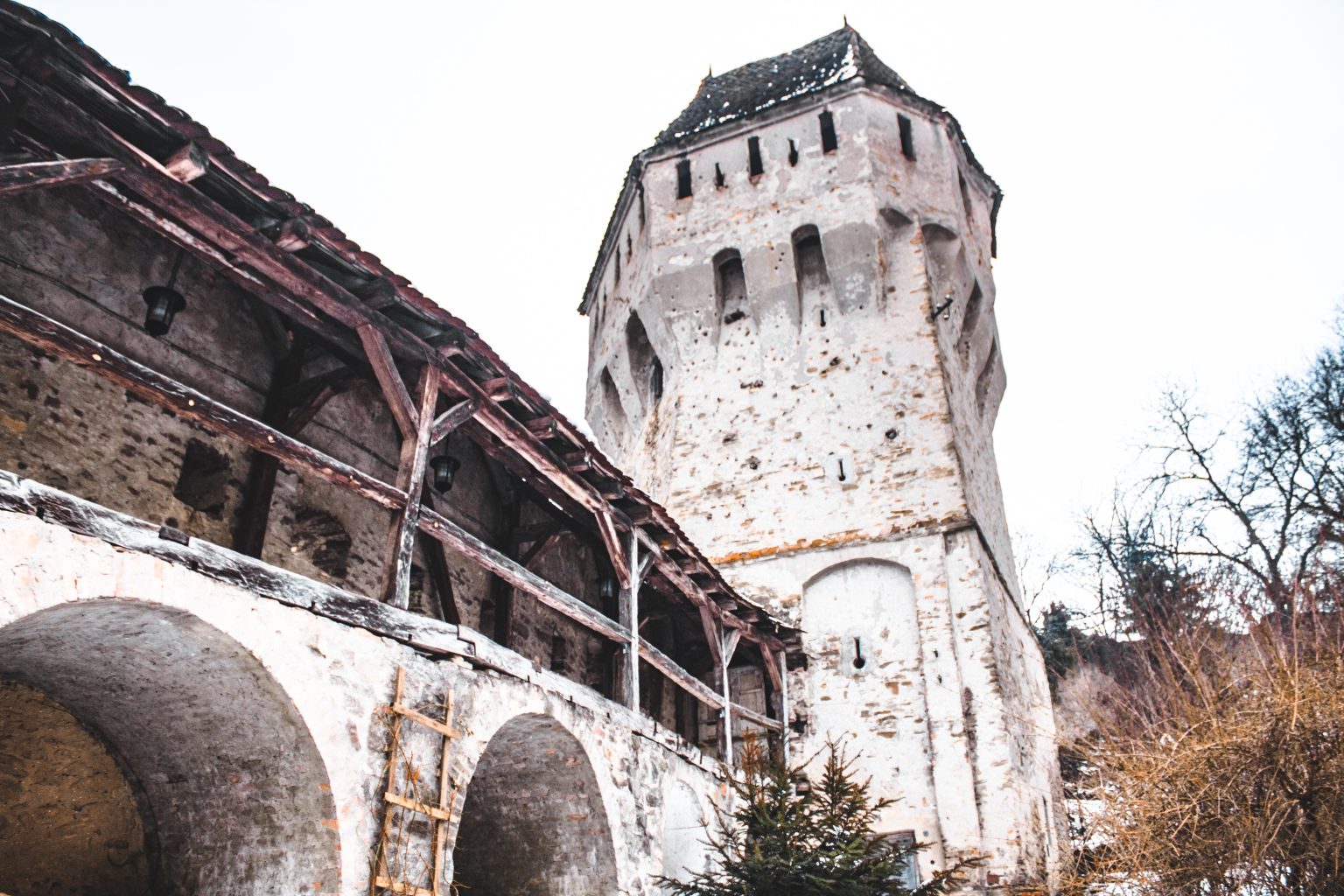
Sighisoara is one of Romania’s many fairy tale cities equipped with its old stone clock tower, colourful houses and the home to Dracula himself. You could easily spend a few days here soaking in the culture of the city and the views. One of the best things to do is to climb the clock tower within the centre of the city. From there you will get an insight into the history of the city but also a beautiful view of Sighisoara from above.
Read more: Incredible Things to do in Sighisoara, Romania
The easiest way to get there: As Romania is a very big country there are multiple airports. Bucharest is the capital city so it can host some very cheap flights in and out of the country. There are over 20 airports in the country so take your pick!
Currency: Romania has its own currency called Romanian leu.

Slovenia is the perfect place for any nature lover. It holds some of the most beautiful natural spots within the Balkans and the entirety of Europe. Whether you love hiking, mountain biking, rafting, skiing or just taking in nature, you will find it all in Slovenia and more. Slovenia also has a rapidly growing food scene as well as some very delicious wine regions in the east and west of the country.

Where to go in Slovenia
Ljubljana is one of the greenest cities in Europe. From beautiful buildings, bridges to lakes and castles this city has it all. I love how Ljubljana has intertwined nature with a metropolitan city and made it into this interesting and peaceful place. Who would have thought a city would be peaceful?! Be sure to take the cable car up to the castle to get a beautiful view of the city and surroundings.

Lake Bled is the most popular stop for tourists coming to Slovenia and is one of the main reasons why people go there. It’s known for its tranquil lake with a 16th-century church.
Whilst at Lake Bled you should walk around the lake and enjoy the beautiful views. If you’re game enough you can even take a dip in the lake. Another popular thing to do is to hire a rowboat and row to the island with the church.
Make sure you try the famous bled cream cake while you’re there – it’s delicious!
Read more: 8 Things to do at Lake Bled, Slovenia

Triglav National Park
There are so many amazing places within Triglav national park that I wanted to include so instead I will include the whole park! One of the best things I recommend doing is hiring a car and driving to Triglav national park via Kranjska Gora, which is in the very north. From there you can make your way down through the park and opt to stay at one of the villages and check out the many adventure activities on offer. You will be blown away by the views in this national park, trust me!
The easiest way to get there : Lljubluana has an international airport which is the most popular way to get to Slovenia.
Currency: In Slovenia, they use the Euro as their currency.

North Macedonian is known for its beautiful nature and friendly people. One of the most popular places within North Macedonia is Ohrid, known as an old city right on the tranquil lake of lake Ohrid. North Macedonia has lately undergone a name change. The country used to just be called Macedonia but in January 2019 the country changed its name to North Macedonia.

Where to go in North Macedonia
The tranquil lake town of Ohrid is a popular stopover for many travelling the Balkans. You could easily spend a few days relaxing and enjoying the views. Make sure you check out the history behind the town which is now protected by UNESCO. Visiting St. Jovan of Kaneo Monastery is a must as this is one of the most photographed spots in Ohrid and all North Macedonia!

If there’s one word to describe Skopje it would be cool but a little random. There’s such a mix of old and new that it makes Skopje a total cultural hub. The people are friendly, the food is good, so why would the city be described as a bit random? That’s because of the ‘Skopje 2014’ tourism project. The government decided to drop between €200 to €500 million on redesigning the city and the way they did that is to build a shitload of statues throughout the city as well as build new government buildings, museums and a national theatre. Some describe is as tacky and a little bit of ‘Las Vegas’ style. However you call it, Skopje it worth a visit even if the ‘tacky’ buildings are not!
The city of Bitola is much less chaotic than Skopje and a great option if you’re looking for a more chilled vibe on your North Macedonian travels. There’s plenty of cool cafes, historical monuments and a more realistic glimpse into Macedonian life. Bitola is only an hour and a half drive away from Ohrid making it a great option for a day trip or an overnight stay.
The easiest way to get there: There are some incredibly cheap flights into Skopje, so I highly suggest starting there.
Currency: The currency of North Macedonia is Macedonian denars.

The beauty of Croatia is incredible, it’s no wonder Croatia is one of the most visited countries within the Balkans. Known for its clear waters and incredible views, a stop to the Balkans wouldn’t be complete without visiting. Although Croatia doesn’t have that quintessential Balkan vibe, it is technically within the Balkan Peninsula.

Where to go in Croatia
Dubrovnik is one of the most popular destinations to visit within Croatia because of its history, old town and of course, being the film location of Game of Thrones. You can opt to do yours in the old city and even GoT-themed tours too. If there was one piece of advice I have for visiting Dubrovnik it is to visit out of season (not in summer) as cruise ships dock in the city and it becomes overly full. When in Dubrovnik you must hike or catch the cable car up to the hill Srd. From here you gain the most magnificent view of the city and surroundings!
Read more: How to get from Mostar to Dubrovnik

Split is the second-largest city in Croatia and is a great place to explore more of Croatians history as well as the beautiful city which sits right on the Adriatic. There is plenty to do in Split including Diocletian’s Palace which is a UNESCO site in the city, climbing the bell tower and strolling the Riva promenade. Split is over 1700 years old so there’s such a historical charm to the city. A great way to learn more about the city is by taking a walking tour!

The vibrant city of Zagreb is Croatia’s capital and a hub for history. If you want to learn more about Croatia’s historic past make sure you visit one of the museums (Image of war museum, Croatian history museum and so many more!). A great thing to do in the city is to try one of the many burger places that have taken over the city, one of the best is Submarine Burgers!
Also, be sure to take a day trip to the popular site of Plitvice Lakes. The national park is incredible and a must-do in Croatia. Many tour buses are leaving from Zagreb every day. In the summer go as early as you can as this place can fill up with people very quickly!
Read more: 8 Jaw-dropping Waterfalls in Croatia to Explore
The easiest way to get there: There are many airports within Croatia. The budget airline Ryanair flies into Pula, Zadar and Rijeka. EasyJet also fly into Dubrovnik, Pula, Split, Zadar and Zagreb so you can easily and cheaply reach Croatia by plane!
Currency: In Croatia, they use Croatian Kuna.
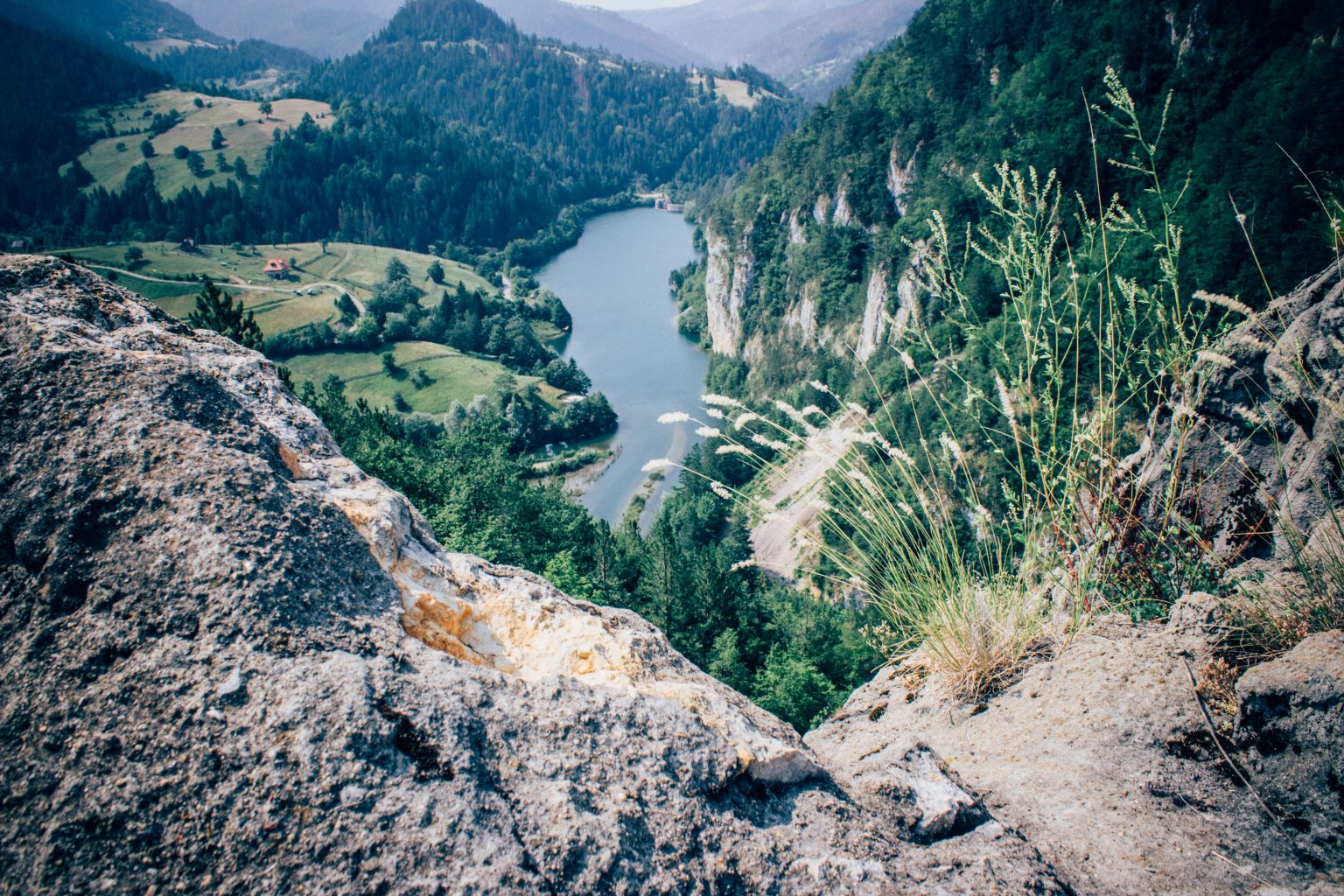
Most refer to Serbia as the heart of the Balkans. Serbia is a very diverse country. You can experience the beautiful rugged mountains and natural wonders or go party in the capital city of Belgrade. One of the best ways to explore the country is by car so you can see all the small villages and places which are off the beaten track, although Serbia, in general, is still relatively unknown to many tourists!
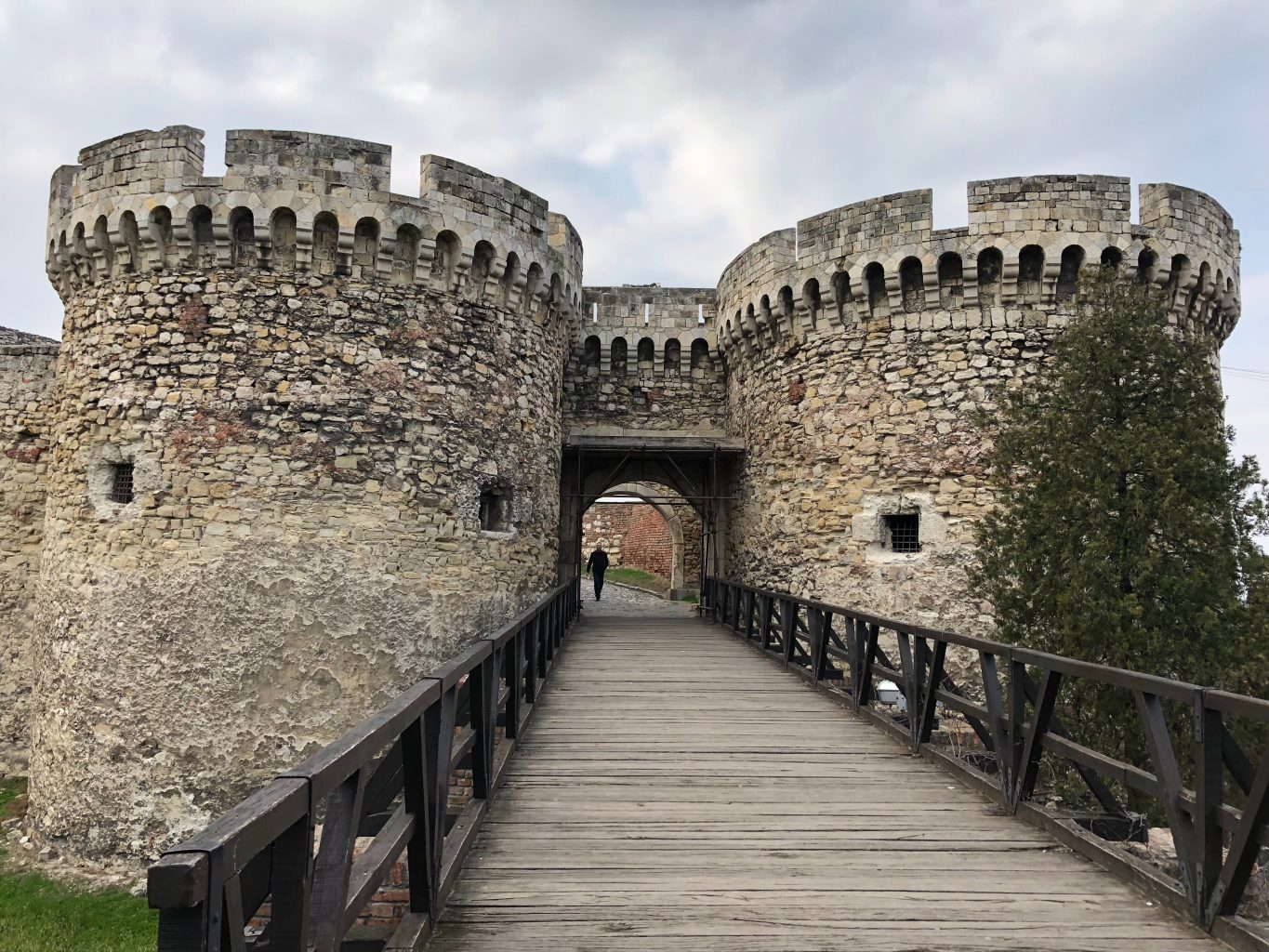
Where to go in Serbia
The thriving capital of Belgrade is a great option to stay and explore from for a few days. Belgrade is a chaotic eclectic mix of socialist buildings, Ottoman relics and artists masterpieces, it’s all happening in Belgrade.
The city is known for having an awesome nightlife, but you should also take some time to learn more about the past. Try visiting the museum of Yugoslavia to learn more about the communist era. Belgrade was the capital of former Yugoslavia so as you can imagine there’s a lot of history held here for you to learn about.
Novi Sad is Serbia’s cultural hub and a must-see if you are visiting the country. The colourful city was named the European youth capital of 2019 and not only that, but the city has also going to be the European Capital of Culture in 2021 which is a pretty amazing honour as no non-EU city has ever had that accomplishment before. It’s a true testament at how happening the city is about to become.
The easiest way to get there: Belgrade hosts many budget international flights so it can be a great way to start your Serbia trip!
Currency: The currency of Serbia is Dinars
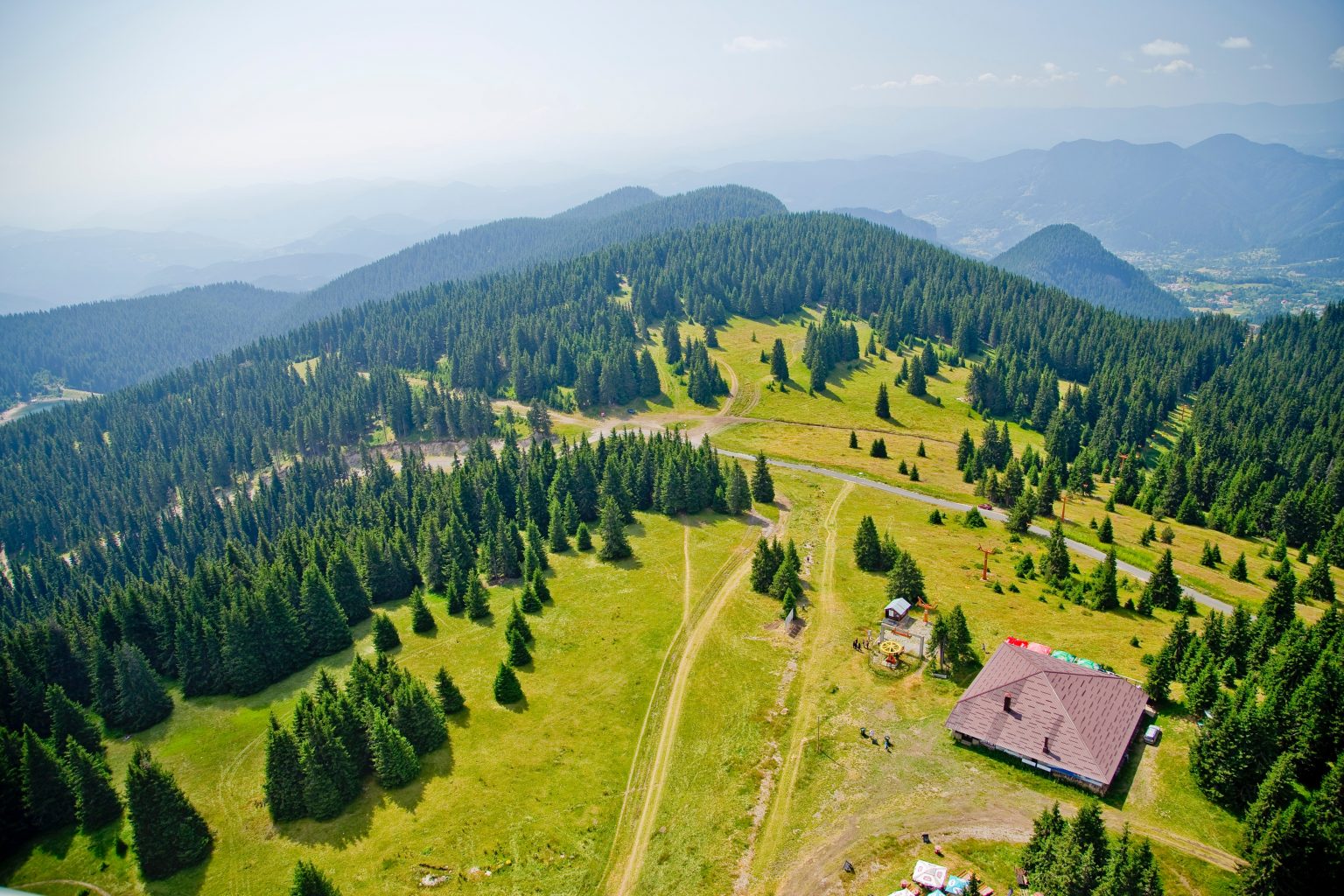
Bulgaria is a melting pot of diversity with plenty of things to do. From ancient ruins to medieval cities and the well-known Black Sea Coast, it’s a fantastic country to explore and start your Balkans trip. It’s affordable, people are friendly and it’s still a country which is still off the radar.

Where to go in Bulgaria
The obvious start to a trip to Bulgaria would be the lively and very pretty city of Sofia. This metropolitan city is fast becoming a hub for travellers. From beautiful Orthodox churches, interesting communist history and many great restaurants too. Be sure to take a visit to Sofia’s most famous building, the Alexander Nevsky Cathedral as well as learning more about Bulgaria’s history at the national historical museum.

Plovdiv was named the European capital for culture 2019. So you can imagine that this is a must-see destination during any Bulgarian trip. From colourful buildings to cobbled pathways, you must stay in Bulgaria’s second-largest city for at least a couple of nights. Plovdiv is an ancient city, so if you’re a history buff, you will love visiting all the sites!
The easiest way to get there: The easiest way is flying into the airport in Sofia. Many budget flights come into Bulgaria making it an affordable destination to start a Balkans trip in!
Currency: The currency of Bulgaria is Lev.

The beautiful country of Greece is an epicentre for history and beautiful views. There is so much to see and do in Greece. You could spend your entire life there and not see everything. If you’re a lover of Greek history and mythology you will be in your element! Not only that but Greek food is some of the best in the world – Fresh, tasty and delicious!
Greece is a little more expensive than most Balkan countries. But if you head off the beaten path to places other than the likes of Santorini and Mykonos, you can find accommodation and food relatively affordable.

Where to go in Greece
Athens is often getting a bad rap but it’s a beautiful city if you know where to go and you give it a chance. I highly recommend staying in Plaka. It’s a beautiful area within Athens that’s not far from the centre and many historical sites including the Acropolis. Plaka is a beautiful area with many great cafes and beautiful views. I highly recommend a walk-up Mount Lycabettus to get a beautiful view of the city. This is a great sunset spot!
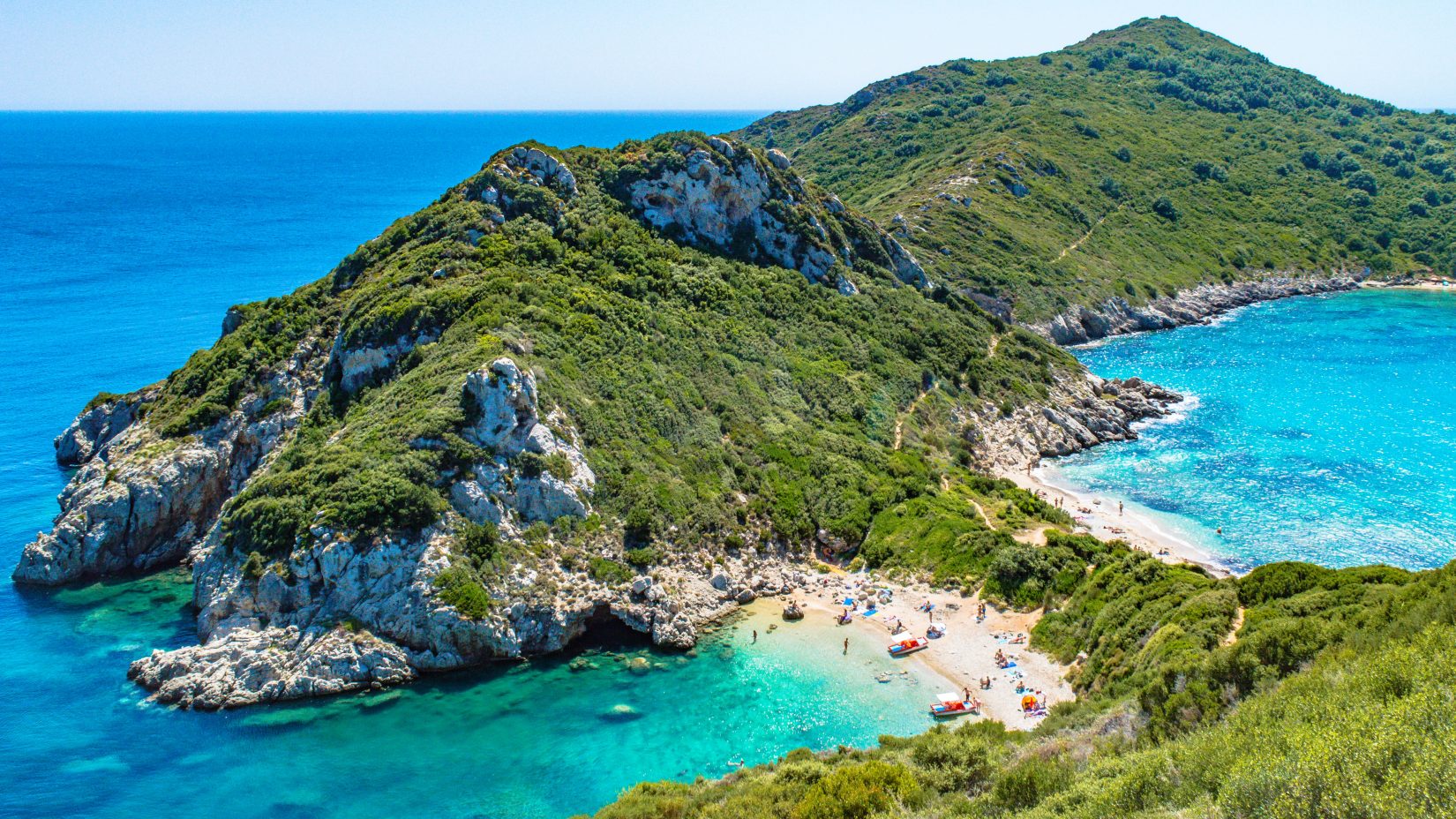
Greek Islands
The famous Greek islands is a must-visit when coming to Greece. It’s what attracts most visitors to the country. There are so many great ones including Santorini, Mykonos, Corfu, Paxos, Rhodes, Kos, Naxos, Paros and the list goes on! I would love to include one but there are so many great ones, it’s impossible to pick! What I would say is to avoid Santorini and Mykonos in the summer season. These two islands in the summer are crowded with people and are seeing the effects of overtourism. So, either pick another Greek Island or go out of season.
The easiest way to get there: Athens hosts many international flights and cheap ones too! If you’re coming from Asia, Scoot Air do incredibly cheap flights in and out of Athens. I have gotten a ticket to Thailand from Athens for around €150 before. There are also airports on many of the Greek islands too.
Currency: In Greece they use Euros.
Love this post? Pin it for later!
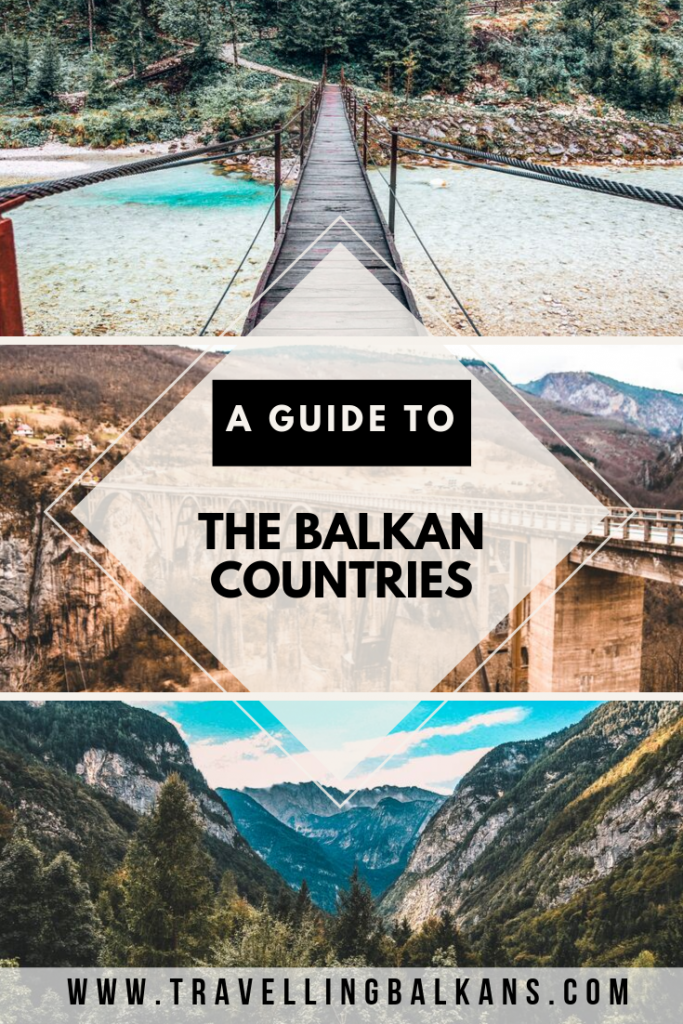
Privacy Overview

Balkans Travel: 61 Places to Visit in the Balkans + Transport & More
Last Updated on February 5, 2024
This site contains affiliate links for products and services we recommend. Read my disclaimer for more information. If you make a purchase through these links, at no extra cost to you, I will earn a small commission (for which I am very grateful).
The Balkans are made up of some of the most fascinating, beautiful, interesting countries that I have ever been to.
As there are so many amazing places to visit in the Balkans, it’s no surprise that Balkans travel is so popular!
Every year, thousands of people flock to this part of the world looking for the perfect Balkans vacation, and a few years ago I became one of them.
In 2018 I decided to ditch my travel plans and head for a Balkans travel adventure to experience this mysterious part of Europe that I kept hearing about from friends.
I had heard a few things about the Balkans and the beauty of its regions but never made plans to visit – until one random day when I decided to book a flight to Bosnia.

I knew nothing and to be honest, couldn’t find a lot online about it either, which always fascinated and excited me.
It’s hard to find a lot of information about Balkans travel that’s factual and up to date.
As it’s such a fast-growing region of Europe and Balkans tourism is starting to take off, things can change like a flick of the switch.
🧳 MUST-HAVE: Before you head out on your trip, make sure you have travel insurance. I recommend either SafetyWing or World Nomads .
Here’s everything you need to know about Balkans travel and all the best places to visit in the Balkans!

Table of Contents
The Balkans Region: Where are the Balkans?
The Balkans consist of 12 countries.
To this day, the Balkans region is often underestimated, and some people do not count countries such as Slovenia and Turkey as part of the Balkan peninsula but in fact, they are.
Although the entire country does not lie on the peninsula, a part of it does which means it’s technically Balkans!
Here are the countries that are within the Balkan peninsula:
- Bosnia and Herzegovina
Many people think that only the former Yugoslavia is the Balkans today which is also not true. There are countries that were not part of Yugoslavia like Albania, Romania, Bulgaria and Greece.
One thing is certain, as there are many places to visit in the Balkans, you’re unlikely to ever get sick of this region!
How to Get to the Balkans
Travel to Balkans countries is easy; there are plenty of ways to get to the Balkans, and cheaply!
Travellers these days can grab extremely affordable flights to cities like Skopje (Macedonia), Bucharest (Romania), Athens (Greece), Tuzla (Bosnia and Herzegovina), Sofia (Bulgaria), the list goes on!
Once you’re within the region, Balkans travel is straightforward as you can easily move around via bus or (some countries) by train.
A great option for Balkans travel is to hire a car to experience all the small regions and villages that you might miss via bus or train.
With a car, you have more control over when and where to go and see all the places to visit in the Balkans that interest you most.

Transport in the Balkans
If you plan on seeing multiple places to visit in the Balkans in one trip, catching buses is the best option (and sometimes the only) when travelling the Balkans .
Usually, you will pay for the ticket and then extra for any luggage you have that must go under the bus so remember to always have a few coins handy.
Buses are fantastic for Balkans travel as they’re a great way to see the country and you will not be disappointed with the views that you are blessed with.
Hiring a car is the best way to travel through the Balkans because you can visit some beautiful places off the tourist trail.
Make sure you check with the rental company that you can take it to multiple countries.
Also, check with each country’s rules. For example, in Albania and Montenegro, you must always have your lights on.
🚲 Check out these tours in the Balkans

When should I Visit the Balkans?
The Balkans is great to visit all year round. But the best time of year to visit the Balkans varies from person to person. The same goes for the best Balkan country to visit!
As you might have guessed, the busiest for Balkans travel time is summer, but I love visiting any of the Balkan countries in spring.
This is when the flowers bloom, the weather is slowly getting warmer and in (some countries) the prices are even cheaper than they already are.
For countries like Montenegro and Albania, the tourist season is July/August and usually, prices rise for that period of time.
This is why I love visiting at other times of the year because not only do you have tourist destinations to yourself, but you really get to feel the country like a local and not a tourist.
What It’s Like to Travel the Balkans
The Balkans is a fascinating place because the cultures and history are still so rich. To travel the Balkans, you have to go with the flow and expect the unexpected.
That is the charm of the Balkans travel.
Things are not as organised as elsewhere in Europe; bus timetables are sometimes hard to come by unless you ask a local and planning ahead can be difficult.
My one piece of advice is to just relax and see where the Balkans takes you. Have a rough idea of where you want to travel to in the Balkans but don’t make any concrete plans!
To get the best of Balkans, your Balkans trip must be flexible!
Another important piece of advice is to travel slowly. Many people think they can whack the Balkans out in a couple of weeks.
But this is a mistake, because there are so many things to do in the Balkans and so many unique places to visit in the Balkans.
The Balkans are made up over 12 countries and to experience a whole country in a couple of nights is not a good idea. There is so much to see, learn and experience!
Each country has its own unique culture, beautiful landscapes and food to try, so really take the time to experience a few at a time.
Don’t just hit up the capital cities of a few Balkan countries, and don’t go backpacking the Balkans and miss out on capital cities altogether either.
Pick 2-3 different destinations within the country to see a range of places!
Safety in the Balkans
One of the questions I am asked again and again about this region of the world is if it’s safe to travel there. The Balkans have experienced troubles in the past, but those are in the past.
The Balkans is a safe place to travel, even alone as a female. I have travelled extensively over this region, by myself, and never had any troubles. The only thing I experienced is incredible hospitality!
I now live in Albania, a country which many refer to as one of the most dangerous, thanks to the movie Taken. I can confirm that it’s not what you see in the movies.
Are the Balkans safe? Yes, Balkans travel is very safe. The Balkans people are friendly, and it’s not full of mafia bosses and drug lords.
This is the same for all the other Balkan countries.
The BEst Places to Visit in the Balkans
So, where to go in the Balkans?
Are you looking to hit up a lot of Balkan cities? Perhaps you’d like to see some gorgeous Balkan nature areas or visit Balkans sites of historical significance?
Whatever your preference, here are some of the best places to visit in the Balkans that I personally recommend as well as other travel bloggers!

Travelling and Backpacking Croatia
Croatia is an incredibly beautiful place with many islands, seaside towns and relaxing places to visit. It’s also one of the more popular and expensive countries to visit within the Balkans.
Croatian tourism has risen incredibly over the last 20 years. Visit out of season so you’re not bombarded with other backpackers and travellers and get to enjoy this country without the craziness.
For example, Dubrovnik has seen an influx of visitors over recent years due to it now being a popular cruise ship stopover.
In the summer the city is full and it can be hard to get accommodation. I visited in March and was pleasantly surprised at how quiet it was.
The locals told me that to get to the centre of the old city from one of the gates it takes around 5-10 minutes in the off-season, and during the summer it can take them an hour!
So while it is still one of the best places to visit in the Balkans, keep this in mind when planning your Balkans travel – and travel off-season if you can!
Currency: Croatian Kuna
Transportation: The most popular way to travel is by bus. There are also trains, and of course, ferries, if you want to travel to the islands.
Can you drink the tap water in Croatia? Yes!
Accommodation in Croatia: There are a range of great hostels and hotels throughout the country depending on your budget. Another great option is Airbnb (Get your free $35 credit here) .
🚲 Check out these tours in Croatia
Best Places to Visiti in Croatia

Suggested by Where in the World is Nina
Often overlooked by its famous sister, Split, just 30 minutes away, Omis is a sweet getaway from the bustle while offering a lot.
Omis is a little hidden adventurers dream and one of the best places to visit in the Balkans if you want to get off the beaten path.
Sure it has the charming old medieval town sprinkled with stone-built homes and shops all tightly fitted in a town square like most Balkan cities do.
But just beyond this, there are some sure thrills to be had. When thinking about what to wear in the Balkans on your trip, remember to pack active wear!
Zip lining over the Cetina River on an eight-line course is totally epic, but if you want to keep it on ground level, you can go canyoneering or white water rafting down the same river!
If you want to keep it on the coast, grab a kayak and just go. Impressed by the gigantic grey mountain in front of you? Go rock climbing!
At the end of the day, the black sand beach just a few minutes from the square will be waiting for you to chill on.
Where to stay in Omis: If you’re a backpacker try Hostel Omis . If you’re looking for private accommodation, then check out Plaža Duće located right on the beachfront with the most beautiful view!

Suggested by Wander-Lush
Edgy, sophisticated, and with a history that dates back to Roman times, Zagreb is one of the most fascinating places to visit in the Balkans.
Croatia’s capital is located in the country’s central-northwest, an area many people skip over on their way to the Dalmatian Coast or Istria.
Zagreb is more than worthy of a few days of your Balkans travel time, especially if you’re interested in history and architecture.
Historically, the area Zagreb now occupies was divided into two hill-top villages: Kaptol and Gradec.
The Zagreb of today is anchored in Ban Jelacic Square, named in honour of the army general who united the two villages to form the city in 1851.
The historic Upper Town is dominated by the Gothic-style Zagreb Cathedral.
The city’s most iconic building, St. Mark’s Church, which bears two coats of arms on its roof in a colourful display of Zsolnay tiles, is nestled amongst 18th and 19th-century Austro-Hungarian facades.
Other attractions in central Zagreb include a wonderful green market, Tkalciceva Street, a pedestrian street lined with open-air cafes and bars.
There are also off-beat attractions such as Tunnel Gric, a WWII-era bomb shelter cleaved from the city’s foundations.
Downtown, Lenuci’s Horseshoe—a U-shaped string of parks and green spaces—is the perfect place for a stroll.
Zagreb has a wealth of museums and galleries to visit (apparently the most museums per capita of any city in the world), including the famous Museum of Broken Relationships.
My favourite place in Zagreb is Miragoj Cemetery, a gorgeous mausoleum and park with Neo-classical arcades and cupolas.
Zagreb is serviced by the Franjo Tudman International Airport, with daily flights to and from most of Europe and beyond.
Zagreb can also be reached overland by train or bus from elsewhere in Croatia or any of its neighbouring countries.
Where to stay in Zagreb: If you’re a backpacker try Mali Mrak Hostel . If you’re looking for private accommodation, then check out Palace Hotel located right in the centre!

Suggested by Wayfaring With Wagner
Usually overlooked for the larger and most bustling city of Dubrovnik, the Croatian city of Split should not be missed on your next trip to the Balkans.
A hidden gem located right on the Adriatic Sea, the city is still relatively unknown by tourists and the stepping stone for reaching some of Croatia’s most beautiful islands.
Only four hours from the capital city of Zagreb, the city is easily reached by car, bus, plane, and even boat!
When in Split, you must visit Diocletian’s Palace.
Now encompassing over half of Split’s Old Town (I actually slept in part of the palace!), Diocletian’s Palace was the retirement home for the Roman Emperor Diocletian and now a UNESCO World Heritage Site.
It’s well worth exploring Diocletian’s Palace and the entire Old Town during both the daytime and nighttime hours.
I highly suggest purposely getting lost on some of the side streets – they are absolutely photogenic!
Besides relaxing at the beach or taking a day trip out to one of Croatia’s gorgeous islands, history buffs will absolutely love Split!
After changing rule close to a dozen times, Split’s history is a mix of cultures.
This is best reflected in the many museums spread around the city including an Archeological Museum, City Museum, Ethnographical Museum, Maritime Museum, and Fine Arts Museum.
Split is brimming with culture and should not be missed on your next trip to the Balkans!
Where to stay in Split: If you’re a backpacker try Split Hostel & Guesthouse . If you’re looking for private accommodation, then check out Perla Apartmani located right in the centre with a lovely view.

4. Elaphiti Islands
Suggested by Travel Hacker Girl
The Elaphiti Islands in Croatia is a great place for a beach holiday, but it can also be done as a day trip from Dubrovnik, as it is only a 40-minute ferry ride away.
You can also book a private charter, which is more expensive but gives you the chance to see more of the coastline.
The Elaphiti Islands have several beaches without the great crowd, other parts of Croatia experience in the high season.
Sunj Beach on Lopud Island is a sandy, shallow beach, which makes it perfect for families with young children.
There is a possibility to rent jet skis or kayaks here. Exploring Croatia by kayak is a fantastic way to see hidden bays, secluded beaches and go cliff jumping.
Off the coast of Sipan Island, there is an underwater cave, which can only be reached by kayak. Two of the Elaphiti Islands (Lopud and Kolocep) are car-free.
Imagine what a peaceful environment that creates. Everything can be reached by walking or you can get around by taxi golf carts.
Definitely one of the most magical places to visit in the Balkans!

5. Plitvice Lakes
Suggested by Helen on Her Holidays
One of the most beautiful places to visit in Croatia, and in the Balkans as a whole, is the amazing Plitvice Lakes National Park.
In the centre of Croatia, around two hours from both the capital Zagreb and the coast, it makes a great day trip or stop on a tour of Croatia.
The centrepiece of the National Park is the lakes themselves.
Sixteen separate lakes are joined by stunning waterfalls – some huge and torrential, others so small they’re a trickle underneath the boardwalks that take visitors around the park.
The whole place is an amazing, watery wonderland, and is gorgeous at any time of year.
In the spring and summer the lakes are a bright turquoise backed with lush green forests.
In the autumn the foliage creates a stunning display of colours, while in winter the park is often covered in snow and the waterfalls freeze.
Visiting the Plitvice Lakes is a must when you’re in the Balkans!
Where to stay in Plitvice Lakes: If you’re a backpacker try Falling Lakes Hostel . If you’re looking for beautiful private accommodation, then check out Ruhige Lage 1 , a great bed and breakfast within the national park.

6. Dubrovnik
Dubrovnik is an incredibly beautiful and popular place to visit in Croatia. Many refer to this city as the city of The Game of Thrones as many scenes were filmed in this city.
I personally haven’t watched the show and enjoyed Dubrovnik immensely. I even wrote a guide on Dubrovnik for people who haven’t seen GOT .
I highly recommend taking the time to walk through the old city and take in the beautiful architecture of the place. If you want a beautiful view you can take the cable car or walk up to Srd Hill.
When you get to the top walk to the left side near the museum. Here you can get a great view, without the crowds. This is where many photographers get their beautiful pictures from!
Where to stay in Dubrovnik: If you’re a backpacker try City Walls Hostel or Old Town Hostel . If you’re looking for beautiful private accommodation, then I highly recommend Celegna Studio Apartments located right in the heart of the old town.
Check out some of my other content on Croatia:
- Unique Things to do in Croatia This Summer
- Cool Things to Do in Split [Croatia]
- What to do in Dubrovnik For Non Game of Thrones Fans

Travelling and Backpacking Slovenia
Love nature and wondering what to do in the Balkans? Slovenia is known for exceptional views and having the greenest capital in Europe!
Slovenia is one of my favourite countries in Europe because it’s a great place if you want to reconnect with nature. The National park, wine regions and lakes will blow you away.
The country is very affordable so if you’re a backpacker you will love Slovenia for its prices. The food is hearty and incredibly tasty.
For wine-lovers, Slovenia is definitely one of the best places to visit in the Balkans!
I highly recommend checking out the wine region Goriška Brda on your Balkans travels as it has been named ‘The Tuscany of Slovenia’.
Currency: Euro
Transportation: My top recommendation for travelling around Slovenia is by bus or car. I travelled by car and got to visit some incredibly beautiful places that I wouldn’t have been able to reach by bus.
Can you drink the tap water in Slovenia? Yes!
Accommodation in Slovenia: There is a range of great hostels and hotels throughout the country depending on your budget. Another great option is Airbnb (Get your free $35 credit here) .
🚲 Check out these tours in Slovenia
Places to Visit in SLovenia

Suggested by Nomad Epicureans
Located in north-eastern Slovenia in the region of Lower Styria, the city of Maribor can easily be described as the gateway to the Balkans and further Balkans travel
Often overlooked for Ljubljana and Bled, Slovenia’s second-biggest city actually has plenty to offer.
Some of Maribor’s most notable sights include Maribor Cathedral, Maribor Castle, and the Franciscan Church of St. Mary.
Its city center is also the perfect place to explore a beautiful mix of architecture, blending styles such as Gothic, Baroque, and Neoclassicism.
Finally, check out the Lent district on the Drava river with the Water Tower and the Judgment Tower.
Although the city has much to offer, Maribor is best known for its wine tradition. In fact, it is home to the oldest still existing grapevine in the world, also known as the Old Vine.
You can visit the Old Vine House and learn about its history. Then, head out into the countryside to sample some of the region’s beautiful wines.
While you’re there, plan a stop at the village of Svecina and keep an eye open for its famous heart-shaped road.
Where to stay in Maribor: If you’re a backpacker try 4 Rooms or Uno Youth Hostel . If you’re looking for beautiful private accommodation, then I recommend Hotel City located right in the centre.

Suggested by One Girl Whole World
The pastel candy-colored buildings, laid-back attitude, and sparkling turquoise water of Piran make it a must-visit in the Balkans.
When the former Yugoslavia broke up, somehow Slovenia only got 47 kilometers of coastline, while its neighbor Croatia got the rest.
That makes Piran even more special, because it’s an area that flies under the radar. It’s a quiet little Italian-feeling pocket of seaside that you will fall in love with.
In Piran it’s less about things to do, and more about just enjoying. Wander the little streets and alleys, shop the art galleries, climb the church tower, and have a lazy fresh seafood lunch right on the water.
While you’re there, make sure to purchase some local sea salt—it’s harvested using a technique over 700 years old and has the same stringent regional requirements as Parma ham and champagne.
There are Slovenian wineries in the nearby hills that pair nicely as a day trip as well.
As with most Slovenian destinations (it’s a small country!), Piran is an easy day trip from Ljubljana.
The easiest way to get around Slovenia is to rent a car, but there are also ferries from Venice and Rovinj, and buses from Trieste and Ljubljana. Read more about visiting Piran !
Where to stay in Piran: If you’re a backpacker try Youth Hostel or Hostel Pirano . If you’re looking for beautiful private accommodation, then I recommend Barbara Piran beach hotel and spa .

Probably the most famous destination within Slovenia is Lake Bled, known for the beautiful island in the middle of the Lake Bled.
This part of Slovenia is very peaceful, as long as you visit out of season. As this is a very tourist hotspot you can expect the prices to be a little higher.
If there’s one thing you should try here, it’s the Bled cream cake.
This is a pastry filled with Vanilla cream, whipped cream and a layer of crispy pastry, topped with icing sugar – it’s as delicious as it sounds!
Another great thing to do in Bled is to hire a kayak and kayak to the little island within the lake.
Bled is easily one of the best places to visit in the Balkans for a relaxing and scenic day out.
Where to stay in Bled: If you’re a backpacker try Travellers’ Haven . If you’re looking for beautiful private accommodation, then I recommend Wellness Essence , a beautiful apartment with an incredible view!

10. Triglav National Park
If you can hire a car and visit all the beautiful places within the Triglav National Park, I promise you it will be one of the most memorable parts of your Balkans travels.
There is so much to see and do in this national park and a number of places where you can relax and stay in for a few days.
Hiking is the most popular activity to do within the park. Hiking to the summits of the Julian Alps is one of the most rewarding things to do here.
I also recommend doing the Soca trail, a 25km walk that leads you to the source of the Soca river. There are a number of incredible (and free!) things to do in Slovenia which I recommend here .
Where to stay in Triglav National Park: If you’re looking for beautiful private accommodation, then I recommend Pristava Lepena , or House DorMica .

If you love adventure, then you must include Bovec in your Balkans travel itinerary.
This beautiful place is located just outside of Triglav National park and famous for its skiing, mountain biking, kayaking, white-water rafting, zip lining, hiking, paragliding, caving and the red bull 400 – a vertical run (yes, vertical!).
I highly recommend hiring a bike for the day and doing one of the trails that go around the town itself.
You can visit some great waterfalls, little villages and idyllic spots. You can choose how hard of a bike ride you would like to do.
I got lost many times during the trail so make sure you keep a map handy and have the GPS turned on, on your phone!
Where to stay in Bovec: If you’re a backpacker try Hostel Soca Rocks . If you’re looking for beautiful private accommodation, then I recommend Dobra Vila , a beautiful villa close to the centre!

12. Ljubljana
Dubbed as the greenest city in Europe, Ljubljana is a peaceful city with a chilled vibe, and one of the best places to visit in the Balkans for art and culture.
A great way to explore the city is by bike or by paddleboard! There are a number of tours that you can do in this city, check them out here(Viator).
I highly recommend taking a look at the weekend market. Here you can find a lot of delicious local produce. Also, indulge in great food within Ljubljana. There are so many great restaurants in the city.
One that I recommend is Druga Violina which has incredible local food.
It’s also run by a local project who help locals with disabilities, who are waiters for the restaurant and also help on the farm where much of the produce is grown.
It’s not only a great restaurant but it also helps those who otherwise wouldn’t be able to find work, so your money goes to a great cause!
Whilst staying in the city, a must-do is to take the cable car up to the castle for an excellent view of the city.
If you want another epic sunset spot, then make sure to visit Nebotičnik café which has one of the best views in the city. Enjoy a glass of wine and enjoy the city from above.
Where to stay in Ljubljana: If you’re a backpacker try Hostel Vrba . If you’re looking for beautiful private accommodation, then I recommend Rohrmann apartments .

13. Kobarid
Suggestion by Vicious Foodie .
Tucked up alongside Slovenia’s Alps, Kobarid is a tiny town designed for adventure travelers and nature-lovers.
Spend your days hiking through old war fortifications in the nearby hills, visiting hidden waterfalls, and crossing hanging bridges over rough-cut gorges full of turquoise water.
If you’re feeling really adventurous, white water rafting, canyoning, and paragliding are all popular pastimes here.
Back in town, $1 glasses of sparkling wine and $3 burgers await in a relaxed, rural village setting.
Foodies will be excited to learn that the world’s top female chef— Ana Roš—runs her restaurant (Hiša Franko) just a few miles outside town.
She’s known for creative, elevated uses of local ingredients and traditions.
Don’t skip the Slovenian wines hand-picked by her sommelier husband. Slovenia’s wine-making is little-known but incredible.
Where to stay in Kobarid: If you’re looking for beautiful private accommodation, then I recommend Apartments Soča Kobarid .

Check out some of my other content on Slovenia:
- Free Things to do in Slovenia
- Big Berry: A luxury resort nestled in the countryside of Slovenia

Travelling and Backpacking Bosnia & Herzegovina
When you think Bosnia and Herzegovina you probably think of the Bosnian War in the ’90s which absolutely devastated the country.
Still to this day the people of Bosnia and Herzegovina are still recovering from the horrific crimes against this small nation.
But the past shouldn’t put you off from visiting this beautiful country. It is one of my favourite countries within the Balkans and one that I deeply connected with during my travels.
The landscapes are incredible and it’s extremely affordable making it a backpacker’s dream and one of the best Balkan countries to visit on a budget.
Currency: Bosnia and Herzegovina convertible mark.
Transportation: The most popular and easiest way to travel through the country is by bus. Buses are extremely affordable, within the country and internationally.
Can you drink the tap water in Bosnia and Herzegovina? Yes!
Accommodation in Bosnia and Herzegovina: There is a range of great hostels and hotels throughout the country depending on your budget. Another great option is Airbnb (Get your free $35 credit here) .
🚲 Check out these tours in Bosnia & Herzegovina
Places to Visit in Bosnia & Herzegovina

14. Sarajevo
Suggested by Experiencing the Globe
BiH has been part of many empires and has been ruled by many different peoples. That’s why today is a place where cultures, ethnicities and religions coexist.
The best way to experience this is by visiting its capital, Sarajevo, one of the best Balkan capital cities.
Walk around Baščaršija, and you’ll feel like you’re in Istanbul’s Sultanahmet, turn to Marijin Dvor and you’ll be transported to Vienna.
Continue to Ciglane and you’ll find yourself in the middle of communist Yugoslavia. Truly, Sarajevo is where the East meets the West, at the heart of Europe.
Pass through the Latin Bridge to see the place where World War II started, and visit Galerija 11/07/95 to learn about the horrors of the latest war.
If you want to see more about it, head to the mountains that oversee the city, to the abandoned venues of the Winter Olympics, which Sarajevo hosted in 1984.
The tracks were used in the 90’s as a frontline of the war, facilitating the 4 year siege the city was under.
Today Sarajevo is a vibrant, cool city, that managed to transform something somber into beauty. Travel in the Balkans would not be complete without stopping here.
Beyond the history and the architecture, what really should convince you to visit BiH is its people. Learn a couple of words of the local language and you’ll make a ton of new friends.
Don’t be surprised if you’re invited to someone’s house for a coffee, it’s normal Bosnian hospitality!
Where to stay in Sarajevo: If you’re a backpacker try Hostel Check Inn . If you’re looking for private accommodation, then check out Swissotel , a beautiful contemporary and modern hotel in the city.

Suggested by Travel Connect Experience
The city of Visoko is located in a hilly area about 30 km north west of Sarajevo.
Easily accessible, frequent public transportation makes Visoko a convenient day trip or weekend getaway in nature from the more crowded and bustling Sarajevo.
The town rises up on Visocika Hill, at the confluence of the rivers Bosna and Fojnicka.
Besides local food, which according to restaurateurs is always high-quality and naturally grown on-site, hiking is the main attraction for the traveller to Visoko.
From the bus station, it takes about two hours to hike the main hill up to the remains of the fortress where the queen and King of Bosnia resided during the Middle Ages.
The view from the top of the hill is rewarding, and a small wooden coffee house creates the occasion to sit and relax among the green, lush landscape and the blue sky.
In the last 10 years, recent archaeological excavation in Visoko has been at the centre of academic and less formal debates.
The newly discovered underground “Ravne Tunnels” continue to attract the curiosity of local and foreign visitors.
To reach the tunnels, keep walking on the road that takes you to the top of Visocika Hill for about 45 minutes.
During the Middle Ages Visoko was the centre of the Banate of Bosnia and the Kingdom of Bosnia.
Old records show that not far from Visoko centre, in Moštre, one of the first universities in Europe was founded.
The Franciscan church in Mile, under Visoko jurisdiction, witnessed the crownings and burials of kings and bans of medieval Bosnia.
Where to stay in Visoko: If you’re looking for private accommodation, then check out Holiday Home Nature Neno or Apartment Paradise Visoko .
👡 PACKING TIP: Looking for the best shoes for travelling? I highly recommend getting a pair of Chaco’s – They are my favourite!

Mostar is one of the most popular places to visit within Bosnia and Herzegovina. It’s famous for having the Red Bull cliff diving competition from the most prominent bridge in Mostar.
This is such a beautiful place to chill though. You could easily stay a few days and enjoy this small quaint place with great food, beautiful landscape and interesting history.
One of the most popular things to do is to wander through the old town of Mostar. You can enjoy a nice lunch by the river and take in the peaceful setting.
If you’re an adventure seeker then go to the abandoned Mostar sniper tower. It’s amongst the tallest building in the town. During the Bosnia war, it was used as a sniper building.
You will still find empty bullet shells there today. You get a great view of the city from here too, just be prepared to climb mountains of dodgy stairs!
Where to stay in Mostar: If you’re a backpacker try Hostel Balkaneros . If you’re looking for private accommodation, then check out Villa Park , a beautiful accommodation overlooking the Neretva River.

17. Borachko lake
Suggested by Mind of a Hitchhiker
Boračko Jezero is a gorgeous little lake not far from Konjic.
It’s a little out of the way from the main tourist trail between Sarajevo and Mostar, but totally worth it on your trip to Bosnia and Herzegovina if you want to see a little more than the highlights.
The lake is of glacial origin and has very clear water. It’s surrounded by a beautiful forested mountain area, which reflects in it beautifully when the water is undisturbed.
The water is at an optimal swimmable temperature in August, but if you find yourself there earlier you can of course take the leap from the jetty or settle for a footbath.
There’s a camping area, some holiday rentals, and a few restaurants that might only be open at the peak of summer or sunny weekend days.
Activities to do besides swimming are fishing, rowing/kayaking, and hiking in the surrounding mountains.
As Bosnia and Herzegovina are still littered with landmines, it’s a best practice to not venture from the trails.
You can reach Boračko Lake with your own (rental) vehicle, or by hitchhiking as I did.
If you’re feeling adventurous, you can continue on the semi-paved road R453a between Borci and Potoci to end up in Mostar.

Suggested by Paulina on the Road
Tuzla is one of these hidden gem towns in Bosnia. Most visitors arrive in Bosnia via the airport of Tuzla, as it’s well connected to Western Europe via low-cost airlines.
However most travellers skip the city of Tuzla and head straight to the main tourist places such as Sarajevo or Mostar.
Well, what if I tell you that you can easily spend several days in Tuzla, without getting bored?
First of all it’s a great place to get a first insight into Bosnian culture, without being necessarily at a tourist place.
It’s always good to see the “real life” of a destination instead of seeing only the most touristy places.
But the thing that makes Tuzla truly unique are the Salty Lakes. They are the only ones on the European continent and they are famous all over the region for their wellness effects.
The swimming pool are is huge and a must do when visiting Tuzla.
Besides the Salty Lakes there are loads of very affordable food options, quaint plazas and several war memorials that are worth to be visited. So, there is no excuse to skip Tuzla on your Balkan trip.
Where to stay in Tuzla: If you’re a backpacker try Guest House Pasha . If you’re looking for something more luxurious, then check out Hotel Mellian .

19. Pocitelj
Suggested by Bearly Here
Located in the southern region of Bosnia and Herzegovina, Počitelj is a small village along Neretva river. Its stunning landscape is a unique combination of nature and history.
Počitelj is a perfect day trip for those interested in art, history and culture. It’s a one of a kind place to visit, just 30 min drive from Mostar.
Town’s roots go back to Middle Ages: one of the most prominent places in Počitelj, its citadel, was built in 1383 together with city walls.
The town was heavily influenced and changed during the Ottoman rule, where many new buildings, including the mosque, were introduced.
Unfortunately, during Austro-Hungarian rule Počitelj lost its importance and suffered extensive damage during upcoming years. But even today this is a magnificent place to be in.
While in Počitelj, walk along the city wall and stop at Kula and Sahat Kula – these two towers make up great view points overlooking the town.
Visit the castle, wander around charming streets of the old town and enjoy a lovely local market. And don’t forget to try pomegranate juice, an iconic drink of this region.
Where to stay in Pocitelj: If you’re looking for private accommodation, then check out Riverside Guesthouse or Rooms Pocitelj .

Travelling and Backpacking Serbia
Balkans travel wouldn’t be complete without Serbia.
This interesting country is often missed by travellers but there are so many quaint towns, beautiful monasteries and the food, oh the glorious food!
Although if you are a vegetarian you may struggle here as Serbia is all about its meat.
Serbia was the political epicentre of former Yugoslavia, in fact, Belgrade was the capital of Yugoslavia!
It’s one of the largest countries within the Balkans and is the only language in Europe that used both Latin and Cyrillic alphabets.
Belgrade is an upcoming city with an array of cuisines and great nightlife. If you travel outside the city you can explore the incredible nature and architecture that Serbia has to offer.
Currency: Serbian dinar
Transportation: The most popular and easiest way to travel through the country is by bus or by train.
Can you drink the tap water in Serbia? Yes!
Accommodation in Serbia: There is a range of great hostels and hotels throughout the country depending on your budget. Another great option is Airbnb (Get your free $35 credit here) .
🚲 Check out these tours in Serbia
Places to Visit in Serbia

20. Belgrade
Suggested by Sofia Adventures
Belgrade is a seriously hip city, with unique nightlife and great opportunities to explore culture and history. The capital of the former Yugoslavia, the city is beautiful and well-maintained. I personally love the architecture, where you can see the colorful houses of Zen juxtaposed against the brutalism of Novi Beograd.
Another can’t-miss building in the city is the gorgeous and green-roofed Hotel Moskva, one of our favorite Belgrade hotels . Don’t just stop by to admire the building though. While here, make sure to go inside and try a piece of their famous namesake Moskva Schnitt cake.
Other Belgrade highlights include exploring the city’s many promenades and river walks. Because Belgrade sits at the confluence of the Danube and Sava rivers, there are miles or waterfront restaurants and parks to explore.
The easiest way to get to the city from abroad would be to fly into Belgrade’s Nikola Tesla Airport, though anyone traveling from a neighboring country will find that buses or train travel are far more economical ways to travel.
Where to stay in Belgrade: If you’re a backpacker try Hostel Jasmin . If you’re looking for private accommodation, then check out Hotel Bohemian Garni , a beautiful contemporary and modern hotel in the city.

Nis is the third largest city in Serbia and one of the oldest in Europe. During WW2 much of the population of Nis was killed by the Germans or sent to the nearby Crveni Krst concentration camp.
This city was also occupied by the Romans who left the Roman ruins of the fortress and the Ottomans, who created skull tower (a literal tower made of real skulls).
As you can tell there’s an abundance of interesting history in Nis!
Where to stay in Nis: If you’re a backpacker try Bloom Inn . If you’re looking for private accommodation, then check out Garni Hotel Eter , a beautiful hotel in the city.

22. Novi Sad
Suggested by Kathmandu and Beyond
North of Belgrade, Serbia’s second-largest city, Novi Sad has a completely different vibe to its capital.
Situated on the River Danube, Novi Sad is an attractive town worthy of spending a day or two, It is also a great place to break the journey between Budapest and Belgrade .
Many travellers associate Novi Sad with the annual EXIT music festival but outside of that one exuberant weekend in July, the city offers a much more tranquil experience with large squares, wide boulevards, and early 19th-century architecture dating to the time when this region was part of the Austria-Hungary Empire.
Sightseeing highlights include the 17th-century Petrovaradin Fortress, Stari Grad (the old town), City Hall, the Bishop’s Palace, and the colourful Neo-Gothic Church of “The Name of Mary”.
Talking about colour, Novi Sad is one of the most colourful cities in the Balkans and one of the best things to do is wander the streets and discover the vibrant and ornate architecture.
Novi Sad is also a great place to base yourself for excursions to the surrounding area – Orthodox monasteries, wineries and Fruška Gora National Park, for example.
There are currently major engineering works taking place on the train line, so until these are complete the best way to get from Belgrade to Novi Sad is either by private car or public bus, a journey of around one and a half hours.
And while it’s possible to visit Novi Sad as a day trip from Belgrade, staying there will allow you to enjoy the city at a more leisurely pace.
Where to stay in Novi Sad: If you’re a backpacker try City Hostel . If you’re looking for private accommodation, then check out Apartment Eugen , a modern apartment located in the city!

23. Sokobanja
Suggested by Beyond My Front Door
Located just a short drive from Nis, Sokobanja is one of the most well known of the “spa towns” in Serbia.
One of the best aspects of Sokobanja is that it feels as a place that Serbians themselves go to relax and to enjoy the hot waters of the thermal springs.
These towns and many of these baths do exist in many places, and while Sokobanja may be very popular it still seems to be very local and very Serbian.
There are a few baths in the town and several hotels that tout its healing properties.
For those visiting, the old Ottoman baths in the center of town makes both a great historical visit as well as a relaxing bit of respite from the wearies of travel.
For something that feels more local in appearance, you can visit the Wellness Centar, Sokotherme which has several baths at several different temperatures.
You can even pay extra for various extra treatments such as massages. Travel to Sokobanja is not the easiest to get to via public transportation (there is a bus however).
Sokobanja is about 1 hr by car from Nis and a very scenic ride through the Serbian countryside.
Where to stay in Sokobanja: There’s no hostels in Sokobanja but for budget accommodation you could try Apartment Linera . If you’re looking for private accommodation, then check out B&B Nataly 2 . This accommodation comes with breakfast as well as its own spa centre!
Check out some of my other content on Serbia:
- Incredible Places to Visit in Serbia

Travelling and Backpacking Montenegro
Incredible Montenegro is fast becoming a popular destination within the Balkans due to its beautiful scenery, affordability and friendly locals.
If you’re wondering what to see in the Balkans and looking for a real off the beaten path destination within Europe, then this is it!
There are so many great places to visit within Montenegro.
If you are a nature lover or an adventure seeker then you will especially love it here as there are lots of activities to do from hiking to rafting etc.
Transportation: The most popular and easiest way to travel through the country is by bus.
Can you drink the tap water in Montenegro? It depends on where you are staying. Always check with your accommodation supplier if it’s advised to drink the tap water or not.
Accommodation in Montenegro: There is a range of great hostels and hotels throughout the country depending on your budget. Another great option is Airbnb ( Get your free $35 credit here) .
🚲 Check out these tours in Montenegro
Places to Visit in Montenegro

Kotor is the main stopover in Montenegro and rightly so. This place is incredible. The cobbled lined streets, peaceful surroundings and breath-taking mountains which overlook the city.
This little town will be sure to take a piece of your heart.
One of the best things to do, apart from wandering around the old town and soaking up the culture and old architecture, is to walk up to St Johns fortress which sits above the city.
It takes about 45 minute to 1 hour to reach the top depending on how many photos you take along the way!
I highly recommend taking the steps up and then going the local zig zag path route back down. It’s a beautiful walk and takes you through a couple of drink stalls made by the locals.
Where to stay in Kotor: If you’re a backpacker you HAVE to stay at Old Town Hostel ; it’s one of the best hostels in the Balkans. If you’re looking for private accommodation, then check out Boutique Hotel Astoria , a beautiful boutique hotel set right in the heart of the Old Town.

25. Durmitor National Park
Suggested by Time Travel Turtle
Durmitor National Park in Montenegro is one of the most stunning natural reserves in the Balkans.
With a mix of canyons, plateaux, and mountains, the park goes from a Mediterranean to an alpine climate in just kilometres.
The base for exploring Durmitor National Park is the town of Zabljak. It feels like an alpine resort and is used mainly in winter or skiing in the mountains.
But I think it’s even better to stay there in summer and go hiking, climbing, or wildlife spotting.
One of the most scenic spots in the park is Crno Lake (Black Lake, in English), which is surrounded by pine forest and dramatic mountains. It’s a good spot for some canoeing or a swim on a hot day.
But the centrepiece of Durmitor National Park is undoubtedly Tara Canyon. It is the deepest canyon in Europe, with a maximum depth of 1.3 kilometres and is about 82 kilometres long.
It’s a popular spot for white-water rafting and that’s certainly one of the most exciting things you can do here.
The best way to get to Zabljak is by bus from cities like Budva or Podgorica.
Where to stay in Durmitor National Park: If you’re looking for private accommodation, then check out Hotel Ravnjak . This hotel is in a beautiful setting in the middle of nature. A great place to relax and explore the national park.

26. Skadar lake
Suggested by Groetjes uit Verweggistan
One of the most beautiful parts of Montenegro is the lake it shares with Albania: Skadar Lake.
You can do a roadtrip around it and enjoy the views, but you can also experience the lake a bit better if you decide to take a boat trip.
In the town called Virpazar you will find many companies which can give you a private or group tour. We shared our reed boat with four other people, which gave us a wonderful experience.
Our driver did not speak English, but he managed to explain a lot with the few words he did know and hand gestures.
We saw wonderful nature, relaxed on the boat and our captain helped us with wonderful photos.
And to make the experience a bit more special, we also got to see the Dalmatian pelicans, which live on the lake.
I enjoyed this wonderful lake a lot and recommend it to everyone who visit Montenegro.
Stay in Virpazar for a while after your boat trip to enjoy some fish in one of the restaurants to end the day in the best way.

27. Prokletije National Park
Suggested by Moon Honey Travel
Prokletije National Park is one of the most incredible hiking destinations in the Balkans.
The park encompasses the Prokletije Mountains (aka Accursed Mountains) of Montenegro, a mountain range that forms the southernmost part of the Dinaric Alps.
These mountains also extend into Albania, which is why they’re often referred to as the Albanian Alps.
Prokleitje National Park is best experienced from Grebaje Valley (also spelled Grbaja), which is a 20-minute drive from the town of Gusinje.
The best way to reach Grebaje is with your own vehicle, as public transit is very minimal. From the valley, there are a number of trails you can embark on.
Use this Prokletije National Park guide to find out where to hike and where to stay.
Ambitious trekkers should consider the multi-day Peaks of the Balkans route that traverses a sizeable portion of the park.
If hiking 192 kilometers across Albania, Kosovo and Montenegro sounds like a lot of fun, begin your planning process early.
You’ll have to secure border-crossing permits before you embark on this adventure.
Where to stay in Prokletije National Park: If you’re looking for private accommodation, then check out Guest House Merak or Bungalows Katun Maja Karanfil .
Check out some of my other content on Montenegro:
- Best Things to do in Montenegro

Travelling and Backpacking Albania
My Albania! My favourite place within the Balkans and where I currently live ! Albania is an incredibly special country; it’s one of the best places in the Balkans and one that people often misunderstand.
Albania has a history which is the same (the locals argue older) than the ancient Greeks.
If you like history, getting off the beaten path, beautiful beaches and fresh healthy food then Albania is a great pick for you.
There’s nothing like Albanian hospitality. The people of Albania are friendly and will feed you until you cannot be fed any more.
They are kind, reserved (but also not) and very honest people. Albanians say it like it is, they are very direct.
Albanians are good people who have been grossly misrepresented due to Hollywood movies and misconceptions from outsiders who have never stepped foot into the country.
Is Albania the best Balkan country? I know how I feel, but I’ll let you decide if you agree!
Currency: Albanian Lek
Transportation: The most popular and easiest way to travel through the country is by bus or furgon (small bus). If you can rent a car then do it because then you will get to visit some incredible places. Just beware that drivers in Albania can be a little hectic.
Can you drink the tap water in Albania? No. Tap water in Albania is not safe enough for human consumption.
Accommodation in Albania: There is a range of great hostels and hotels throughout the country depending on your budget. Another great option is Airbnb (Get your free $35 credit here) .
🚲 Check out these tours in Albania
Places to Visit in Albania

The bustling capital of Tirana is one of the best cities to visit in the Balkans, and usually the first stop for many coming to Albania.
This artistic and upcoming city is one of my favourites in Europe, not just because it is Albanian but because there are a lot of things to do here.
There are great museums (I recommend House of Leaves and Bunk Art 1&2), fantastic restaurants and tonnes of great cafes to soak up the city culture.
Make sure you go to Kometiti café which is also a museum that has a variety of different flavoured raki (the local spirit) for you to try.
Tirana is extremely cheap as well for travellers coming from abroad. In fact, depending on your personal preferences, Albania is one of, if not the cheapest Balkan country to visit overall.
The city of Tirana has really undergone an incredible transformation over the last few years and I can see it becoming one of the best cities to visit within the Balkans and south-eastern Europe.
📚 P.S. Grab access to my Travelling Albania Guide to get a comprehensive insight into more places to visit in Albania (including secret spots that are not recommended in the usual guides!)
Where to stay in Tirana: If you’re a backpacker you HAVE to stay at Trip’n Hostel , it’s one of the best hostels in Tirana and you’re bound to have a good time there. If you’re looking for private accommodation, then check out The Plaza Hotel , a beautiful hotel in the centre with a fantastic view and unique architecture.

29. Saranda
Saranda is where I’m currently based and it’s one city that I highly recommend you visit during your travels to Albania.
There is an array of great things to do whether you just want to bum on the beach all day, explore the ancient history or eat your weight in fresh healthy food.
Within the city, the Monastery of 40 saints is not to be missed. It’s about a 45-1hour walk up the hill (opposite to Lëkurësi castle) and has a fantastic view of the city.
Not many tourists visit this place but it’s one of my favourite places in Saranda (and very peaceful!).
Not too far away is also the ancient city of Butrint. You should opt for half a day here to walk around the park and soak up all the history.
Another local recommendation (and one that not many tourists know about) it the archaeological site of Finiq (another top place to visit if you’re a history buff.
In terms of food, there is fantastic Albanian, Greek and seafood restaurants. I highly recommend Maria Magdalena or Italian Mattarello.
If seafood is your thing then make sure you check Anchor Bar (right in the centre) or head to the old port (not the one where the ferries come in).
Here is where the fishing boats come and there are two seafood restaurants (I recommend Fishland!).
Another favourite of mine for INCREDIBLE Albanian and Greek food is Laberia.
This family-run restaurant is where I always take visitors as its great value for money, the family are so friendly and it’s just genuinely great hearty food!
Where to stay in Saranda: If you’re a backpacker then check out Hairy Lemon or Hasta La Vista . If you’re looking for private accommodation, then check out Santa Quaranta Resort or White Residence Luxury Apartments – they are beautiful with a great seaside view!

This beach town is a must-stay during your travels to Albania. I always recommend a trip to Himara for people who are looking for some relaxation.
The beaches are beautiful and it’s much quieter than the likes of Saranda and Ksamil.
If you go to Himara then make sure you visit the old town which is located on the hill above the seaside part.
Here is the old castle intertwined with old stone houses and a real sense of character. You get a beautiful view from there!
Where to stay in Himara: If you’re a backpacker then check out Himara Downtown hostel . If you’re looking for private accommodation, then check out Vila Kosteli . It’s a beautiful accommodation option with a great seaside view!
The historical city of Kruja is only a stone throw away from the capital of Tirana and a great stopover for a night or two. This town is perched on the mountains with the best old markets in Albania.
There are fantastic second-hand markets here which are hundreds of years old.
The city itself played an important part in Albanian history. It’s often referred to as the city of Skanderbeg as this is where the fight against the Ottomans really started.
There is the Skanderbeg museum which is within the castle walls.
Where to stay in Kruja: I only recommend one place to stay on your trip to Kruja because it’s simply the best for a local experience at a great price: make sure you stay at Emiliano Rooms . There is a bunch of different accommodation options whether a private room in the 400-year-old historic house or a stay in one of their bungalows with an incredible view!

32. Skhoder
A trip to the northern city of Shkoder is always a great idea for Balkans travel – it’s one of the best places to visit in Balkans.
This city is one that is so unique to Albania. In fact, it feels different to any other place within the country. Cobbled streets, French-inspired architecture and so many people biking!
The city is also the gateway to some fantastic hikes within the region including the famous Theth- Valbona hike. If you want to do some hiking, chances are you’ll base yourself Shkodër!
Where to stay in Skhoder: If you’re a backpacker then check out The Wanderers Hostel . If you’re looking for private accommodation, then check out Hotel Legjenda (it’s a little out of the centre but very beautiful!) or if you want somewhere in the centre of the city then try Rose Garden Hotel .

Only a 20-minute drive away from Saranda is what’s called ‘the gem of the Albanian Riveria’. Ksamil is the most popular stop because its beaches are so pristine and beautiful.
However, with beauty comes fame, so during June/July/August Ksamil because packed with people. When I say packed, I mean packed.
I always recommend people to come here out of season because it’s much more beautiful and peaceful during that time.
Although it’s a popular place it’s still incredibly beautiful and not to be missed during your Balkan travels. If you get the chance, make sure you visit nearby beaches of Mirror and monastery beach.
You can easily catch the bus that goes to Saranda to one of these beaches. They are very beautiful too!
Where to stay in Ksamil: There are no hostels in Ksamil but there are great camping and budget private accommodation options. If you’re looking for private accommodation, then check out Zace Studios or Hotel Mira Mare .

This UNESCO town is a must-see during your travels to Albania.
It’s often referred to as the town of one thousand windows, due to the architecture of the Ottoman-styled houses that are prominent in the centre.
Make sure you take a visit to the castle as well as wander around the town and enjoy the setting. The town is set right next to a river and surrounded by beautiful scenery.
There are also a few great wineries in the area, my favourite is Cabo. You can do a tasting here for an affordable price and get an insight into the Albanian wine production!
Where to stay in Berat: If you’re a backpacker you have to stay at Berat Backpackers , it’s set in a UNESCO protected house. They also have private rooms! If you’re looking for private accommodation, then check out Hotel Muzaka , a beautiful hotel set right next to the river with a superb view!
Check out some of my other content on Albania:
- Albania Travel Guide for First Timers: Everything You Need to Know!
- Important Tips Before You Travel to Albania
- Incredibly Beautiful Places to Visit in Albania
- Unique Things to do in Albania

Travelling and Backpacking Kosovo
Did you know that Kosovo is Europe’s newest country! Only in 2008 did Kosovo declare itself as its own country and not part of Serbia.
Unfortunately, many nations still don’t recognize Kosovo as a country including Serbia, China and Russia.
Kosovo is one of my favourite countries in the Balkans. The nature is extremely beautiful, and the people are very friendly and helpful.
There are many great places to visit in Kosovo as you can see below. It also has the youngest population in Europe as half of its population is under 25.
*Kosovo’s independence is not up for discussion in this post and any hate will be deleted and reported as spam. I recognize Kosovo’s independence.
Can you drink the tap water in Kosovo? It depends on which region you are staying in. Always check with your accommodation supplier if it’s advised to drink the tap water or not.
Accommodation in Kosovo: There is a range of great hostels and hotels throughout the country depending on your budget. Another great option is Airbnb ( Get your free $35 credit here) .
🚲 Check out these tours in Kosovo
Places to Visit in Kosovo

Suggested by Kosovo Girl Travels
Gjilan is not a city that is ever recommended to visit when someone is in Kosovo. However, there are a couple of places that one can do if deciding to spend some time there.
Gjilan can be easily reached from the bus station in Pristina (buses leave every 20 minutes and the ticket costs 2 EURO one way).
There are a few places I’d recommend for anyone looking to have a great time when in Gjilan.
Te Papaku and Intro are lovely places to have a coffee during the day or a beer at night time (or any other drink you prefer).
Kimi Cafe and Cake House is another lovely place that serves delicious sweets and has three locations with my favorite one being opposite ETC supermarket.
Baron, Meridian, and Forum are good places for having an inexpensive, tasty lunch.
The city park is a good place to spend some time and get to see some of the important people of Gjilan and the region.
In case one has more time, a good lunch at one of the following restaurants could be a good idea: Planet (on the road to Kamenica), Vali Ranch in Perlepnica village, or Bujana just outside the city on the way to Ferizaj.
If you feel more adventurous, you can go hiking at the Pogragje castle or go fishing at Livoc Lake.

36. Pristina
Pristina is an upbeat city with plenty of cafes, things to do and a rich history. One of my favourite things to do is to just simply walk around, from café to restaurant and enjoy city life.
Pristina is a very small city but it’s one that has a lot of heart.
While you’re in the city make sure you visit the Cathedral of Saint Mother Teresa. You can climb the stairs for 1 euro and get a nice view of the city.
Another recommendation is to visit Germia park which is located not far from the centre as is a popular hangout for locals in the summer.
There’s also a bear sanctuary (ethical) nearby which I highly recommend a visit!
If you’re a lover of street art then make sure you visit Rruga B (Street b). There are over 1000 meters of wall covered in beautiful graffiti done by local artists.
The wall is run by a non-profit organisation Q’art which promotes art within the community.
Where to stay in Pristina: If you’re a backpacker you MUST stay at Prishtina Centre Hostel , I always stay there when I’m in the city (they also have private rooms). If you’re looking for private accommodation, then check out the Swiss Emerald Hotel , a beautiful luxury hotel set right in the centre.

Suggested by Backpack Adventures
Kosovo might be a small country in the Balkans, but has a lot of the most beautiful places to visit in the Balkans.
One of them is the city of Peja, the third-largest city in Kosovo, which has plenty of things to do.
You can travel back to Ottoman times in the old part of town with its lively bazaar and mosques or stroll along its newer shopping streets.
There are some great places to eat and it’s a perfect city to get a feel of Kosovo.
The city itself is only the start of everything you can do in Peja. Peja is the gateway to Kosovo’s mountains and there are several exciting day trips you can make.
Nearby is the beautiful Rugova canyon that leads to the Rugova valley, another great spot for off the beaten path Balkans travel.
At the end of the road you find the small mountain village of Boge from where you can make several hikes into Kosovo’s spectacular nature.
Besides the mountains there are two old Serbian monasteries that one can visit easily from Peja. The Patriarchate of Pec and the Decani monastery are both worth a visit.
Both have beautiful frescoes on the inside and they have a big historical significance for the Serb Orthodox community.
Peja is well connected with other cities in Kosovo like Pristina and Prizren, but also with Montenegro and Albania.
It’s so easy to get to Peja that it is a shame if you don’t include this beautiful city in your Balkan itinerary.
Where to stay in Peja: If you’re a backpacker you can stay at Hostel Sarac ; it’s the only hostel in Peja. If you’re looking for private accommodation, then check out the Chalet Kujta or Guesthouse Stone Bridge .

38. Prizren
Suggested by Tales of a Bookpacker
Prizren is a must-see stop if you’re visiting Kosovo. The quaint little town is set beside a river and is one of the most beautiful towns in the Balkans.
There are bustling streets to wander and historic mosques to visit but the highlight of the town is the ancient fortress which sits atop a hill overlooking the town.
The walk up here is well worth it for the views alone but the fortress offers a great insight into the history of this area.
Riverside walks in Prizren are particularly beautiful on a summer evening when the bars and cafes offer outdoor seating and everyone is enjoying the warm weather.
You can also time your visit to enjoy DokuFest and international film and arts festival held in Prizren each year. Prizren is an easy one and a half hour drive from Kosovo’s capital Pristina.
Where to stay in Prizren: If you’re a backpacker you can stay at Driza’s House set in a 300-year-old family home! If you’re looking for private accommodation, then check out the Hotel Prizreni or Hotel Tiffany .
Check out some of my other content on Kosovo:
- Top Reasons Why You Should Visit Kosovo

Travelling and Backpacking North Macedonia
*As of Feb 2019, the name of the country has changed from Macedonia (FYROM) to North Macedonia.
This beautiful land-locked Balkan country is so much more than just Ohrid and Skopje, where most tourists head straight to.
In fact, North Macedonia is a haven for wine, churches and breath-taking nature.
From beautiful villages to a bizarre statue filled capital and nature that can only leave you speechless, let’s discover some of the best places to visit in North Macedonia for Balkans travel!
Currency: Macedonian Denar
Can you drink the tap water in North Macedonia? It depends on which region you are staying in. Always check with your accommodation supplier if it’s advised to drink the tap water or not.
Accommodation in North Macedonia: There is a range of great hostels and hotels throughout the country depending on your budget. Another great option is Airbnb (Get your free $35 credit here) .
🚲 Check out these tours in North Macedonia
Places to Visit in North Macedonia

Suggested by My Wanderlust
Skopje, the capital of North Macedonia, is often overlooked and underestimated by tourists but there are actually many things to do in Skopje that will keep you busy for a day or two.
You will quickly realize that this is one of a kind city.
The center is full of weird and quirky statues and newish buildings that resemble ancient ones, the local bazaar is the biggest one in the Balkans (after Istanbul), and the brutalism architecture is a masterpiece here.
Skopje is also a perfect base for nature half day trips, the nearby Mount Vodno and Matka Canyon are an ideal getaway from the hustle and bustle of the city.
Another reason it’s great for Balkans travel is that Skopje is also a perfect value for money, accommodation and food is really affordable here.
The capital of North Macedonia is very well connected with numerous European countries thanks to low-cost airlines, you can also get here overland from other Balkan countries.
Where to stay in Skopje: If you’re a backpacker you can stay at Shanti Hostel ! If you’re looking for private accommodation, then check out the Up.Cooltura Guesthouse or Hotel Mirror .

Suggested by Kid Bucket List
Prilep is North Macedonia’s fourth largest city and is easily accessible by car, bus or train. Sitting in the middle of the Pelagonian plain, this city provides a number of exciting things explore.
Arriving by train is perhaps the easiest way to find your way to Prilep from Macedonia’s capital city of Skopje.
While you can walk from the station to the town centre, taxis are easily available and quite inexpensive.
In fact, taxis are plentiful in Prilep and one of the easiest ways to get around if you want to really explore the sites.
Marko’s Towers, known as Markovi Kuli by most Macedonians, rises 180 metres in height and overlooks the town.
📸 PRO TIP: My go-to camera for all my travels is the Sony A7iii – I highly recommend it!
While little tourism infrastructure has been put in place, visitors can walk right to the top and explore the ruins set amongst the mountain.
The way up is a little steep, but the path is clearly visible with red markers denoting the way up.
If walking and exploring isn’t your thing, Prilep is also quite famous for its religious sites in the mountains.
A trip to the Monastery of Zrze, the Monastery of the Holy Archangel Michael and the Monastery of Treskavec will unveil some fascinating Byzantine frescoes, some dating the early 14 and 15th centuries.
During your Balkans travel through the area, you can also marvel at the monk cells carved into the mountains and the various other religious items.
If you are really lucky and make acquaintances with knowing locals, you may also get a chance to visit the marble lake or even discover where the rare Prilep ruby (the only ruby found in Europe) is found.
Where to stay in Prilep: There are no hostels in Prilep but there’s great private accommodation including Antika Guest House .

Sitting on the Vardar River, Veles itself is unremarkable, it is what lies just outside the city which makes it a place to visit when you are in North Macedonia.
Accessible by the local train from Skopje, visitors can book a taxi on arrival to take them to the main attraction: Stobi.
Stobi is an incredible ancient city ruin which you can visit and explore, and without the crowds that you are usually faced with in other countries.
Considered as the most famous archaeological site in Macedonia, Stobi was developed pre-217 BCE and features theatres, living areas, religious sites and even a mint which denotes its importance during Roman times.
The Synanogue Basilica is also important, informing historians that there was a strong Jewish population.
If you have a chance, make sure you also visit Heraclea Lyncestis in Bitola during your Balkans travel.
If exploring ancient ruins isn’t your thing, the Stobi winery nearby is considered one the best in North Macedonia and a great place to stop or lunch.
Where to stay in Veles: There are no hostels in Veles but there’s great private accommodation including Romantique Veles Hotel or Gardenia Hotel & Spa .

Ohrid is an incredibly popular spot to visit and one of the top places on anyone’s North Macedonian bucket list! That is because it’s simply beautiful!
You would have likely seen many photos of the church of St John which sits on the hill overlooking Lake Ohrid. It’s one of the most photographed spots in the Balkans!
You could easily spend a few days in Ohrid, enjoying the view, wandering the streets of the old town and checking out the medieval churches and ruins.
The city is small and is one of the many UNESCO-protected places to visit in the Balkans.
Where to stay in Ohrid: If you’re a backpacker you can stay at Sunny Lake Hostel . If you’re looking for private accommodation, then check out the Ristos Guest House or Hotel & Spa Tino Sveti Stefan .

43. Kruševo
Kruševo is the highest town in North Macedonia, rising over 1350 metres above sea level.
If you are keen to really dig into the culture of the country, this town needs to be on your Balkans travel itinerary.
With a history reaching back further than the Byzantine Empire, Kruševo offers a glimpse into the deep history of the country right through to the Ilinden Uprising which led to the creation of the first Republic of the Balkans.
A visit is not complete without a stop at both the Mečkin Kamen, a spot which makes the 1903 uprising and the very spot annual North Macedonian Independence Day celebrations start.
Visitors should also see the Makedonium monument, which is dedicated to the Ilinden Uprising and was constructed in true Brutalistic Architectural fashion – it is so off it features in the Atlas Obscura!
On the way to these famous monuments, a stop at the Todor “Toše” Proeski Museum is often added to visitors itinerary.
Toše was a famous singer who died in a motor vehicle accident when he was only 26 years old.
Dubbed the “Elvis Presley of the Balkans” a visit to this museum will take you on a journey through his life where you can see exactly how he loved he was by his country.
Just over the road is the local cemetery where his tomb is always covered by flowers and candles. It’s a little morbid, but also quite interesting.
Where to stay in Kruševo: There are no hostels in Kruševo but there’s great private accommodation including Romantique Veles Hotel or Gardenia Hotel & Spa .

Travelling and Backpacking Bulgaria
From the thriving city of Sofia to the black sea coast, and intricate monasteries and fortresses, there’s something for any traveller coming to Bulgaria, and visiting is one of the best things to do in Balkans.
Bulgaria has a population of over 7 million and has Ottoman, Slavic, Greek and Persian influences so it’s a melting pot of different cultures and cuisines.
Sofia is also one of the oldest cities in Europe and is a popular weekend getaway for many who live in Europe.
There are some great places to visit in Bulgaria during your Balkans travels, have a look below!
Currency: Bulgarian Lev
Transportation: The most popular ways to travel through Bulgaria is by bus and train. Have a look at hiring a car to see some of the best nature and historic spots without the hassle of public transportation!
Can you drink the tap water in Bulgaria? Yes, but always check with your accommodation supplier if it’s advised to drink the tap water or not.
Accommodation in Bulgaria: There is a range of great hostels and hotels throughout the country depending on your budget. Another great option is Airbnb (Get your free $35 credit here) .
🚲 Check out these tours in Bulgaria
Places to Visit in Bulgaria

44. Plovdiv
Suggested by This Life of Travel
Plovdiv, the European Capital of Culture for 2019, is a hidden gem that’s bound to explode in Balkans travel popularity.
Compared to the capital city of Sofia, Plovdiv is much more relaxed with cobblestone streets and friendlier locals.
There is also a large and well preserved Roman amphitheater on top of a hill overlooking the city.
During the summer, they hold concerts, festivals, and other music performances – the ambiance is hard to beat.
The Old Town of Plovdiv is also well preserved, as much of the WW2 bombing missed this area. Many of the houses are over 200 years old and have a classic charm to them.
The Kapana arts district, which used to be an old area with broken down buildings, is now a rejuvenated area with charming cafes and craft shops.
One of my favorite places to chill and spend a lazy day is Art News Cafe. It’s run by English speaking Bulgarians who have spent time outside of Bulgaria.
Monkey House is another good option for coffee. They will gladly do a single origin pour over for you! For amazing croissants and baked goods, don’t miss Kapana Bakery.
Also for fantastic fresh Bulgarian food with a focus on fresh produce – make sure to check out Pavaj.
Where to stay in Plovdiv: If you’re a backpacker you can stay at Hostel Old Plovdiv . If you’re looking for private accommodation, then check out the Landmark Creek Hotel & Spa .

45. Rila mountains
Suggested by The Wanderlust Within
Hikers, skiers, spa goddesses and culture vultures can all appreciate one of Europe’s most overlooked mountain ranges.
Rila’s landscape is characterised by sunken valleys, alpine meadows, granite peaks and nearly 200 glacial lakes.
Only 70km from Sofia, the Rila mountains extend over 2,400 square kms and are home to some of the Balkan’s highest peaks, including Mount Vihren (2,914m) and Mount Musala (2,925m).
Many of the mountains are connected by hiking trails and seasonal mountain huts (summer only).
These make the logistics of conquering the Rila summits much simpler, but the steep ascents still require a good level of fitness.
Luckily for hikers (and non-hikers), the numerous natural hot springs found throughout the region are perfect for relaxing and resting those wary legs.
The region also caters for history buffs as the iconic Rila Monastery is nestled deep in Rila’s alpine forests.
This 10th century Orthodox Church is famous for its colourful architecture and beautiful fortress like exterior.
During winter the mountains are covered in snow making the area a great spot for skiing. Bulgaria’s second largest ski resort, Borovets, boasts 58km of pistes and a well known apres ski culture.
For anyone outdoorsy, the Rila mountains are an absolute must when considering Balkans travel!

46. Veliko Tărnovo
Suggested by Two Wandering Soles
Situated in northern Bulgaria, the town of Veliko Târnovo is bursting with medieval charm.
Not only does this small city offer historic architecture and quaint cobblestone streets, but it is home to the second largest university in Bulgaria as well as a thriving expat scene.
Veliko Târnovo is a perfect blend of old and new, and is a favorite of both romantics and backpackers.
Veliko Târnovo is also conveniently located between Sofia and Bucharest, making it one of the best places to visit in Bulgaria and makes a fantastic addition to any trip to the Balkans.
There are plenty of things to do in Veliko Târnovo and nooks and crannies to explore. Start by getting acquainted with the town on the Free Walking Tour.
When your stomach starts to rumble, enjoy a traditional and reasonably priced lunch at the Hadji Nikoli Inn Restaurant. Get lost in the storybook streets lined with shops and cafes.
Explore the Tsarevets Fortress by day, and return in the evening if you’re lucky enough to be there during the Fortress Sound and Light Show.
Simply find a place with views of the fortress, take a seat and enjoy the laser show free of charge.
If you enjoy trying local drinks on your travels, be sure to order rakia (plum brandy) and cheers to a trip you won’t soon forget!
Where to stay in Veliko Tărnovo: If you’re a backpacker you can stay at Hostel Mostel . If you’re looking for private accommodation, then check out the Guest Rooms Tsarevets or Le Rendezvous Apartment .

47. Koprivshtitsa
Suggested by Global Castaway
While there’s hardly a Bulgarian who haven’t been to Koprivshtitsa, the small museum-town is relatively unknown to the outside world.
The iconic little town has not only kept its 19th century Revival Period architecture but was also home to some of Bulgaria’s biggest national heroes.
Their houses are now turned into museums you can easily explore in a few hours.
You’ll not only learn more about Bulgaria, and it struggles with the Ottoman Empire, but you’d also find out how the 19th century Bulgarians used to live back there.
Once you’ve seen enough, have a sit in one of the traditional Bulgarian taverns and have some of the best food you can find in the country!
Koprivshtitsa’s location is also a very convenient one. The historic town is positioned between the two biggest cities in Bulgaria – Sofia, and Plovdiv, and it’s a perfect day trip getaway.
If you visit on your Balkans travels, make sure to try the legendary crepes with homemade jam!
Where to stay in Koprivshtitsa: There are no hostels in Koprivshtitsa but there’s great private accommodation, including Once upon a time .

Suggested by Bulgarian on the Go
Sofia can be described as one of the most overlooked capitals in Europe, but paying a visit is more than worth it during your Balkans travels.
Located in the Western part of Bulgaria, it is very easily accessible, may it be by car, bus or plane.
Nowadays some low-cost airlines offer flights to Sofia at extremely low rates (I am talking 10-20 euros), so what’s better than a cheap vacation in a beautiful place?
Sofia’s charm is hidden in its paved streets, cosy restaurants and bars, delicious food and a beautiful view of the mountains nearby.
It may still hold the spirit of communism in its residential parts, but the central area is full of landmarks and historical buildings.
The main attraction of Sofia is the St. Alexander Nevsky Cathedral.
This is one of the largest Eastern Orthodox Cathedrals in the world and it fascinates with its beautiful golden domes and impressive size.
The good news is, the city is still not a popular destination, which means you won’t come across huge groups of tourists.
While you’re in Sofia, make sure to also check out the Ivan Vazov National Theatre, Vitosha Boulevard, NDK and all the cute streets around this area.
Where to stay in Sofia: If you’re a backpacker you can stay at Hostel Mostel . If you’re looking for private accommodation, then check out the 5 Vintage Guest House or Magic Castle Hotel .

Travelling and Backpacking Romania
Romania is such an interesting country with many different regions, historic fortifications and natural landscapes. This makes backpacking in Romania very rewarding!
The most popular region within Romania is Transylvania, famous for the story of Dracula. But there’s so many different things to see and places to visit apart from the Dracula castle.
In the north, there are the happy graves located in the town of Săpânţa which is a very unique thing to see.
Another must-see within Romania is the beautiful medieval town of Sighisoara or the buzzing student city of Cluj-Napoca. There are lots of options for people coming to Romania.
Currency: Romanian Leu
Transportation: The most popular ways to travel through Romania is by bus and train. The trains are not the best but an experience to have during your travels.
Can you drink the tap water in Romania? Yes, but always check with your accommodation supplier if it’s advised to drink the tap water or not.
Accommodation in Romania: There is a range of great hostels and hotels throughout the country depending on your budget. Another great option is Airbnb (Get your free $35 credit here) .
🚲 Check out these tours in Romania
Places to Visit in Romania

49. Bucharest
The city of Bucharest has a certain charm about it that makes it one of the most beloved places to visit in the Balkans.
Many fall in love with Bucharest because there is so much to do there including visiting the old town, learning more about the communist history, people watching at one of the many cafes or gazing at one of the many beautiful churches.
Bucharest also has a thriving food scene with many great restaurants scattered throughout the city.
You can find a great mix of hearty Romanian food but also there’s an emerging international food scene. A great way to dive into the food scene is by taking a food tour in the city!
Where to stay in Bucharest: If you’re a backpacker you can stay at Podstel Umbrella Hostel . If you’re looking for private accommodation, then check out the 5 Vintage Guest House or Magic Castle Hotel .

This medieval town is famous for its Germanic architecture and it’s a great stop if you’re travelling through Transylvania.
Be sure to check out the square to gander at the beautiful architecture and people watch. If you love architecture and interior design, then check out the Orthodox cathedral.
It’s one of the most beautiful cathedrals I have visited filled with beautiful murals inside – a must for any Balkans travel itinerary if you love art or architecture.
Wander through the lower town while you’re there. The decaying beautiful buildings were a highlight for me in Sibiu.
Where to stay in Sibiu: If you’re a backpacker you can stay at B13 Hostel . If you’re looking for private accommodation, then check out the Artisans Boutique Villa or Anna Central Studio .

Brasov is known for its cobbled streets, gothic architecture and being so close to the famous Bran castle (Dracula’s castle).
I highly recommend a stop in Brasov for a few days as there is a lot to do within the city as well as nearby!
This city is also famous for its skiing in the winter so it’s a popular getaway for winter sports enthusiasts.
You can catch the cable car or hike to the top of the mountain which sits behind Brasov for an amazing view.
A great thing to do is the free walking tour so you can get a good insight into the features and history of the city.
Nearby I highly recommend a trip to Rasnov. Bran castle is incredibly touristy and very expensive when you compare it to the other castles within Romania.
In Rasnov you have Râșnov Fortress which is beyond beautiful and worth a look. The view from the castle is stunning, you could easily spend a couple of hours here.
There are also great restaurants within the town which serve traditional local food. A day trip to Rasnov is highly recommended!
Where to stay in Brasov: If you’re a backpacker you can stay at Kismet Dao Hostel . If you’re looking for private accommodation, then check out the Quiboo or Arce Boutique Hotel .

52. Sighisoara
The sweet historic city of Sighisoara is worth the trip, trust me! This beautiful gothic town has a charm like no other.
Wander around the old cobbled streets gazing at the colourful houses that line the narrow streets.
Make sure you visit the church at the top of the hill in the old town to get a nice view and really see why it’s one of the best places to visit in the Balkans.
You can also climb the clock tower in the centre for an insight into the city’s history as well as a great view.
Where to stay in Sighisoara: If you’re a backpacker you can stay at Burg Hostel . If you’re looking for private accommodation, then check out the Fronius Boutique Residence , a beautiful accommodation set in a historical house and possibly the BEST breakfast in town!

53. Transfagarasan Highway
Suggested by Travel Geekery
If riding one of the most unique roads in the world sounds like a good idea to you, then you need to look at the Transfagarasan Highway .
Described even by Jeremy Clark of Top Gear as one of the most beautiful roads in the world, the highway crosses a major mountain range in Romania and does so in wild hairpin bends.
Not just that, though. The road is lined with waterfalls and stopping points for you to admire the scenic views.
At the very top, you can watch in awe how a glacial lake beautifully reflects everything around it including streaks of snow.
The road opens just from June until October, as during autumn, winter and spring the conditions don’t make the road accessible.
It’s still possible to get up there in a cable car, though, and even stay in an ice hotel that is constructed every year anew.
The road can be found between Bucharest and Sibiu and is the fastest route to take between the two cities, since they are cut off from each other by the Fagaras Mountains.
Check out some of my other content on Romania:
- Fun Things to Do in Brasov, Romania
- The Spot Cosy Hostel – Cluj-Napoca, Romania
11 Cheap European Destinations You Must-Visit
- Fronius Residence: Luxury Accommodation in Sighișoara

Travelling and Backpacking Greece
The country of Greece is well-known for holidaymakers for having some of the most beautiful islands in Europe and in the world.
Greece is already a loved destination for people in Europe, so it’s no surprise it’s a must when planning Balkans travel.
It’s not only known for its beautiful views but also its food! The food in Greece is some of the best and most delicious in the Balkans and in Europe.
Make sure you try souvlaki, a wrap with kebab meat, tzatziki, onions and chips. Also, try Dolmadakia (Stuffed Grape Leaves), they are delicious! Let’s get into the best places to visit in Greece below.
Transportation: You can travel through Greece by bus or train easily. To get to the various Greek islands you can take a ferry or sometimes fly depending on which island you would like to visit.
Can you drink the tap water in Greece? Yes!
Accommodation in Greece: There is a range of great hostels and hotels throughout the country depending on your budget. Another great option is Airbnb (Get your free $35 credit here) .
🚲 Check out these tours in Greece
Places to Visit in Greece

54. Thessaloniki
Suggested by Nomadic Boys
One of our favourite places to visit in the Balkans is Thessaloniki in North Greece. Thessaloniki is Greece’s second city, and also considered the country’s cultural capital.
For example it has many different festivals and events taking place throughout the year, such as the Hip Hop Festival, Film Festival, Documentary Festival, Photography Festival Book Fair and many more.
The most iconic and recognisable part of Thessaloniki is the 34m high “Lefkos Pirgos” (“white building/tower”) located right by the seafront.
It used to form part of the defensive walls surrounding the city. In addition, the seafront has a popular and bustling promenade that runs from the White Tower all the way to the port.
This is our favourite part of Thessaloniki – it’s a popular meeting spot, with many excellent cafes and bars to hang out.
📦 PACKING TIP: Don’t leave home without a solar powered battery pack so you can keep your devices connected at all times.
Further in from the seafront is the old part of the city, which has lots of cute cobblestone streets lined with orange trees.
Here you find some of the best traditional Greek tavernas like “Prytanio”, “Kanoula” and “Tripia Potiria”.
The city also has lots of Byzantine monuments to check out like the “Paleochristian”, and fascinating museums like the historic home of Atatürk (founder of modern Turkey).
Thessaloniki has an international airport with daily flights to most part of Europe. If arriving by train, the city’s main train station is located in the heart of the city.
Where to stay in Thessaloniki: If you’re a backpacker you can stay at Crossroads . If you’re looking for private accommodation, then check out The Caravan or Downtown Happy Living Pnv’s Home .

Suggested by Megan Starr
One of the most underrated places I have ever visited in the Balkans is Aegina, Greece. Aegina is just a short ferry ride away from Athens, the Greek capital city, yet it feels like it is lightyears away.
Taking the Athens to Aegina ferry is a simple process if you plan accordingly and ahead of time.
There are a few ferry options daily and you can get there as cheaply as $8 or so.
Once you’re in Aegina, you will be pleased to know that the seafood is outstanding and the islands main claim to fame is pistachios.
The pistachios on Aegina are recognized by the European Union and are also the only place in Greece that grows them.
Another sight worth visiting on Aegina is The Temple of Aphaia which was built in around 500 BC. The island is not overly large and all parts of it can be reached by taxi or rental car with no issue.
There is also public transportation available if you are interested in taking a slower approach to travel there.
I found the island particularly relaxing and chilled out compared to other places in Greece and I think it would be remiss of people to travel to Athens and not take a day trip via ferry to Aegina.
Where to stay in Aegina: If you’re a backpacker you can stay at Rachel Hotel . If you’re looking for private accommodation, then check out Ellanion Studios or Aqua N.J.V .

Suggested by Dave’s Travel Pages
If you are going around the Balkans, Athens is one of the places you must visit.
A bustling city of just under 4 million people, Athens offers a combination of ancient sites, Byzantine churches, modern neighborhoods, plenty of street art and a lively vibe at all times of day and night.
Whether you are interested in history, shopping, nightlife or food, Athens will not disappoint you.
Most tourists have heard of the Acropolis and the Acropolis Museum. However, there are many more archaeological sites to visit.
If you have three days in Athens , you should definitely visit the Ancient Agora, the Kerameikos cemetery, the Temple of Zeus, and at least one museum, such as the National Archaeological Museum.
Go up Areios Pagos, Filopappou hill and Lycabettus hill to admire the views – or simply have a drink in one of the numerous rooftop bars around Monastiraki or Acropolis metro stations.
In terms of modern culture, you will find that Athens has a unique lively vibe.
There are plenty of markets and shopping areas to explore, such as the flea market in Monastiraki, the souvenir shops in Plaka area, and the central market just off Psirri area.
If you want a glimpse of local life, make sure you include those in your itinerary. Last but not least – indulge in delicious Greek food.
You can fly into Athens from most international airports, or take a bus/train from most of the other Balkan countries.
Where to stay in Athens: If you’re a backpacker you can stay at Bed Station . If you’re looking for private accommodation, then check out Elia Ermou Athens Hotel or City Circus Hotel .

57. Halkidiki
Suggested by A World to Travel
Very close to Tesalonika, an important and lively Greek city reachable by plane, train, car or ship.
The region of Halkidiki stands as one of the most unknown in Greece, even though it has so much to offer its visitors all year round.
Already relevant in ancient Greece, this historic region on the outskirts of Central Macedonia has important tourist attractions.
There’s the sacred Mount Athos (only accessible to men, although everyone can appreciate its beauty from one of the tourist boats that daily are as close as possible to their coasts).
You can also visit the beaches of the Sithonia and Kassandra peninsulas in the Aegean sea (known for its incredibly picturesque islands ) and the small – but very charming – population of Stágeira, the birthplace of the classical philosopher Aristotle among many others.
If you are looking forward to a quiet holiday, I’d recommend you to visit during the shoulder months (Spring and Fall), as in Summer its most stunning spots can feel a bit crowded. Enjoy!
Where to stay in Halkidiki: If you’re looking for private accommodation, then check out Liotopi or Eagles Palace .

If you’re thinking of places to visit in Balkans and planning a trip to Greece, you shouldn’t forget about the island of Rhodes .
This historic island is part of the Dodecanese Islands, a cluster of islands nearer to Turkey than Mainland Greece.
While virtually all Greek islands offer history and culture, Rhodes is perhaps the best island for history lovers.
The Old Town of Rhodes is a UNESCO World Heritage Site and it is in fantastic condition.
Walking around the Old Town and seeing historic sites such as the Suleiman’s Mosque and Ippokratous Square is simply magical.
History lovers also shouldn’t miss the Palace of the Grand Master or the Acropolis of Rhodes, two essential sites in Rhodes.
Also, Rhodes was the site of one of the former Ancient Wonders of the World, the Colossus of Rhodes – a massive statue guarding a beautiful bay.
While this no longer exists, visiting the place where it used to stand is still quite popular among history buffs, and you can see where a pillar marks the place it historically used to stand.
However, Rhodes is far more than just its historical sites – beach bums will find plenty to enjoy on this Greek island as well!
The seaside town of Lindos is that quintessential white-washed Greek beach town that is as photogenic as can be.
But better yet, it’s right next to one of the most beautiful beaches in Greece.
Lindos Beach offers a calm bay filled with glassy turquoise waters, plenty of beach chairs to relax in, and even boat trips around the island.
Where to stay in Rhodes: If you’re a backpacker you can stay at Stay Hostel or Rhodes Backpackers . If you’re looking for private accommodation, then check out Helios Garden Boutique Apartments or Kókkini Porta Rossa .
Check out some of my other content on Greece:
- Expert Tips on Enjoying the Best of Santorini, Greece
- Underrated and Off The Beaten Path Places To Visit

Travelling and Backpacking Turkey
Many are surprised that Turkey is technically considered part of Balkans travel. Turkey lies on two continents – Europe and Asia.
The Europe side sits within the Balkan peninsula. Turkey is a vast country with lots of history and things to do.
It’s full of natural sites, UNESCO sites, buzzing cities, beautiful beaches, islands and more, so it’s a great option to end or start Balkans travel.
Currency: Turkish lira
Transportation: You can travel through Turkey by bus or train easily. The country is big so sometimes flying internally is recommended.
Can you drink the tap water in Turkey? No, throughout most of the country. Istanbul usually has safe drinking water but it’s always best to check with your accommodation.
Accommodation in Turkey: There is a range of great hostels and hotels throughout the country depending on your budget. Another great option is Airbnb (Get your free $35 credit here) .
🚲 Check out these tours in Turkey
Places to Visit in Turkey

59. Istanbul
Istanbul is a buzzing city and popular with travellers as there are lots to see, do and eat. It also has two airports with relatively cheap flights, making it a great start to a holiday in Turkey.
Make sure you visit the blue mosque, which is the biggest mosque in the city, and itself one of the coolest places to visit in the Balkans!
The architecture of this building is stunning and it’s guaranteed to blow you away, even if you’re not religious. Make sure you wear appropriate clothing otherwise you won’t be allowed to go inside.
They do have cloaks that you can wear if you’re not suitably dressed.
Another great thing to do in Istanbul is to go to the Bosporus river and grab a pickle juice with a fish sandwich. This is a popular lunch for the locals and is delicious.
Where to stay in Istanbul: If you’re a backpacker you can stay at Avrasya Hostel . If you’re looking for private accommodation, then check out Celine Ottoman Mansion or Katelya Hotel .

60. Cappadocia
The land of the most unusual landscapes, maybe ever! Cappadocia is rich in history and has a unique feature – rock formations that look like chimneys!
They are called fairy chimneys and can be seen throughout Cappadocia. The rock formations were caused by multiple volcanic eruptions in the area.
The history aspect of Cappadocia is really fascinating as well. Make sure you visit the Goreme Open Air Museum where you’ll get a first-hand look into life living in one of the chimneys.
There are ruins of houses, monasteries and churches!
Cappadocia is a listed UNESCO site and one of the most popular in Turkey. One of the most common activities for people coming to the area is to take a hot air balloon ride over the region.
This is definitely one of the most unique places to visit in the Balkans, and no Balkans travel itinerary is complete without it!
Where to stay in Cappadocia: If you’re a backpacker you can stay at Castle Inn . If you’re looking for private accommodation, then check out Hanzade Suites or stay at one of the most luxurious hotels in Cappadocia, and in Turkey – Museum Hotel .

61. Pamukkale
Another famous and beautiful natural site is the white stoned terraced hot pools of Pamukkale. These are naturally formed hot springs.
Pamukkale translates to cotton candy and you can see why when you visit!
Over the years there has been a lot of damage to these pools, so much so that some of them have turned yellow.
Luckily these days they have started to conserve them and hopefully, the can recover over the years. I highly recommend a visit to this UNESCO site while you’re on holiday in Turkey.
Where to stay in Pamukkale: If you’re a backpacker you can stay at Ozenturku Pansiyon Hotel . If you’re looking for private accommodation, then check out Venus Suite Hotel or Hotel Pamukkale .
Frequently Asked Questions
Yes they are! I myself now live in the Balkans, and despite what the movies might tell you, Balkans travel is safe and becoming increasingly popular.
Yes you can, though driving in the Balkans is not for the faint of heart. Some of the roads can be challenging; make sure if you hire a car that it can enter all the Balkans countries you want to visit!
That depends entirely on your preferences. I fell in love with Albania, but each of the Balkans countries has something breathtaking and unique to offer!
Check out some of my other content on Turkey:
- Things To Do in Turkey That Shouldn’t Be Missed
- Experiencing Anzac Day in Gallipoli with Travel Talk Tours
- Best Ways to Enjoy the Turquoise Waters of Antalya, Turkey
Love this article? Pin it for later!

Sharing is caring!
Leave a Comment Cancel Comment
Save my name, email, and website in this browser for the next time I comment.
The Comments
I would be grateful if you could provide me more information about Albania specially Himare, Ksamil and Blue Eye. Thank you
Ryan Biddulph
Look at those classic waters Anita 😉 Brilliant imagery. I dig knowing bus rides are the main way to get around this region. I love a good bus ride here and there and don’t mind longer trips if the seats are comfy, and if the roads are not too rough. Even if things get hilly or a bit hectic I still enjoy busing as opposed to flying for medium-length trips.
Wow well done Anita, the most amazing explanation of this regions I ever seen and believe me not even people of Balkan or Kosovo like me could have ever done it in such a way or better. You are such a highlight to the travel guide out there and tourism industry for Albania in particular that I salute you. Keep up the good work and for those of you who want to know about the safety of Albania and Kosovo especially There is no safer place in the World to live and also to visit with locals, you might just not want to leave ever. Thank you Anita
WOW this is great. Thank you!
This is simply an excellent article on an exhaustive level! It inspires me to go explore many areas that I have not actively considered and to be more adventurous in my travel. Great job!
You May Also Like
The charming half-abandoned village of old qeparo, albania, travel albania: 15 beautiful photos of albania.

Copyright © 2023 Anita Hendrieka. All Rights Reserved. Site Powered by Pix & Hue.
- Bosnia Herzegovina
- The Ultimate Beginners Guide To...
The Ultimate Beginner's Guide to Travelling the Balkans

Did you know that he word ‘balkan’ means ‘mountains’ in Turkish? Well, the exact definition in Ottoman Turkish is ‘a chain of wooden mountains’, which refers to the regional Balkan, Rhodope, Diarnic Alps and the Carpathian Mountains. The area evolved very differently from Western Europe, giving adventurous travellers a different, and a somewhat less explored, experience. Here’s a short guide on the essentials for visiting the Balkans.
Where are the balkans.
Geographically, the Balkans refers to Europe’s large eastern peninsula, including Yugoslavia, Albania, Bulgaria, Romania, Moldova and parts of Greece and European Turkey. But not everyone agrees with this definition. Some identify based on historical and cultural terms , which tends just to include Bulgaria and the Former Yugoslavian nations. If you hear the name, it may refer to some or all of the countries mentioned above.

Where to Go:
There’s a rich history here too with Roman, Byzantine, Ottoman and Yugoslavian influences as well as one or two Kingdoms. Take the time to understand the complicated story to appreciate the complex Balkan past.

On a broader Balkan trip, consider Bulgaria, Macedonia, Serbia , Kosovo , Bosnia , Montenegro and Croatia. Albania is worth visiting too. Favourites include Macedonia’s Skopje and Lake Ohrid, Montenegro’s Bay of Kotor, Serbia’s Nis and, of course, Belgrade, Bosnia’s Sarajevo and Mostar, and Croatia’s Dubrovnik.
If you want to get a more off-the-beaten-path experience, check out Plovdiv in Bulgaria, Kosovo’s Pristina and Prizren, Banja Luka in Bosnia and Albania’s Tirana, Duress and Berat.

How to Travel:
The best way to get into the Balkans is by flying. European budget airlines, in particular Wizz Air, connects to many destinations. You shouldn’t have any difficulties finding an inexpensive flight to Sofia (Bulgaria), Skopje (Macedonia) and Tuzla (Bosnia).
The best way to travel within the Balkans is by either the bus or train. Getting around is quite easy, but for someone without experience, it can be frustrating and challenging. Prices aren’t as low as you may think; expect to pay at least US $10 or more for a one-way ticket.
If you’re travelling over a land border, you may or may not get an entrance or exit stamp, but this rarely causes problems.

Typical Travel Difficulties:
One of the biggest difficulties for Balkan travel is finding reliable information on timetables, costs and points of departure. Information online is hard to come by and even then, can’t be trusted. Schedules at the station may or may not be up to date.
You usually need to buy tickets from the station on either day of departure or in advance and give them to the drivers. Be aware some routes also charge to store luggage.
For the Balkan novice, this can all be daunting. But there’s a simple solution that works every time. And the majority of tourists, from my experience, fail to do it and end up frustrated. All you need to do is write the destination in either Latin or Cyrillic, the date, a time you want to depart, a price with a question mark and show them the day before. For example: ‘Sarajevo, 01/01/18, 11:00? 10KM?’
Give them the paper and a pen. If the time and price are wrong, they’ll change it, and you have your answer. Ask if they speak English, if yes, be as direct as possible. If not, rely on your paper.
Safety Tips:
Is it safe to travel to the Balkans? The answer is yes. Despite the negative connotations the region has for violence and conflict, the Balkans aren’t at war anymore. Whereas ethnic tensions remain, especially in the Former Yugoslavia, and protests are common, you’ll rarely face difficulties.
Regarding safety, watch out for gypsies, who often beg and follow foreigners around. Also, be wary of scams in touristy areas.
But don’t let this deter you, the Balkans are safe. The kind of attacks that are becoming more common in Western Europe have not reached this area. And you’ll find warmth and hospitality from the people you meet.

A Balkan Experience:
The Balkan experience is different from Western Europe, but travelling in the region is rewarding because of the history, culture and relatively affordable travel costs. You’ll quickly fall in love with the region.
Since you are here, we would like to share our vision for the future of travel - and the direction Culture Trip is moving in.
Culture Trip launched in 2011 with a simple yet passionate mission: to inspire people to go beyond their boundaries and experience what makes a place, its people and its culture special and meaningful — and this is still in our DNA today. We are proud that, for more than a decade, millions like you have trusted our award-winning recommendations by people who deeply understand what makes certain places and communities so special.
Increasingly we believe the world needs more meaningful, real-life connections between curious travellers keen to explore the world in a more responsible way. That is why we have intensively curated a collection of premium small-group trips as an invitation to meet and connect with new, like-minded people for once-in-a-lifetime experiences in three categories: Culture Trips, Rail Trips and Private Trips. Our Trips are suitable for both solo travelers, couples and friends who want to explore the world together.
Culture Trips are deeply immersive 5 to 16 days itineraries, that combine authentic local experiences, exciting activities and 4-5* accommodation to look forward to at the end of each day. Our Rail Trips are our most planet-friendly itineraries that invite you to take the scenic route, relax whilst getting under the skin of a destination. Our Private Trips are fully tailored itineraries, curated by our Travel Experts specifically for you, your friends or your family.
We know that many of you worry about the environmental impact of travel and are looking for ways of expanding horizons in ways that do minimal harm - and may even bring benefits. We are committed to go as far as possible in curating our trips with care for the planet. That is why all of our trips are flightless in destination, fully carbon offset - and we have ambitious plans to be net zero in the very near future.

See & Do
7 great trips to take in the balkan peninsula.

Food & Drink
The 21 best dishes to eat in bosnia and herzegovina.

Guides & Tips
21 essential phrases you'll need in bosnia.

Top Things to See and Do in Brcko, Bosnia

Top Things to See and Do in Travnik, Bosnia

Meet Bosnians Who Lived Through the Siege of Sarajevo

Srebrenica: How to Visit the Site of Bosnia's Biggest Genocide

How to Spend Two Weeks in Bosnia

Places to Stay
The best hotels to book in medjugorje, bosnia and herzegovina.

The Best Hotels to Book in Jahorina, Bosnia and Herzegovina

How to Spend One Week in Bosnia

Travnik: Exploring Bosnia's Oriental Hidden Village
Culture trip spring sale, save up to $1,100 on our unique small-group trips limited spots..

- Post ID: 1625205
- Sponsored? No
- View Payload

20 amazing places to visit in the Balkans
Posted: August 10, 2023 | Last updated: August 10, 2023
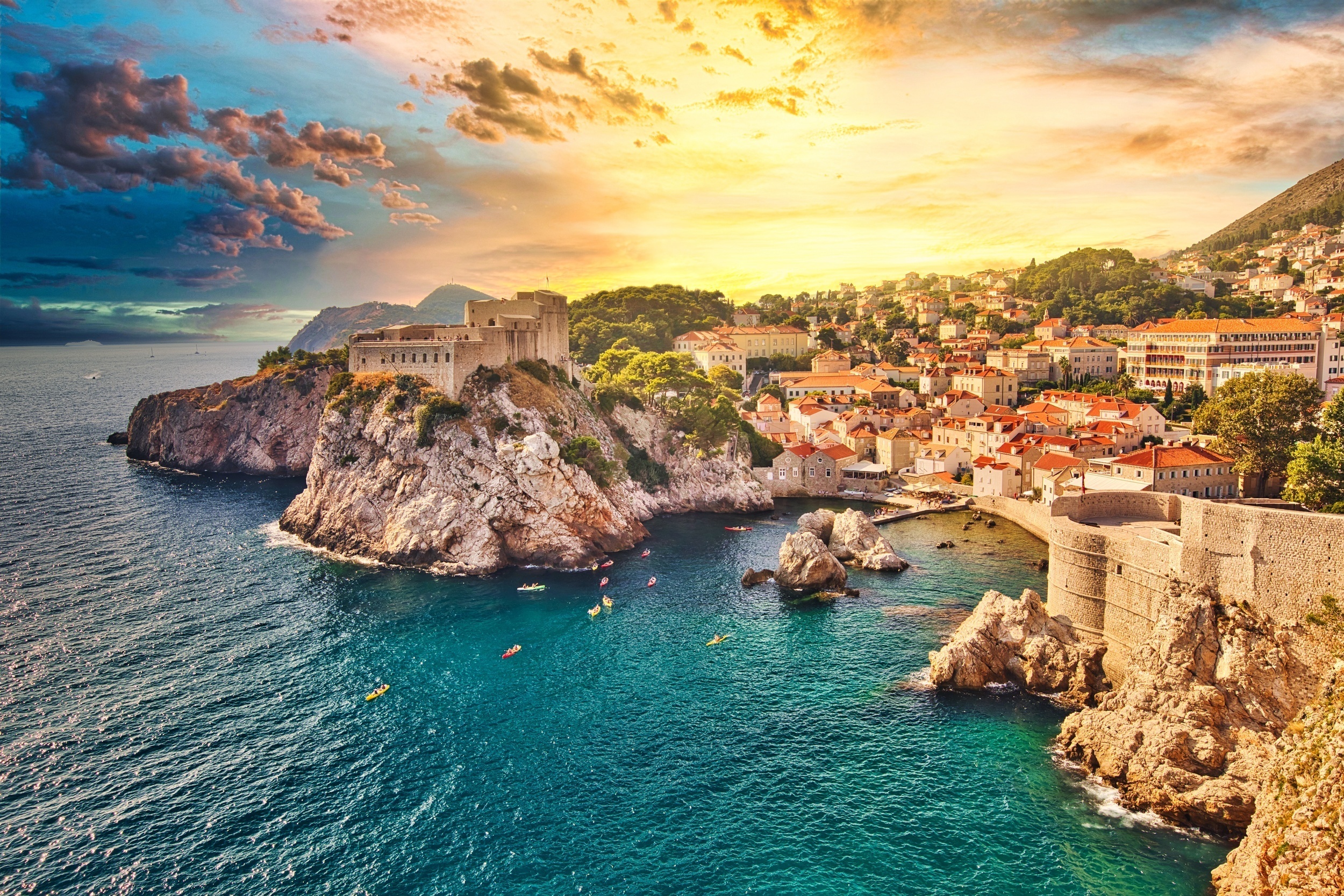
The Balkan countries are an underrated part of Europe, rich in history, culture, and scenery. Not to mention kind people and unique food and drink. Here are 20 places to consider visiting!
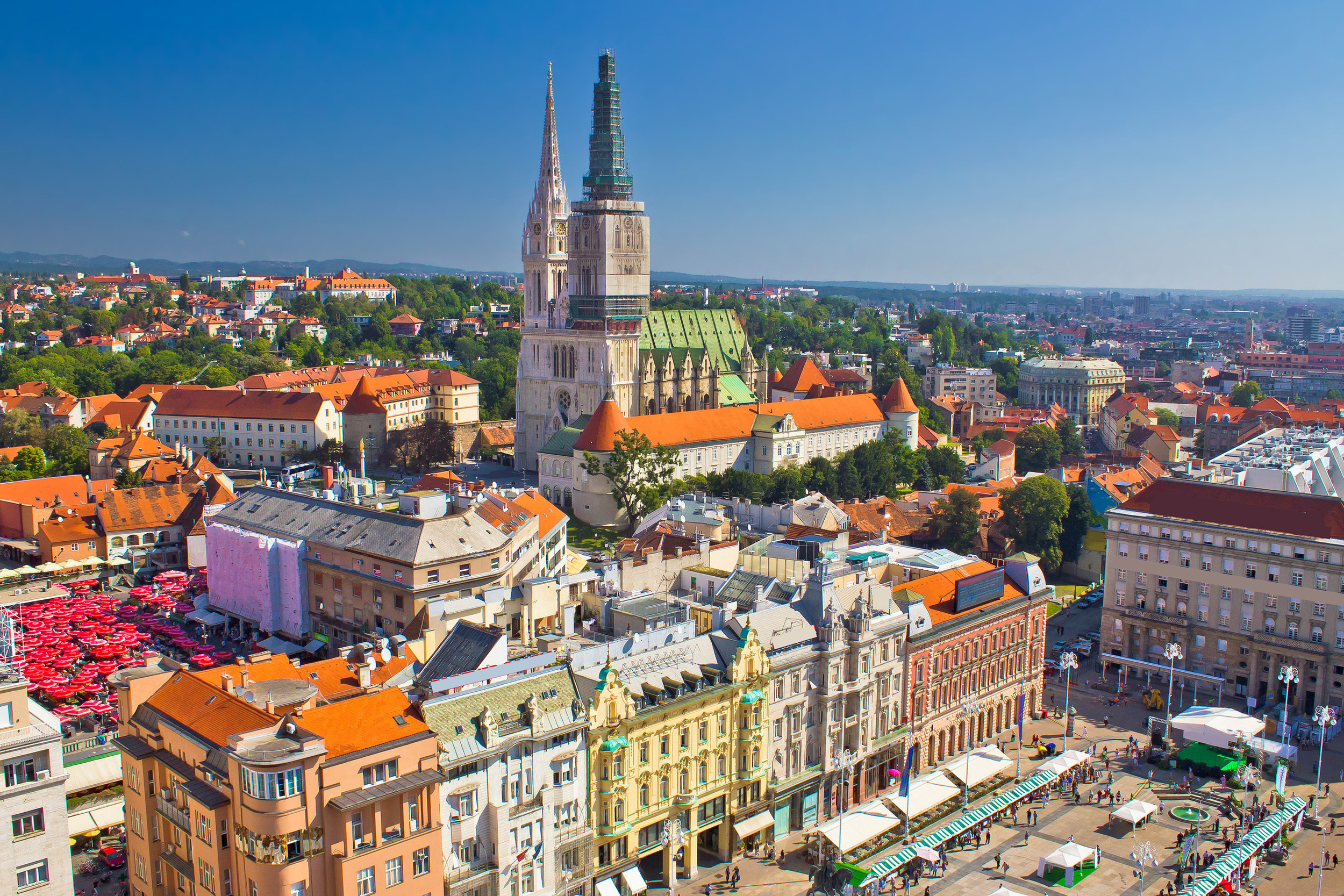
Zagreb, Croatia
The capital of Croatia is very different from other major cities in the Balkans. Home to numerous museums, including the wonderful yet heartbreaking Museum of Broken Relationships, you could spend weeks learning in Zagreb. When you need a place to rest after museum-hopping, chill out at one of the amazing coffee shops in the city or stylish bars, often housed in ruins.
You may also like: 20 essential travel hacks
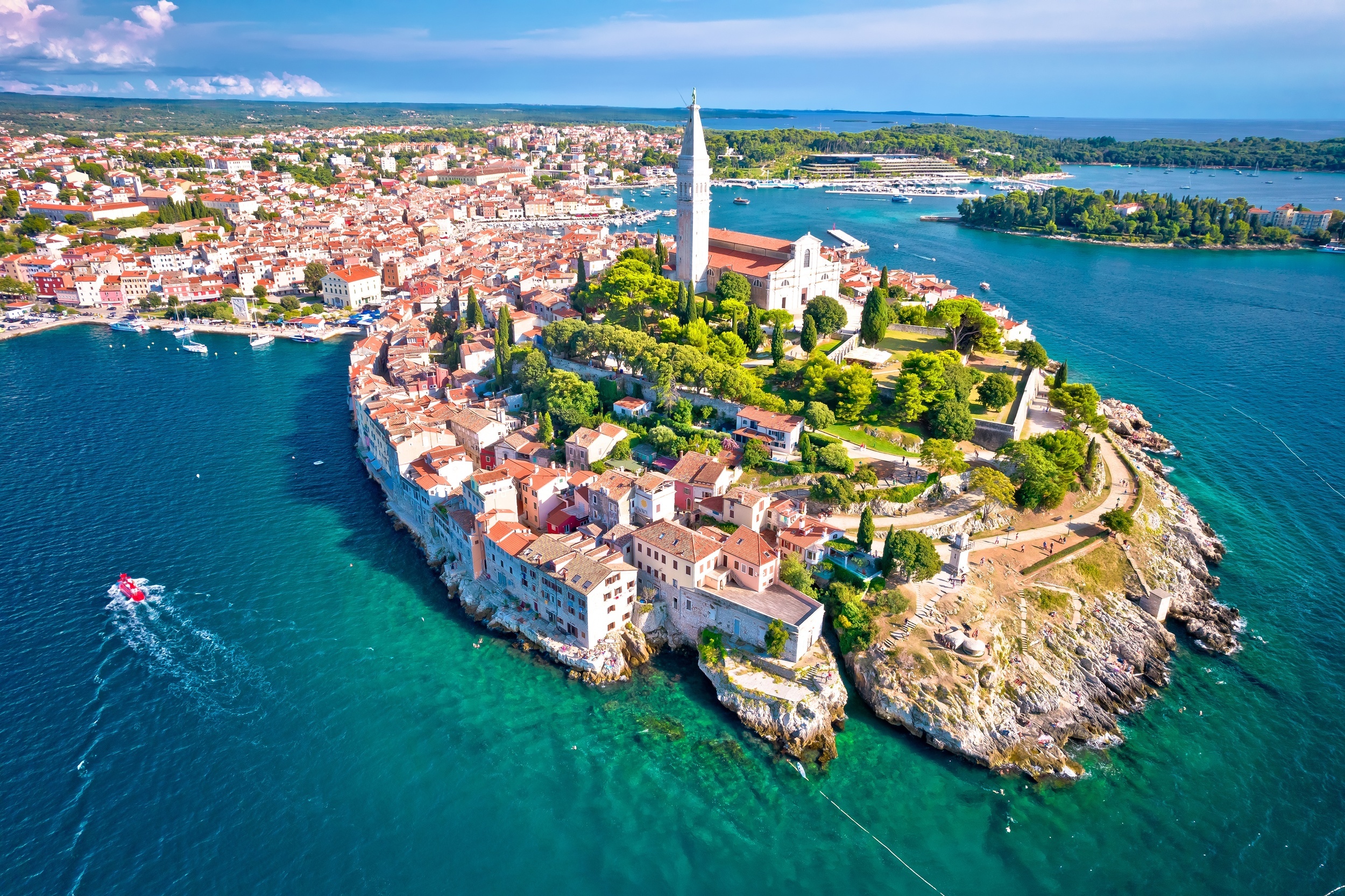
Istria Peninsula, Croatia
Often skipped by visitors in favor of the ever-popular Dalmatian Coast, Istria is Croatia’s best-kept secret! A peninsula close to Italy, you’ll be forgiven for thinking you’re in the land of pizza and espresso. Brightly colored buildings, amazing olive oil, and some of the best truffles in the world can be found here. Don’t miss towns like Rovinj, Bale, Motovun, Grožnjan, and Vodnjan.
Follow us on MSN to see more of our exclusive lifestyle content.
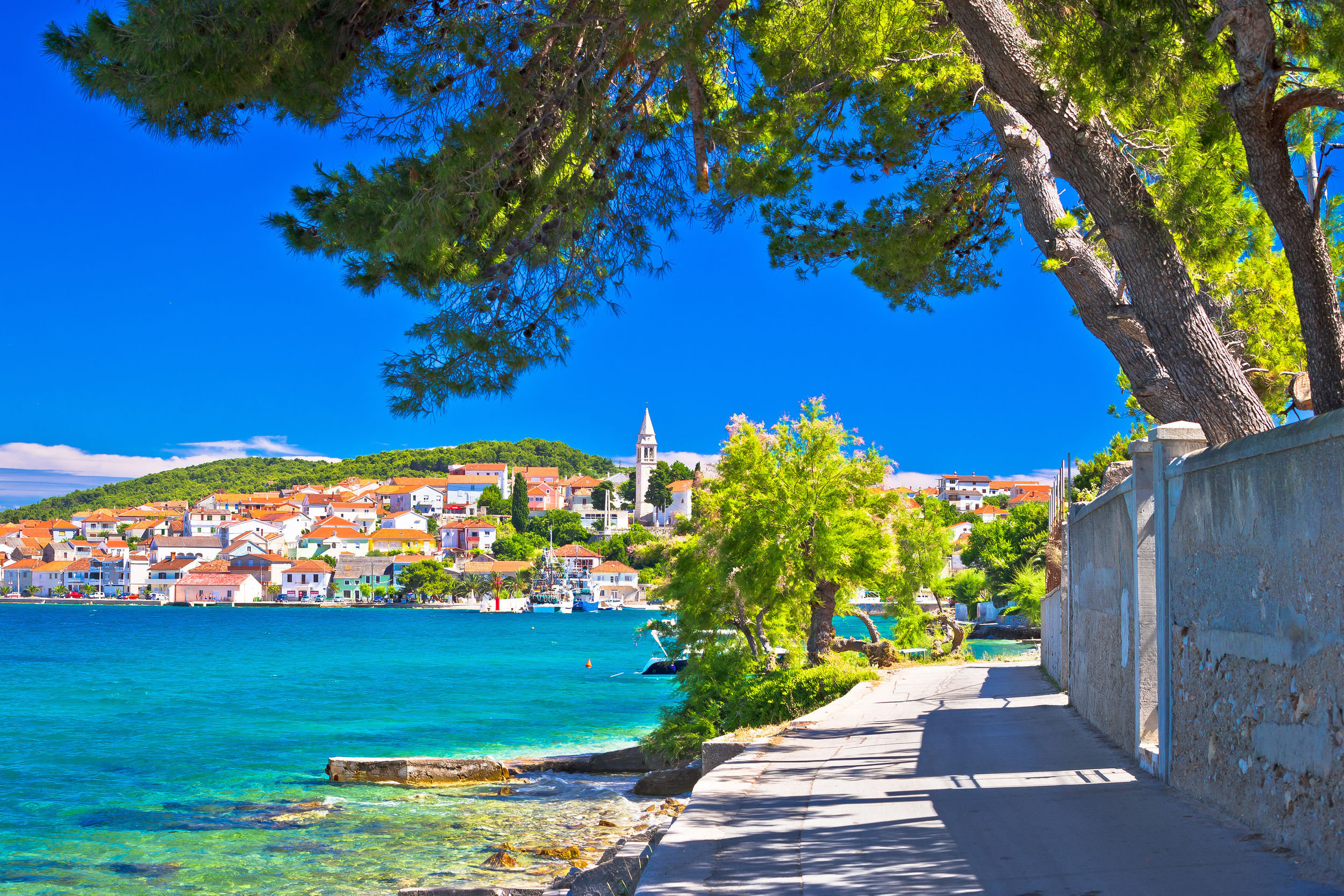
Zadar, Croatia
Alfred Hitchcock adored Zadar, particularly at sunset. Visit this up-and-coming city, and you’ll see why. One of Croatia’s best vegan restaurants calls the city home and some of Croatia’s best Roman ruins. The waterfront features two unique art installations: the Sea Organ (organ pipes drilled under the water) and “Greeting the Sun” (lights that change color per the sun’s movement.)
You may also like: Our 20 favorite road trip snacks
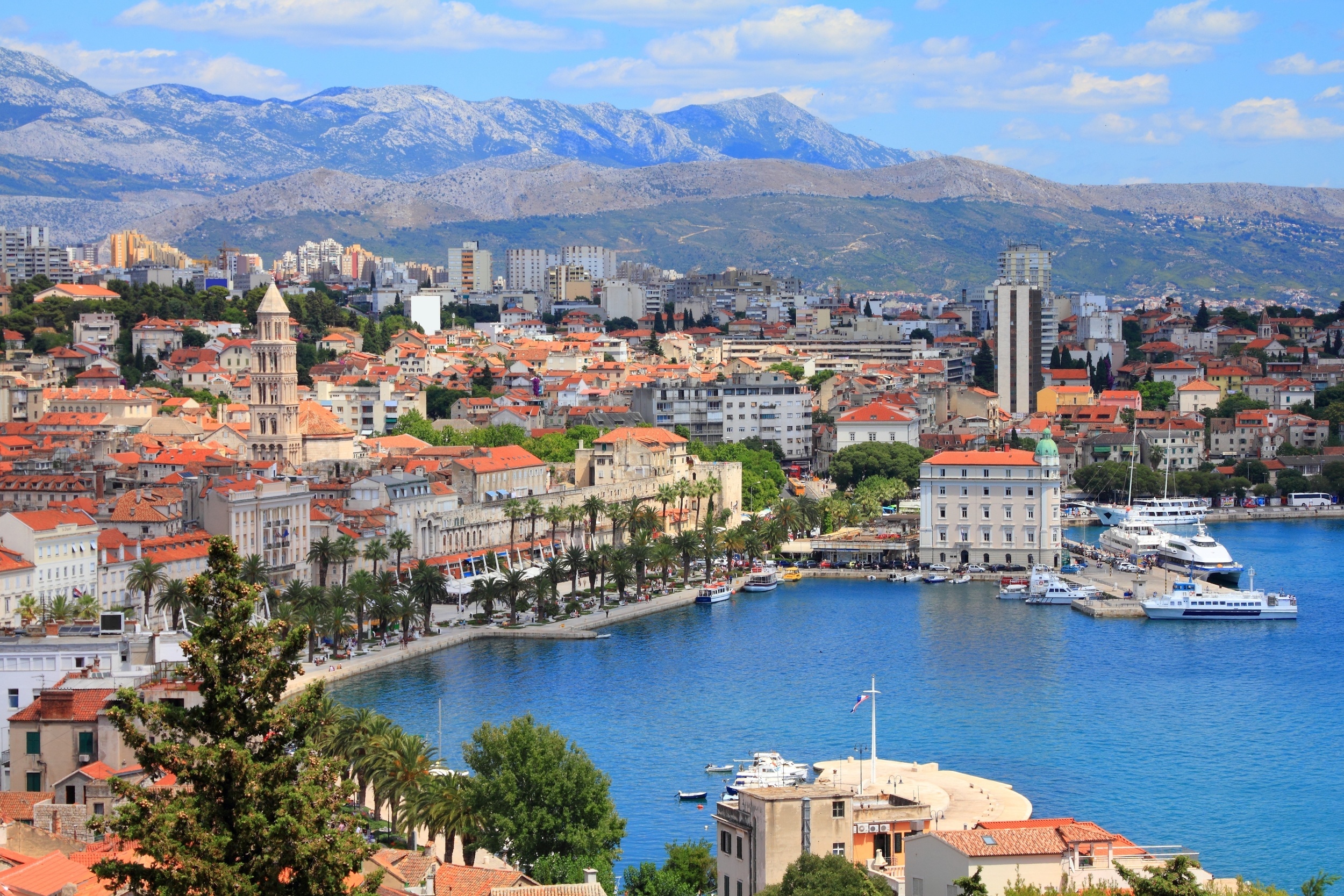
Split, Croatia
The former Greek and Roman center still houses one of the most impressive ruins in the Balkans, Diocletian’s Palace. The former retirement home of Roman rulers is now home to apartments, shops, and restaurants, with various parts sectioned off as museums. Split also has a small but beautiful promenade, a forest park with views above the city, and many of the country’s top restaurants.
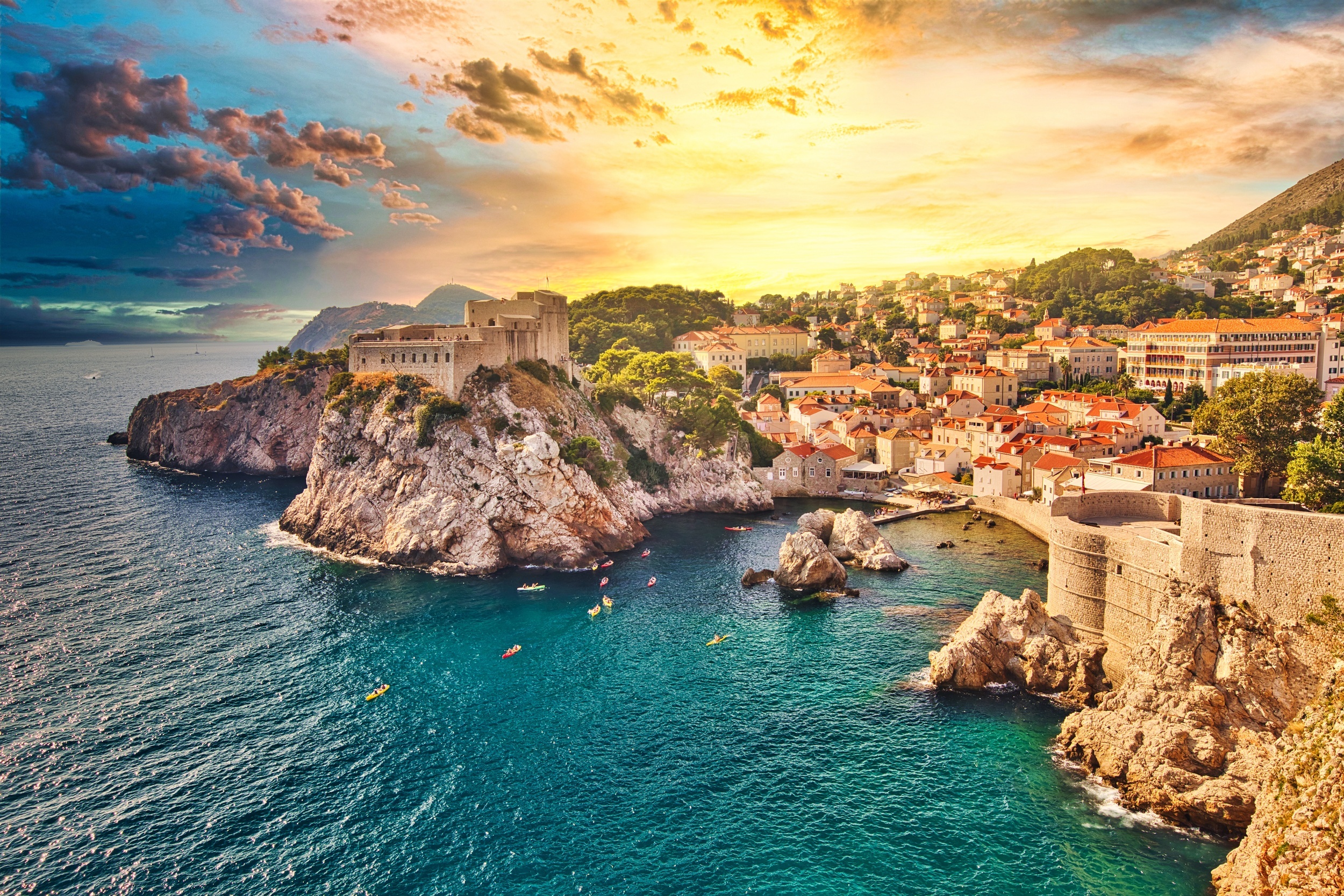
Dubrovnik, Croatia
This list, of course, couldn’t have been completed without mentioning arguably the most famous destination in the Balkans. Game of Thrones ensured the city is now on every traveler’s wishlist, so while you won’t ever have Dubrovnik to yourself, it’s still worth a visit. Enjoy views from atop the city walls, kayak around the hidden coves, and have dinner in the magical Old Town.
You may also like: 22 dessert recipes you can make with an air fryer
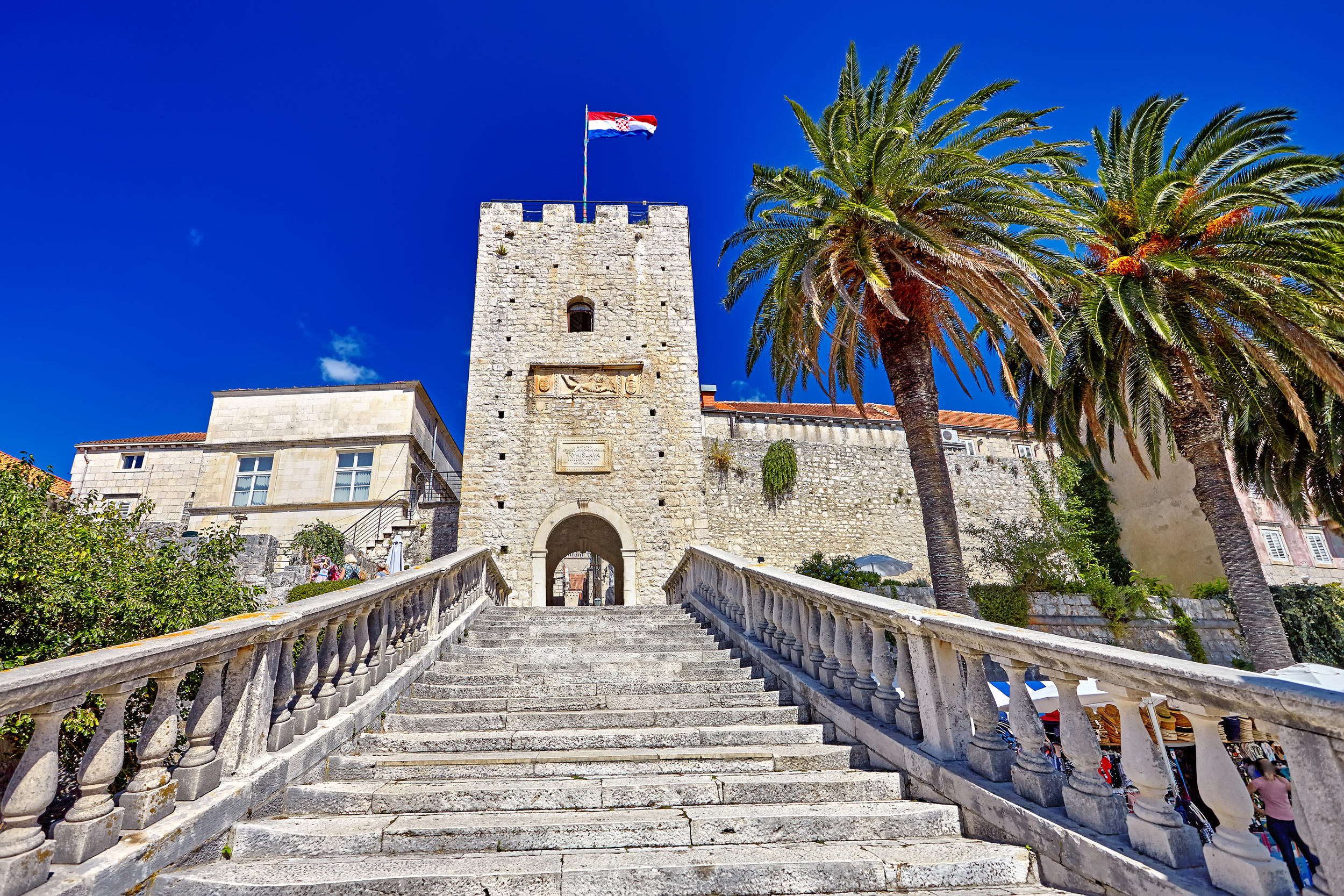
Korcula, Croatia
A little over two hours by ferry from Dubrovnik is this gem of an island, home to wineries with many unique varietals and many high-quality restaurants, including LD, a Michelin-star restaurant that uses mainly ingredients from Korcula. You can hike or bike one of the island’s endless trails when not drinking.
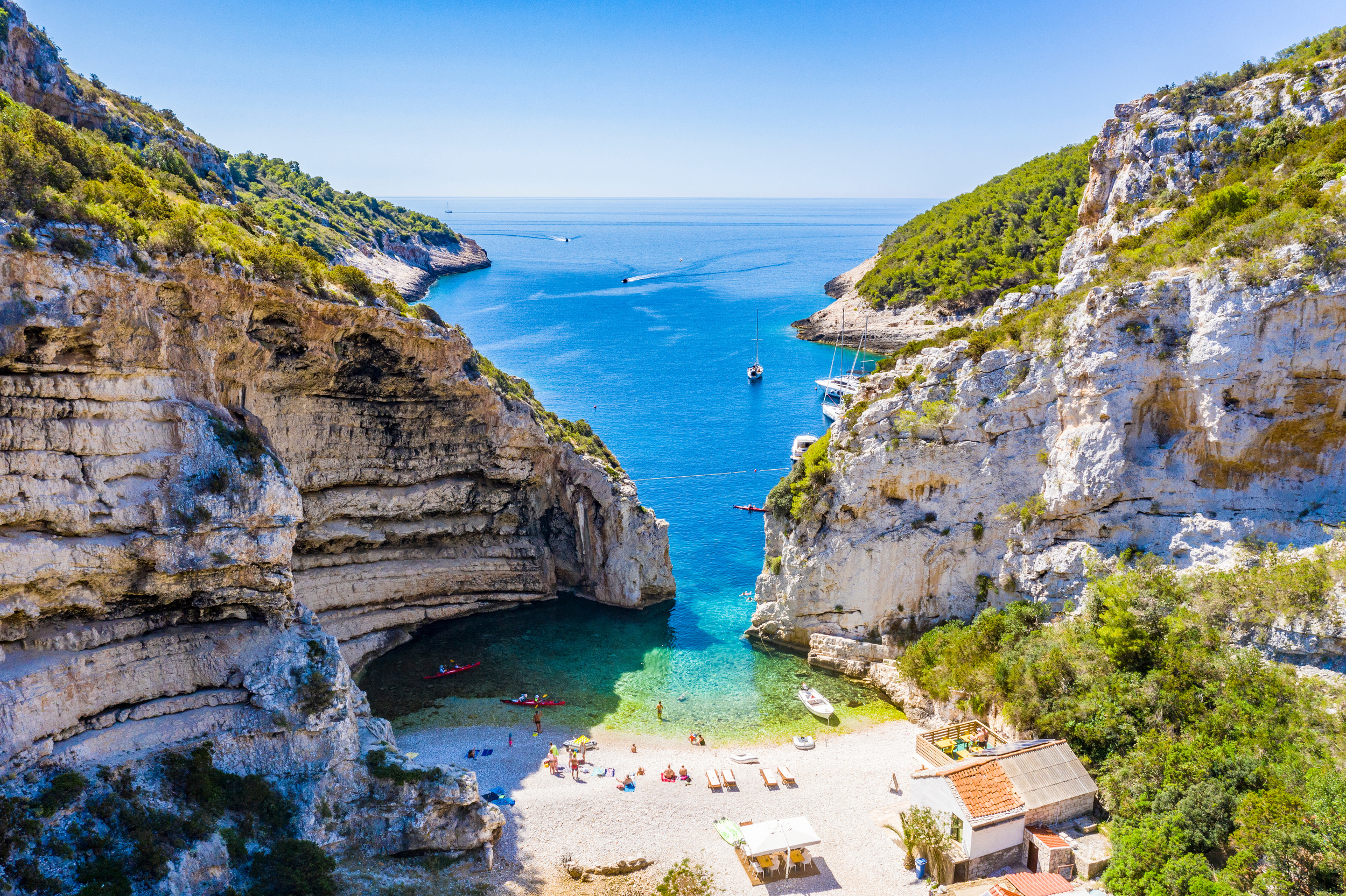
Vis, Croatia
Vis lacks activities compared to other islands, but that’s the point. You come to the island to relax and not do much else. Popular with the sailing crowd, you’ll find a different type of traveler here, as it’s the furthest island from the Croatian mainland. Come with a stack of books, sunglasses, and not much else.
You may also like: Too sweet: 24 of the oldest candy bars still available
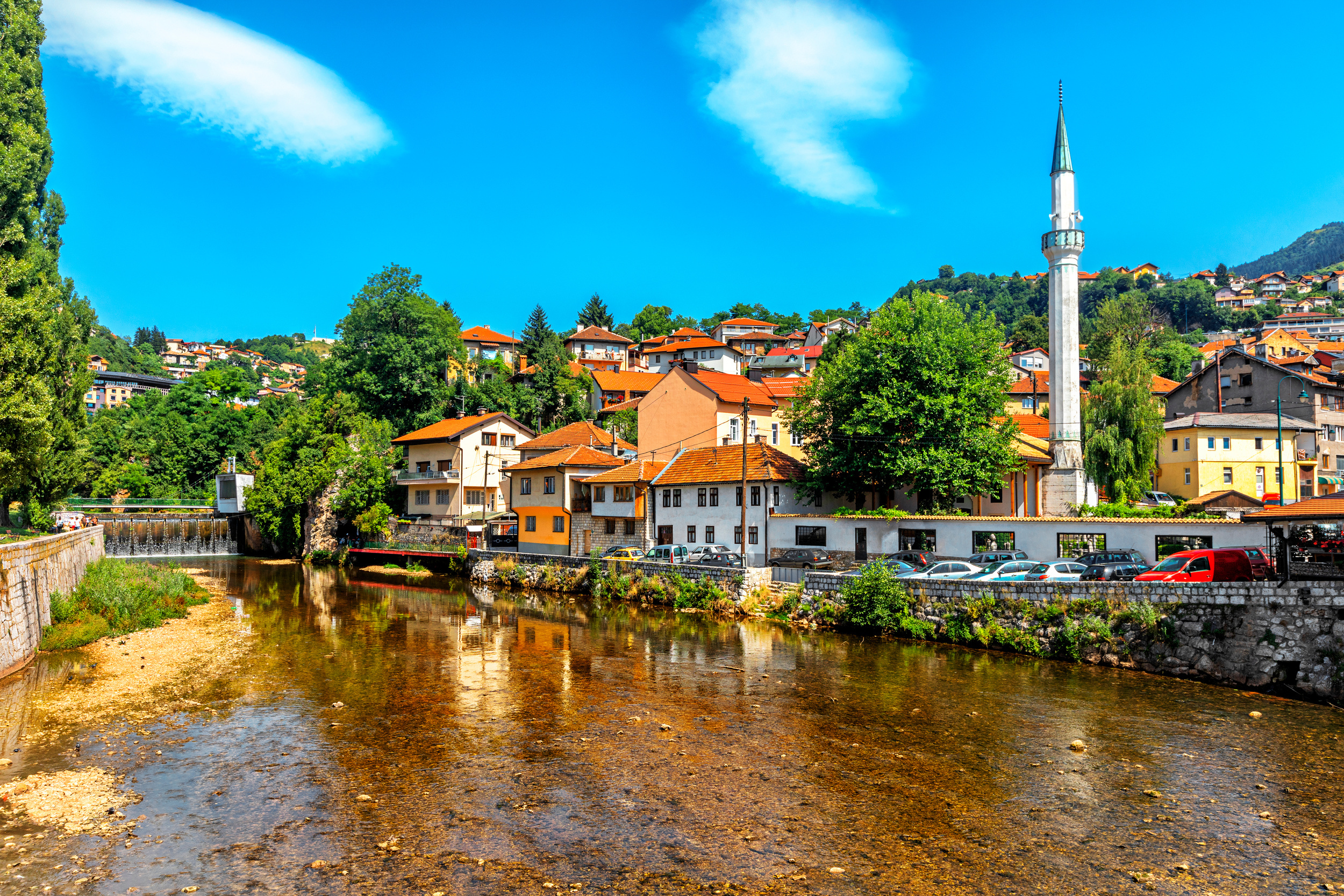
Sarajevo, Bosnia & Herzegovina
This capital city is full of history (the Latin Bridge is where Franz Ferdinand was shot and WWI began) and is still visibly marked by the Bosnian War. Numerous walking tours and museums are dedicated to telling Sarajevo’s story. You can also take the cable car up Trebec Mountain and walk the old bobsled run from the 1984 Olympics.
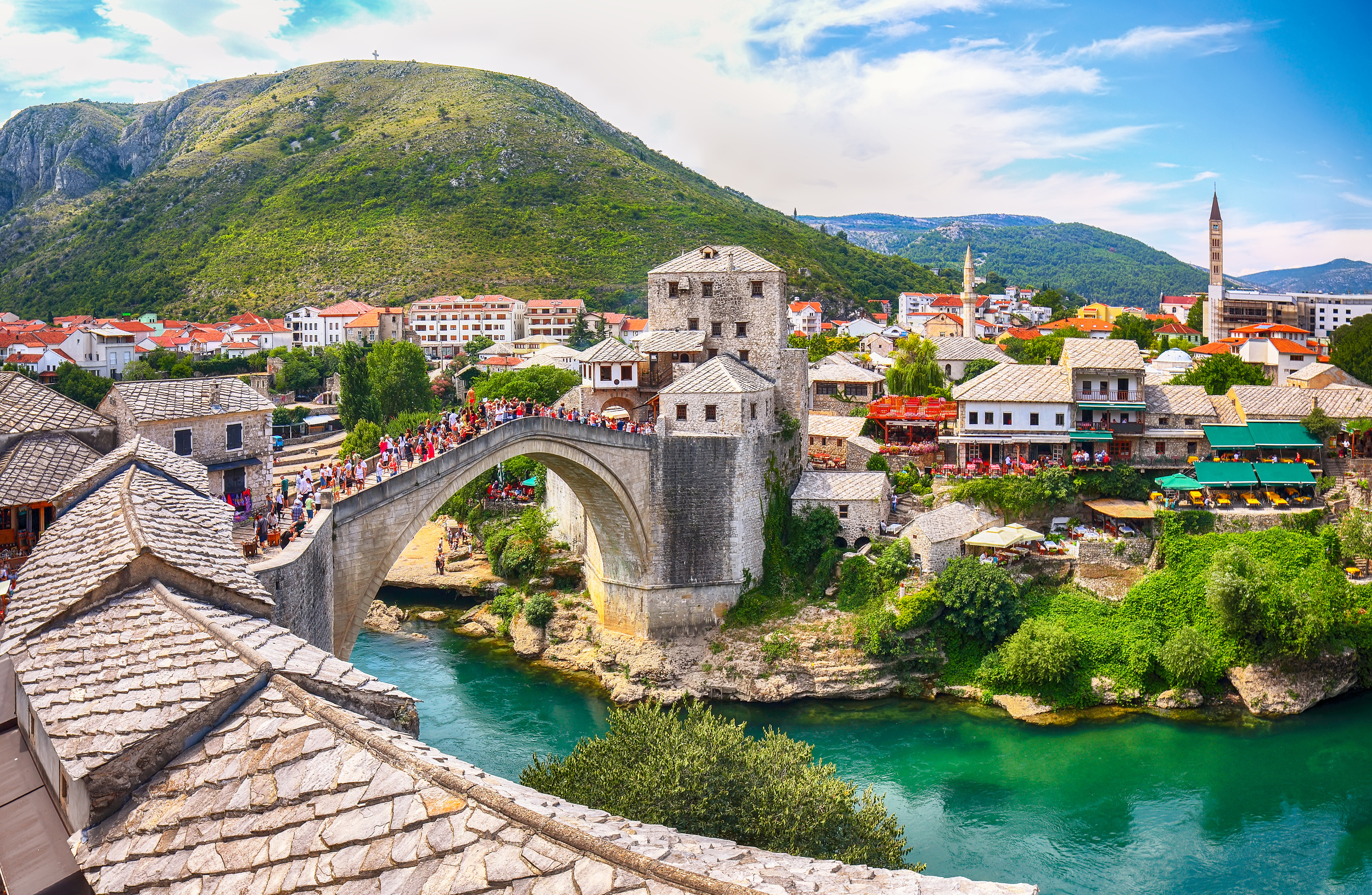
Mostar, Bosnia & Herzegovina
In the south of the country, solidly in the region of Herzegovina, is one of the Balkan’s most adorable towns. Mostar and its small Old Town will have you in love at first glance. Wander the many bridges, have coffee at one of the cute cafes, sample regional wine, and watch the locals jump off the Old Bridge into the river on a hot day.
You may also like: 18 things you think are normal but are actually uniquely American

Herzegovina wine country
The Balkans aren’t known for wine, but the region is home to some amazing producers. If you’ve had wine from the area, it was likely from Croatia (and even that’s rare outside of the country itself.) However, the best up-and-coming destination is Herzegovina. This region has two main varietals; Žilavka, an acidic white wine, and Blatina, a full-bodied red. Both can be sampled in Mostar; however, for the best experience, visit the vineyards outside of town!
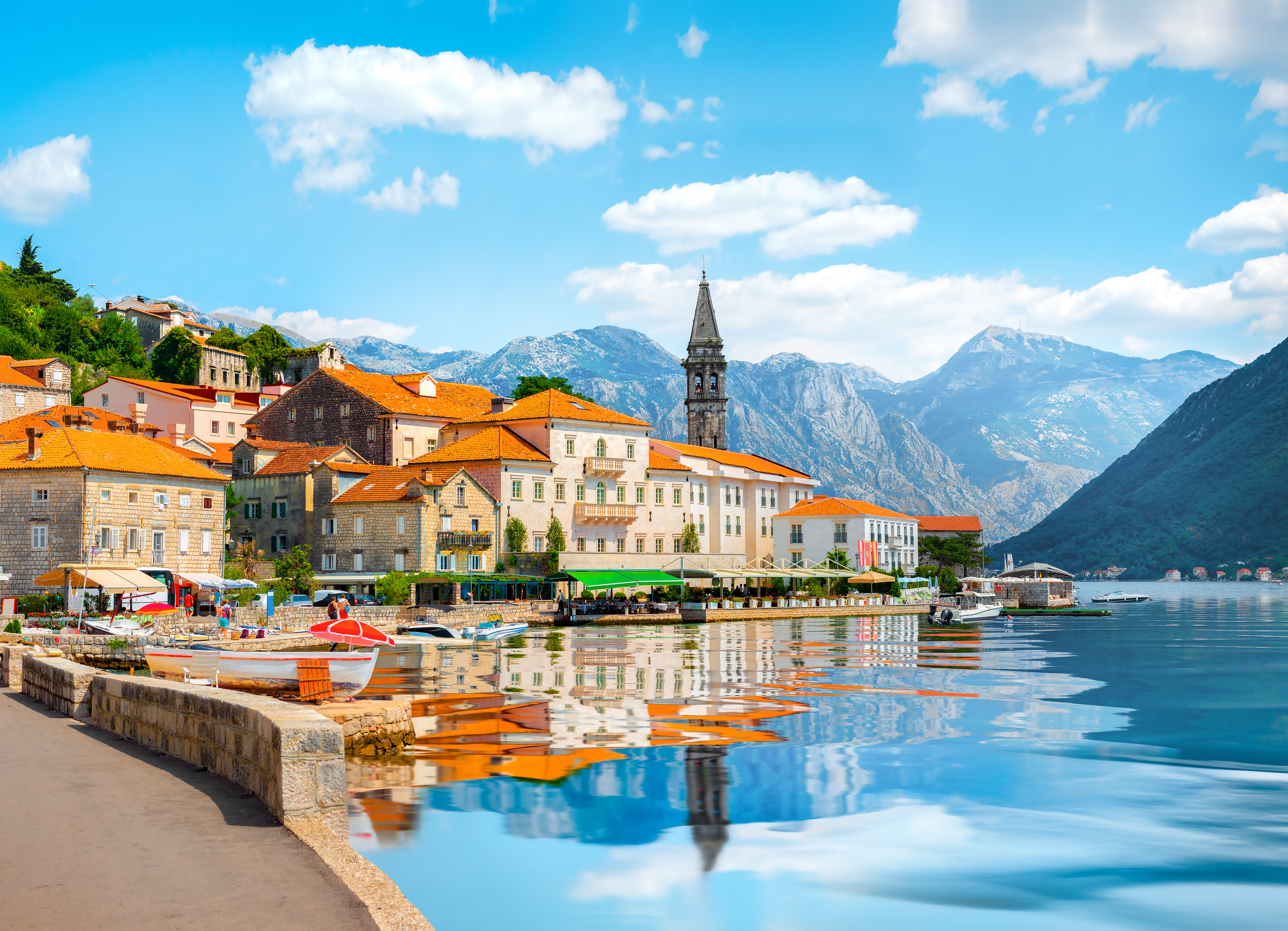
Kotor, Montenegro
The cruise ship capital of Montenegro is worth a visit whether you’re arriving by land or sea. The epic fortress is a must, hike up for the best views in the country or trek the Ladder of Kotor, a winding trail with amazing views. Then, take a boat to Our Lady of Rocks and the Blue Cave and wander Old Town to round out your site-seeing!
You may also like: Add these 20 unusual U.S. destinations to your travel bucket list
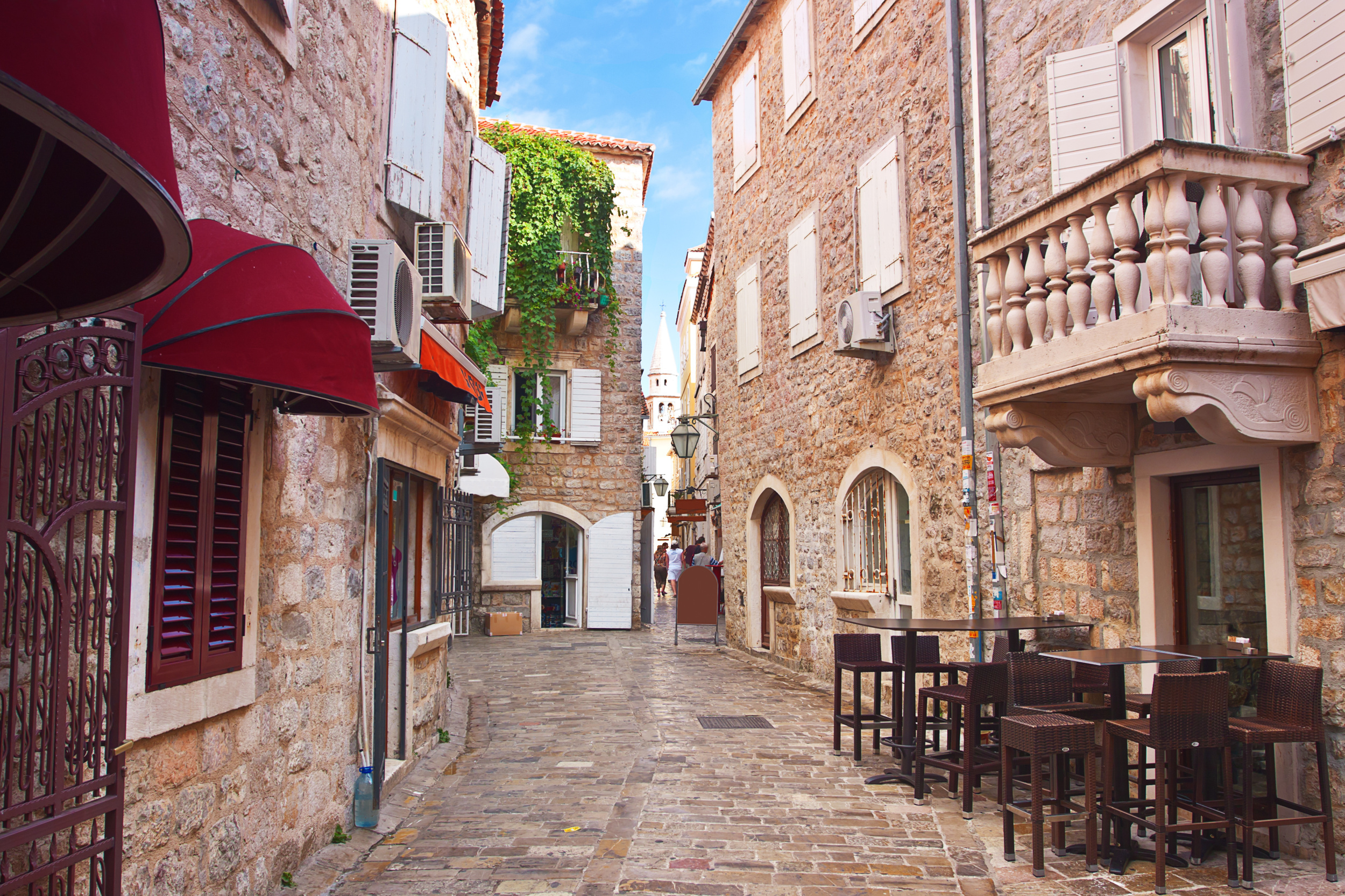
Budva, Montenegro
One of the Balkan's best-kept secrets is this gem of a town on the Bay of Kotor. Unlike many regional destinations, the beaches here are sandy and can be enjoyed without water shoes! The Budva Old Town is also super cute for a wander and has some great cafes.

Herceg Novi, Montenegro
Another adorable small Montenegran village just a couple of hours from Dubrovnik, the town of Herceg Novi isn’t commonly visited, despite being one of the most charming destinations in the Balkans! A green oasis home to many tropical flowers, it’s commonly called the “town of 100,001 steps” due to the climbing necessary to make your way around town.
You may also like: 20 foods that are basically calorie-free
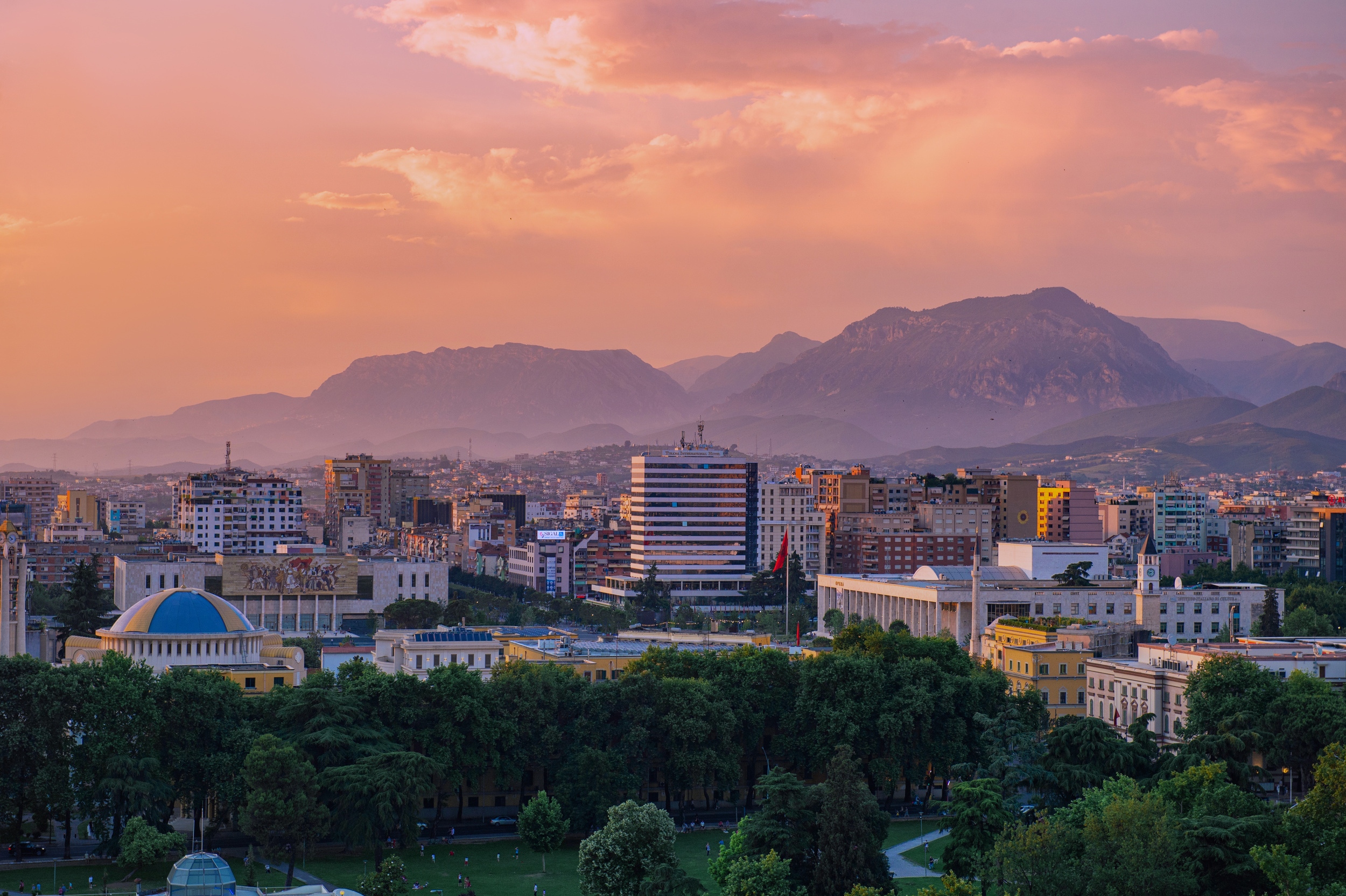
Tirana, Albania
This is probably the quirkiest capital in the Balkans. Italian architecture from the Mussolini period is mixed with Communist-era blocks and historic remains of its varied past as an Ottoman stronghold and closed-off country under a dictatorship for 50 years. These days, the city is full of life. From the trendy Blloku neighborhood to Tirana’s huge city park and endless monuments and museums to explore.
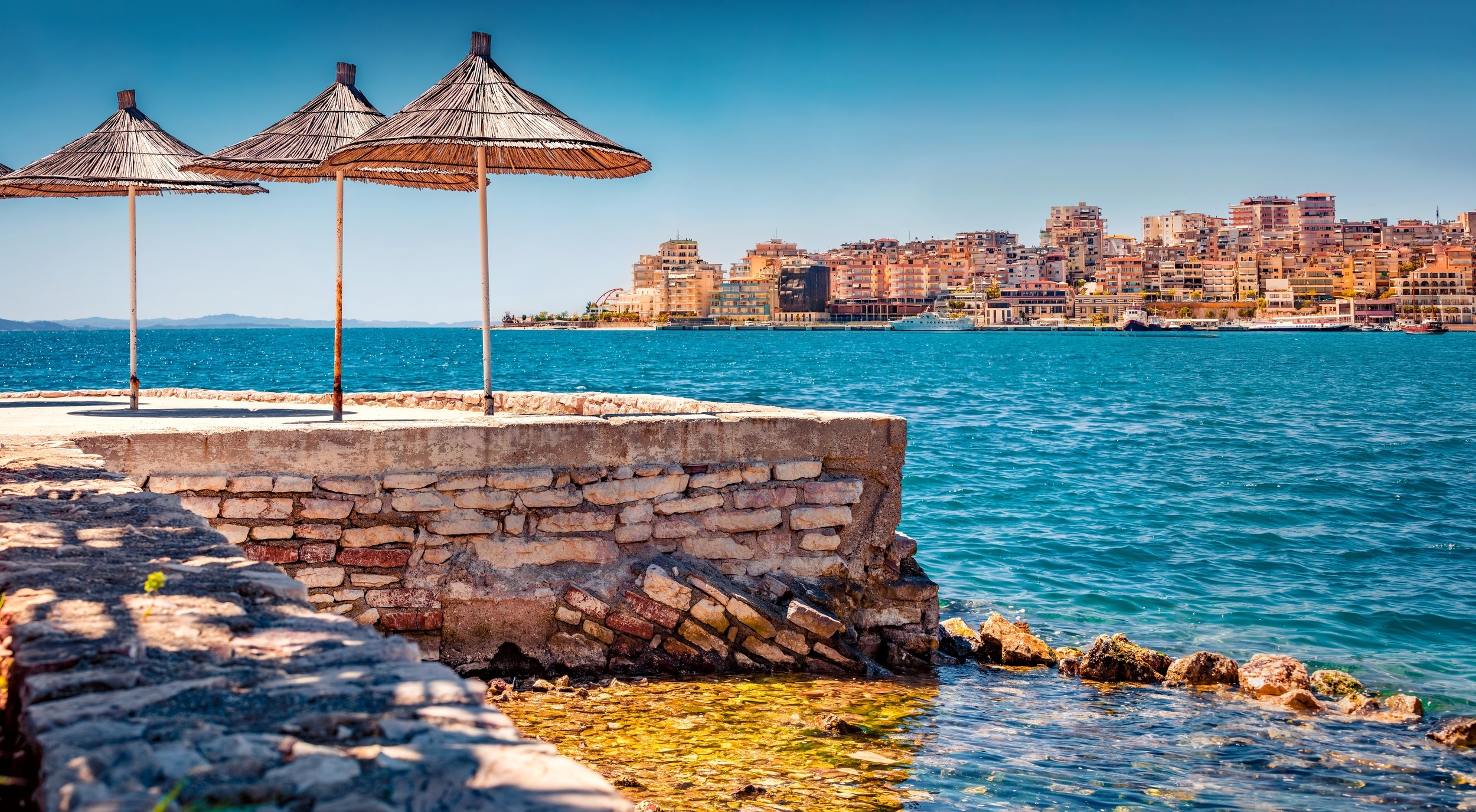
Sarandë, Albania
The unofficial capital of the “Albanian Riveria,” Sarande feels like a world away from the rest of the country. Electric blue waters rival those of Greece (which you can see from the town), trendy beach clubs could fool you into thinking you’re on the beaches of Tulum, and the outfits on the evening promenade will have you thinking it’s Milan Fashion Week.
You may also like: 22 Southern slow-cooker recipes
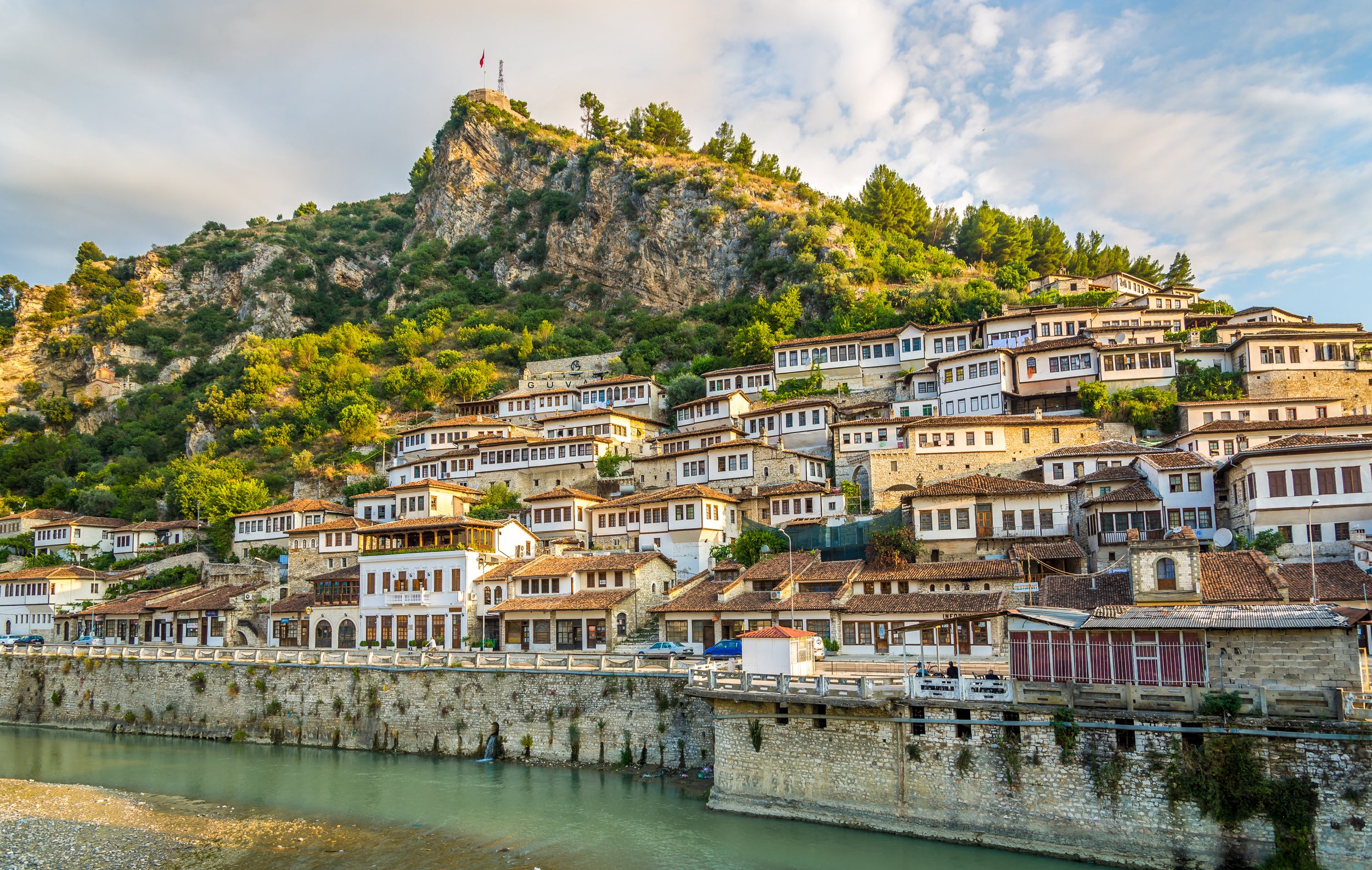
Berat, Albania
This ancient city is best known for the traditional white Ottoman homes that make up the center. The windows of the homes give the impression that you’re being watched as you arrive or stroll the riverfront promenade (a favorite evening activity for the locals.) There are also Byzantine churches, Ottoman mosques, and a castle with amazing views!
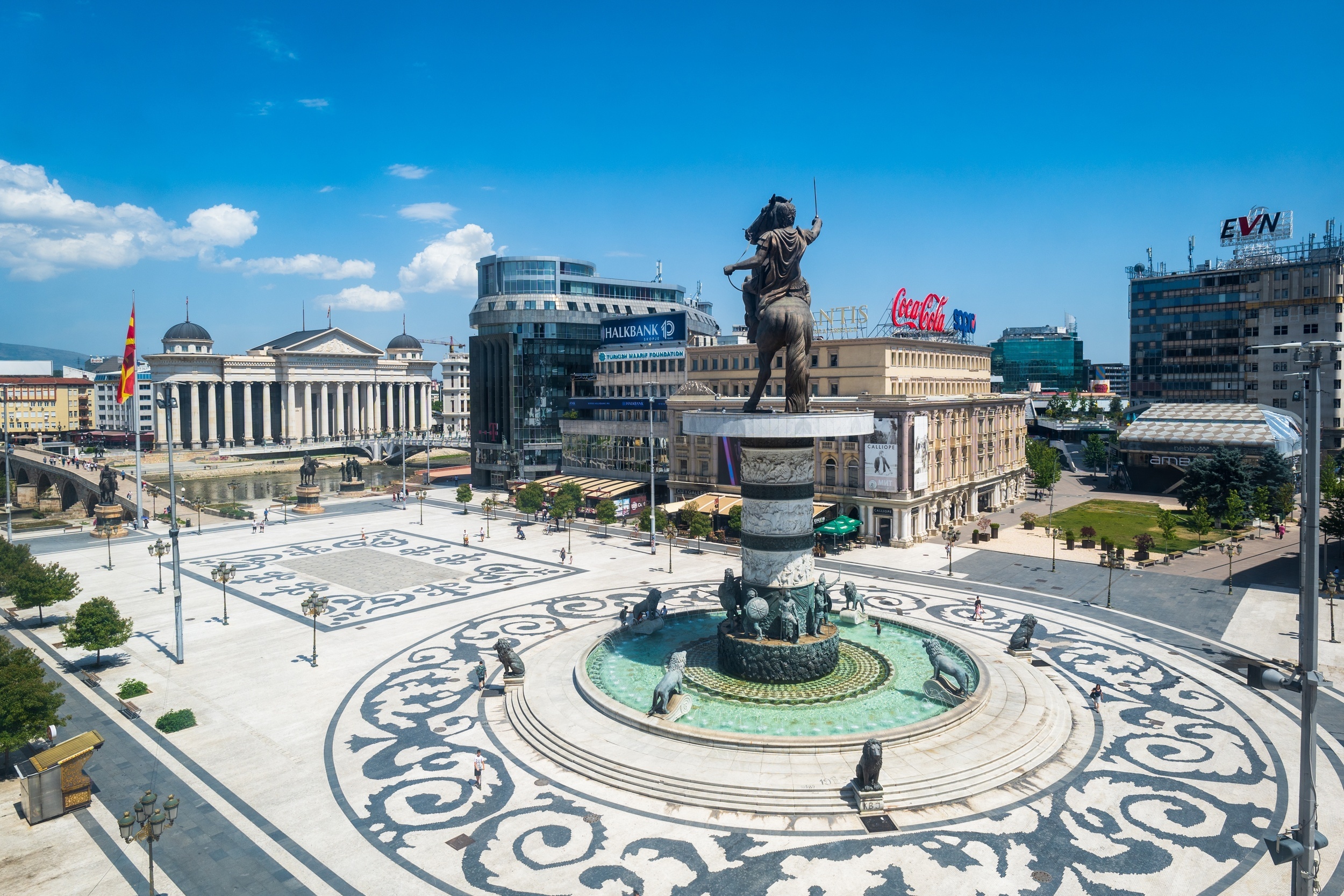
Skopje, North Macedonia
This capital in a highly fought-over country is truly a bizarrely beautiful city to visit. Wide roads from the communist era (built to accommodate large armies) are now tiled pedestrian streets making strolling the city center the perfect way to spend the day. However, don’t be surprised by the imposing giant monuments all over, commissioned in 2014 as part of redevelopment aimed at attracting tourists. The city's best views are from the Fortress and Mount Vodno — each on opposite sides of the river.
You may also like: 15 weird & wonderful roadside attractions in the United States
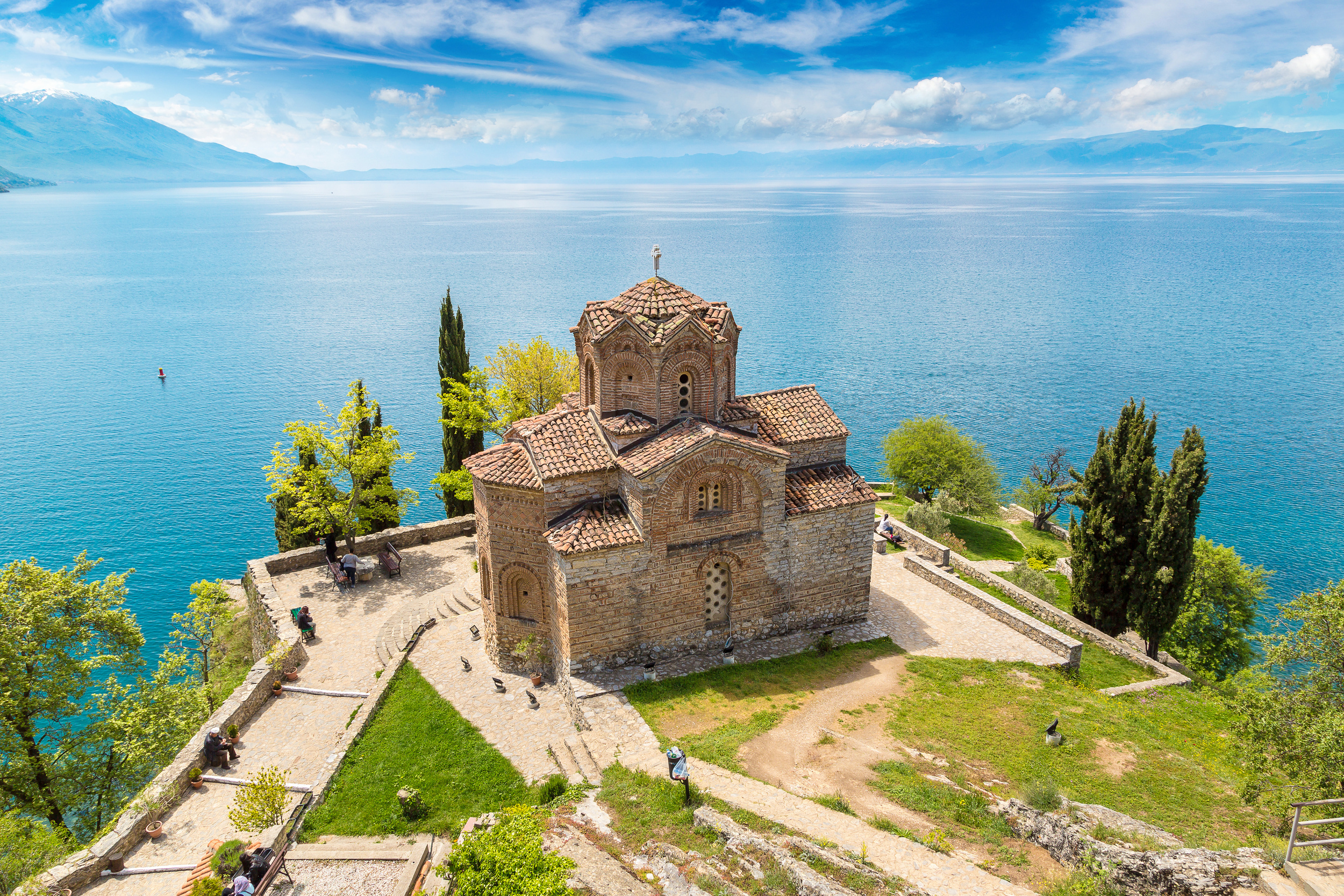
Lake Ohrid, North Macedonia
A true Balkan gem, the 138-square-mile lake is shared between Albania, Greece, and North Macedonia. However, it’s the Macedonian side that is the true beauty. Numerous villas and lakeside accommodations dot the shores, along with the UNESCO Saint Naum Monastery and a charming Old Town.
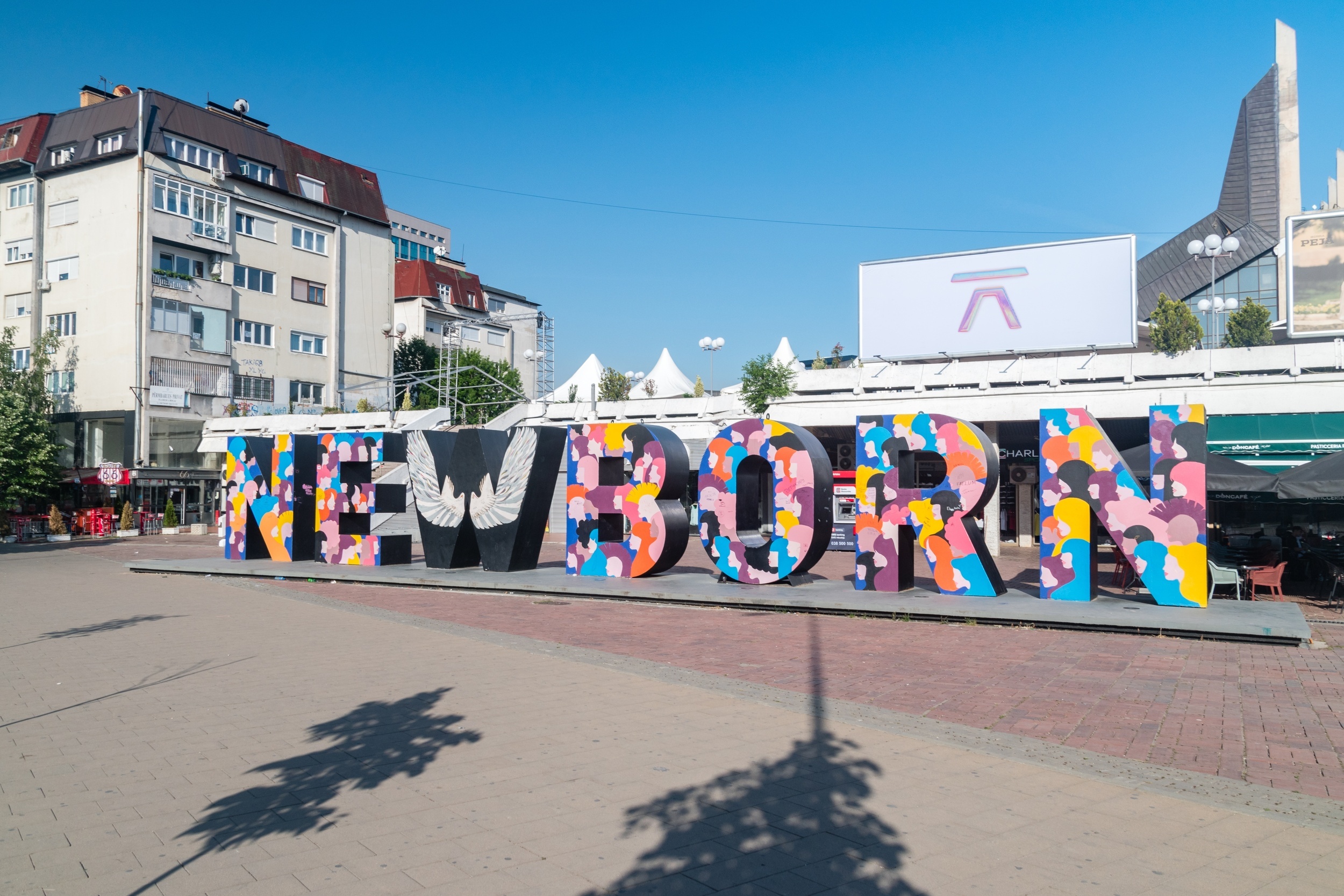
Pristina, Kosovo
Europe’s youngest country has what is potentially the coolest capital city. Pristina is home to a cute pedestrian area (the local government is currently trying to expand) and many interesting attractions like the futuristic National Library and NEWBORN monument that are redone every year. Additionally, the best coffee in the Balkans can be sampled at any of the city’s numerous cafes.
You may also like: 15 scenic train rides across Europe
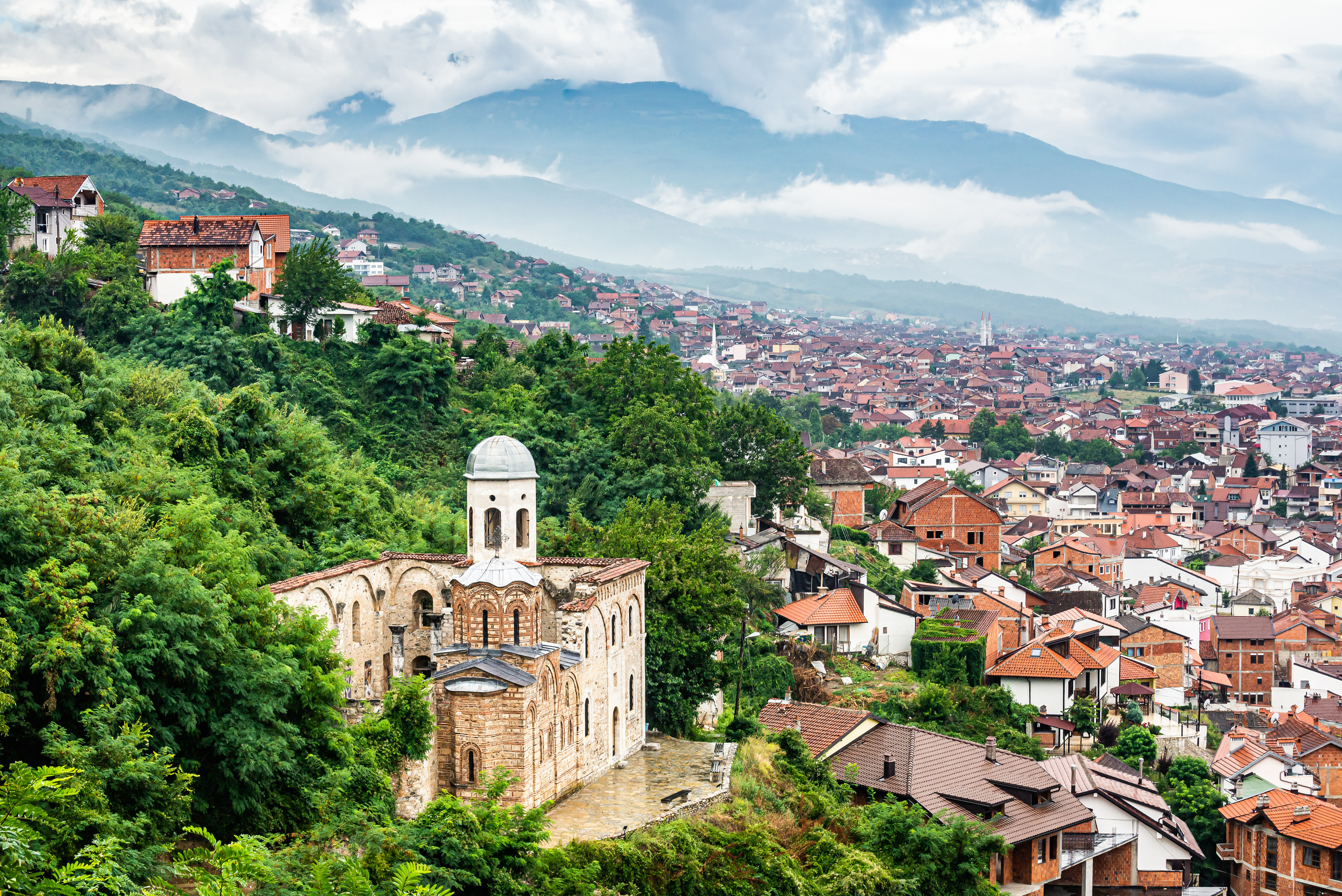
Prizren, Kosovo
Pristina may be the political and educational seat of Kosovo, but Prizren is the cultural and economic capital. Just an hour’s drive from the capital city, the Ottoman-style city feels like a world away. Visit one of the numerous mosques, hike to the city's top for amazing views, or just wander the Old Town and step back in time.
Did you enjoy this slideshow? Follow us on MSN to see more of our exclusive lifestyle content.
More for You
Grammy-winning American Idol star Mandisa dies aged 47
Taco Bell rival files Chapter 11 bankruptcy; sells company
25 human foods you should never give your dog—and 25 foods you can
5 Things You Need To Stop Doing If Your Car Has An Automatic Transmission
Black undercover police officer beaten up by his own colleagues awarded $23.5m
I Submitted My Taxes and Got a CP2000 Notice From the IRS. Help!
This type of supplement may increase heart disease risk, new study finds
Samantha Davis Dies: Actor Wife Of Warwick Davis, Co-Founder Of Little People UK Charity Was 53
25 legendary musicians you might not know were LGBTQ+
WWE releases multiple wrestlers
The 7 Unhealthiest Ways To Cook Eggs
7 CDs You Probably Owned, Threw Out and Now Are Worth Bank
Naruto Studio President: Anime Censorship Will Weaken Overseas Popularity
The 25 Most Dangerous Cities to Drive In
‘It can happen again’: Judge set to preside over Trump trial delivers her toughest Jan. 6 sentence to date
The Beatle with the best solo album—and the one with the worst—based on data
20 TV characters who died because the actor who played them died in real life
3 underrated Netflix movies you should watch this weekend (April 19-21)
8 Things You Must Buy at Costco on a Middle-Class Budget
How many litres of water should you drink a day and does tea count?
Claudia Looi
Touring the Top 10 Moscow Metro Stations
By Claudia Looi 2 Comments

Komsomolskaya metro station looks like a museum. It has vaulted ceilings and baroque decor.
Hidden underground, in the heart of Moscow, are historical and architectural treasures of Russia. These are Soviet-era creations – the metro stations of Moscow.
Our guide Maria introduced these elaborate metro stations as “the palaces for the people.” Built between 1937 and 1955, each station holds its own history and stories. Stalin had the idea of building beautiful underground spaces that the masses could enjoy. They would look like museums, art centers, concert halls, palaces and churches. Each would have a different theme. None would be alike.
The two-hour private tour was with a former Intourist tour guide named Maria. Maria lived in Moscow all her life and through the communist era of 60s to 90s. She has been a tour guide for more than 30 years. Being in her 60s, she moved rather quickly for her age. We traveled and crammed with Maria and other Muscovites on the metro to visit 10 different metro stations.

Arrow showing the direction of metro line 1 and 2

Moscow subways are very clean
To Maria, every street, metro and building told a story. I couldn’t keep up with her stories. I don’t remember most of what she said because I was just thrilled being in Moscow. Added to that, she spilled out so many Russian words and names, which to one who can’t read Cyrillic, sounded so foreign and could be easily forgotten.
The metro tour was the first part of our all day tour of Moscow with Maria. Here are the stations we visited:
1. Komsomolskaya Metro Station is the most beautiful of them all. Painted yellow and decorated with chandeliers, gold leaves and semi precious stones, the station looks like a stately museum. And possibly decorated like a palace. I saw Komsomolskaya first, before the rest of the stations upon arrival in Moscow by train from St. Petersburg.
2. Revolution Square Metro Station (Ploshchad Revolyutsii) has marble arches and 72 bronze sculptures designed by Alexey Dushkin. The marble arches are flanked by the bronze sculptures. If you look closely you will see passersby touching the bronze dog's nose. Legend has it that good luck comes to those who touch the dog's nose.

Touch the dog's nose for good luck. At the Revolution Square station

Revolution Square Metro Station
3. Arbatskaya Metro Station served as a shelter during the Soviet-era. It is one of the largest and the deepest metro stations in Moscow.

Arbatskaya Metro Station
4. Biblioteka Imeni Lenina Metro Station was built in 1935 and named after the Russian State Library. It is located near the library and has a big mosaic portrait of Lenin and yellow ceramic tiles on the track walls.

Lenin's portrait at the Biblioteka Imeni Lenina Metro Station

5. Kievskaya Metro Station was one of the first to be completed in Moscow. Named after the capital city of Ukraine by Kiev-born, Nikita Khruschev, Stalin's successor.

Kievskaya Metro Station
6. Novoslobodskaya Metro Station was built in 1952. It has 32 stained glass murals with brass borders.

Novoslobodskaya metro station
7. Kurskaya Metro Station was one of the first few to be built in Moscow in 1938. It has ceiling panels and artwork showing Soviet leadership, Soviet lifestyle and political power. It has a dome with patriotic slogans decorated with red stars representing the Soviet's World War II Hall of Fame. Kurskaya Metro Station is a must-visit station in Moscow.

Ceiling panel and artworks at Kurskaya Metro Station

8. Mayakovskaya Metro Station built in 1938. It was named after Russian poet Vladmir Mayakovsky. This is one of the most beautiful metro stations in the world with 34 mosaics painted by Alexander Deyneka.

Mayakovskaya station

One of the over 30 ceiling mosaics in Mayakovskaya metro station
9. Belorusskaya Metro Station is named after the people of Belarus. In the picture below, there are statues of 3 members of the Partisan Resistance in Belarus during World War II. The statues were sculpted by Sergei Orlov, S. Rabinovich and I. Slonim.

10. Teatralnaya Metro Station (Theatre Metro Station) is located near the Bolshoi Theatre.

Teatralnaya Metro Station decorated with porcelain figures .

Taking the metro's escalator at the end of the tour with Maria the tour guide.
Have you visited the Moscow Metro? Leave your comment below.
January 15, 2017 at 8:17 am
An excellent read! Thanks for much for sharing the Russian metro system with us. We're heading to Moscow in April and exploring the metro stations were on our list and after reading your post, I'm even more excited to go visit them. Thanks again 🙂
December 6, 2017 at 10:45 pm
Hi, do you remember which tour company you contacted for this tour?
Leave a Reply Cancel reply
You must be logged in to post a comment.
Please go to the Instagram Feed settings page to create a feed.
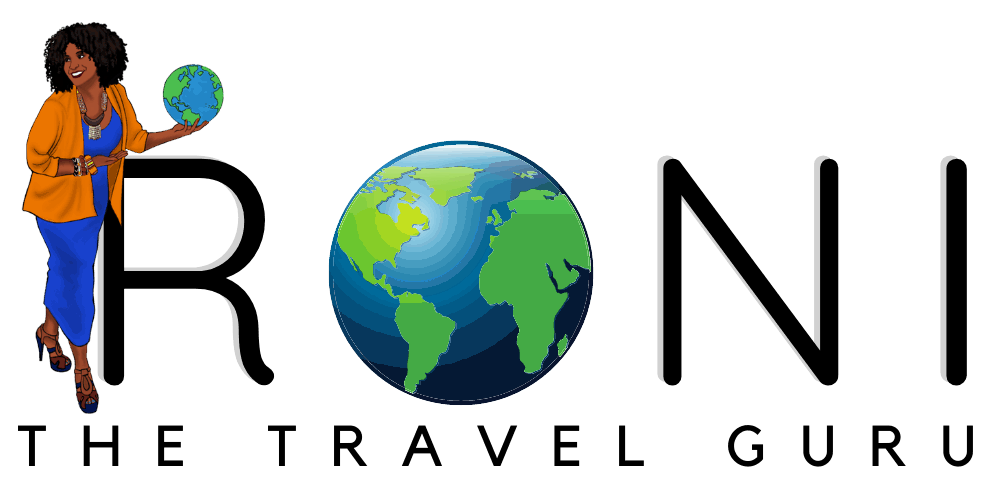
Moscow Metro – Part 2
Have you been to Moscow ? In all seriousness, they have the prettiest metro stations I have ever seen and I still can’t believe how immaculate and lovely every station was. There are several different stations pictured below and this is the second of several posts where I will show you the beauty of the Moscow Metro. Did you see part 1 ? There really isn’t much to say because I think the pictures speak for themselves. I have so many more pictures to share with you!
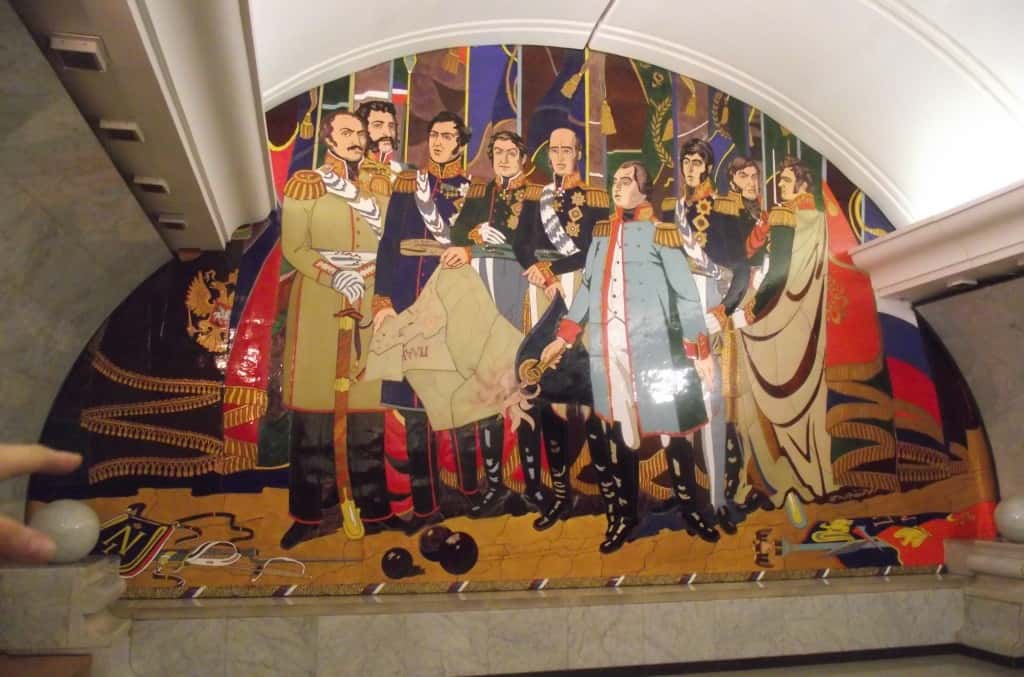
Have you ever been to Moscow? Is it someplace you have thought about visiting?
She speaks fluent English, French and Spanish, and works for a major airline. And guess what? She’s also a licensed elementary teacher and has an MBA.
Similar Posts
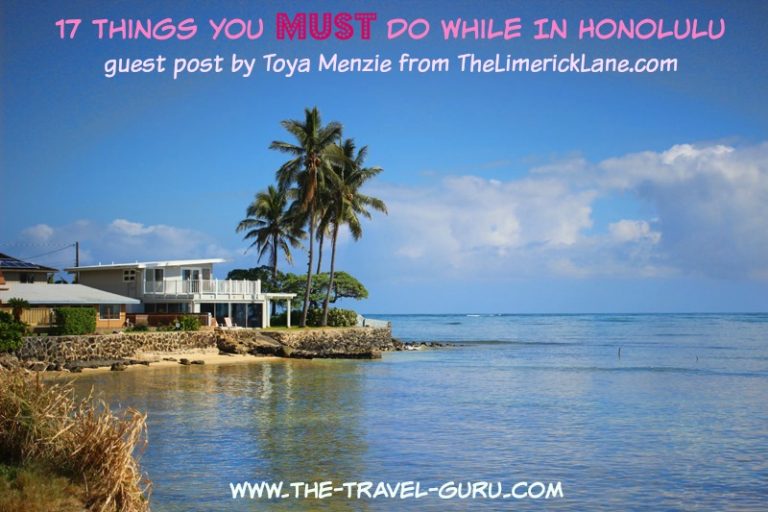
17 Things You Must Do While In Honolulu
I haven’t been to Hawaii in years but thanks to this post by Toya from The Limerick Lane I…
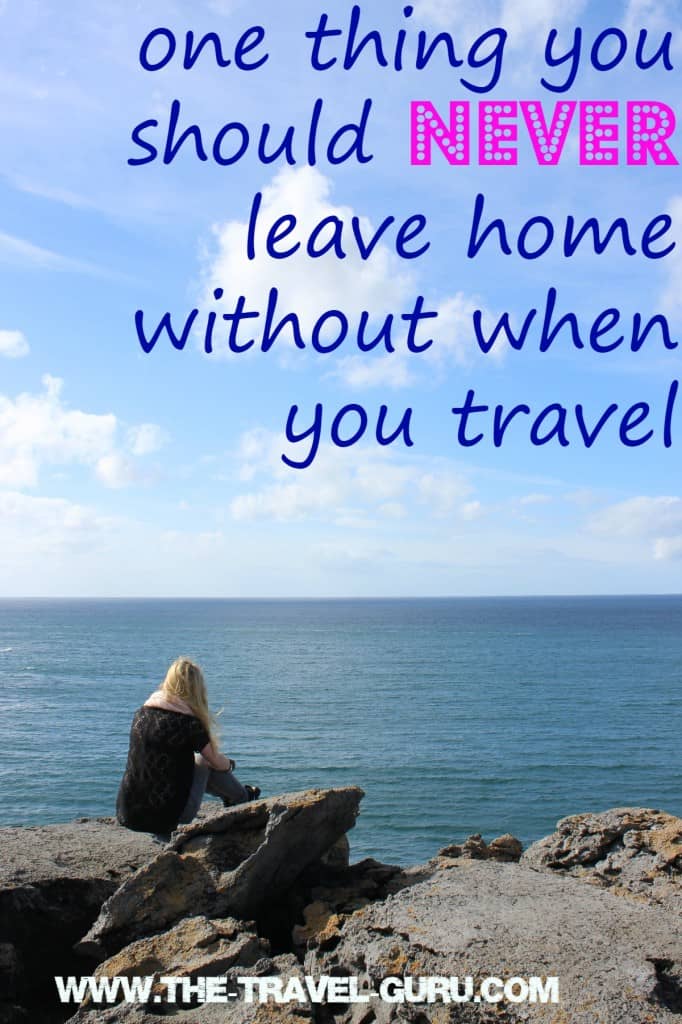
One Thing You Should Never Travel Without
This is an oldie but goodie but the information is completely still valid. Enjoy and have a great weekend! …
Do You Want To Rent A Car While Traveling? You Should Know Countries That Drive On The Left
I know that many people like to rent a car when they travel but sometimes people don’t realize…

My Race Car Taxi Driver In Russia Almost Made Me Lose My Mind
Whenever I travel, I always have certain things with me in my bag. I had a bad reaction to…
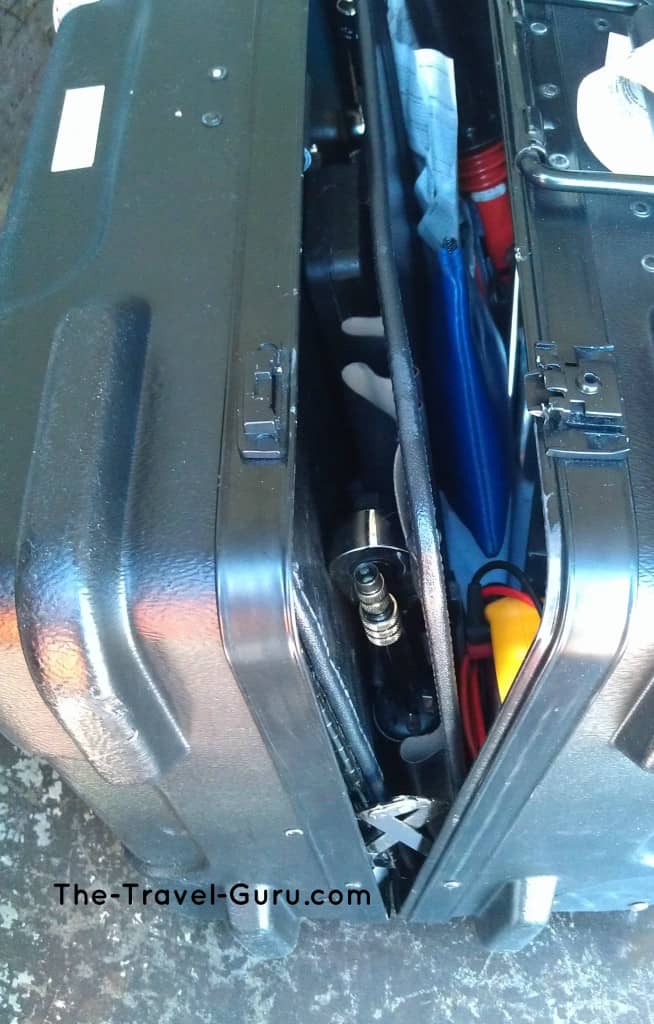
Are Your Bags In Working Order?
I was working the other day when I came across this bag and unfortunately, I see this quite often….

How Would You Feel If Your Bag Showed Up In Baggage Claim Like This?
As I was delivering my bags today I noticed this golf bag because as the snap is broken. The…
This is the train STATION?? Oh my god… So gorgeous. Moscow has never even crossed my mind as a possible travel destination but this is gorgeous…Hmmm… LOL
I know, right? We spent several hours in the metro, just marveling at the beauty of each one. Thanks for stopping by!
Leave a Reply Cancel reply
Your email address will not be published. Required fields are marked *

Mounting tension and instability in the western Balkans is playing into Russia’s hands
Lecturer in Law, UCL
Disclosure statement
Andi Hoxhaj OBE does not work for, consult, own shares in or receive funding from any company or organisation that would benefit from this article, and has disclosed no relevant affiliations beyond their academic appointment.
University College London provides funding as a founding partner of The Conversation UK.
View all partners
United Nations member states including the US, France, Germany, Albania and Rwanda will submit a resolution to the general assembly on April 17 which could have significant implications for the future of the western Balkans. The vote will call on the UN to declare July 11 the “International Day of Reflection and Remembrance of the 1995 Srebrenica Genocide” . It’s significant, because the issue of the massacre of 8,000 Bosniak Muslim men at Srebrenica remains a bitterly contested memory in the region.
The move has prompted fears that it will lead to a break-up of Bosnia and Herzegovina . After the war which followed the disintegration of the former Yugoslavia, the Dayton Accords peace deal established Bosnia and Herzegovina as a federation of two separate entities : the Serbian Republika Srpska, and the Federation of Bosnia and Herzegovina.
The three main ethnic groups – Bosniaks, Serbians and Croats – are represented by a rotating presidency. Currently, the chairman of the presidency is Zeljko Komsic , a pro-EU Croat politician.
The UN resolution plan has been strongly opposed by Milorad Dodik , the president of Republika Srpska. He reportedly stated on a visit to Belgrade in neighbouring Serbia that “Bosnia and Herzegovina may not survive” if the resolution is passed. The Serbian president, Aleksandar Vučić , has urged Russia and China to vote against it.
Vulnerable to malign influence
It is this instability in the western Balkans as a whole that is focusing minds in the European Union, given the tensions in the region following Russia’s invasion of Ukraine. The EU opened accession talks with Bosnia and Herzegovina on March 12. It laid out minimum requirements on progress in implementing the 14 key priorities that were set out in the European Commission’s opinion in 2019, concerning the country’s candidacy for EU membership.
Bosnia and Herzegovina was identified as the most vulnerable country in the western Balkans by a “permeability index” developed by Nato in 2020. The report said: “The deep divisions between Republika Srpska and the Federation of Bosnia and Herzegovina (the two constituent entities) is evident in the lack of clarity over the country’s strategic orientation.” It added that the two entities were deeply split over issues such as Nato and EU membership, with ethnic Serbs bitterly opposed to both.
Meanwhile, Russia is known to have engaged in a range of disinformation operations and cyberattacks across the western Balkans since before it invaded Ukraine in 2022. It has sought to influence media there through outlets such as the Sputnik Srbija news service in Serbia, an outpost of Russian state media. Russia Today (RT) , widely recognised as a Kremlin mouthpiece, launched services in Serbia and Bosnia and Herzegovina at the end of 2023.
Both Sputnik Srbija and RT have the potential to reach a large audience in the western Balkans, and are used for spreading Kremlin narratives against the EU and Nato. Their content is frequently republished in regional media.
Separatist sentiment on the rise
Since Russia invaded Ukraine, Dodik has stirred up separatist sentiment . He ignored the constitutional court’s ban on the January 9 annual celebration of the foundation of Republika Srpska , and blocked Bosnia and Herzegovina from joining the EU sanctions against Russia .
Dodik has also threatened to take Republika Srpska out of Bosnia if the new UN resolution is adopted, denying that the genocide had ever happened .
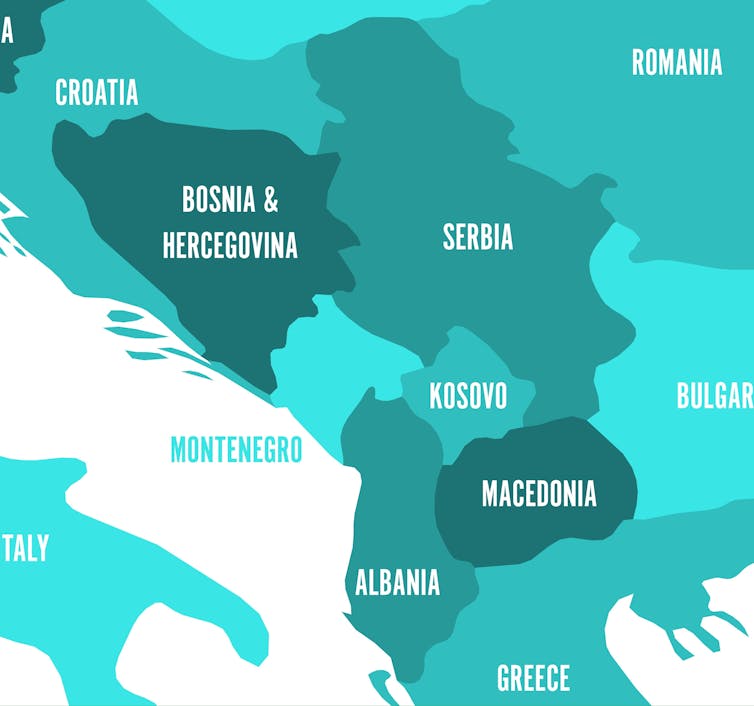
The west sees Dodik’s nationalist aspirations as a major threat to the 1995 Dayton Accords. In January 2022, the US imposed sanctions on him , stating: “Dodik’s actions threaten Bosnia’s stability, sovereignty and territorial integrity and undermine the Dayton Peace Accords, thereby risking wider regional instability.”
The 2024 Annual Threat Assessment , published by the US intelligence community on February 5, suggested that nationalist leaders in the western Balkans are highly likely to escalate ethnic tensions in an effort to destabilise the region.
Meanwhile in Kosovo
The delicacy of the situation in the western Balkans should be seen in the context of last September’s attack by Serbian nationalists on the village of Banjska in northern Kosovo.
Kosovo formally applied for EU membership in December 2022, but simmering conflict involving ethnic Serbians in the north, stoked by Belgrade – such as the attack on Banjska – is complicating the accession process. The other major obstacle to Kosovo’s EU accession is the fact that several EU member states – Spain, Slovakia, Cyprus, Romania and Greece – have yet to recognise Kosovan statehood. This has effectively blocked the country from joining the EU and Nato.
Significantly, the Council of Europe will vote on April 18 on Kosovo’s application to join, following a recommendation from the council’s Committee on Political Affairs and Democracy. Vučić has threatened that Serbia will leave the council if it votes to admit Kosovo.
The west – as in Nato and the EU – clearly wants to promote more stability and reconciliation in the western Balkans, in light of Russia’s aggression in Ukraine and fears of its further territorial ambition. But if this is the case, then its treaty organisations need to unify with respect to the future membership of both Kosovo and Bosnia and Herzegovina.
In doing so, it must treat Vučić’s most recent threats towards Kosovo with the same gravity with which it appears to regard Dodik’s secession threats in Bosnia and Herzegovina.
With the war in Ukraine at such a critical point, the last thing the west needs is the further destabilisation and even possible secession of parts of Kosovo and Bosnia and Herzegovina , with the possibility for violence that this presents. You’d have to imagine that, as he sits in the Kremlin, Vladimir Putin is anticipating this possibility with great relish.
- European Union (EU)
- Vladimir Putin
- Bosnia and Herzegovina
- Aleksandar Vucic
- Dayton Peace Agreement
- Ukraine invasion 2022
- Give me perspective

Sydney Horizon Educators (Identified)

Senior Disability Services Advisor

Deputy Social Media Producer

Associate Professor, Occupational Therapy

GRAINS RESEARCH AND DEVELOPMENT CORPORATION CHAIRPERSON
- International edition
- Australia edition
- Europe edition
Russia could begin full mobilisation after 2024 presidential election, Kyiv official says – as it happened
Secretary of Ukraine’s national security and defence council says Russia has increasingly put its economy onto war footing. This live blog is now closed
- Russia-Ukraine war at a glance: what we know on day 635
- 20 Nov 2023 Closing summary
- 20 Nov 2023 At least 11,000 Ukrainian children are reportedly being detained at 43 re-education camps across Russia, says MoD
- 20 Nov 2023 Russia may begin full mobilisation after 2024 presidential election, says senior security official
- 20 Nov 2023 Fox CEO Lachlan Murdoch meets Zelenskiy in Kyiv
- 20 Nov 2023 Ukraine sacks two high-ranking cyber defence officials, says government official
- 20 Nov 2023 US defense secretary vows support to Ukraine 'for the long haul' on surprise trip to Kyiv
- 20 Nov 2023 Morning summary
- 20 Nov 2023 Two killed by Russian shelling in Kherson, Ukrainian authorities say
- 20 Nov 2023 US defence secretary visits Kyiv
- 20 Nov 2023 Opening summary
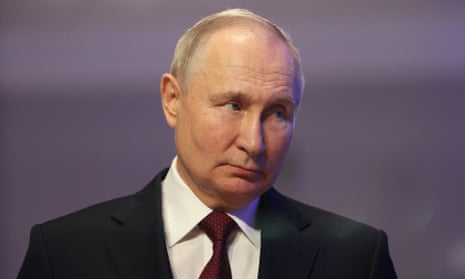
Nato supports Bosnia’s territorial integrity and is concerned by “malign foreign interference,” including by Russia , in the volatile Balkans region that went through a devastating war in the 1990s, Nato’s secretary general, Jens Stoltenberg , has said.
Sarajevo is the first stop on Stoltenberg’s tour of western Balkan countries that will also include Kosovo, Serbia and North Macedonia, the Associated Press reports.
“The Allies strongly support the sovereignty and territorial integrity of Bosnia-Herzegovina,” Stoltenberg told reporters. “We are concerned by the secessionist and divisive rhetoric as well as malign foreign interference, including Russia.”
There are widespread fears that Russia is trying to destabilise Bosnia and the rest of the region and shift at least some world attention from its war in Ukraine .

Morning summary
The US secretary of defence, Lloyd Austin, arrived in Kyiv on Monday for a visit. “I’m here today to deliver an important message: the United States will continue to stand with Ukraine in their fight for freedom against Russia’s aggression, both now and into the future.”
Two people were killed early on Monday after Russian forces shelled a parking lot in the southern Ukrainian city of Kherson, authorities said. Regional prosecutors opened a war crimes investigation into the artillery strike, which occurred at about 9am (7am GMT) and injured one other person, the regional prosecutor’s office reported.
A Ukrainian soldier and a woman have died after a grenade exploded in a Kyiv apartment, police in the Ukrainian capital have said, but the cause of the blast, which injured a second man, was not immediately clear. Explosives technicians and investigators were working at the scene of Sunday’s explosion in the Dniprovskiy district, Kyiv police said in a statement.
The Ukrainian army said it had pushed back Russian forces “three to eight kilometres” from the banks of the Dnipro River, which if confirmed would be the first meaningful advance by Kyiv’s forces months into a disappointing counteroffensive . Ukrainian and Russian forces have been entrenched on opposite sides of the vast waterway in the southern Kherson region for more than a year, after Russia withdrew its troops from the western bank last November.
A Ukrainian teenager who was taken to Russia from the occupied city of Mariupol during the war and prevented from leaving earlier this year has returned to Ukraine . Bohdan Yermokhin, who turned 18 on Sunday, appealed to Zelenskiy this month to help bring him back to Ukraine. “I believed I would be in Ukraine, but not on this day,” Yermokhin told Reuters while eating at a petrol station after crossing the border.
About 3,000 mostly Ukrainian trucks, including those carrying fuel and humanitarian aid, were stuck on the Polish side of the border on Sunday due to a more than 10-day blockade by Polish truckers, Ukrainian authorities said . Polish truckers earlier this month blocked roads to three border crossings with Ukraine to protest against what they see as government inaction over a loss of business to foreign competitors since Russia’s invasion of Ukraine in February 2022.
Air defence units in Moscow intercepted a drone targeting the city late Sunday, mayor Sergei Sobyanin said . Sobyanin, writing on the Telegram messaging app, said units in the Elektrostal district in the capital’s east had intercepted the drone. No casualties or damage were initially reported. Air defences had also thwarted a drone attack on the Russian capital overnight to Sunday, authorities said earlier.
Russia launched 20 Iranian-made Shahed drones targeting Kyiv and the Cherkasy and Poltava regions overnight into Sunday, the Ukrainian military said, of which 15 were shot down . The overnight strikes on Kyiv were the second attack on the Ukrainian capital in 48 hours, said the city’s military administration spokesperson, Serhii Popko.
Five people including a three-year-old girl were injured in Russian artillery shelling of Kherson on Sunday morning, the Ukrainian interior minister, Ihor Klymenko , said . “All of them sustained shrapnel wounds. The child and the grandmother were walking in the yard. Enemy artillery hit them near the entrance,” Klymenko said on the Telegram messaging app.
The pro-war Russian nationalist Igor Girkin , who is in custody awaiting trial for inciting extremism, said he wanted to run for president even though he understood the March election would be a “sham” with the winner already clear . Girkin, who is also known by the alias Igor Strelkov, has repeatedly said Russia faces revolution and even civil war unless President Vladimir Putin’s military top brass fight the war in Ukraine more effectively. A former Federal Security Service (FSB) officer who helped Russia to annex Crimea in 2014 and then to organise pro-Russian militias in eastern Ukraine, Girkin said before his arrest that he and his supporters were entering politics.
The Kremlin, facing the prospect of a European Union ban on imports of Russian diamonds, said on Monday that EU sanctions tended to have a “boomerang effect” on those who applied them, Reuters reports.
Kremlin spokesperson Dmitry Peskov was commenting on a proposed EU ban on diamond imports from Russia as part of a new sanctions package against Moscow over the conflict in Ukraine .
Russia is the world’s biggest producer of rough diamonds by volume. Peskov told reporters such a move had been anticipated for a long time, but was likely to backfire.
“As a rule, it turns out that a boomerang effect is partially triggered: the interests of the Europeans themselves suffer. So far, we have been able to find ways to minimise the negative consequences of sanctions,” he said.
EU diplomatic sources said last week the proposal under discussion was to ban direct diamond imports from Russia from 1 January and from March to implement a traceability mechanism that would prevent imports of Russian gems processed in third countries.
The Kremlin said on Monday that president Vladimir Putin will set out Russia’s view of what it sees as the “deeply unstable world situation” when he addresses an upcoming virtual G20 summit.
Russian state TV presenter Pavel Zarubin said on his Telegram channel on Sunday that it would be the “first event in a long time” including both Putin and western leaders.
According to the state RIA news agency, the G20 virtual summit will be held on Wednesday.
The Kremlin said on Monday it regretted Finland’s decision to shut crossings on its border with Russia , saying it reflected Helsinki’s adoption of an anti-Russian stance, Reuters reports.
Kremlin spokesperson Dmitry Peskov , speaking at a regular news briefing, also rejected Finland’s accusation that Russia is deliberately pushing illegal migrants towards the border and said that Russian border guards were following all instructions.
Finland, a member of the European Union and – from this year – also of the Nato military alliance, closed four crossings on its border with Russia on Saturday as Helsinki seeks to halt a flow of asylum seekers it says was instigated by Moscow.
The US secretary of defence, Lloyd Austin, arrives in Kyiv on Monday morning.

Two killed by Russian shelling in Kherson, Ukrainian authorities say
Reuters reports that two people were killed early on Monday after Russian forces shelled a parking lot in the southern Ukrainian city of Kherson, authorities said.
Regional prosecutors opened a war crimes investigation into the artillery strike, which occurred at about 9am (7am GMT) and injured one other person, the regional prosecutor’s office reported.
The Kherson governor, Oleksandr Prokudin, said the two dead were drivers for a private transport business.
Images posted on Telegram showed firefighters dousing cars that had been blasted apart, one day after a separate strike on the city wounded five people, including a three-year-old girl.
Russian forces have regularly shelled Kherson from across the Dnipro River since the regional capital was reoccupied by Ukrainian troops last November.
Ukraine said last week it had secured a foothold on the eastern bank of the Dnipro and that its troops were trying to push Russian forces further back.
US defence secretary visits Kyiv
The US secretary of defence, Lloyd Austin, arrived in Kyiv on Monday for a visit, he said on the X social media platform, Reuters reports.
“I’m here today to deliver an important message: the United States will continue to stand with Ukraine in their fight for freedom against Russia’s aggression, both now and into the future.”
The visit comes amid increasing division over Ukraine aid in the US legislature. A joint Ukraine-US military industry conference in Washington is due to take place next month.
That event, due to be held on 6-7 December, is intended to boost Ukraine’s domestic arms production as its fight against a full-scale Russian invasion nears the two-year mark.
Reuters reports that a Japanese delegation led by senior industry and foreign ministry officials and including business representatives is visiting Ukraine on Monday for talks ahead of a reconstruction conference that Japan will host, the industry ministry said.
Japan, which has been supporting Ukraine with funds and by accepting refugees since Russia invaded in February 2022, has also been promoting support for Ukraine at the level of the G7, which Japan chairs this year.
Kazuchika Iwata , the state minister of economy, trade and industry (METI), and the state minister for foreign affairs Kiyoto Tsuji , are visiting together with representatives of Japan companies, METI said in a statement.
In Kyiv, the delegation, which includes members of Keidanren, Japan’s biggest business lobby, in charge of a committee on Ukraine’s reconstruction, plans talks with the prime minister, Denys Shmyhal , government officials and companies.
Shmyhal said this month Ukraine would need budget support of about $42bn this year and next year to plug a massive deficit and aid reconstruction from the devastation caused by Russia’s invasion.
METI said the visit was an opportunity to hear about Ukraine’s needs and to discuss specific projects and accelerate public and private efforts to help.
The Ukrainian president, Volodymyr Zelenskiy – who visited Japan in May during a G7 summit – and the Japanese prime minister, Fumio Kishida, agreed this month to hold a Japan-Ukraine Conference for promotion of Economic Reconstruction in Tokyo on 19 February.
Opening summary
Hello and welcome to the Guardian’s live coverage of the war in Ukraine .
A Ukrainian soldier and a woman have died after a grenade exploded in a Kyiv apartment, police in the Ukrainian capital have said, but the cause of the blast, which injured a second man, was not immediately clear.
Explosives technicians and investigators were working at the scene of Sunday’s explosion in the Dniprovskiy district, Kyiv police said in a statement.
“A citizen contacted the police with a report that an explosion rang out in a neighbouring apartment,” they added.
The news came as Volodymyr Zelenskiy dismissed the commander of the military’s medical forces , Maj Gen Tetiana Ostashchenko, and said “new priorities had been set” in the operations of Ukraine’s military after a meeting with the defence minister, Rustem Umerov.
“There is little time left to wait for results. Quick action is needed for forthcoming changes,” the Ukrainian president said in his evening video address.
In other key developments:
Russia launched 20 Iranian-made Sha hed drones targeting Kyiv and the Cherkasy and Poltava regions overnight into Sunday, the Ukrainian military said, of which 15 were shot down . The overnight strikes on Kyiv were the second attack on the Ukrainian capital in 48 hours, said the city’s military administration spokesperson, Serhii Popko.
Five people including a three-year-old girl were injured in Russian artillery shelling of Kherson on Sunday morning, the Ukrainian interior minister, Ihor Klymenko, said . “All of them sustained shrapnel wounds. The child and the grandmother were walking in the yard. Enemy artillery hit them near the entrance,” Klymenko said on the Telegram messaging app.
The pro-war Russian nationalist Igor Girkin, who is in custody awaiting trial for inciting extremism, said he wanted to run for president even though he understood the March election would be a “sham” with the winner already clear . Girkin, who is also known by the alias Igor Strelkov, has repeatedly said Russia faces revolution and even civil war unless President Vladimir Putin’s military top brass fight the war in Ukraine more effectively. A former Federal Security Service (FSB) officer who helped Russia to annex Crimea in 2014 and then to organise pro-Russian militias in eastern Ukraine, Girkin said before his arrest that he and his supporters were entering politics.
- Ukraine war live
Most viewed

IMAGES
VIDEO
COMMENTS
An Independent Country Since: 1992 Balkan Travel Guide. Old Bridge in Mostar. Bosnia-Herzegovina is the most culturally and religiously diverse country in the Balkans. This is as close as you can get to the Middle East and Muslim culture without leaving Europe. This is a true crossroads country home to several ethnic minorities, such as the ...
All Balkan countries experience four seasons — from cold, snowy winters to hot and muggy summers. Also, many places in the Balkans tend to book out far in advance in the summer high season, especially along the Adriatic and Black Sea coasts. ... Mapping out the perfect Balkans travel itinerary can be a daunting process, with so many wonderful ...
The Balkan countries are small and pretty much any trip to the Balkans will involve at least one or two different countries. When it comes to Balkan travel almost every one of the countries has its own currency. Besides Slovenia, Montenegro, and Kosovo every single country operates with its own unique currency. Creating a serious headache for ...
Balkan Countries. For the purposes of this guide, we will be concentrating on travel in the following Balkan countries: Albania, Bosnia & Herzegovina, Bulgaria, Croatia, Kosovo, Montenegro, North Macedonia, Serbia and Slovenia. While parts of Greece, Romania and Turkey can also be considered part of the Balkans, they are not included in this guide.
BALKANS ITINERARY (10 DAYS) Balkans travel is something that every traveler should experience, but not all travelers have the full month necessary to backpack and slow travel the Balkans. This Balkans itinerary for 10 days packs the best sites, tastes, and experiences of the region into a smooth, 10-day jaunt.. With this 10 day Balkans itinerary, every single day will be mind-blowing and ...
Leave your best Balkan country travel tips below! Stephanie Craig. Stephanie has been living in and traveling around the Balkans for the past three years. She's written for National Geographic Online, appeared on CNN Arabic and in the New York Times, and ridden more Balkan buses than is good for a person.
5. Sarajevo, Bosnia and Herzegovina. Once dubbed "the Jerusalem of the Balkans," the capital city of Bosnia and Herzegovina is a fascinating cultural and historical place to visit. Beginning in the Ottoman Old Town, take in the Sebilj, an iconic wooden fountain, and Baščaršija, the surrounding bazaar.
Some example routes with times and prices: Ljubljana - Lake Bled: from 6am till 9pm at least one bus per hour, 1h20min, 6,30€ one way / 11,30€ return. Ljubjana - Zagreb: 12 connections per day, 2h20minutes, 9€ one way. Zagreb - Plitvicke Lake: 12 connections per day, 2h20 minutes, 10-13€ one way.
August 2025 (768) September 2025 (809) October 2025 (673) November 2025 (417) Browse the best tours in Balkans with 16,594 reviews visiting places like Athens and Dubrovnik. All Major Brands. Biggest selection. Best Prices.
Geographically, 'the Balkans' is the 12 countries that share the Balkan Peninsula, including the six ex-Yugoslavia republics (Slovenia, Croatia, Bosnia and Herzegovina, Serbia, Montenegro and North Macedonia), plus Kosovo, Romania, Bulgaria, Turkey, Greece and Albania. Much of their history is shared - yet when you look beneath the ...
Here are a few options for different time frames and destinations. Holiday hotspot itinerary for 2 weeks. Croatia - 1 week following my Croatia itinerary. Montenegro - 1 week following my Montenegro itinerary. Off-the-beaten-path Balkans itinerary for 1 month. Serbia - 3 days. Kosovo - 5 days. North Macedonia - 5 days. Albania - 10 ...
Ultimate Balkans Travel Guide by Country. by Sydney Baker. 10 mins. July 9, 2023. Updated: January 26, 2024. Not long ago, the Balkan countries were considered quite off-the-beaten path destinations. That is not so true anymore. From Croatia to Bulgaria, and everything in between, the region is becoming more and more popular.
The Balkan peninsula is a geographic region in the southeast of Europe, usually consisting of a dozen countries: Croatia, Bosnia and Herzegovina, Slovenia, Serbia, Montenegro, Kosovo, Macedonia, Romania, Bulgaria, Albania, Greece, and Turkey. Although the Balkans region is not necessarily defined, generally, these are the countries that are ...
Draw up a budget for the cost of your Balkan holiday (it is not soo expensive for a European trip as you might think) 6. Carry enough of the local currency in cash. 7. Learn a few phrases in the local language. 8. Packing for your trip to the Balkans. 9. Be safe in the Balkans.
Balkans Itinerary. The Balkans are a diverse region in Southeast Europe, with stunning cities and spectacular nature. Traveling in the Balkans can be a bit challenging, but it's also extremely rewarding. So go one stop further with our Balkans itinerary and discover a whole new side of Europe. You can travel the Balkans with a Eurail Global Pass.
Multi-Country Passes - Allows you to travel across to multiple countries with a single rail pass. For the Balkans, these are offered by EuroRail. For more information look at Rail Europe. InterRail. The InterRail Global pass is available for the following Balkans countries: Bosnia and Herzegovina, Croatia, Macedonia, Montenegro, Serbia and ...
Turkey. A common misconception is that the Balkan countries were all former Yugoslavia which is incorrect. Croatia, Montenegro, Serbia, Kosovo, Slovenia, Bosnia and Herzegovina and North Macedonia were part of the former Yugoslavia. See a deeper dive into the Balkan countries and the best places to visit within them further down the page.
The Balkans is great to visit all year round. But the best time of year to visit the Balkans varies from person to person. The same goes for the best Balkan country to visit! As you might have guessed, the busiest for Balkans travel time is summer, but I love visiting any of the Balkan countries in spring.
The best way to get into the Balkans is by flying. European budget airlines, in particular Wizz Air, connects to many destinations. You shouldn't have any difficulties finding an inexpensive flight to Sofia (Bulgaria), Skopje (Macedonia) and Tuzla (Bosnia). The best way to travel within the Balkans is by either the bus or train.
The Balkan countries are an underrated part of Europe, rich in history, culture, and scenery. Not to mention kind people and unique food and drink. Here are 20 places to consider visiting!
6. Novoslobodskaya Metro Station was built in 1952. It has 32 stained glass murals with brass borders. Novoslobodskaya metro station. 7. Kurskaya Metro Station was one of the first few to be built in Moscow in 1938. It has ceiling panels and artwork showing Soviet leadership, Soviet lifestyle and political power.
Ihere is something special about seeing art and beauty while hundreds of feet underground. The metro in Moscow is breathtakingly beautiful, don't you think?
The city covers an area of 2511 km2, while the urban area covers 5891 km2, and the metropolitan area covers over 26000 km2. Moscow is among the world's largest cities, being the most populous city entirely in Europe, the largest urban and metropolitan area in Europe, and the largest city by land area on the European continent. - Wikipedia
It is this instability in the western Balkans as a whole that is focusing minds in the European Union, given the tensions in the region following Russia's invasion of Ukraine. The EU opened ...
Sarajevo is the first stop on Stoltenberg's tour of western Balkan countries that will also include Kosovo, Serbia and North Macedonia, the Associated Press reports.